

18 Top-Rated Tourist Attractions in Kyoto
Written by Meagan Drillinger and Bryan Dearsley Updated Dec 26, 2023 We may earn a commission from affiliate links ( )
Surrounded by the hills of central Honshu, Kyoto is one of Japan's largest cities. Although one of Japan's great tourist destinations , it is famous for having preserved much of the atmosphere of the past, having been the only major Japanese city to escape the devastation of WWII.
Celebrated as the residence of the Emperor , and Japan's principal cultural center for almost 1,100 years, Kyoto today boasts numerous things to do and great places to visit, including exploring the fine examples of sculptures, paintings, and other art forms in its many museums and galleries.
Your Kyoto travel itinerary should include seeing non-touristy sites, too. These should include the many examples of its centuries-old architecture, much of it influenced by Buddhism, which can still be seen in the splendid temples located in the quieter, less visited corners of the old city.
Kyoto continues to play an important role in Japanese religion, with 30 of the city's temples still serving as centers of various Buddhist sects, along with some 200 Shinto shrines within the city limits. All told, UNESCO World Heritage Site status has been designated to 17 historic buildings in Kyoto.
Find the best places to visit in the city with our list of the top attractions in Kyoto.
See also: Where to Stay in Kyoto
1. Nijo Castle
2. fushimi-inari taisha shrine, 3. kinkaku-ji: the golden pavilion, 4. kiyomizu-dera temple, 5. sanjūsangen-dō temple, 6. kyoto imperial palace, 7. nishi honganji temple, 8. the kyoto national museum and municipal museum of art, 9. gion's geishas and temples, 10. katsura imperial villa, 11. daitoku-ji temple, 12. the byōdō-in temple, 13. arashiyama monkey park, 14. arashiyama bamboo grove, 15. kyoto tower, 16. kyoto samurai and ninja museum, 17. enjoy a traditional kaiseki meal, 18. experience a tea ceremony, where to stay in kyoto for sightseeing, tips and tours: how to make the most of your visit to kyoto, map of tourist attractions in kyoto, kyoto, japan - climate chart.
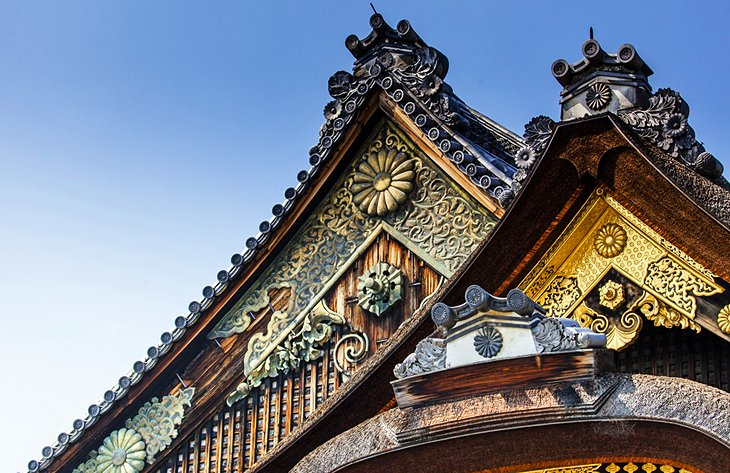
Nijo Castle (Nijō-jō), complete with well-preserved walls, towers, and a moat, was built in 1603 and later served as the seat of government. The complex has several buildings containing many significant works of art, and is famous as the location chosen by the emperor to issue the rescript abolishing the country's once powerful Shogunate.
Highlights include the castle's East Gate (Higashi Otemon, its main entrance), as well as the Inner Gate, or Karamon, notable for its fine carvings and decorated metalwork. Beyond this, the elaborate Mikuruma-yose is another must-see. The castle's fine gardens are also fun to explore.
The site's most important building is Ninomaru Palace . Consisting of five separate buildings linked by corridors, it boasts exquisite interiors decorated with many paintings by Kano Tanyu and his pupils. The principal apartment is the Hall of the Imperial Emissary (Jodan-no-ma), matched in splendor by the adjoining rooms, Ni-no-ma and Tozamurai-no-ma with their paintings of tigers.
Also of interest is the adjacent building with its large Audience Hall surrounded by a gallery and with sliding doors with large paintings of larches on a gold background. The fourth building, the Kuro-Shoin, has animal paintings by Kano Naonobu, while in the Shogun's private apartments are paintings of mountain landscapes.
If traveling as part of a tour, be sure to request a chance to tread the castle's famous "nightingale floors." These squeaking floorboards were specially designed to replicate the chirping of a nightingale.
Address: 541 Nijojocho, Nakagyo Ward, Kyoto, Kyoto Prefecture 604-8301
Official site: https://nijo-jocastle.city.kyoto.lg.jp/?lang=en
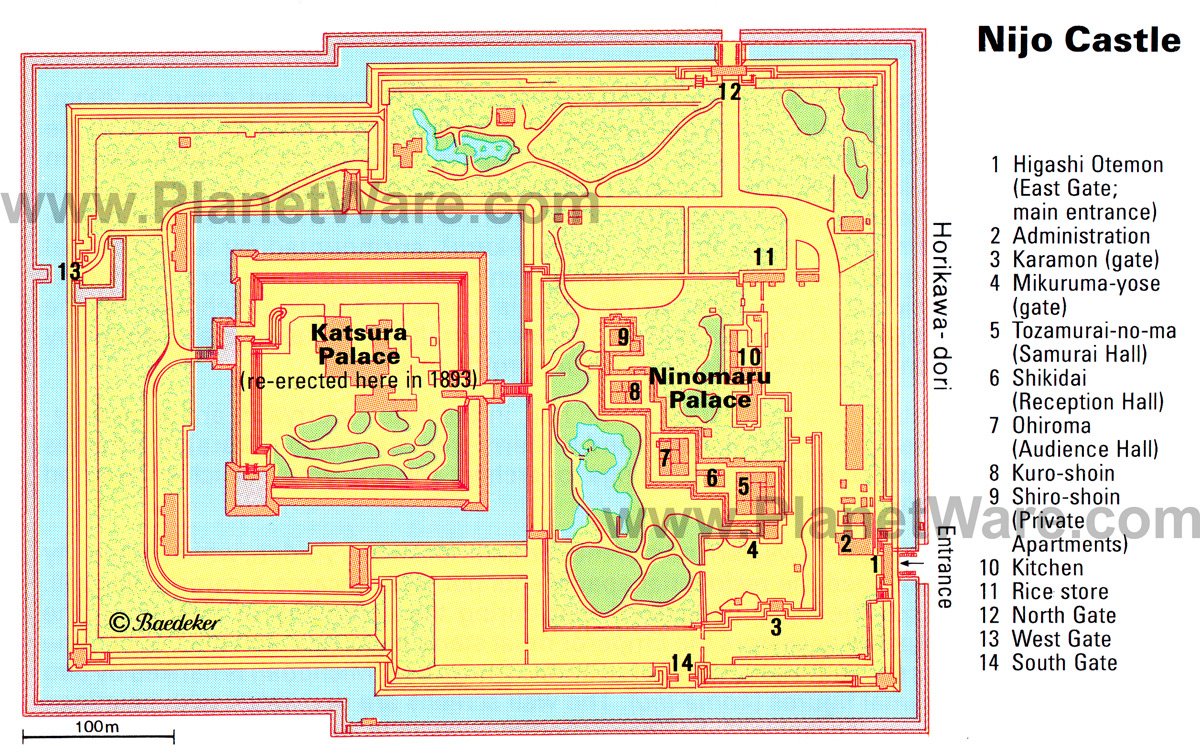
One of Japan's most famous shrines, the Fushimi-Inari Taisha Shrine is a must-visit when in Kyoto. Founded in AD 711 and dedicated to the goddess of rice-growing, Ukanomitama-no-mikoto, the shrine is still frequented by merchants and tradesmen who pray for prosperity.
The main building dates from 1499 and features a spectacular four-kilometer-long avenue of bright orange "torii," or arches, each dedicated by a business (it takes some two-hours to travel past the 1,000 arches lining the route). Also notable are its many sculptures of foxes, reputed to be messengers of the gods.
A great time to explore the shrine is at night. Not only will you be rewarded with a unique glimpse of this wonderfully illuminated heritage site, you'll be rewarded with few if any crowds.
Fortify yourself with the purchase of traditional Japanese fortune cookies from the shops and stands at the shrine's entrance. And to beat the crowds, visit as early in the day as possible (a 7am or 8am start is well worth it for the chance to avoid other visitors).
Address: 68 Fukakusa Yabunouchicho, Fushimi Ward, Kyoto
Official site: http://inari.jp/en/
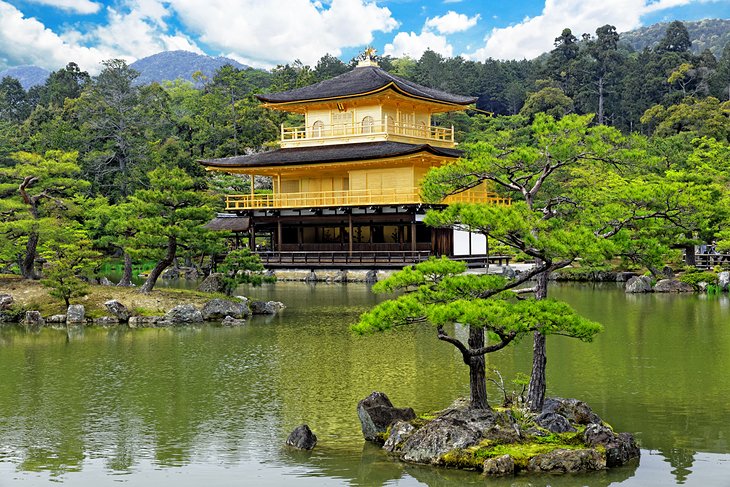
Originally built in the 14th century as a retirement villa for Shogun Ashikaga Yoshimitsu and now a Zen Buddhist temple, the magnificent Golden Pavilion (Kinkaku-ji) is one of Kyoto's most picturesque attractions.
Taking its name from the gold leaf adorning the top two of its three floors - a design element believed to alleviate any negativity associated with death - the structure has been rebuilt in its original form a number of times, this most recent incarnation dating from the late 1950s.
Built over a large pond, the site is also famous for its beautiful grounds, as well as its old stone pagoda and the Sekkatei Teahouse with its traditionally served beverages. For a different perspective of this wonderful tourist attraction, plus avoiding the summer crowds, time your visit for either winter or autumn (the latter is spectacular thanks to the fall colors).
Address: 1 Kinkakujicho, Kita Ward, Kyoto, Kyoto Prefecture 603-836
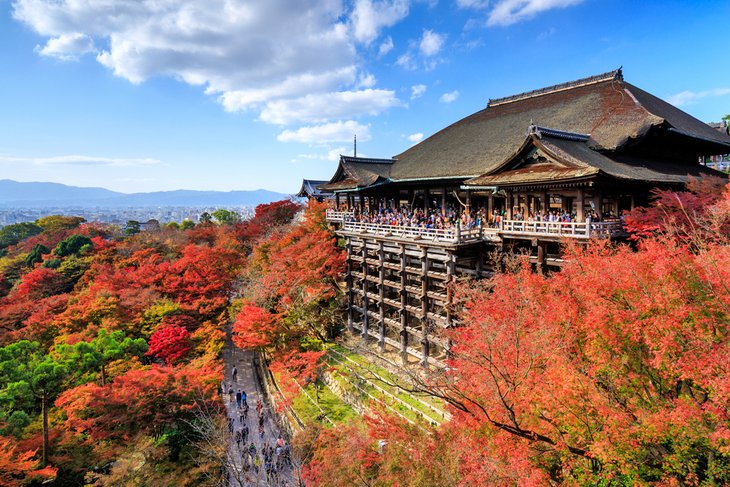
In the east part of Kyoto, the Kiyomizu-dera Temple, an important UNESCO World Heritage Site, lies in a picturesque location on Otowa Mountain overlooking the city. Visitors can enjoy a delightful stroll to the temple along quaint Tea-pot Lane with its small shops and craft stores.
This beautiful temple was founded in AD 790 and dedicated to the 11-headed Kannon, the Buddhist Goddess of Mercy whose statue can be seen here. The existing buildings were erected after 1633 in the period of the third Tokugawa Shogun, Iemitsu, and stand mainly on a rocky outcrop high above the Otowa Waterfall.
Highlights include the large terrace of the Main Hall, built on 30-meter-tall pillars with five rows of cross-beams and used as a stage for temple dances and ceremonies. The terrace affords spectacular views over the city and the surrounding wooded hills, especially when the leaves change color in fall. Personalized English language guided tours are available.
Address: 294 Kiyomizu 1-chome, Higashiyama Ward, Kyoto, Kyoto Prefecture 605-0862
Official site: www.kiyomizudera.or.jp/en/
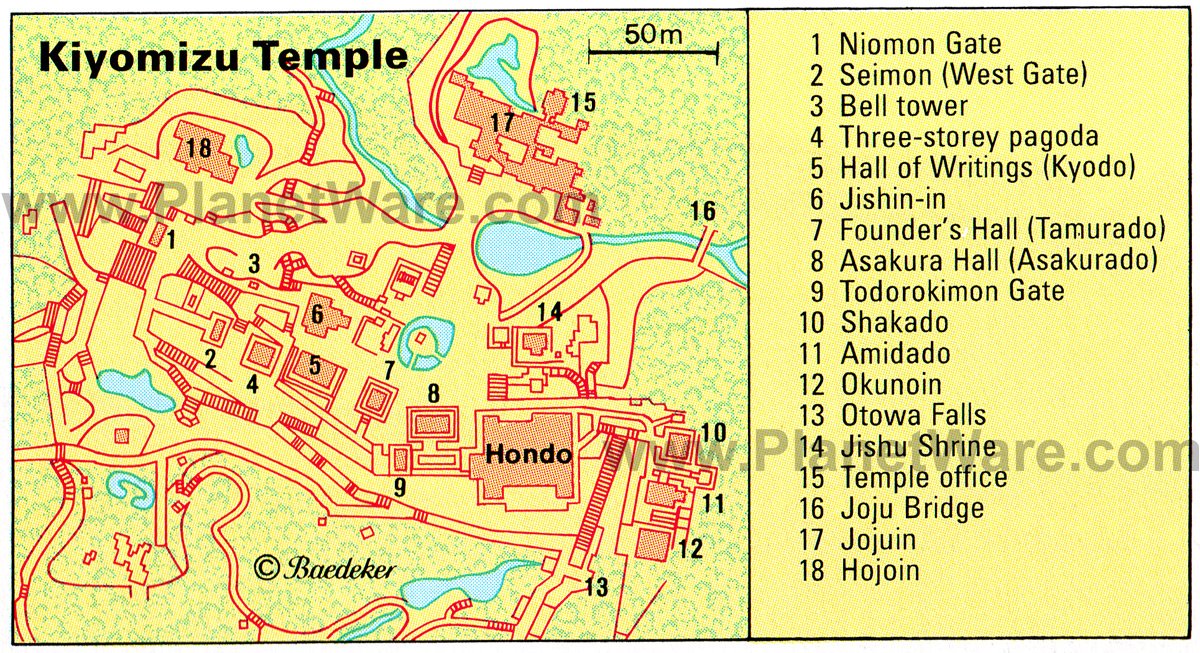
Sanjūsangen-dō (Rengyoin Temple), or the Temple of the 33 Niches, takes its name from its rather unusual structure: its façade is divided into 33 (sanjusan) niches (gen) to reflect the belief that Kannon, the Goddess of Mercy, could take on 33 different personifications.
Originally built in 1164, the present elongated building was constructed in 1266 after a fire destroyed its predecessor. Evidence of its former importance as a place of training in archery can still seen in the many holes in its ancient pillars and timbers made by arrowheads.
The most important of its many works of art is the Kannon with a Thousand Hands, a nearly three-and-a-half-meter-tall statue. Dating from the 13th century, it's famous for the 500 standing figures of Kannon lined up on either side of it. Also of note are the additional sculptures of the 28 "celestial auxiliaries," spirits considered subordinate to Kannon, located behind it.
Address: 657 Higashiyama Ward, Kyoto, Kyoto Prefecture 605-0941
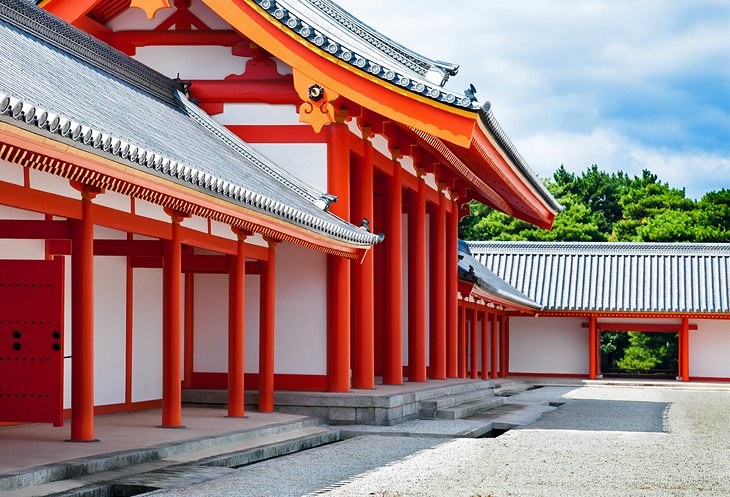
The original Kyoto Imperial Palace (Kyoto-gosho ) , built in AD 794 and replaced several times after being destroyed by fire, remains one of the city's most visited historic sites. Although the present building was constructed in 1855, it still impresses.
Occupying a large (once-walled) enclosure near the heart of the city, highlights include its finely decorated gates and important rooms and buildings. These include the Hall for State Ceremonies (Shishinden), the Emperor's Residence (Seiryo-den), the Courtroom (Ko-gosho), and the Imperial Library.
While the lovely grounds of this Kyoto landmark are open to the public, the palace itself can only be visited as part of a guided tour operated by the Imperial Household Agency. Be sure to plan ahead and check their website for reservations and application forms.
Address: 3 Kyoto-Gyoen, Kamigyo Ward, Kyoto, Kyoto Prefecture 602-0881
Official site: https://sankan.kunaicho.go.jp/english/index.html
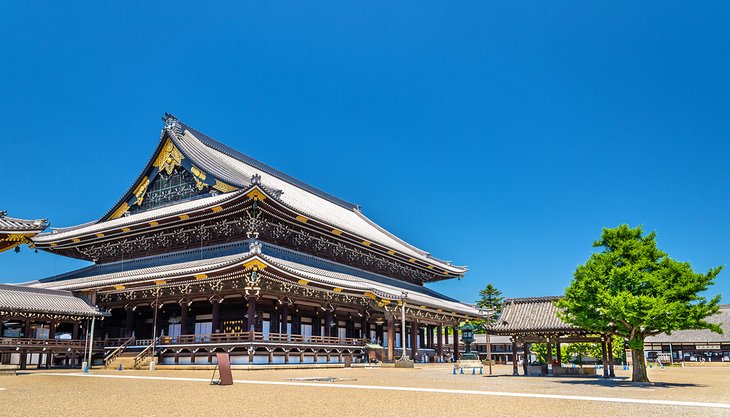
The chief temple of the original Jodo-shinshu sect, Nishi Honganji Temple is an outstanding example of Buddhist architecture. Highlights include the Hondo, or Main Hall. Rebuilt in 1760, notable features of this fine structure include a number of rooms decorated with paintings on gold backgrounds, and numerous important statues, some dating from the 6th century.
Also of interest is the Founder's Hall (Daishi-do). Here, you'll find the much-revered statue of Shinran, carved in 1244 and later covered with a coat of lacquer mingled with his ashes.
Another notable building is the Daishoin , or Treasury, with various rooms named after the exquisite wall and ceiling paintings with which they're decorated. These include the Sparrow Room (Suzume-no-ma), the Room of the Wild Geese (Gan-no-ma), and the Chrysanthemum Room (Kiku-no-ma) with its fine 17th-century paintings of flowers in gold and white by Kaiho Yusetsu.
Also of interest is the Higashi-Honganji Temple of the Jodo-shinshu sect. Founded in 1602, it's home to a number of examples of fine artwork.
Only a few parts of these temples are open to the public, so be sure to make arrangements through the temple's website in advance of your visit to include other areas not normally accessible.
Address: Shimogyo Ward, Kyoto, Kyoto Prefecture 600-8501
Official site: www.hongwanji.kyoto/en/
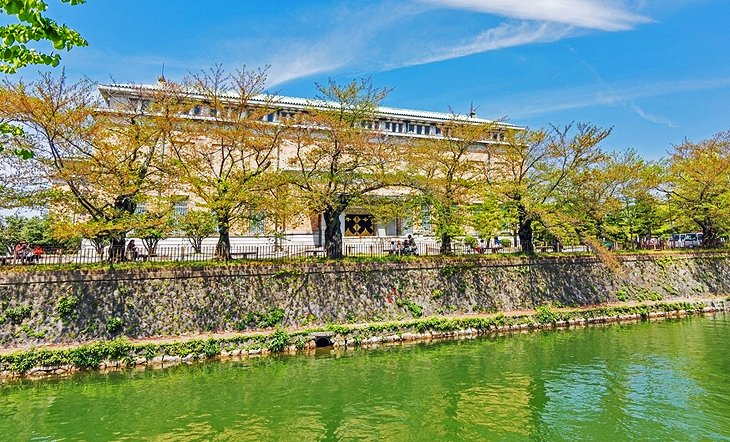
In addition to its many fine old temples with their important artworks, Kyoto also boasts a number of impressive collections in its world-class museums and galleries. Perhaps the best known is the National Museum, an art gallery established in 1897 that is widely considered the most important such museum in Japan.
Focusing predominantly on pre-modern Asian art, particularly examples from Japan, the museum has been completely renovated and includes a new wing designed by architect Yoshio Taniguchi . Highlights of a visit include seeing numerous examples of historic art and applied arts, along with regular exhibitions (be prepared for plenty of walking).
Also worth seeing is Kyoto Municipal Museum of Art. Opened in 1928, this fine gallery features important works by Takeuchi Seihō, one of Japan's leading artists of the 20th century.
Address: 527 Chayacho, Kyoto, Kyoto Prefecture 605-0931
Official site: www.kyohaku.go.jp/eng/index.html
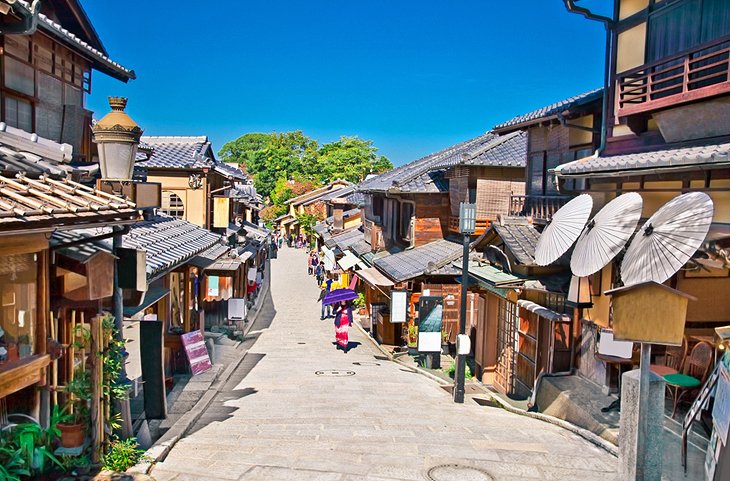
Famous as an entertainment and geisha district, Gion is an area of Kyoto that is well suited to explore on foot. Located on the eastern bank of the Kamogawa River, Gion is an eclectic mix of modern architecture and historical beauty that provides a unique taste of numerous Japanese traditions, from the elaborately dressed geishas to well-preserved 17th-century restaurants and teahouses offering a glimpse of old Japan.
Centered on an area encompassing Hanami-Koji Street, Shijo-dori Street, and the waterside promenades of Shirakawa Minami-dori Street, Gion is also famous for its many fine temples. The best-known of these are the 15th-century Silver Pavilion (Ginkakuji) and the Chion-in Temple .
Chion-in is one of Japan's most famous temples, notable for its 24-meter-high, two-story tower (Sammon-san), which houses the country's largest bell. Weighing 71 tons, it was cast in 1633, and is rung only during festivals in mid-April. Gion is a wonderful (and safe) place to enjoy a walking tour at night, too.
Address: Nishi Ten-o-cho, Okazaki, Sakyo-ku, Kyoto, Kansai 606-8341
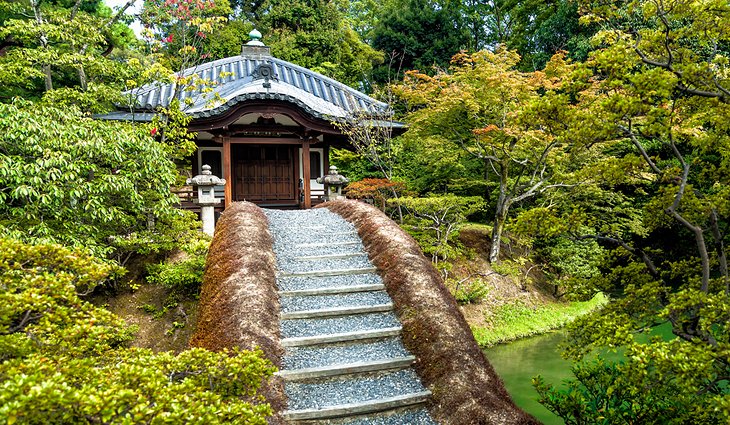
Originally constructed in 1624 for Prince Hachijo Toshihito, brother of Emperor Goyozei, Katsura Imperial Villa is home to splendid historic architecture and one of Japan's most famous historic gardens.
Designed by Kobori Enshu with assistance by the prince, this beautiful garden is laid out in such a way that the visitor always sees things from the front - smaller gardens are grouped around a large pool with the summits of Mounts Arashiyama and Kameyama in the background.
Highlights include the Miyuki-mon Gates and the many garden paths, some made from river pebbles and others of rectangular cobbles, edged by mosses and bushes. These lead through more gates into the inner garden with a group of buildings known as the Goten at its center.
A particular highlight here is the veranda of Furu-shoin, specially designed to permit observation of the moon, and the three rooms of the Naka-shoin with its many fine paintings by Japan's leading artists. If time allows, be sure to stop and enjoy a meal or light refreshments in one of the many on-site teahouses.
Address: Katsuramisono, Kyoto, Kyoto Prefecture 615-8014
Official site: https://sankan.kunaicho.go.jp/english/guide/katsura.html
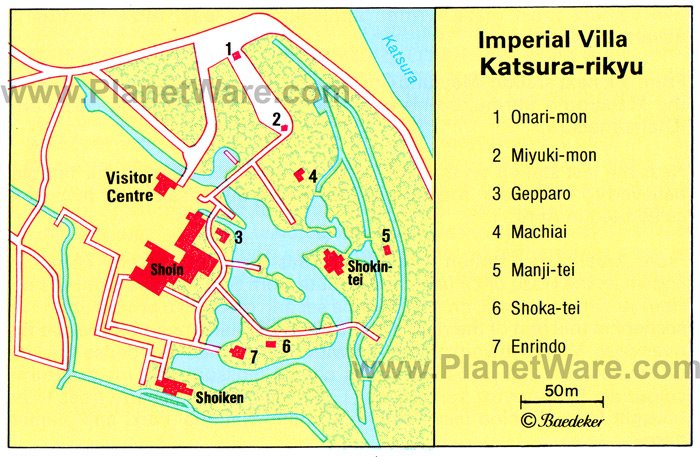
The Daitoku-ji Temple - the Zen Temple of Great Virtue - is one of the principal temples of the Rinzai sect and was founded in 1324. The present structures date from the 16th and 17th centuries.
Of the 22 buildings on-site, seven are open to the public. These include the Kara-mon, a Chinese-style gate with magnificent carvings, and the two-story main gate, Sammon, built in 1589 and notable for its many fine ceiling paintings and statues. The Main Hall, the Butsuden (or Daiyu-den), was built in 1664 and contains a statue of Shakyamuni with his disciples Anna and Kayo and a figure of Daito-kokushi, first Abbot of the temple.
Beyond the Main Hall is the Lecture Hall, or Hatto, based on Chinese models, and the Hojo, or Abbot's Lodging, with its paintings, wooden tablet, and adjoining garden.
Other highlights include the old Abbot's Lodging (Shinju-an) with its statues and tombs dating from the 14th century, and a lovely Zen garden.
Address: 3 Murasakino Daitokujicho, Kyoto, Kyoto Prefecture 603-8231
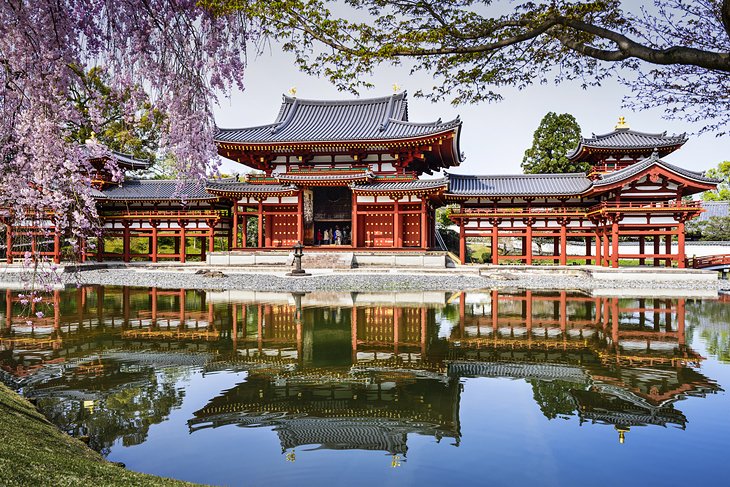
The Byōdō-in Temple, established in AD 988, boasts many unique buildings, shrines, and artworks and is worthy of a visit. Highlights include the Phoenix Hall (Hoo-do), with its bronze phoenixes on its two gables and rich interior décor. This attractive hall also features 11th-century paintings, including an imposing gilded figure of Amida, and an altar and ceiling inlaid with bronze and mother-of-pearl.
Adjoining is the Kannon-do, a hall directly above the river and known as the Tsuridono, or Fishing Hall. Be sure to spend time visiting the temple gardens with their many fine ponds, as well as the Byōdō-in Museum with its treasures relating to the temple site, including its 52 wooden Buddha statues, carved phoenixes, and the original temple bell.
Also worth a visit is the Zen Tenryu-ji Temple .
Address: Renge-116 Uji, Kyoto Prefecture 611-0021
Official site: www.byodoin.or.jp/en/
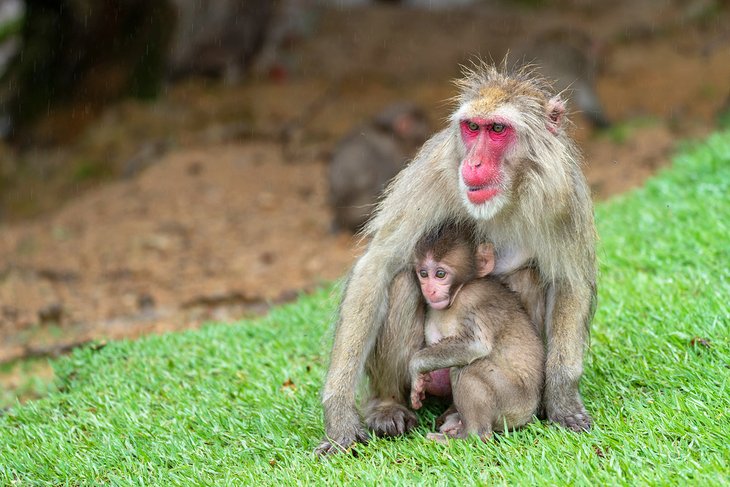
Perched atop a mountain in the tourist-heavy Arashiyama is one of the most interesting things to do in Kyoto – the Arashiyama Monkey Park. More than 100 snow monkeys call this park home, roaming freely amid the tourists who come to take a peek.
Getting so close to these wild creatures is a fascinating experience, but can also be a little unnerving, as the monkeys have no fear when approaching humans – especially if you've got a bit of food for them. The park features an enclosed area where you can buy bananas to feed to the monkeys. Don't worry – they stay behind the fence. But they do grab, so proceed with caution.
Even if you aren't interested in the monkeys, the top of the mountain has one of the best views of the city below. The walk up the hill takes about 30 minutes and is manageable for most levels.
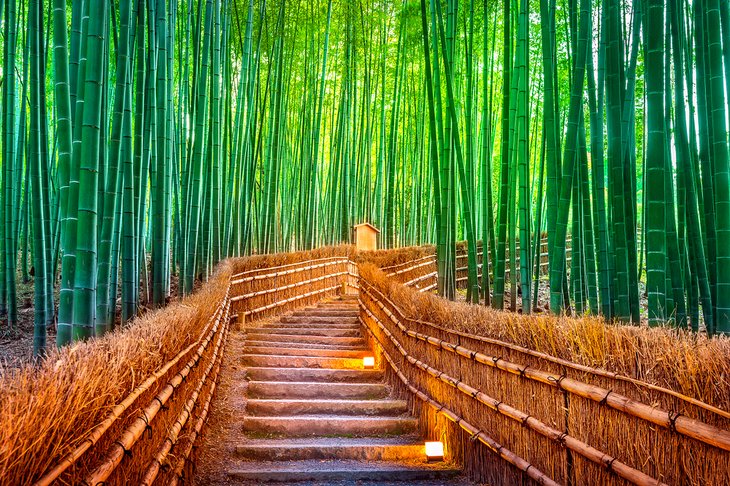
While in Arashiyama, no trip is complete without a walk through the magnificent Bamboo Grove. No experience is quite like this anywhere else in the world. Get lost among towering stalks of glowing green as you walk the paved path that winds its way through the sun-drenched bamboo forests. In some places, the bamboo is so thick that it's impossible to see through to the other side.
Walking through the Arashiyama Bamboo Grove is like being transported into another world. But because the legend of its beauty has traveled far and wide, it's a good idea to get here early, so you have the forest to yourself as much as possible.
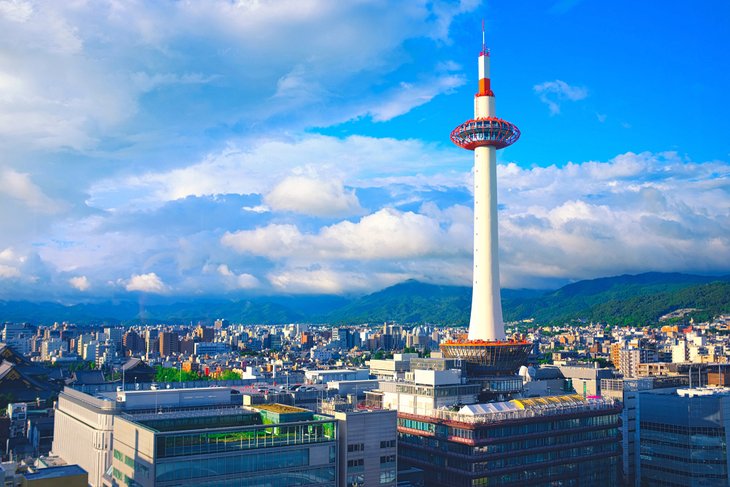
So much of Kyoto is steeped in ancient history. But that does not mean that Kyoto is not a modern city. One look at the soaring Kyoto Tower will snap you back into the 21st century.
Standing at 131 meters tall, Kyoto Tower is the tallest structure in the city. It features a viewing platform at 100 meters, which has one of the very best views of the entirety of Kyoto. On clear days, you can even see as far as Osaka.
The rest of the building includes offices, restaurants, shops, and a hotel. You can find Kyoto Tower across the street from Kyoto Station.
Address: 721-1 Higashishiokojicho, Shimogyo Ward, Kyoto, 600-8216, Japan
Official site: https://www.kyoto-tower.jp/
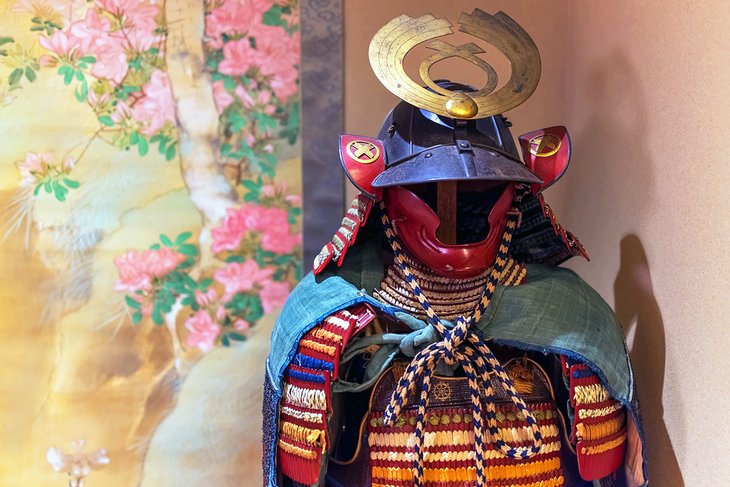
Japanese history spans centuries and touches on everything from architecture and religion to food and culture. Part of that culture includes the samurai and ninja. In Kyoto, it is possible to delve deeper into this world at the Kyoto Samurai and Ninja museum.
Home to many different exhibits, the museum covers everything from armor and weapons to medieval Japanese history. Many of the armor comes from the Edo period of Japan, which was more than three centuries ago.
For a bonus, the museum also offers a Samurai Experience, where visitors can learn the traditional sword movements that the Samurai used, trained by an actual Samurai master.
Address: Teramachi Utanokoji building 2F, 292, Higashidaimonjicho, Nakagyo-ku, Kyoto
Official site: https://mai-ko.com/samurai/
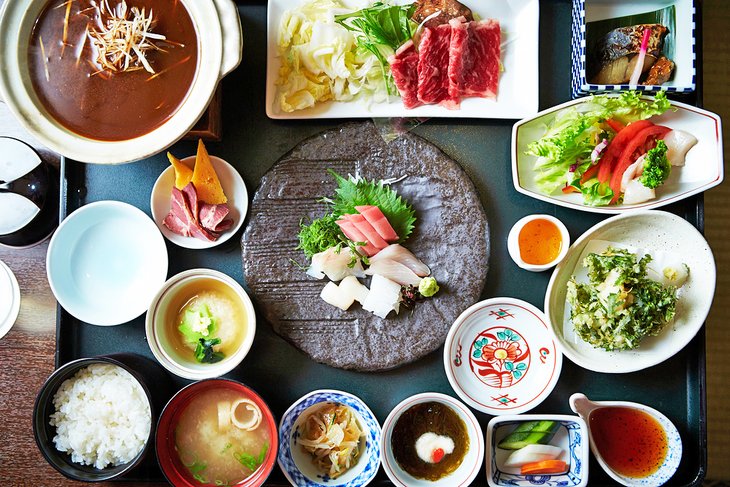
One thing you will be doing extremely well in Kyoto is eating. Why not learn a bit about Japanese dining culture with a traditional kaiseki meal? The kaiseki meal is a multi-course, meticulously prepared meal that is as equally delicious as it is a work of art. The purpose of kaiseki is to show the utmost hospitality, making guests feel that they are extremely special. Kyoto has many restaurants dedicated to the art of kaiseki.
The meals are always different, but the pillars are usually the same: an appetizer, a simmered dish, a sashimi, something seasonal, a grilled course, and a dish with rice. Most kaiseki meals are served on the ground, with guests sitting on tatami mats.
Kyoto's Gion district has many places to try a kaiseki meal. Meals tend to run on the expensive side. It is a good idea to make reservations ahead of time, as these experience rarely allow walk-ins. One of the best in the city can be found at Gion Owatari, which is a two-star kaiseki restaurant that is extremely popular among Japanese foodies.
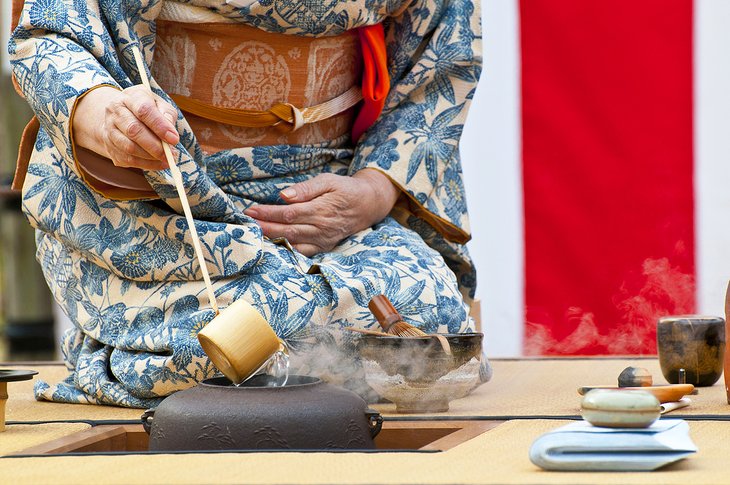
While in the Gion district , it may be interesting to try a traditional tea ceremony. The Japanese tea ceremony is a centuries-old tradition. It involves preparing and drinking green tea in a special, celebrated way. Like the kaiseki meal, tea ceremonies are meant to make guests feel special and welcome. Tea ceremonies are often performed while sitting on the floor.
Tea came over to Japan from China in the 8th century. Around the 14th century, tea-drinking parties became a form of socializing and a way to show off knowledge about tea. The most formal tea ceremony lasts multiple hours, and usually starts with a kaiseki meal. However, modern day tea ceremonies are much shorter.
A host will prepare the tea in front of the guests. Before the tea is sipped, guests are supposed to eat a sweet treat. Then the tea is poured and sipped from a special tea bowl, all the while adhering to the proper placement of the bowl. It is a beautiful, historic experience, and Kyoto is one of the best places in Japan to learn about this important part of Japanese culture.
The best place to stay in Kyoto is downtown, preferably in or near the Gion or Kawaramachi-Dori districts. These areas are central to many of the main attractions, as well as restaurants, shops, and entertainment venues. Below are some highly-rated hotels near these areas:
Luxury Hotels:
- The Ritz Carlton is on the banks of the Kamogawa River and offers unsurpassed luxury and service, four restaurants, and a well-regarded spa.
- The Hotel Kanra Kyoto is a short walk from the main train station and has large, modern rooms with beautiful cedar wood bathtubs.
- In the heart of the Gion area, the Maifukan offers well-appointed rooms with mini fridges. This hotel also has a rooftop garden terrace.
Mid-Range Hotels:
- Close to the main train station is the Ohanabo . This is a small, cozy hotel in a quiet area, with comfortable rooms and a popular restaurant.
- The contemporary Hotel Anteroom is perfect for those looking for something different. This hotel features an art gallery and unique rooms that are tastefully compact but highly functional, including some with terraces.
- The Citadines Karasuma-Gojo is a good option for longer stays, with large rooms that include kitchens and sitting areas.
Budget Hotels:
- The ibis Styles Kyoto Station hotel is in an excellent central location and offers efficient rooms and a complimentary breakfast.
- In the heart of the Kawaramachi-Dori shopping district and also serving a free breakfast is the Super Hotel , with modern and cozy rooms.
- For a more traditional Japanese experience, the Ryokan Shimizu features rooms that come with futons and tatami mats, and an onsen (hot spring) is on the premises.
- See the Best of Kyoto: If you want to cover all the highlights of Kyoto in a day, the Kyoto Full-Day Sightseeing Tour including Nijo Castle and Kiyomizu Temple is an excellent option. An experienced guide provides a fascinating historical context to the attractions on this full-day tour, which includes a visit to Kinkaku-ji Temple, Nijo Castle, and the Kyoto Imperial Palace. Cap off your tour with breathtaking views of Kyoto from the terrace of Kiyomizu Temple. Note that this tour involves plenty of walking around the attractions. Pickup from select hotels, lunch, and entrance fees are all included.
- Kyoto and Nara Day Trip: The Kyoto and Nara Day Trip from Kyoto including Nijo Castle is a great option for those wanting to see the best of this beautiful historic city and its surrounds. This popular 10-hour tour takes in Kyoto attractions including the Imperial Palace, Kinkaku-ji, and Nijo Castle before whisking you away to Nara to explore Todai-ji Temple and the Kasuga Shrine. Along the way, you'll enjoy a Japanese-style lunch (Western options also available), a professional guide, transportation (including hotel pickup), and admissions.
- Pedal Power: A great way to explore this historic city is by joining a Kyoto Small-Group Bike Tour . Lasting from three to four hours, you'll see the city's historic old architecture, explore its top shrines and temples, and even traverse the famous cherry tree-lined Path of Philosophy. Limited to just nine participants, the tour includes bike rental and a group guide.
- A Rural Walkabout: For those with the stamina, the Arashiyama and Sagano Morning Walking Tour is an excellent way to explore the best areas surrounding Kyoto. Highlights of this four-hour adventure include a walk through beautiful bamboo groves as you make your way to a number of iconic hilltop temples, including Tenryu-Ji and Jojakko-Ji Temple. All admissions are included, as is pickup and transportation.
More Related Articles on PlanetWare.com
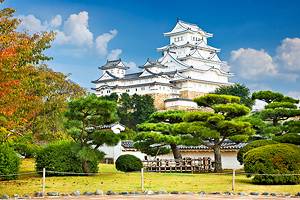
Places to Visit near Kyoto : Osaka is an easy day trip from Kyoto, and the city is less than 90 minutes away by high-speed train. Once there, you'll enjoy historic points of interest such as Osaka Castle and Shitennō-ji Temple, and more modern attractions including the Osaka Aquarium Kaiyukan and the huge Tempozan Ferris Wheel. For those wanting to see a few off-the-beaten-trail destinations, consider taking a day trip . Popular options include the historic temples of Nara and the busy port of Nagoya , each an easy rail journey away.
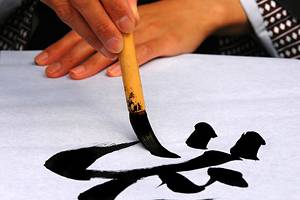
Explore Japan's Rich History : Chances are if you like Kyoto, you're also going to like the city of Fukuoka . This fascinating city is famous for its huge 17th-century castle, the splendid Sumiyoshi-jinja Shrine, as well as modern attractions like the beautifully designed Kyūshū National Museum. Nagoya is also worth visiting for its history. An easy train ride away, the city boasts numerous lovely shrines and temples, and its own well-preserved historic castle.

Japan Vacation Ideas : Japan, of course, offers no end of great vacation choices. A few favorites include exploring the sites of Tokyo , with its endless shopping, dining, and entertainment options; magnificent Mount Fuji , perhaps the country's most recognizable natural feature; and the beautiful island of Hokkaido, where you'll have the chance to explore the country's most northerly major city, Sapporo .

More on Japan


Touropia Travel
Discover the World
23 Top Tourist Attractions in Kyoto, Japan
By Alex Schultz · Last updated on May 4, 2024
Widely considered to be Japan’s most beautiful city, charming Kyoto really is a delight to explore. Besides boasting over 2,000 Shinto shrines and Buddhist temples, it has tons of picturesque gardens, palaces and viewpoints to enjoy.
For well over a thousand years, it served as the country’s capital until the emperor relocated to Tokyo following the Meiji Restoration. While fires, wars and earthquakes ravaged Kyoto from time to time, it still retains much of its rich history. As such, many attractive old buildings and atmospheric streets can be found alongside its more modern center.
Aside from its incredible art and architecture, the city is also set in a scenic spot amidst mountains and forests. Its enchanting temples also have lots of lovely Zen gardens to amble around while gaily dressed geishas can still be spotted in the historic Gion District.
With such a rich culture and cuisine to uncover and so many fascinating things to do in Kyoto, it is definitely one of Japan’s most rewarding destinations. On your next trip to this ancient city, plan to see as many of these top tourist attractions in Kyoto as your schedule will allow.
23. Kenninji Temple
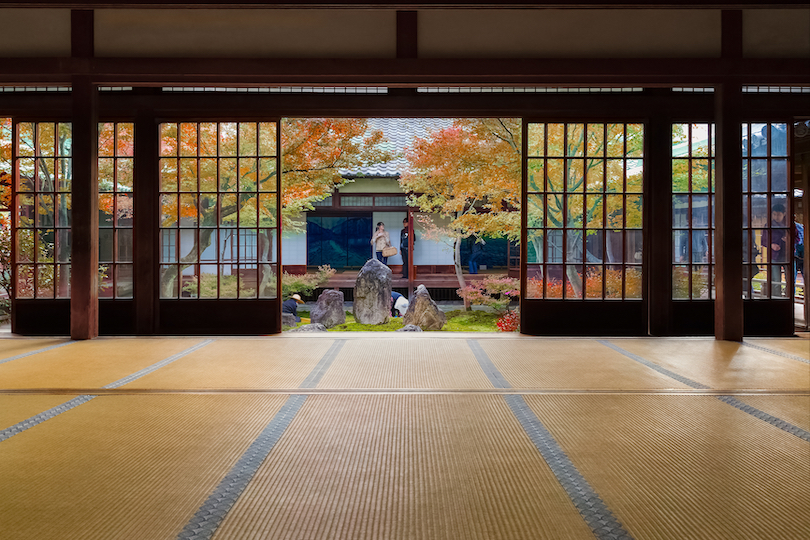
Even though it is the oldest Zen temple in Kyoto, Kenninji sees substantially fewer visitors than many of its neighbors. This makes its quiet complex on the south side of Gion even more special to stroll around as you almost have all its artistic treasures and architecture to yourself.
Located not far from the historic Hanamikoji Street and the stunning Yasaka Shrine, it was founded back in 1202. The main temple of its branch of Rinzai Buddhism, it has an exquisite sanmon gate, Dharma Hall and Abbot’s Quarters to admire, all erected centuries ago. Inside too, there is a dramatic ceiling painting of twin dragons to take in alongside finely-detailed murals and folding screens.
Its gorgeous grounds contain a traditional Zen garden with tea ceremonies also being held here from time to time. We were very surprised that the temple was almost deserted when we visited but were very glad it was thanks to the serene ambience around the place.
22. Monkey Park Iwatayama
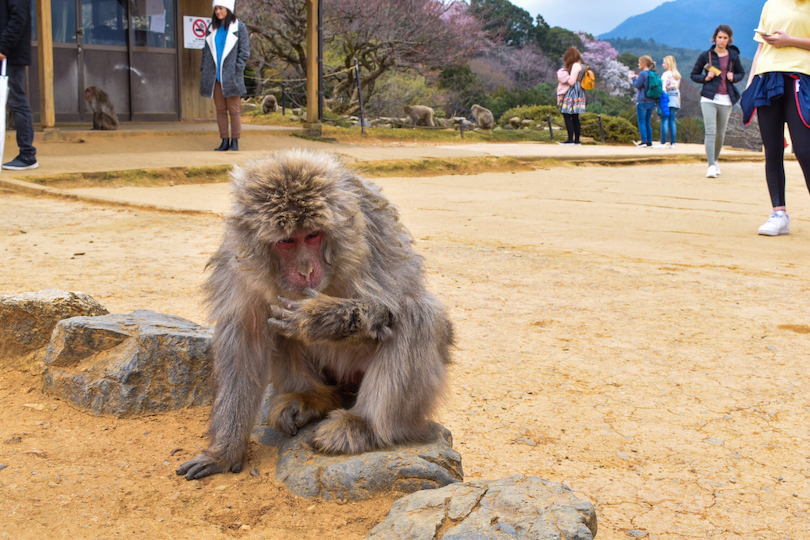
After seeing so many temples and historic sights around town, hiking up to Monkey Park Iwatayama makes for a fun change. Home to roughly 120 Japanese macaques, its lush site is perched atop Mt. Arashiyama and offers spellbinding views over all of Kyoto.
Situated just across Togetsukyo Bridge from the terrific Tenryu-ji Temple, the park was established in 1957 to protect the colony of cute snow monkeys that inhabit the area. Free to come and go as they please, the mischievous creatures play, feed and groom themselves right before you.
Whenever you visit, scores of them are sitting or scampering about the observation deck or swinging in the surrounding trees. Observing them up close and feeding them is an amazing experience – just don’t make eye contact or provoke them by accident!
Bear in mind too it is a steepish, twenty-minute climb uphill to the monkey park.
21. Kyoto Station Building
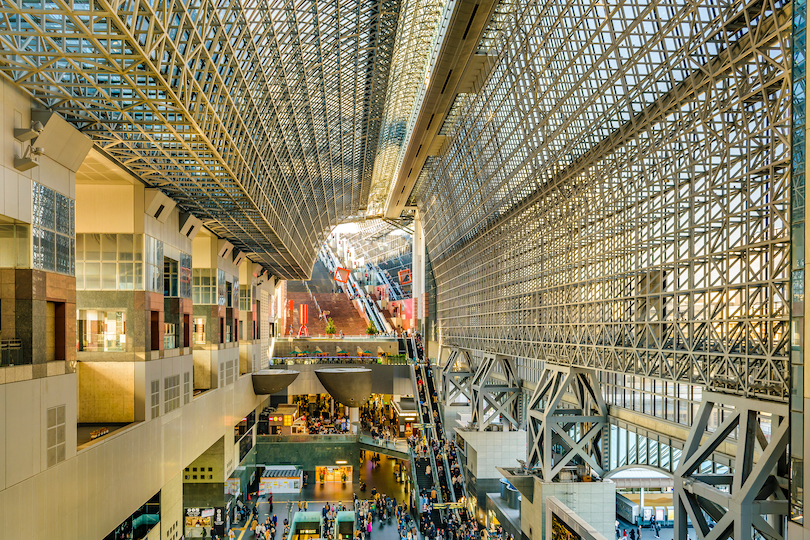
In contrast to all its ancient temples, the colossal Kyoto Station is one of its most distinctive modern buildings. Besides being an important train and transportation hub, it showcases some extraordinary architecture and has tons of amenities to make use of.
Actually the second-largest station in the whole country, it encompasses not just an immense Isetan department store and shopping mall but a hotel, movie theater and many restaurants too. Unveiled in 1997, its sparkling high-rise has fifteen stories for commuters, locals and tourists to explore. As well as a vast, futuristic facade, there is a mesmerizing multi-level LED-lit staircase to snap photos of.
Other than ogling at its sheer size and scale, you can shop until you drop or try some of its excellent eateries. After ambling about its cavernous interior, we particularly enjoyed heading up to its relaxing rooftop garden. A welcome escape from the hustle and bustle below, it provides some great views of the city from up high.
20. Samurai and Ninja Museum
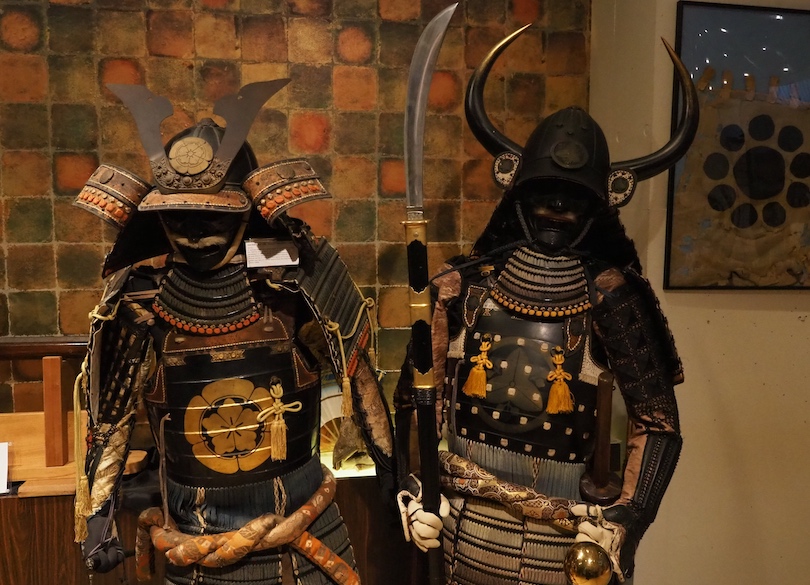
If you’re looking to wield swords, throw shuriken and wear suits of armor, then you’ve come to the right place! At the superb Samurai and Ninja Museum, there are all kinds of fun interactive activities to try while learning a bit about the history and traditions of the two professions.
Set alongside the teeming Nishiki Market, the museum displays loads of cool old swords and sets of armor. Friendly guides explain each item before delving more into the fascinating hierarchy, culture and lifestyles of both peasants and nobles back in feudal Japan. Afterwards, you can dress in either armor or ninja outfits and hone your sword-fighting and blade-throwing skills.
While it is quite small and super touristy, their samurai and ninja experiences promise to be some of the best fun you’ve had in ages! You’ll also take some of your best and most memorable photos here from your time in Japan.
19. Sanzen-in Temple
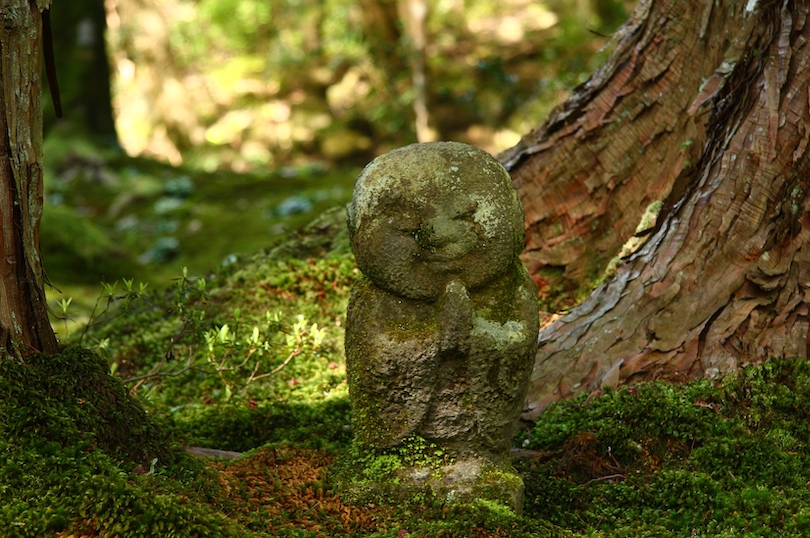
Although it is nestled roughly an hour’s public transport journey north of Kyoto, the scenic Sanzen-in Temple is definitely worth visiting if you have the chance. Part of the tiny Ohara town, it is known for its peaceful atmosphere, amusing stone statues and tasty matcha tea.
Tucked away amidst towering trees, the venerable Buddhist temple remarkably dates to 784 CE with pretty gardens and walking paths lying all around it. Coating the forest floor is a marvelous carpet of moss through which smiling stone statues poke their heads. At their centre is a delightful old hall to see, built in 1143. This holds a statue of the Amida Buddha; Sanzen-in’s most important treasure.
An oasis of peace and calm, the temple is a treat to visit at any time of year. While the winter’s snow does somewhat hide its finest features, its white landscapes make for an enchanting atmosphere. In summer, its blooming hydrangeas create an explosion of color while autumn’s fiery foliage is just as spectacular to photo.
18. Toji Temple
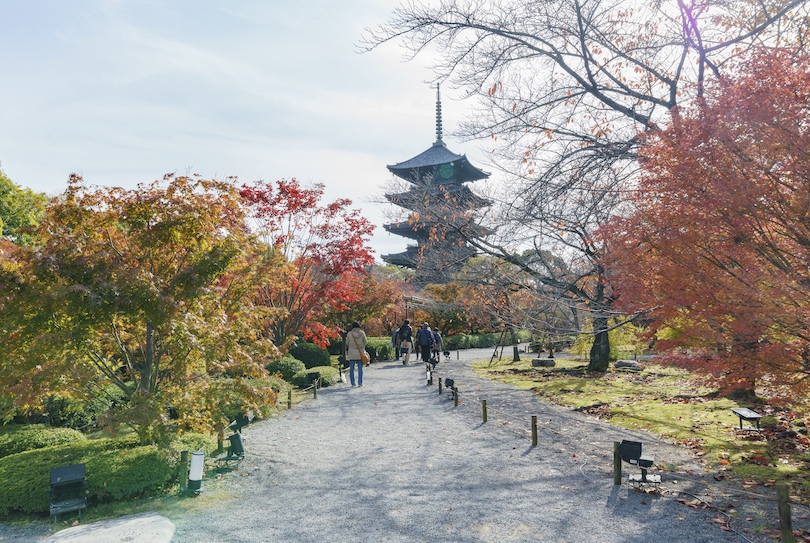
Also famed for its striking seasonal colors is the historic Toji Temple on the northwestern outskirts of the city. Asides from wandering about its landscaped gardens, you can gaze up at its phenomenal five-storied pagoda; the tallest in Japan.
Although the temple was founded in 796, its halls, gates and pagoda have all been rebuilt numerous times over the centuries. Now the main place of worship for the Shingon sect of Buddhism, it houses countless fine statues, paintings and carvings. Towering over everything is its 54 meter-high pagoda; one of the complex’s standout sights.
Perfectly complementing its fantastic collection of art and architecture are the magnificent gardens all around them. After strolling along its picturesque paths and seeing all the statues of the Ashikaga Shoguns, enjoy a calming tea in its traditional tatami room.
Surprisingly overlooked by tourists, it was again one of our favourite stops due to its relaxed feel and resplendent scenery. Toji also apparently hosts a monthly market where hundreds of vendors sell arts and crafts, kimonos, food and more.
17. Hike from Kibune to Kurama
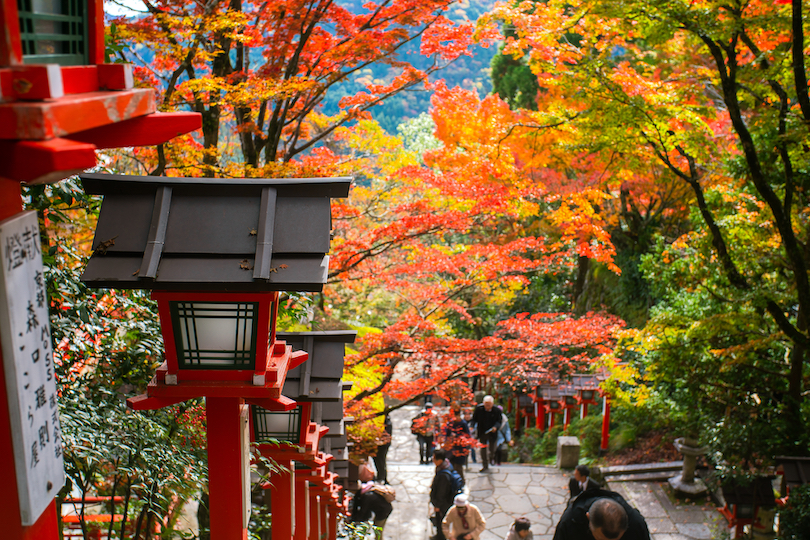
A wonderful way to see even more of the region and really immerse yourself in nature is to hike from Kibune to Kurama. Taking around half a day in total, the popular route passes through forests and alongside rivers, stopping off at temples, shrines and hot springs on the way.
Hidden away in the Kitayama Mountains, about half-an-hour’s train ride from Kyoto, are the adorable towns of Kibune and Kurama. Connecting the two together is a seven-kilometer-long trail up over the mountains, through atmospheric-old growth forest. This sees you follow lovely lantern-lined paths to small shrines and sanctuaries with nature spots and viewpoints also dotted about.
At either end, you can visit Kifune Shrine and Kurama-dera Temple, both of which are set in stunning spots and exhibit some impressive art and architecture. Another highlight is the twisted ‘Path of Tree Roots’ and experiencing the temple’s six-sided kongosho spot. This is apparently the point where the mount’s spiritual energy is concentrated. After the hike, you can soak a while in Kurama’s hot springs before heading back to Kyoto.
16. Togetsukyo Bridge
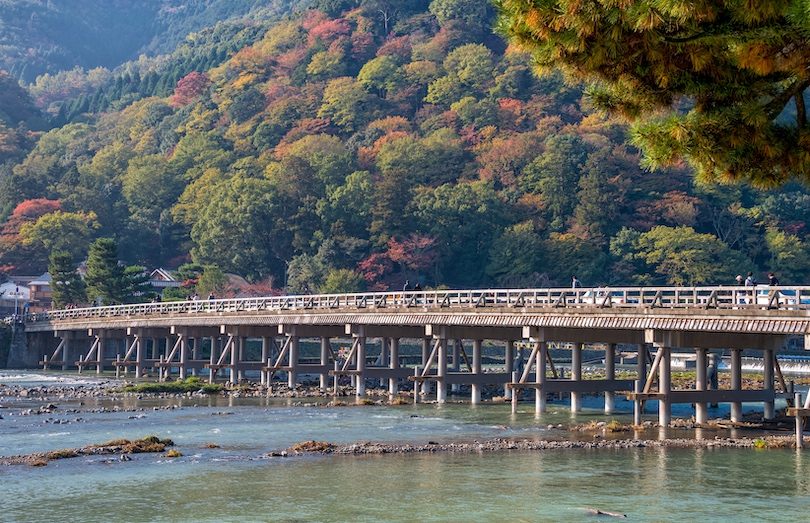
Besides being known for its beautiful bamboo grove, Arashiyama also boasts the iconic Togetsukyo Bridge. Spanning the rushing Katsura River, it makes for some superb photos and viewing, what with the rugged mountains and wide open waters around it.
Famously featured in esteemed ukiyo-e artist Hiroshige’s series of woodblock prints, it was originally built in 836. Once wood, the 155 meter-long bridge is now mostly made of concrete as earlier ones kept being damaged by floods. Every day, eager crowds flock here to snap photos of the river and Mt. Arashiyama rising ahead.
If all the romantic views and scenery weren’t enough, its name also magically means ‘Moon Crossing Bridge’ due to a poetic observation by Emperor Kameyama centuries-ago. Particularly popular times to visit are in spring for the cherry blossoms and autumn for its trees’ colourful foliage.
15. Nanzenji Temple
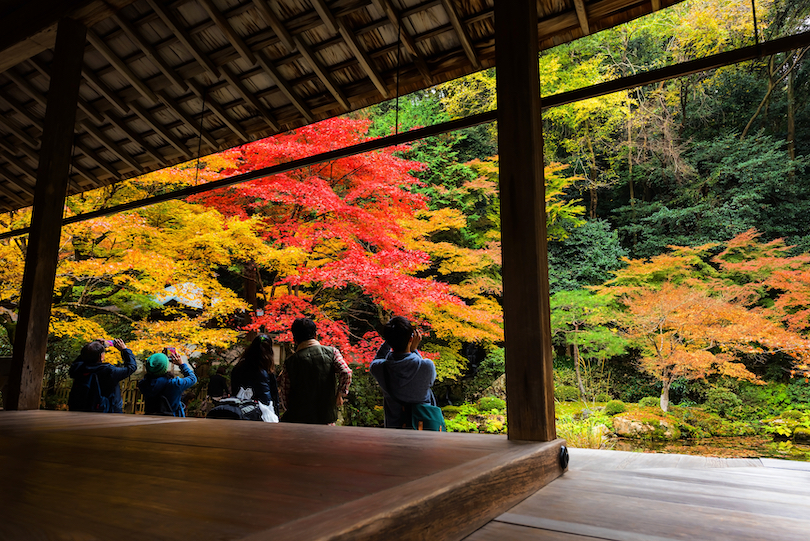
That same ancient emperor had the elegant Nanzenji Temple constructed in 1291. One of the quieter ones in Kyoto, it also contains an attractive Zen garden and an amazing old aqueduct. Many people stop briefly as they make their way along the Philosopher’s Path that runs beside it.
As it has been destroyed numerous times over the years by fire, its complex has constantly varied in size, having last been rebuilt in 1905. Nowadays, guests are greeted by a gigantic Sanmon gate, one of the grandest in all Japan. Dwarfed by it are the art-filled Abbot’s Quarters and a delightful little dry landscape garden from the Edo period.
Its most unique feature however is the hundred-year-old aqueduct that lies just up the hill to the right. Used to transport water from Lake Biwa, its fading red bricks and fine arches create some fabulous photo opportunities amidst the colourful leaves of the surrounding trees.
14. Kyoto Imperial Palace & Kyoto Gyoen
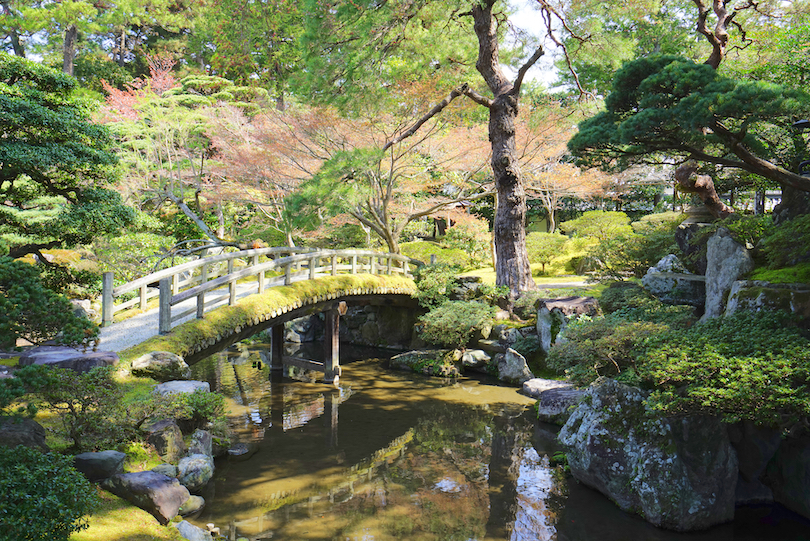
Covering an absolutely enormous part of the city center is the Kyoto Imperial Palace. Located within Kyoto Gyoen – large green grounds that are open to the public – it has interesting guided tours to take.
Up until the Meiji Restoration in 1869, Japan’s emperors and their families resided here for centuries. Although the current complex only dates to a decade or so earlier (due to yet another fire), its ornate buildings and ornamental gardens are still all intricately-crafted.
On guided tours, you’ll get to examine these handsome gates, palaces and historic halls. On the way, you’ll also hear all about the Imperial Family, their role and impact on the nation. If you don’t manage to book one, there is also a free audio guide app you can download beforehand.
While many would count the Imperial Palace as a must-see site, we weren’t all that bothered by it. As with the palace in Tokyo, you cover huge distances without seeing all that much. If you’re pressed for time, we’d probably recommend skipping this and seeing some of the city’s other sights.
13. Nishiki Market
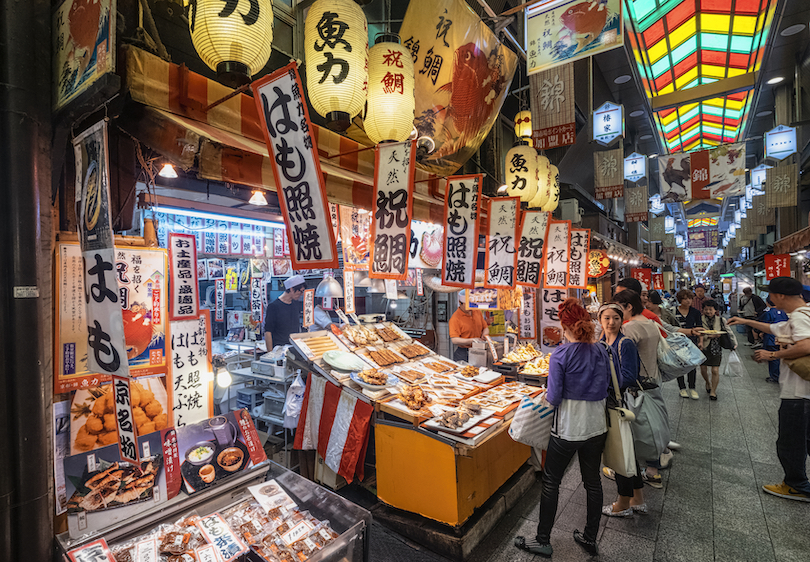
If you’ve already had enough of temples (they do lose their shine a bit by the tenth one), then Nishiki Market is perhaps one of the better things to do in Kyoto. Loads of fun to explore, its packed stands and stalls have tons of tasty Japanese delicacies for you to try.
For over 400 years, vendors have hawked their wares at the massive market affectionately known as ‘Kyoto’s Kitchen’. In total, its covered pedestrian arcades are lined by around 130 shops, all facing out to the public. Delightfully decorated, they display everything from fresh fruit and vegetables to sweet snacks, seafood and souvenirs.
Foodies will certainly love the market’s remarkable range of products and its vibrant atmosphere. As there is so much to see and sample, we came back a couple of times to try out different restaurants and street food options.
12. Tofukuji Temple
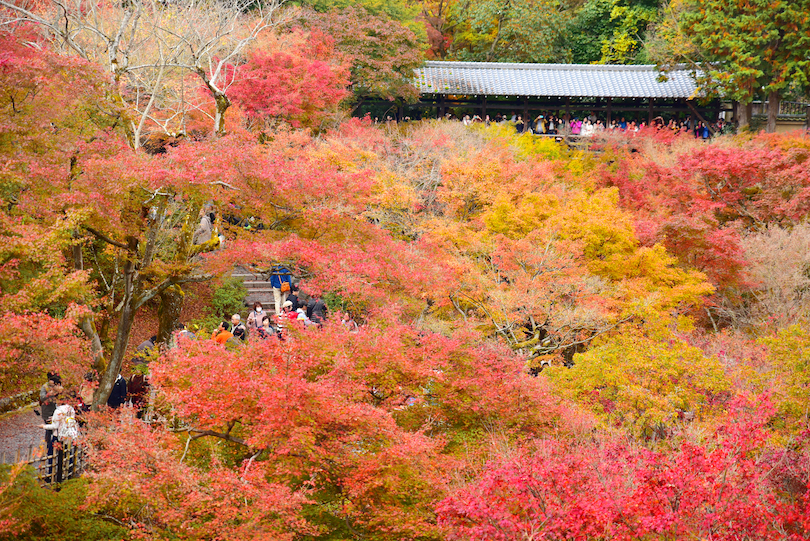
Just north of the infamous Fushimi Inari Shrine is yet another terrific temple to visit. One of the ‘five great Zen temples of Kyoto’, Tofukuji has lots of lovely architecture and artworks to admire. These all lie amidst some utterly idyllic gardens.
Established in 1236 by the imperial chancellor Kujo Michiie, its grounds once contained over seventy buildings at the temple’s zenith. Various fires and the 1868 shinbutsu bunri decree to limit the wealth and power of the Buddhist sects eventually saw their numbers greatly reduced.
Nowadays, the complex has almost 25 sub-temples to stroll around with its two-story sanmon gate, the oldest surviving one in Japan, being the main highlight. Other than snapping pics of its paintings and portraits, you have to see its magnificent moss garden and maple trees. In autumn, visitors pack onto Tsuten-kyo Bridge to see the temple immersed in all the trees’ astounding colours.
11. Eikando Zenrinji Temple
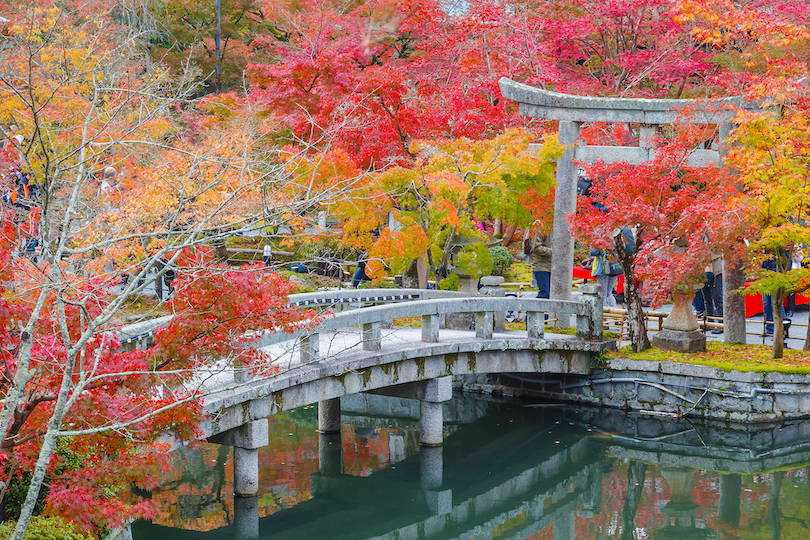
Also famed for its fall foliage is the enchanting Eikando Zenrinji Temple, just north of Nanzenji along the Philosopher’s Path. Scattered across the slopes of Kyoto’s Eastern Mountain, it is arguably one of the most beautiful in the entire city (and that’s saying something!).
Founded back in 853, its gorgeous gates, halls and pagoda are linked by pretty paths and staircases, weaving their way up the hillside. Wandering around, you’ll find koi ponds and cherry blossoms while glittering gold treasures and religious artworks decorate its interiors. The most important of these is the twelfth-century statue of Amida Buddha looking over his shoulder.
Even without seeing its arresting autumnal colors, we were blown away by the temple’s serenity and scenery. Asides from the pristine presentation and layout of its gardens and buildings, there are also fine views over Kyoto to be enjoyed from its higher reaches. Exploring the temple without your shoes on somehow only adds to the experience!
10. Arashiyama Bamboo Forest
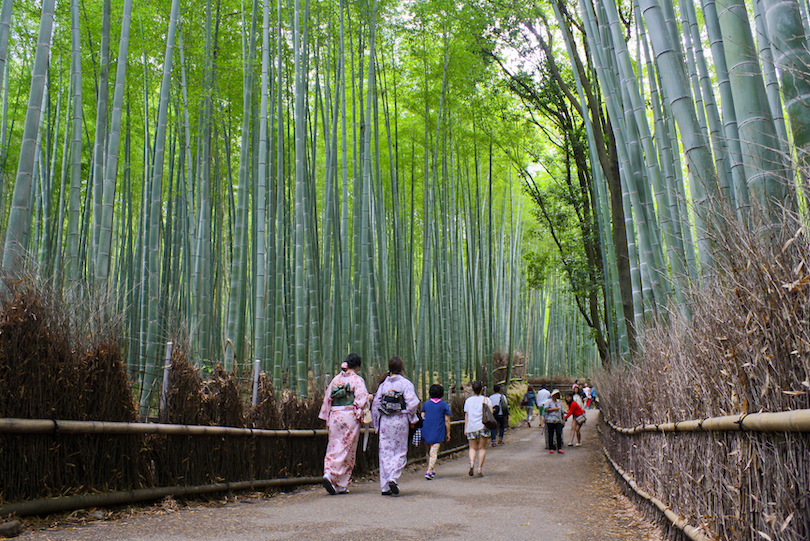
Certainly one of the city’s most photographed spots is the now iconic Arashiyama Bamboo Forest on its northwestern outskirts. Although often overcrowded, there is a reason so many people head here to snap selfies and take pics for Instagram.
Located right next to Tenryu-ji Temple and Togetsukyo Bridge, the towering grove is mostly made up of moso bamboo. Snaking their way through the densely packed, bright green stalks are a few paths to amble along. Hearing the rustle of their leaves and seeing the light through the canopy reflect off of them is a very peaceful feeling, despite the hordes around you.
As it isn’t very large, you’re best off visiting early in the morning to avoid the worst of the crowds. The forest also has some small tea stands for you to stop off and several that sell souvenirs.
9. Ryoanji Temple
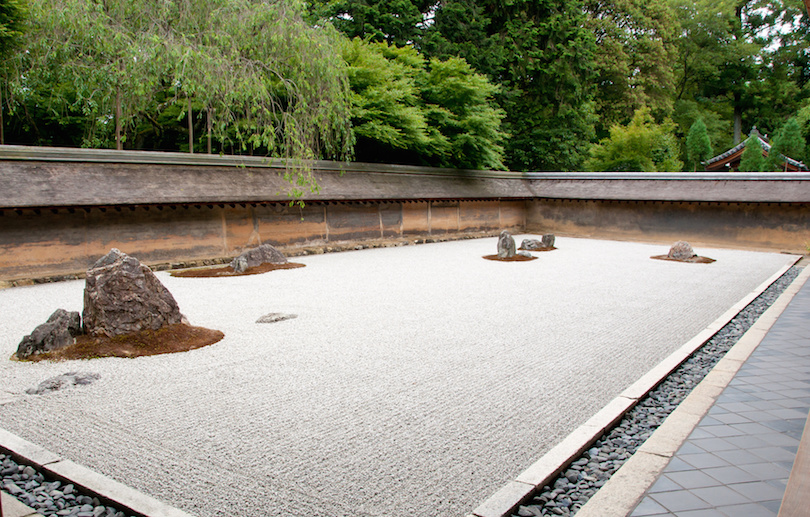
Ryōan-ji is a Zen temple in North Kyoto. It is one of the few examples that still remain of an art form known as dry landscape, or kare-sansui. This art is a type of Zen garden that features a bed of small, smooth pebbles and a few larger, distinctive rock formations.
The garden at Ryoanji features a collection of 15 carefully placed rocks, apparently adrift in a sea of sand, enclosed by an earthen wall.
The temple itself dates back to the 11th century, and it served as a mausoleum for several of the Japanese emperors after their passing. While these tombs can still be visited, it is the large rock gardens that receive the most attention from visitors coming from across Japan and even around the world.
8. Gion District
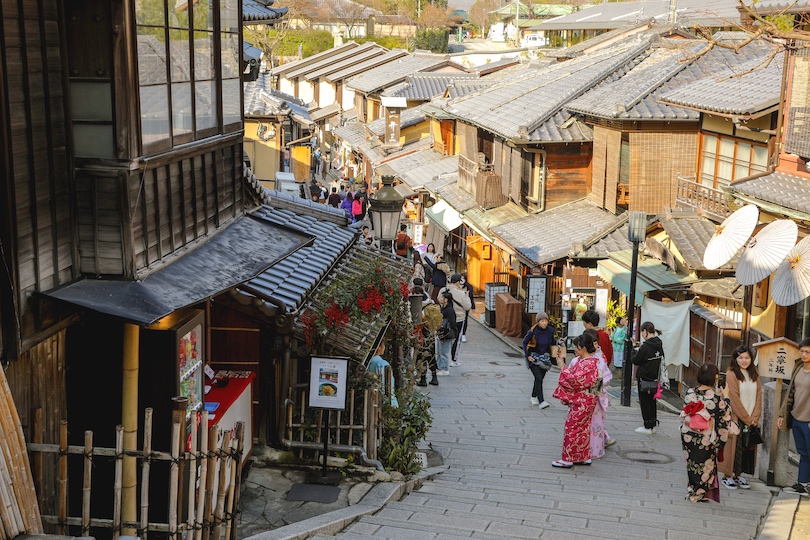
One of the most magical things to do in Kyoto is to explore its historic old Gion District. Offering up an alluring look into what life in Japan was once like, its atmospheric streets and traditional inns are still frequented by colorfully-clad geishas in kimonos.
Wonderfully well-preserved, the charming neighborhood in Higashiyama-ku slowly evolved over the centuries to accommodate and entertain visitors to Yasaka Shrine. Lying along the eastern bank of the Kamogawa River, its flagstones are bordered by beautiful old buildings, many now home to cosy cafes and restaurants or shops and izakayas.
Here you can take part in traditional tea ceremonies, watch dramatic kabuki theater plays and meet elaborately dressed geishas. Many rent kimonos for the day and explore the district, taking photos in the elegant outfits amongst its quaint streets. We absolutely loved Gion’s architecture and ambience and can’t wait to go back!
7. Nijo Castle
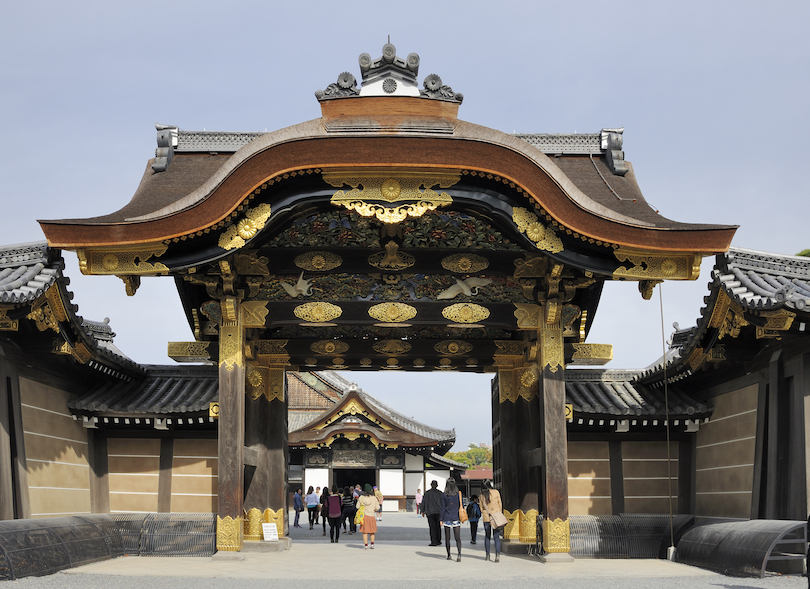
When most people imagine castles, they picture the Gothic stone palaces found in Europe. In Kyoto, however, Nijo Castle is actually made from wood. The design is highly unusual, being made up of two concentric rings, with a circular courtyard between the two.
Nijo Castle was built in the 17th century, and all of the feudal lords in Western Japan were required to aid in the funding of its construction. The palace itself is made from cypress and gold leaf is used extensively in the decor. Don’t forget to look up when admiring the castle, because some of the ceilings are dotted with gold mosaics.
6. Ginkakuji Temple
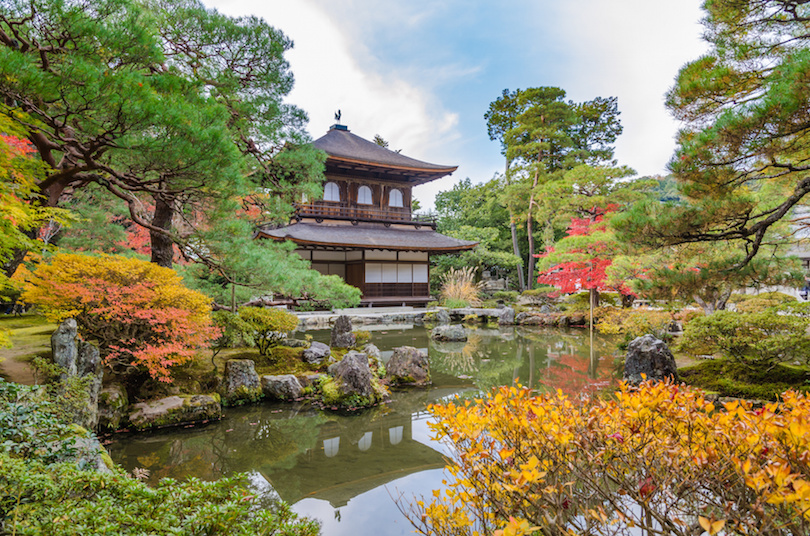
Right at the northern end of the Philosopher’s Path is the popular and picturesque Ginkakuji Temple, also known as the Silver Pavilion. One of Kyoto’s main tourist attractions, it is set in a tranquil spot amidst gardens, streams and small waterfalls.
Originally built in the fifteenth-century to be a retirement villa for shogun Ashikaga Yoshimasa, it was converted a couple of decades later into a Zen temple. Unlike the glittering Golden Pavilion, plans to paint it silver were never followed through. It still looks impressive however as bright green mosses, plants and trees surround the temple and lake before it.
Although often quite busy, the gardens still have a peaceful feel with phenomenal viewpoints dotted here and there. There are also some cool sand sculptures and of course, the architecture of the Silver Pavilion itself to enjoy.
5. Philosopher’s Walk
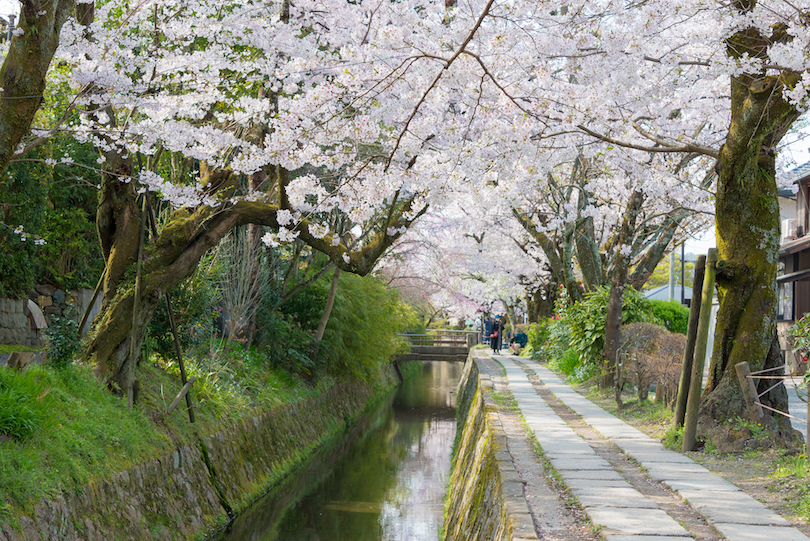
The Philosopher’s Walk is a simple pedestrian trail that runs alongside a canal in Kyoto.
On either side of the walkway stand cherry trees, giving the route a mystical and particularly scenic appearance. The Philosopher’s Walk is shorter than two miles, but it passes by a number of important shrines and temples.
An iconic Japanese philosopher named Nishida Kitaro used to walk along this stretch daily as a form of meditation, which is where the name Philosopher’s Walk originated. However, you don’t have to be a philosopher to admire the views, get great photos of the cherry trees and see a number of tourist attractions in Kyoto within a hour’s walk.
4. Sanjusangendo Temple
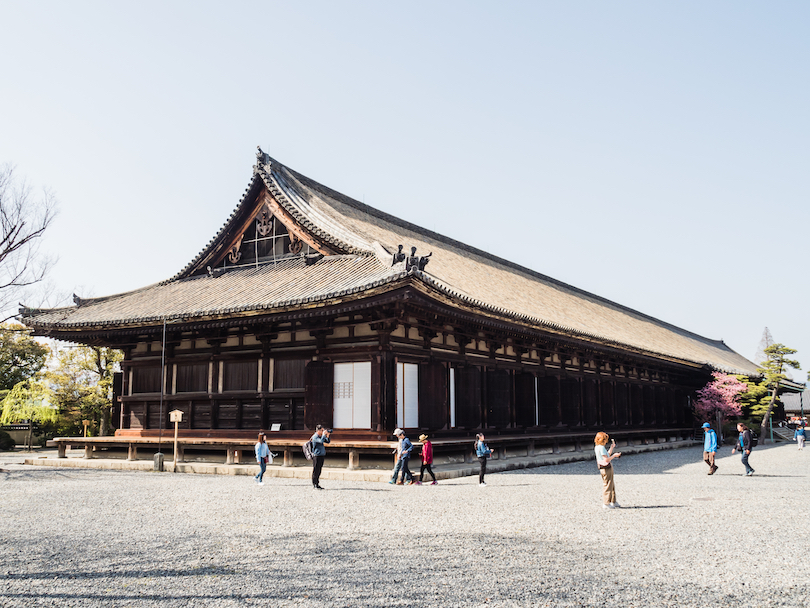
Unlike almost all of Kyoto’s other incredible temples, Sanjusangendo isn’t surrounded by spectacular gardens and doesn’t display much interesting architecture. Instead, the iconic landmark is renowned and revered for the 1,001 intricately-crafted statues crammed in its interior.
Dedicated to Sahasrabhuja-arya-avalokitesvara (phew!) or the Thousand Armed Kannon, its very long hondo hall was impressively completed back in 1266. Still standing today, it contains countless rows of life-sized statues, covered in gold leaf. Even more remarkable is that each individual figure and face of the goddess of mercy is slightly different. All together, they and the heavy incense-infused air of the temple create quite a striking scene.
Outside, you can see 28 sculptures of guardian deities thought to have originated from Hinduism. A small but scenic garden at the back also provides you with a quiet space to contemplate and take a break before getting back to sightseeing.
3. Kiyomizu-dera Temple
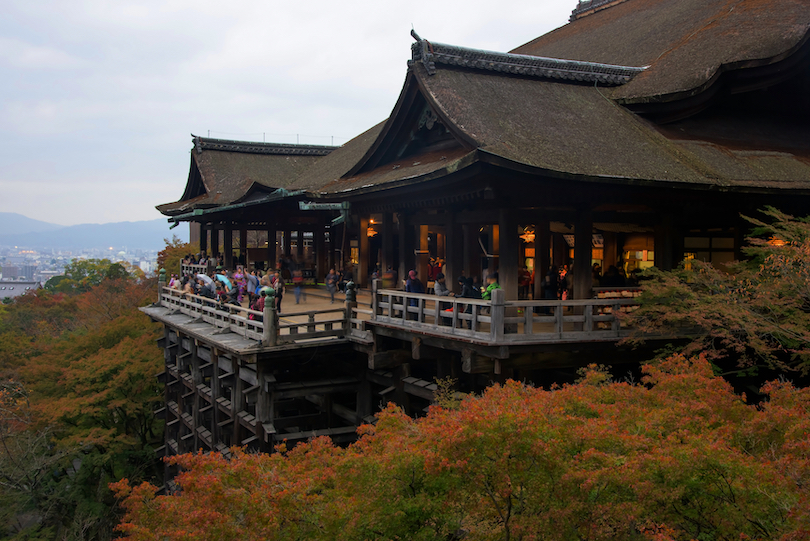
Spread across the rolling foothills of Mount Otowa in eastern Kyoto is the ginormous Kiyomizu-Dera Temple. Mostly known for its main hall’s massive veranda, the religious site is an absolute must-visit for its captivating architecture, commanding views and cheery cherry trees.
While the important temple was founded in 778, all its current buildings ‘only’ date to 1633. The most eye-catching of these is, of course, its humongous hall that protrudes out from the hillside atop huge pillars. Already a stupendous sight, it was constructed without a single nail or screw – all its wooden parts having been placed snugly together so they can’t budge.
Other than basking in its breathtaking views, you can explore the temple’s lush leafy grounds and see the small waterfall after which it is named. Although the veranda and views were great, we were just as enamored with its bright orange-painted pagoda. Looking out over Kyoto, it makes for some fine photos, either against the sky or peeking above the nearby treetops.
2. Golden Pavilion
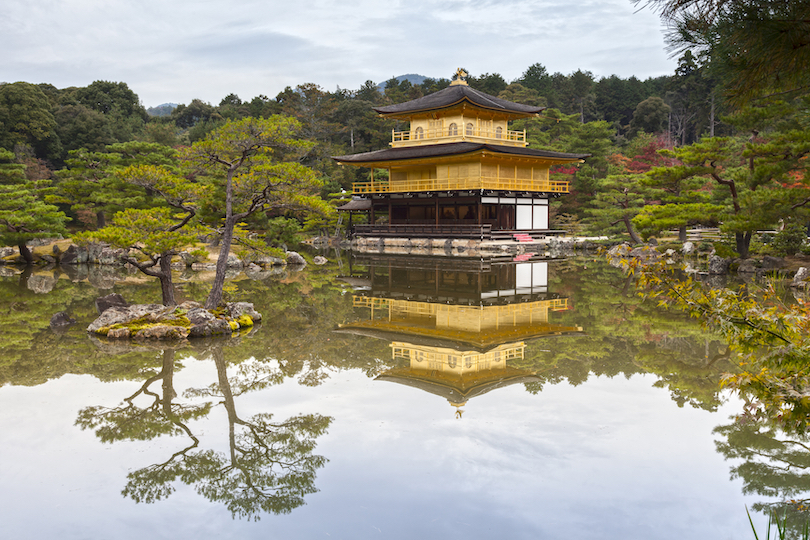
One of the most famous buildings in all of Japan is the Golden Pavilion, better known to locals as Kinkakuji. This Zen Buddhism temple was originally a privately owned structure, but toward the end of the 14th century it was converted to a temple.
The temple has three stories, and they seamlessly incorporate three major Japanese styles of architecture: Samurai, Zen and Shinden. Yellow and gold coloring, not to mention the bright bronze phoenix ornament on the apex of the roof, helps give the Golden Pavilion its name.
Surrounding the temple are beautiful, manicured gardens, some of which are designed to show the harmony between heaven and Earth.
1. Fushimi Inari Shrine
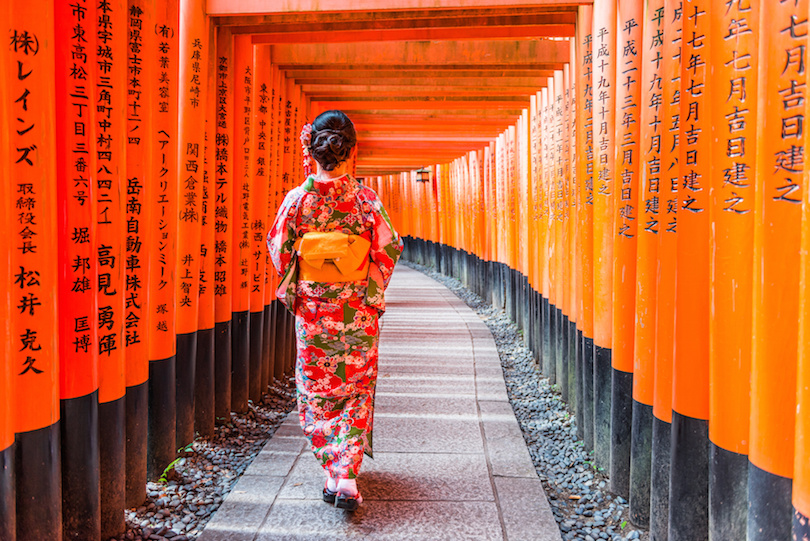
It is possible that the Fushimi Inari Shrine is the most impressive landmark in all of Kyoto. In reality, it is not just one shrine, but the head shrine (taisha) for 32,000 Inari shrines across Japan. Stretching 230 meters (750 feet) up the hill behind it are hundreds of bright red torii (gates).
You could easily spend several hours walking up the hillside, taking in the beautiful views of the city of Kyoto and walking through the torii, which appear luminescent in the late afternoon sun. This shrine still holds incredible religious and personal significance to local residents.
During the Japanese New Year, millions will come to pay their respects. As you approach the shrine, look for vendors selling the sweet tsujiura senbei, a kind of cookie local to the area and believed to be an early predecessor of the American fortune cookie.
Map of Things to Do in Kyoto, Japan
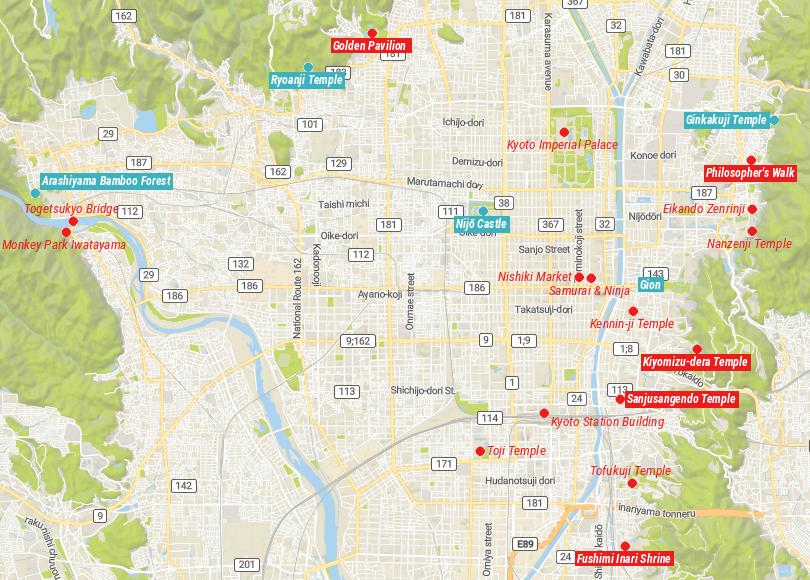
Share this post:
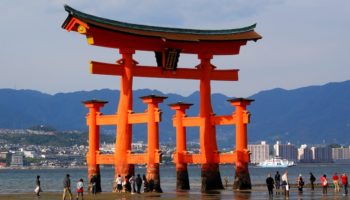
7 Best Day Trips from Kyoto
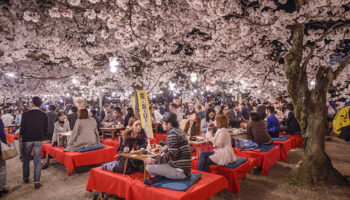
Best Time to Visit Kyoto: Month-by-Month Guide

9 Most Beautiful Regions in Japan
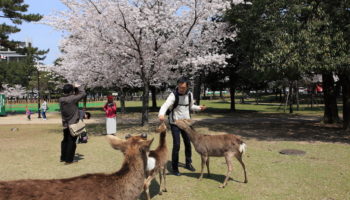
11 Best Things to do in Nara, Japan

12 Most Beautiful Volcanoes in Japan

17 Best Places to Visit in Japan
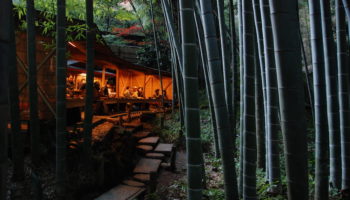
10 Best Things to do in Kamakura, Japan
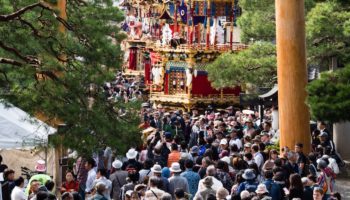
10 Best Things to do in Takayama, Japan
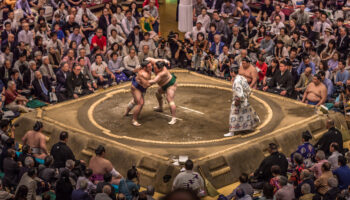
27 Top Tourist Attractions in Japan

9 Most Amazing Hotels in Japan
Reader interactions, leave a reply cancel reply.
Your email address will not be published. Required fields are marked *
This site uses Akismet to reduce spam. Learn how your comment data is processed .

TOP 50 Things to do in Kyoto: Must See, Must Do & Must Experience Activities (2024 Edition)
By miho okamoto | .

Fushimi Inari Shrine gates. Kyoto, Japan
- Top Attractions and Activities
Local Cuisine
Kyoto nightlife.
- Non-touristy things to do in Kyoto
- Kyoto Facts
- Travel Tips
Top Attractions
#1 arashiyama bamboo forest.
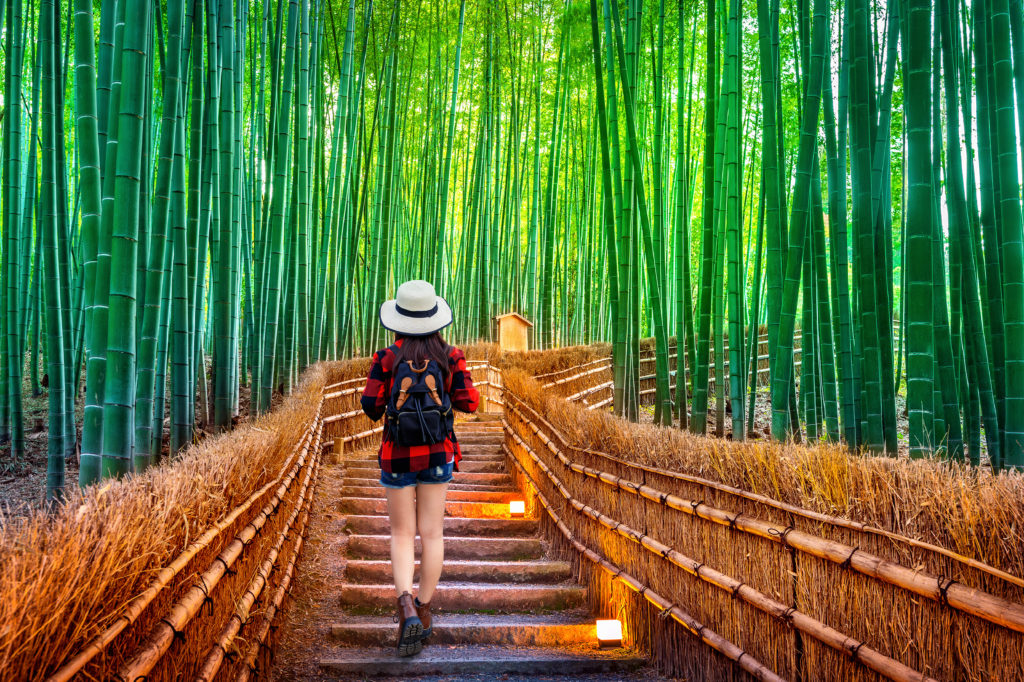
Arashiyama Bamboo Forest
There is a secret date spot for Japanese lovers in Arashiyama! You can also visit temples, check out the bamboo grove and feed wild monkeys all at the same place.
This area is outside the downtown area and has a lot of stops at temples and shrines so it’s best to explore it for half a day. There are a lot of cafes and restaurants around the area so there’s no need to worry about snacks and food.
Most pictures of the forest can’t hold a candle to the real thing. What you see on the web is just a fraction of the magical experience, so make sure you add this to your itinerary!
Visit the grove early in the morning or late in the afternoon to avoid the crowds!
#2 Kyoto Tea Ceremony #1 RATED KYOTO ACTIVITY
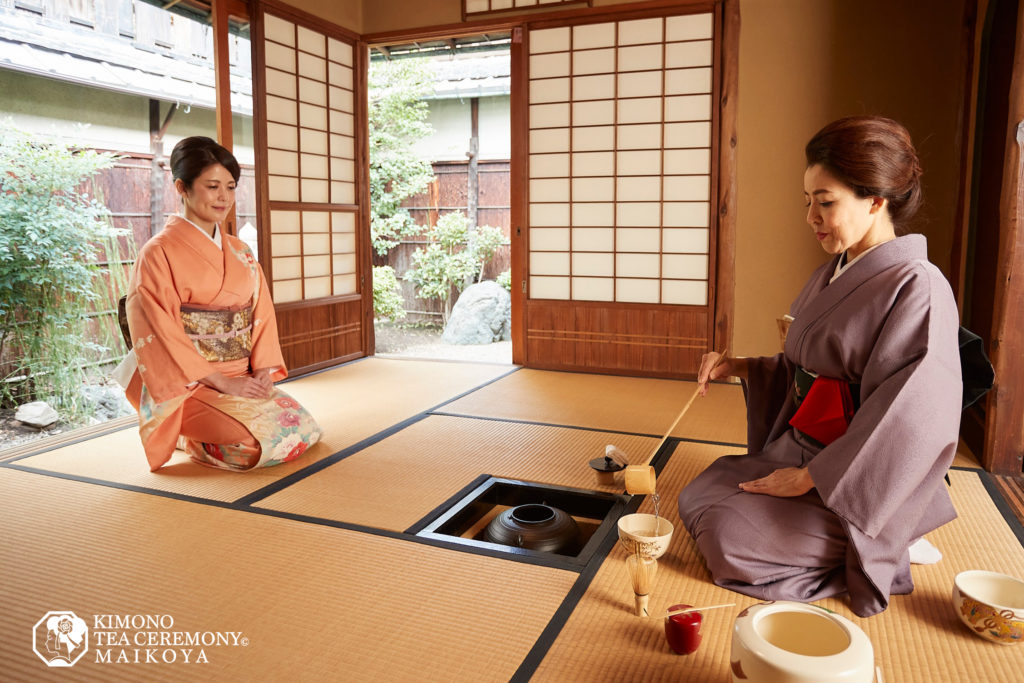
- Tea ceremony
According to Time Magazine, CNN Travel, and Lonely Planet , the traditional tea ceremony in Kyoto is a must-do bucket list item. Maikoya is a spectacular start for your tea ceremony experience, whether you’re new to it or not! You can even rent out a kimono for the tea ceremony and a stroll around the streets of the Gion Geisha District in Kyoto.
Their tea ceremonies cater to a number of groups from families with kids , casual tea ceremonies , and kimono tea ceremonies . You can also rent kimonos at Maikoya and then check out famous Sakura spots in Kyoto wearing a kimono like locals. BOOK TEA CEREMONY with 20% DISCOUNT.
If you’re on your honeymoon, the Maikoya staff may even have a surprise for you! So make sure you book their Honeymoon Photo Shoot and Special Lunch .
Maikoya staff can teach you where to get the freshest matcha tea and beautiful antique tea bowls! You can also ask about the best places to visit in the neighborhood.
#3 Samurai & Ninja Museum with EXPERIENCE #1 RATED MUSEUM & English Tours Held Every 15 Minutes
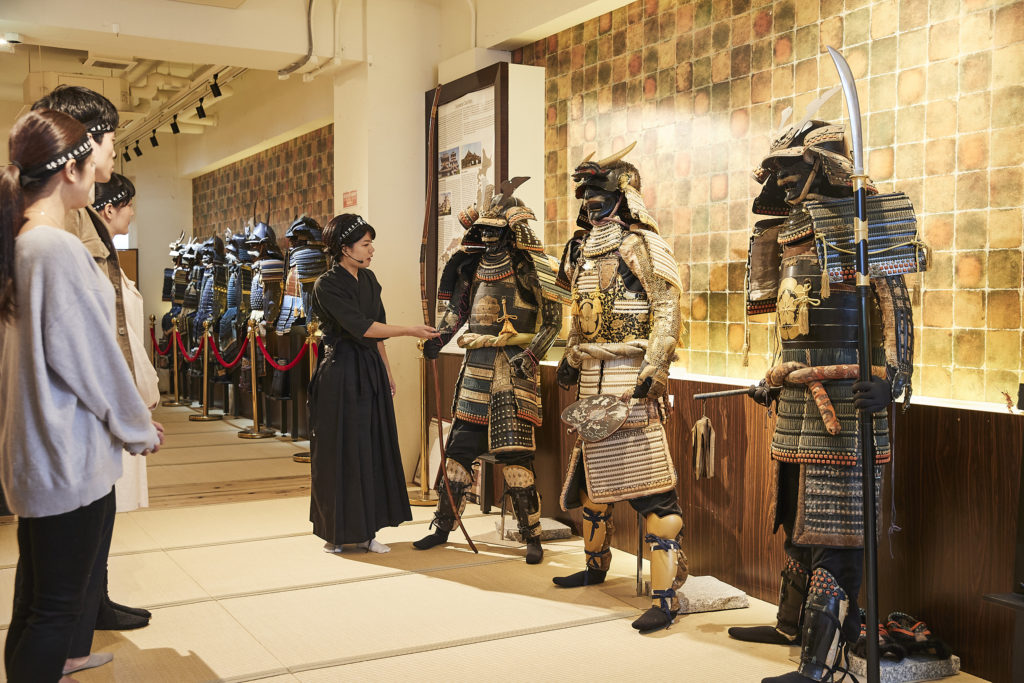
Samurai & Ninja Museum near Nishiki Market is the only museum in Kyoto where you can get history tours in English every hour.
The Samurai and Ninja Museum, which located right next to the Nishiki Food Market is a must-add to your itinerary. The museum showcases samurai armors, weapons, ninja outfits and many artifacts. The basic ticket comes with free tours in English and there are optional experiences such as training like a ninja or samurai , watching a samurai sword show, and even trying on costumes!
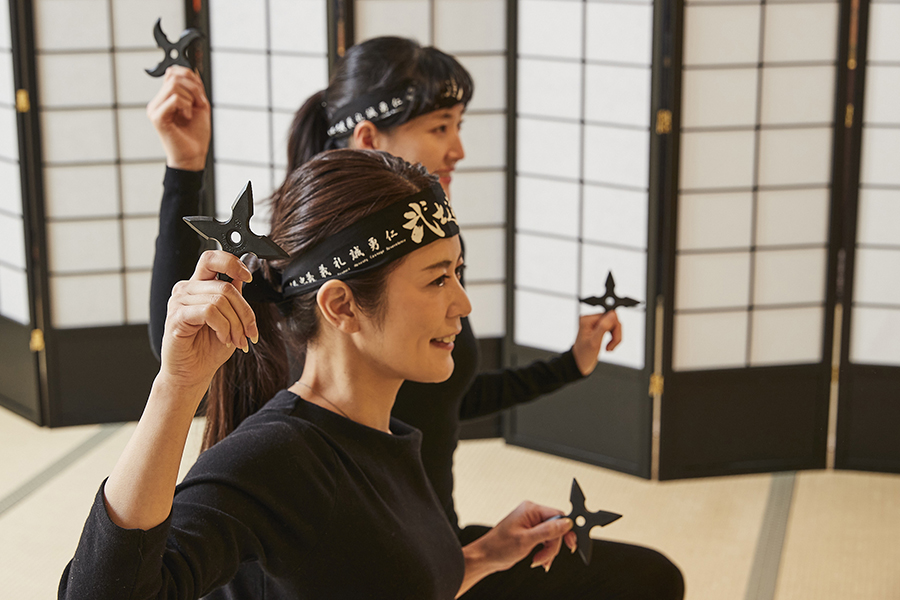
The museum is INTERACTIVE.
The museum also has exhibits from the Edo Period from samurai and ninja families, along with real katanas! You can even book a lesson to try them out with the Tameshigiri or Sword Cutting lesson –this is the only event that you can use a real samurai sword. All the workshops and classes use model swords so even kids can participate.
If you can’t decide on the packages, book a Basic Ticket to get a taste of what they have to offer.
#4 Fushimi Inari Shrine The 10,000 gates
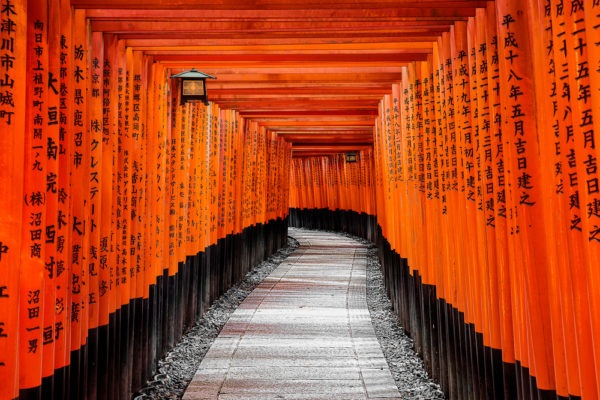
10,000 Gates, Fushimi Inari Shrine
The Fushimi Inari is one of the most visited spots in Japan! This is a great spot to go hiking and look for the hidden bamboo forest. Despite the high altitude, there are a number of cafes, tea shops, and noodle shops along the way.
Fushimi Inari has many attractions and spots of interest besides the 10,000 torii gates. You can find attractions to visit just a short walk away from the main shrine like the famous Tofukuji Temple and the Gekkeikan Okura Sake Museum which used to be a sake factory.
You must go there earlier in the day to beat the crowds!
#5 KINKAKUJI TEMPLE
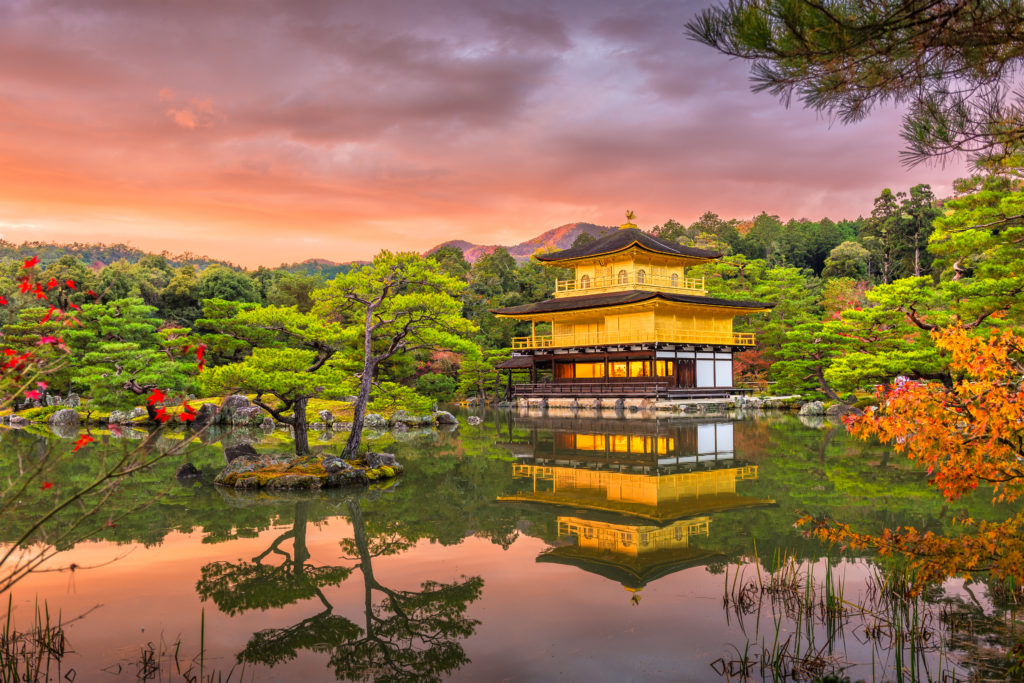
The Kinkakuji Temple is by far the most famous and the most picturesque temple in Japan! Catching sight of the gold-covered structure is an almost surreal experience–but the building is only covered in gold leaf for the top two floors.
The temple is open from 9 AM to 5 PM. Make sure to arrive a few minutes before it opens so you can avoid any crowds! You can also visit around 4 PM since the tourists start thinning out before closing time.
The Golden Pavilion is outside the city and you can’t actually enter the building, so there’s not much to do besides strolling around the garden.
I would sometimes skip visiting especially during peak seasons as the buses would be too crowded for me and I have to take a taxi.
See what people are posting about this place.
#6 Geisha Experience
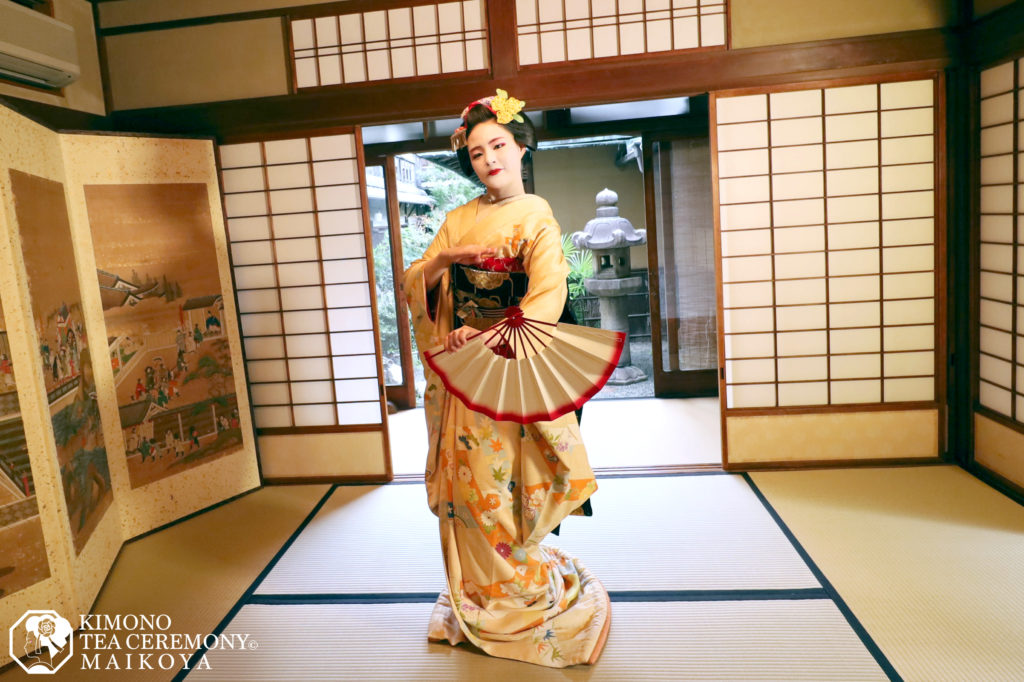
Gion District is well-known for its geisha culture and is a must-see destination in Kyoto! The geisha are called “geiko” in the Kyoto dialect, and their apprentices are called “maiko”. There are fewer than 200 geikos in Kyoto and it can be difficult to witness a show of their talents in traditional arts.
Luckily, you can book a tour that includes meeting with a geisha ! If you were interested in the tea ceremony item from before, hit two birds with one stone by booking Tea Ceremony in Kyoto by Kimono Tea Ceremony Maikoya . There are a variety of packages that we have to offer! You can even try being a geisha for a day to see what it’s like wearing their makeup and eye-catching accessories.
If you are lucky, you may be able to see a real geisha or maiko anywhere on Hanamikoji Street between 6 and 8 pm when the geishas are on their way to work. Please respect their privacy and remember, they are not objects.
#7 Kiyomizu-dera Temple
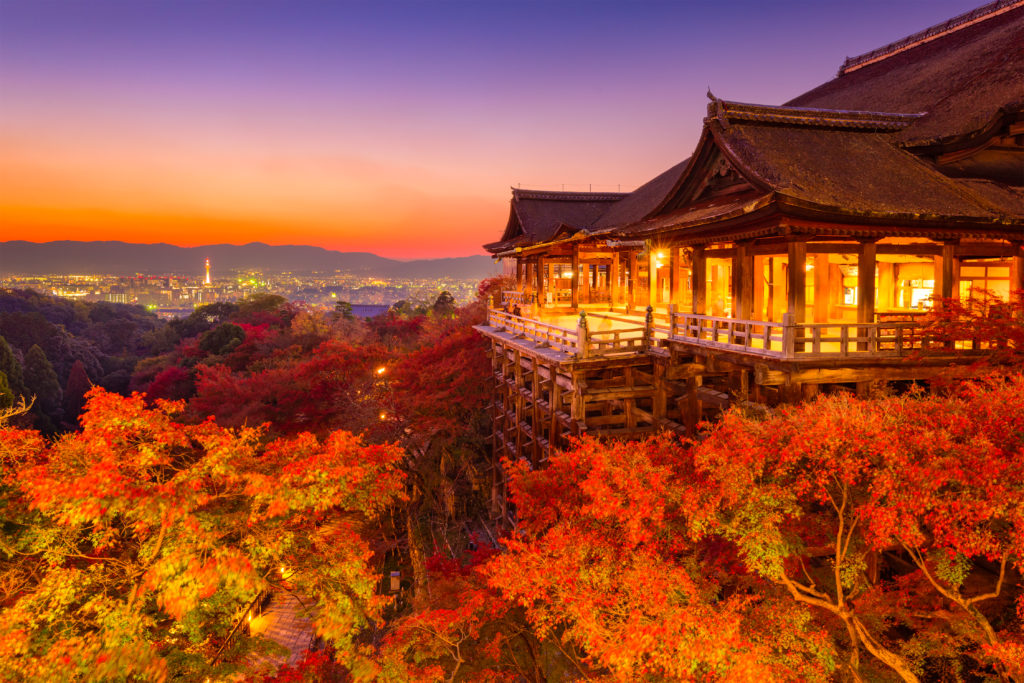
Kyoto, Japan at Kiyomizu-dera Temple.
This is a beloved tourist spot in C entral Kyoto!
The Kiyomizudera Temple main hall is completely made of wood! There is not a single piece of metal or nail that supports the structure. The temple is said to be named after a sacred water fountain that grants anyone who drinks from it the gift of health and longevity–“Kiyomizu” means “clear water”.
Just behind the main temple hall, you’ll find a shrine dedicated to the god of matchmaking and love. Legend has it that if you can find the two secret stones and walk from one to another your eyes closed your wish for love will come true.
Take note! The temple gets a lot of visitors and often undergoes structure maintenance.
Kiyomizu temple is right next to the historic Yasaka shrine and only about a 10-minute walk from the Gion Geisha District. Kiyomizu temple is right next to the historic Yasaka shrine and only about a 10-minute walk from the Gion Geisha District.
Kiyomizu temple has an amazing night view and night illuminations during most of the year. Don’t forget to check the historic streets and teahouses in the ninen zaka and sannen zaka areas which are right next to the temple. Recently Starbucks and Hard Rock cafe opened branches in traditional buildings, not far from the vicinity.
#8 Ni shiki Market
Nishiki Market is called the Kitchen of Kyoto and has more than 100 types of food to try! This is recommended for foodies and as a destination for rainy days. The market is also next to the Kyoto Samurai & Ninja Museum .
This is where the chefs of local izakayas and renowned sushi restaurants come early in the morning to pick up the best catch. You can find many things to try from fried tofu dumplings to black sesame ice cream. With more than 600 different types of fresh food to try and countless food stall types of stores, the Nishiki market is heaven for food lovers. Some notable places are the Sengyo Kimura Fish shop that was established in 1620, Aritsugu Knife Store run by one of the most famous blacksmith families of Japan and a 100 year old Daiyasu Oyster shop towards the end.
My most favorite is the baby octopus comes with a fried egg. I highly recommend trying it!
There are many other types of food to try including but not limited to:
- Marinated maguro sashimi on a stick
- Soy milk donuts
- Grilled shrimp and mackerel on a stick
- Green tea ice cream
- Pickled eggplants
- Dried seafood snacks
- Japanese fried tamago
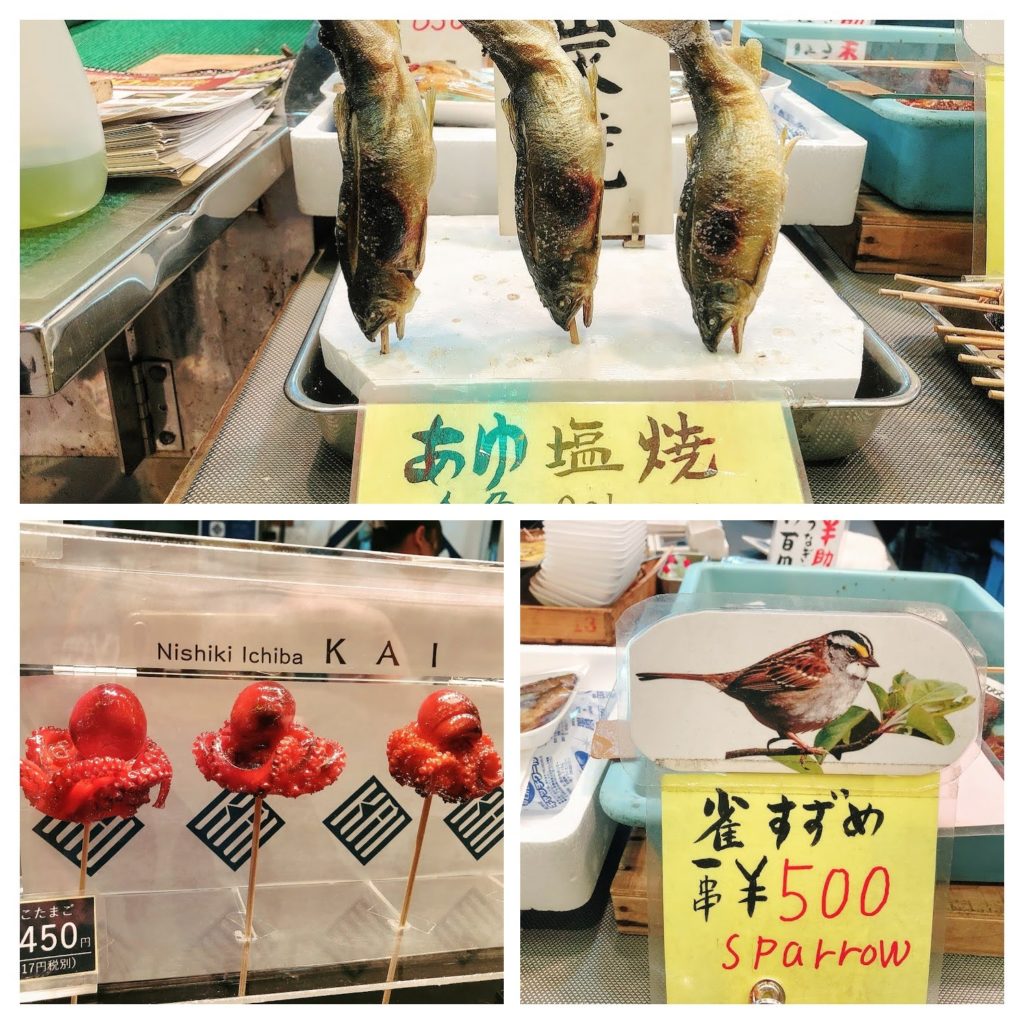
If you are not a fan of seafood, there are many places that serve red meat including Kobe beef.
Nishiki market closes at 6 PM sharp. Show up before 5 PM. There are many free samples! Make sure you bring cash since the stalls don’t accept credit cards. BOOK Nishiki Market Tour with 20% DISCOUNT
#9 Onsen & Sento
“ Onsen ” is the Japanese word for hot spring while “sento” is a public bath. The difference between them is that an onsen has multiple beneficial minerals and passes the strict requirements for hot springs in the country.
Typically, visible tattoos are not allowed in the onsens and public baths because of their association with the Yakuza. However, there are a number of tattoo-friendly onsens around Kyoto that provide exceptional service!
Remember! There are no onsens in downtown Kyoto , but you can find multiple sentos or public baths instead . If you want a hot spring with mineral waters, then you need to go outside of Kyoto City such as Kurama onsen or Arima Hot Spring. If you are okay with any public bath, I recommend Nishiki-yu in the downtown area or Goko-yu near the Gojo area.
Unfamiliar with onsens and public bath culture in Japan? Take a look at our guide so you can avoid the culture shock!
In Japan hot springs are called “onsen” and it is illegal to call a public bath “onsen” if it does not have natural hot springs with certain minerals.
For most foreigners though, it does not matter if it is a public bath (a.k.a sento bath) or onsen. After all, the traditional setup and the experience are pretty much the same.
Many ryokans and hotels have a traditional-style public bath! You can book an onsen-ryokan to get double the experience of a traditional Japanese inn and a relaxing hot spring bath.
#10 Ya saka Pagoda
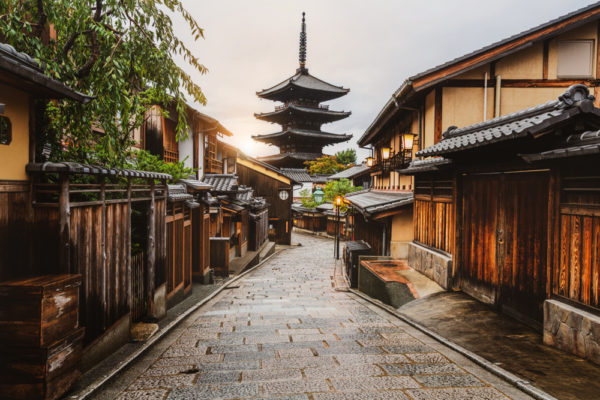
Yasaka Pagoda
Legend has it that if you can crawl under the huge stone you will dispel bad spells forever.
In Kyoto, almost all couples take their wedding pictures near the Yasaka Pagoda, right next to Ninenzaka. You can also visit the historic Yasui Kompiragu shrine nearby. People often purchase colorful balls to make a wish or crawl under the huge round rock to dispel bad luck.
Whenever I have guests, I always take them to this area and it is always a hit. Luckily the place is not far from the Kiyomizu temple area and the Gion area , so you can easily add the Yasaka Pagoda to your itinerary.
The Yasaka Pagoda is located close to a number of attractions in the Higashiyama District. You can create a short walking tour from Kiyomizudera to the pagoda and pass by many old-style shops, cafes, shrines, and temples: Chionin, Shorenin, Heian Shrine, and go further to Nanzenji, the Philosopher’s Path, and the Ginkakuji Temple.
#11 Night Food Tour at Pontocho (先斗町)
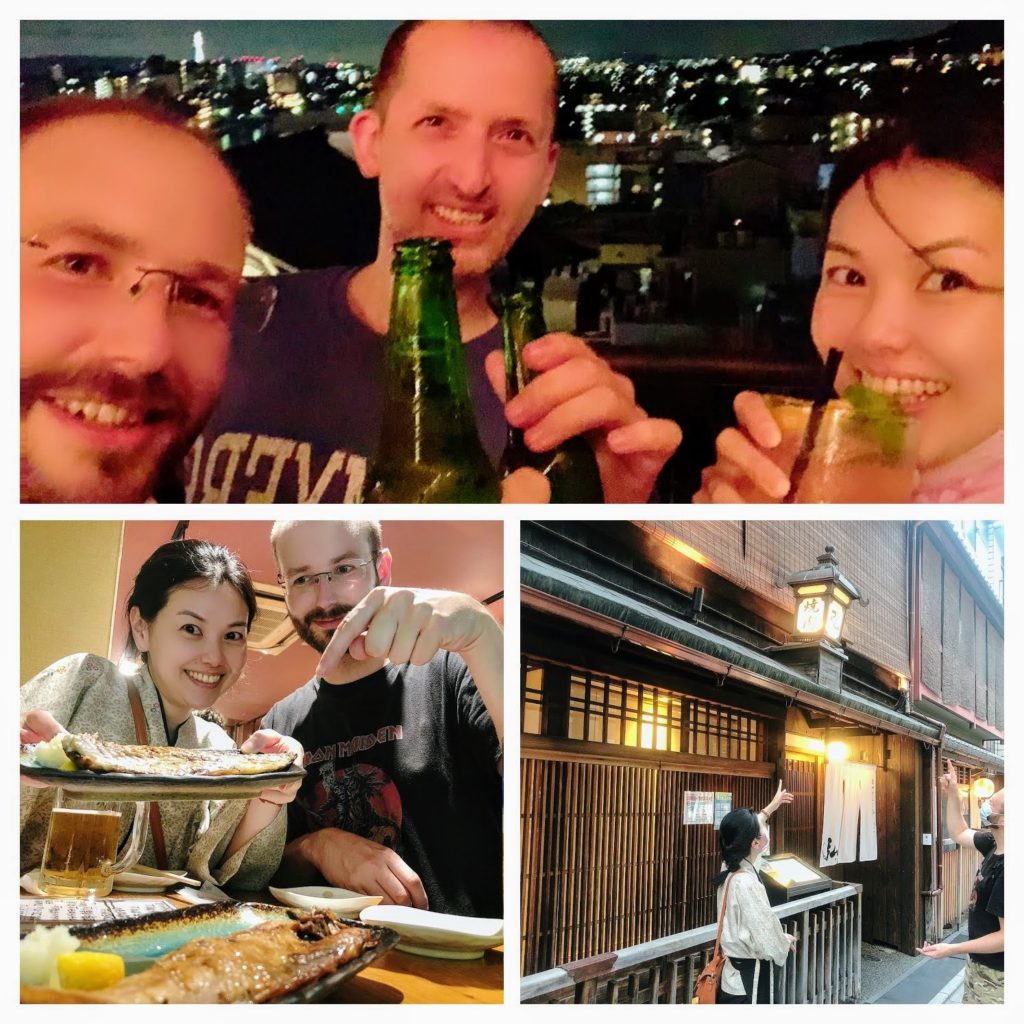
Kyoto food-tour
This is Kyoto’s liveliest bars & restaurants street which is also the 2nd largest geisha district in Kyoto. Best spot for things to do at night.
Wherever you go in Kyoto, you will always see the beautiful Kamogawa River running along the middle of the city. In the city center, right near the riverbank, you can find the narrow alley called Pontocho (先斗町) that runs from Shijo-dori to Sanjo-dori. This used to be a place where merchants would sell goods from Osaka.
Today, Pontocho is one of Kyoto’s most visited areas for its wide range of dining options, from street foods or yakitori to local and modern cuisine. The lively street is not only littered all the way with bars and restaurants but is also the 2nd largest geisha area! Make sure to look out for them as they head in and out of the local teahouses. You’d often find apprentice geisha, known as a maiko, heading off from one job to another.
This is also a great place to head to when you’re looking to enjoy and explore the nightlife in the city. A sports bar-type pub or hub where you can meet and make friends with friendly locals!
If you prefer, there are also different cuisines available in the area: Italian, Chinese, American, to name a few. Most establishments offer their services in English as well to make it easier for visitors who don’t speak fluent Japanese.
#12 JAPANESE GARDENS
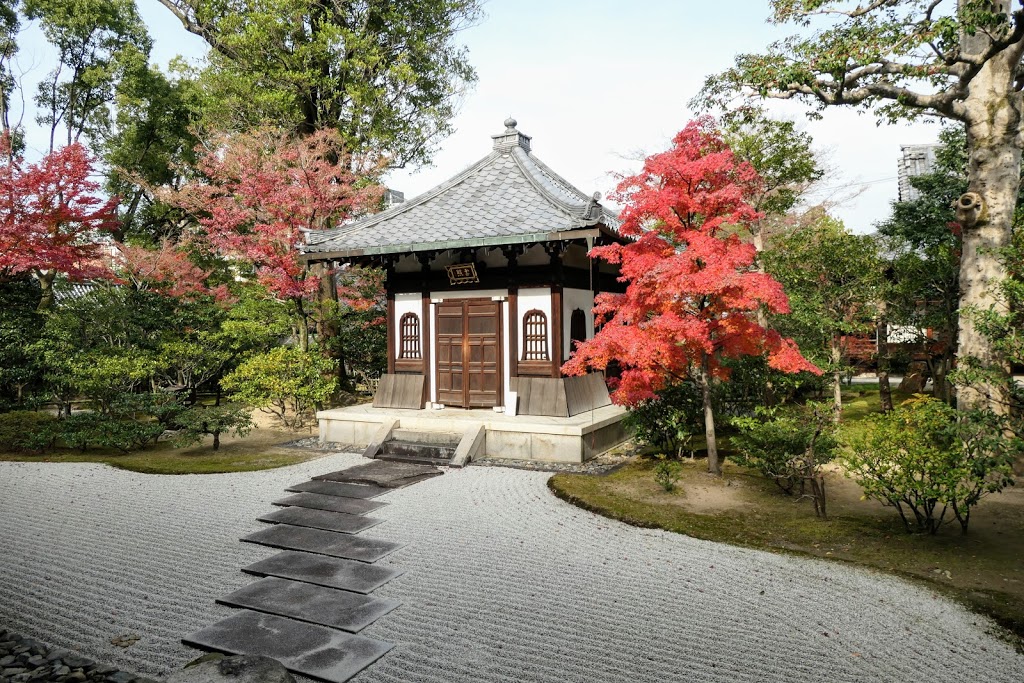
Each Japanese garden element has special meanings (e.g. pine trees: strength; circle-shaped pebbles: waves in the ocean and the transience of life; turtle stones: longevity) Top 10 gardens listed below.
Many people come to Kyoto to escape from the hustle and bustle of big cities but then face the hordes of tourists at main sites. Luckily Kyoto is home to a number of tranquil Japanese gardens some of which are just a walking distance from the downtown area. The meanings wary but both rock gardens and Tea ceremony gardens meant to bring a miniature version of nature in your backyard. Big rocks represent mountains, small rocks represent hills, pebbles shaped as circles represent waves in the oceans.
As a Kyoto resident, these are my most favorite Japanese gardens and ideal to visit if you are short on time:
- Kenninji near the Gion area.
- Kodaiji near Kiyomizu temple.
- Shosei-en near the Kyoto station.
If you’re staying for more than 3 days in Kyoto or visiting the northern part of the city, I recommend dropping by these spots to take a break from all the busy tourist areas:
- Katsura Villa
If you’re staying for even longer or about a week, you can add these gardens to your itinerary as well:
- Saiho-ji Temple , as UNESCO World Heritage Site
- Enkoji moss garden
- Isuien , the old Imperial tea garden in Nara
You can book a hassle-free tour of the Ken’ninji Temple here!
A majority of the gardens in Kyoto also hold tea ceremonies or shorter tea tasting! Make sure to check if the gardens you’re visiting offer this relaxing experience.
#13 RYOA NJI Z en G arden
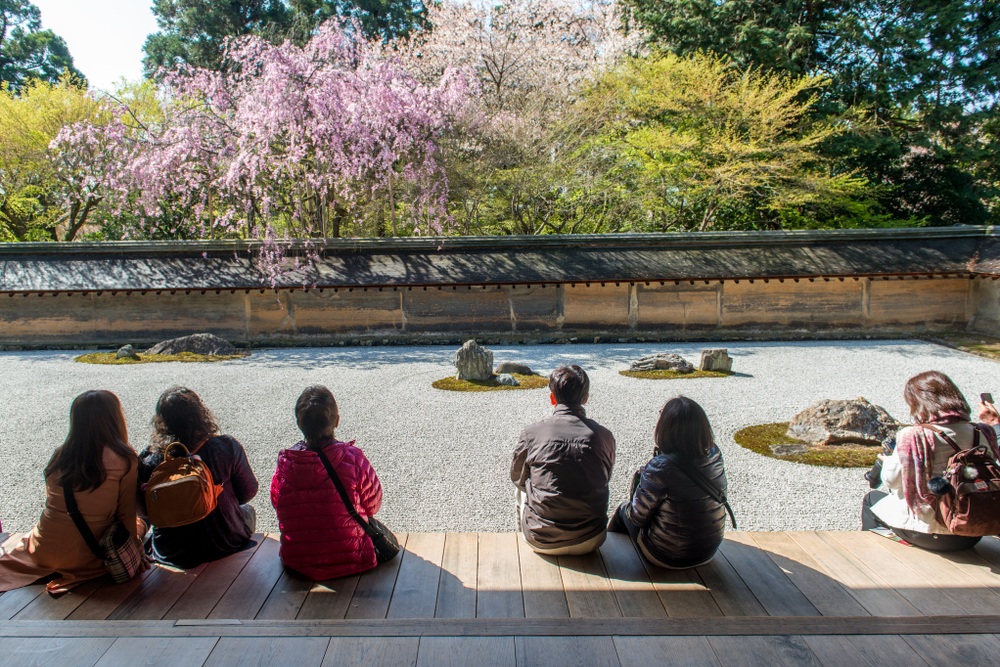
Ryoanji Zen garden
Drop by the zen garden when you visit the Golden Palace. This is a UNESCO World Heritage site and the most calming zen garden in my opinion.
Ryoanji means the “Temple of the Dragon at Peace”. It became internationally famous after Queen Elizabeth visited the temple in the ’70s. This zen garden has 15 rocks placed in a rectangular area but mysteriously you cannot see all 15 at once from any vantage point. It is presumed that the circles on the sand represent waves, small rocks represent hills, big rocks represent mountains and the moss represent the forest on an island.
Don’t forget to check the historic water basin in the backyard! Maikoya also has a walking tour available if you prefer to have a guide.
Besides the garden and trails around the area, you can also try the Yudofu or boiled tofu, which is a Kyoto specialty, or order drinks and other dishes.
#14 Kifune Shrine
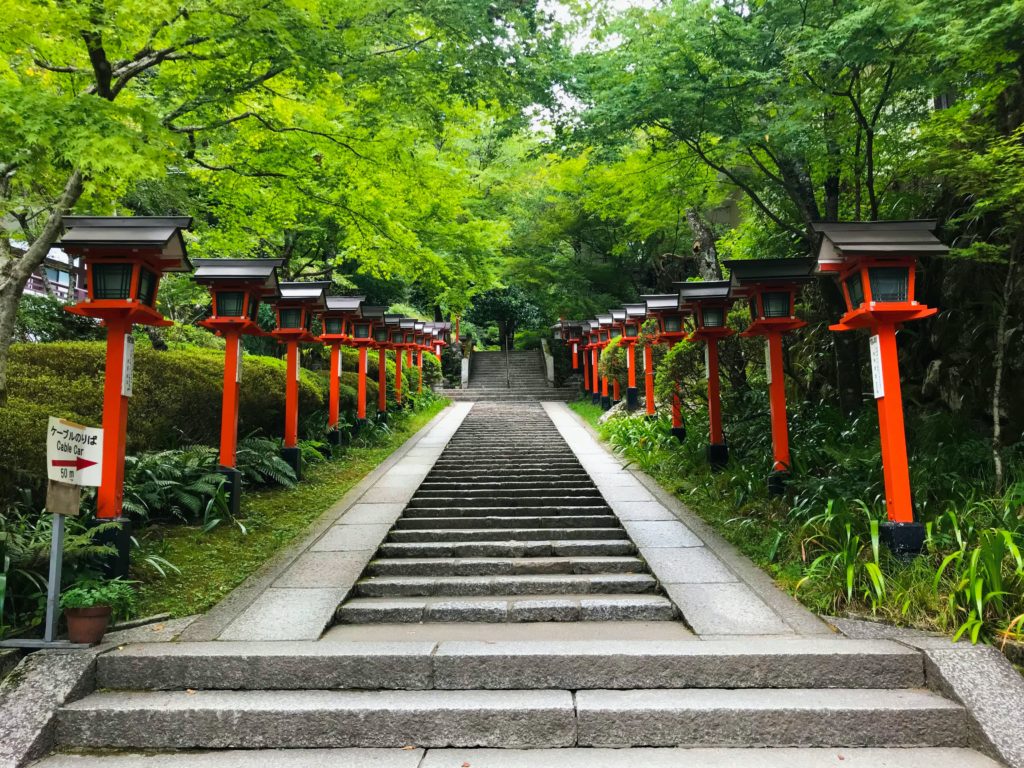
Photo by yoshie yokouchi on Unsplash
The Kifune Shrine is not in the city and located far from the downtown area! This site is not usually found in popular guide books because it’s a little out of the way. However, I highly recommend visiting as most of my guests enjoy their time here! During winters, you can have an amazing view of the orange lanterns in the snow. For the spring and summer seasons, you can have a picnic in the floating cafe.
This is a fun way to enjoy the view of nature as you try the local cuisine and Japanese sweets.
The floating cafes are best experienced during spring and summer!
#15 Try Traditional Japanese Calligraphy and Ikebana

Calligraphy – Shodo – Class in Kyoto
The Shodo calligraphy is used as a zen training method at temples.
Visiting the cultural capital of Japan, you’re sure to find even locals wearing kimonos and practicing traditional arts. One of the most prominent activities you’ll find is “Shodo” or Japanese Calligraphy, and “Ikebana” or flower arrangement. These two activities are not just hobbies to learn, they are also used as a form of Zen training.
In Shodo, it is believed that what comes out of your brush is your true spirit from how you make brush strokes on paper and so on. Japanese monks would often try to achieve satori or enlightenment by drawing Zen circles.
Ikebana, although on the surface may just be flower arranging, considers the aesthetic appeal of Zen and balance. This can range from the colors and angle degrees of the branches.
Both of these activities are great for bonding with friends, families, and couples!
You can book a shodo and ikebana class in advance at Maikoya!
#16 Nijo Castle
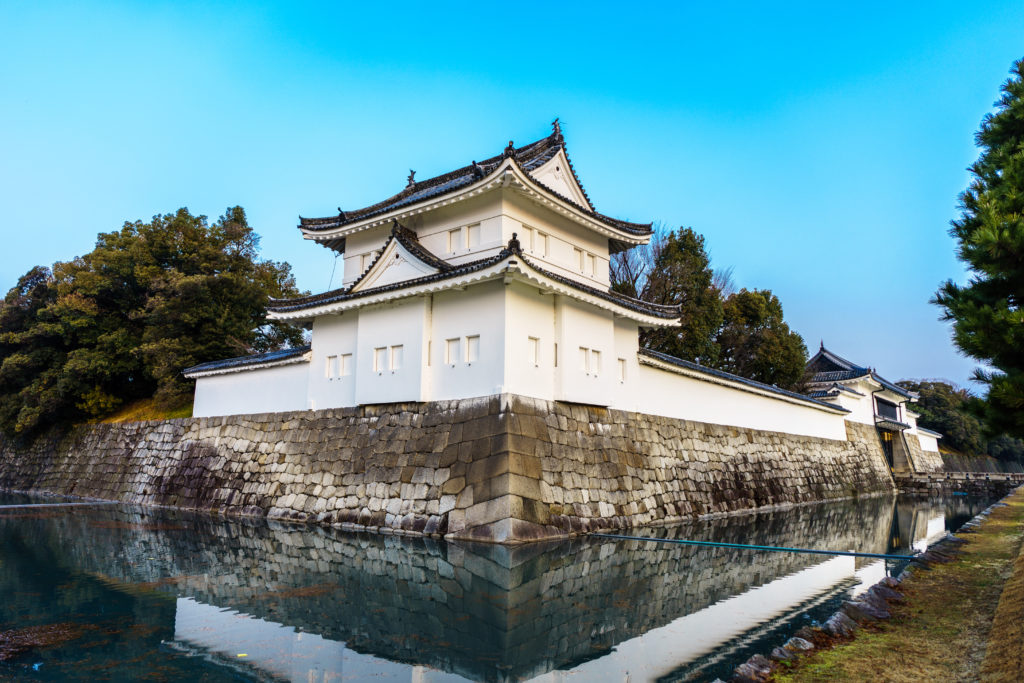
Nijo Castle
N ijo Castle (二条城) was built in 1603 at the start of the Edo Period and served as a residence of the Tokugawa Shogunate until it ended in 1867.
The castle is unique as it looks more like a temple than a typical castle. The reason for this unusual design was because it was built during peacetime, so there was no need for big keeps and an observation tower. If you come to visit, however, you may find that the floors squeak everywhere, no matter how light you are! This was specially made to detect any sneaky ninjas from raiding the castle at night while everyone is sleeping.
The castle closes early at 4 PM so make sure you visit by 3 PM at the latest if you plan on exploring! The Japanese garden requires a separate fee.
You can walk to the Imperial Palace from Nijo castle in less than 20 minutes. There is a convenient ramen shop right next to the Nijo castle.
#17 Kyoto KAISEKI Meal
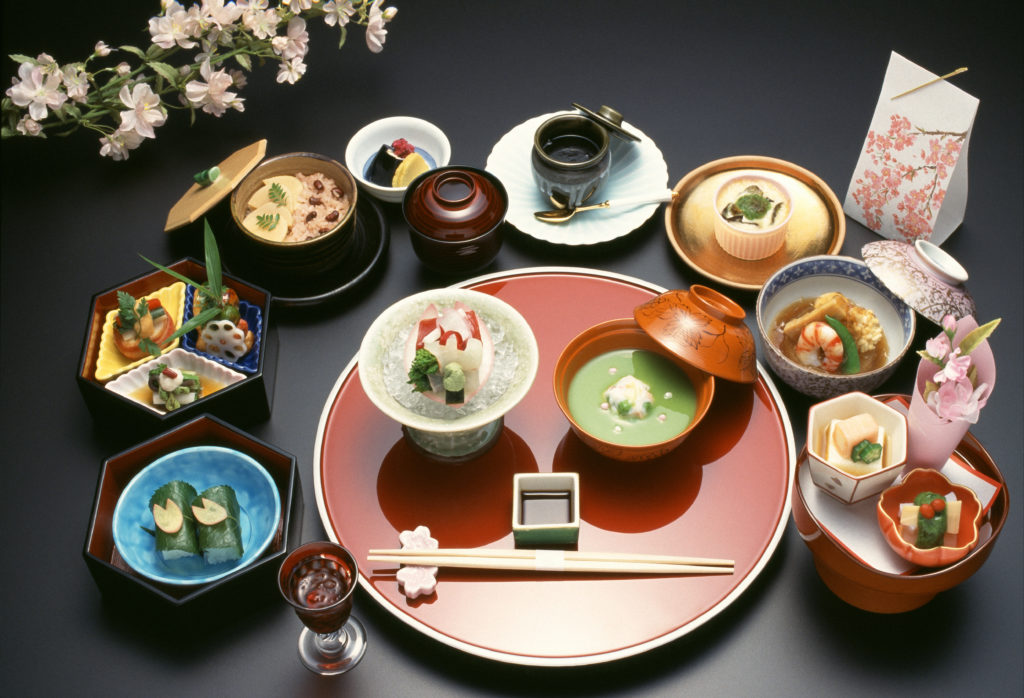
Kaiseki Meal in Kyoto
The kaiseki or kaiseki-ryori is a traditional multi-course Japanese meal. It was recently added as a UNESCO Intangible Cultural Heritage , as a valuable experience in Japan. Kaiseki meals are known to be a great way to experience the seasonal flavors of the country, as well as to enjoy the aesthetic arrangement of the ingredients.
Typically, kaiseki would be composed of:
- 5 different types of cooking (raw, simmered, fried, grilled, boiled)
- 5 different tastes (salty, sour, bitter, sweet, savory)
- 5 different colors (white, brown, red, yellow, green)
- Many different seasonal elements (leaves, flowers, mushrooms, etc.)
Kaiseki meal usually costs more than 100 USD but if you stay at a ryokan, you can get it cheaper as part of your room plan. You can also reserve kaiseki meal in downtown Kyoto here
#18 The Ginkakuji and the Philosopher’s Path #1 SPOT during the SAKURA SEASON
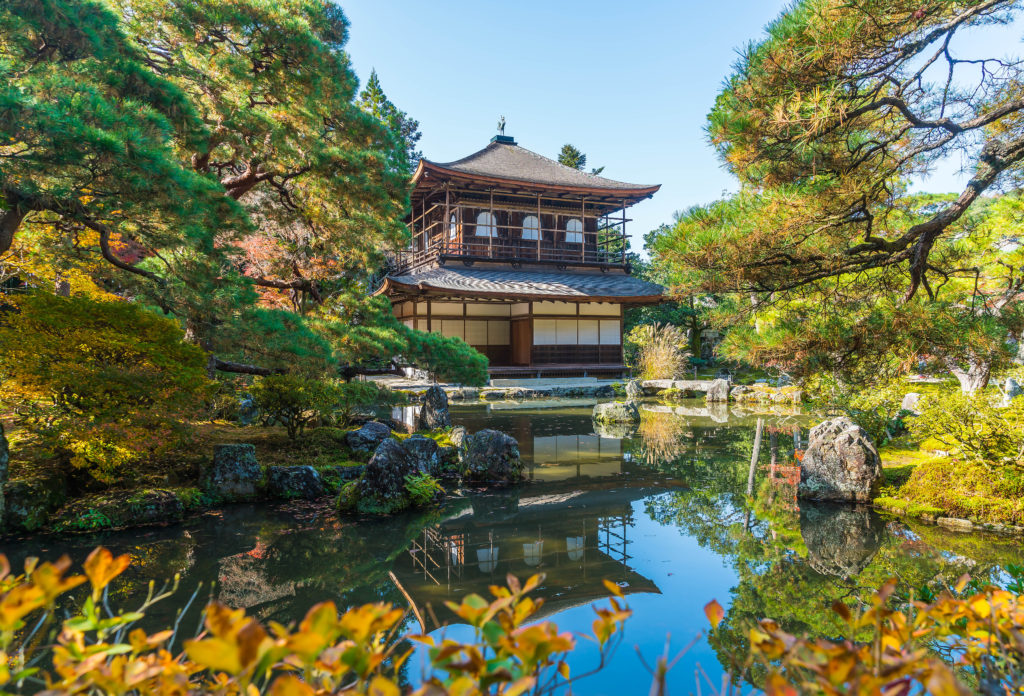
Also known as the Silver Pavilion , the Ginkakuji is a Zen temple located along the eastern part of Kyoto in Higashiyama. The villa was modeled after the Kinkakuji, and built as the retirement home of Ashikaga Yoshimasa. After Yoshimasa’s death, the residence was converted into a Zen temple in 1490.
Although you can reach the pavilion by bus, I highly recommend walking along the Philosopher’s path from Nanzenji especially in the spring.
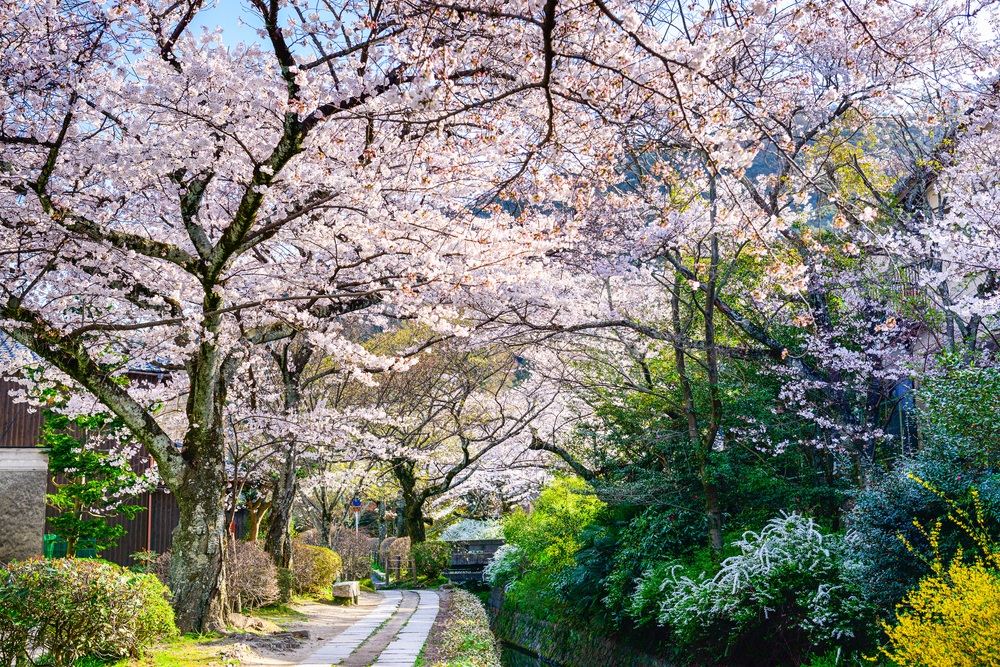
Philosopher’s Path during the Cherry Blossom
The Philosopher’s Path connects the Nanzenji to the Ginkakuji and is a great sightseeing spot on its own especially during spring when the cherry blossoms bloom along the walkways and the creek.
This sightseeing spot is best visited during the cherry blossom season in the spring, so make sure you time your visit!
#19 Sanjusangendo 1000 Buddhist Statues
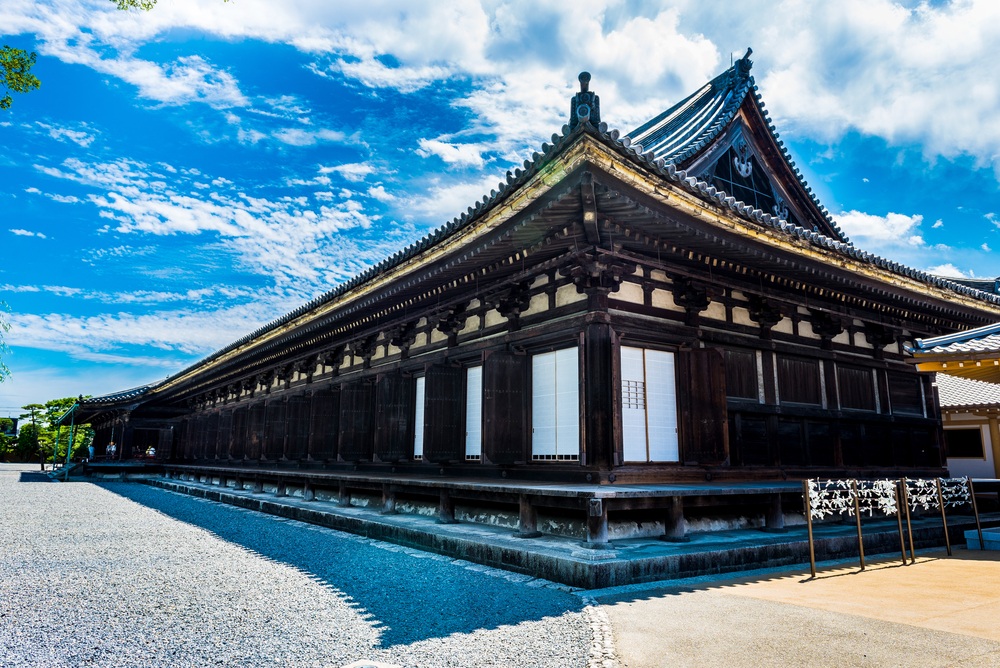
Sanjusan Gendo , 1000 Statues
Sangusangendo , unlike most Buddhist temples in Japan, does not have a lush landscape with perfectly maintained hedges. The temple is home to 1001 statues of Kannon, the goddess of mercy. The structure is the longest wooden temple in Japan, measuring up to 120 meters.
If you want to learn about Buddhism and if you only have one day then this is it. First, there are 1000 Cannon statues protected by 28 heavenly kings and also 2 Nio statues, the Raijin and Fujin. The long hall was originally built in the 12th century making it one of the oldest wooden structures in the world.
The place is right across from Yogen In where you can see the 400-year old samurai blood stains on ceilings. The place is near Kyoto’s National Museum and not too far from the Kyoto Station.
#20 Train like a Ninja in the KYOTO NINJA MUSEUM
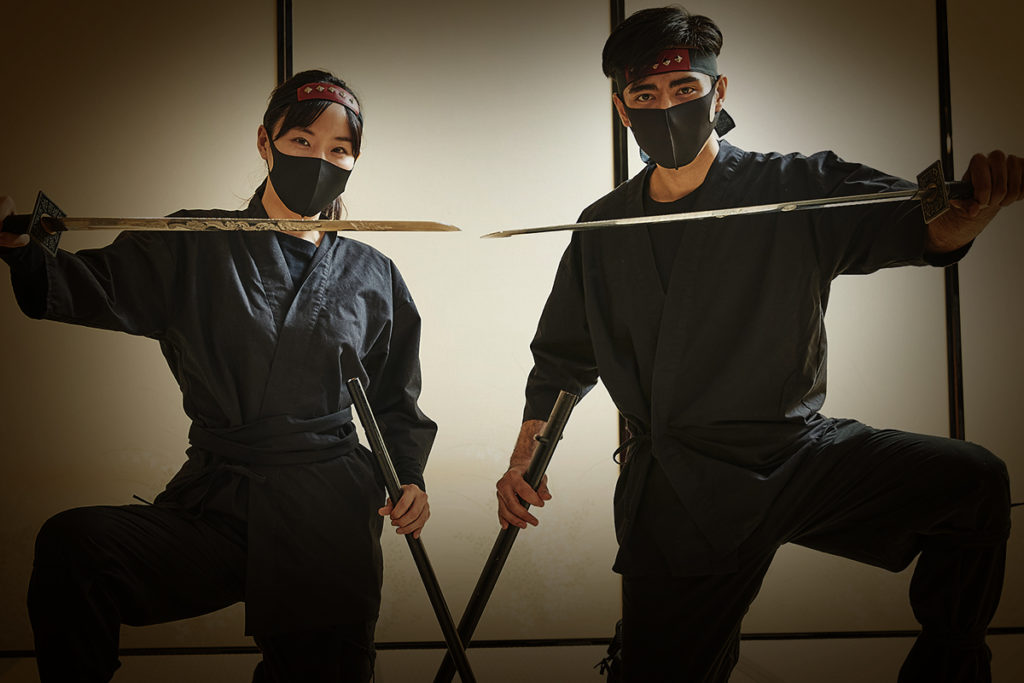
Dress up like a ninja, use a blow gun and throw ninja stars!
The Samurai & Ninja Museum is one of the only experience-based museums in Kyoto and Japan. You can try a variety of activities here from trying on samurai armor to using model ninja weapons!
The ninja tradition was born on the skirts of Mount Hiei which is in Kyoto. There were many ninjas living in Kyoto who frequented the Nijo Jinya, next to the Nijo castle during the Edo period. The Samurai & Ninja Museum near the Nishiki Market is one of the best places you could go that keeps the ninja traditions and stories alive.
They have a selection of activities, some of the best selling tickets are:
- Samurai & Ninja Museum Basic Ticket
- Ninja Experience for Kids and Families in Kyoto
- Ninja Experience in Kyoto for Adults SPECIAL Authentic Ninja Training Lesson
You can book your ticket at the museum in advance here and skip waiting in line during peak seasons!
#21 Imperial Palace Park
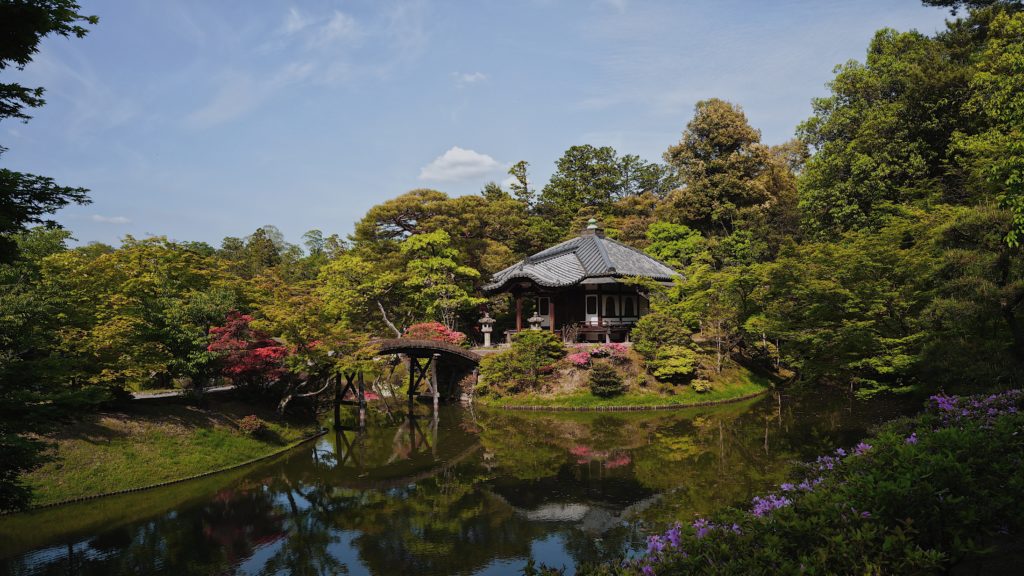
Photo by Kaito Kinjo on Unsplash
The Kyoto Imperial Palace (京都御所) served as the residence of Japan’s Imperial Family until 1868 when the capital moved to Tokyo. It is surrounded by the Kyoto Imperial Park or Kyoto Gyoen and located in the center of the city.
There are a number of small gardens at the park along with old buildings and villas. Locals would typically walk walks or go jogging at the park before 9 AM. Unfortunately, no one is allowed to enter the buildings.
There are guided tours available to explore the palace grounds. I would recommend this if you like to jog early in the morning or are staying in Kyoto for more than 3 days.
The park is also used for recreation including tea ceremonies at any of the four teahouses.
#22 Animal Cafes: Baby Pig Cafe or Cat Cafe or Owl Cafe
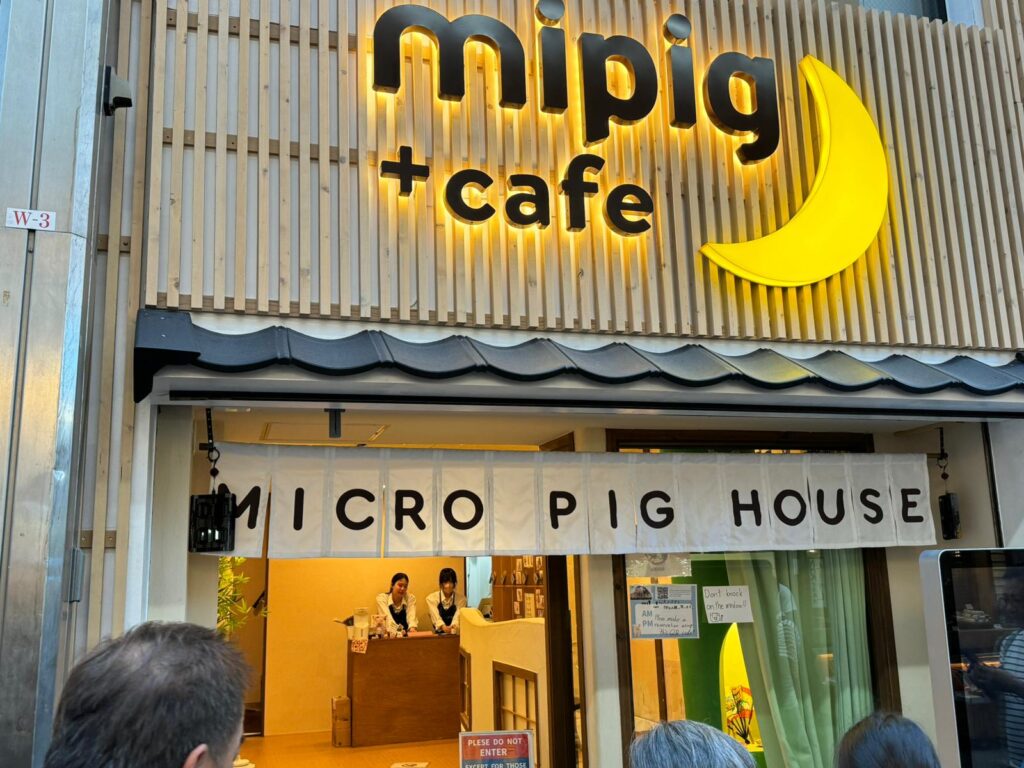
Animal Cafes are especially popular in Japan, and Kyoto is one of the places where you can visit them!
The baby pig Cafe is one of the most popular spots in Kyoto. This features miniature Shiba Inus, a type of dog breed that descended from the regular Shiba Inu–like Hachiko in the movie and in the real story.
Although animal cafes are not necessarily a Kyoto-exclusive attraction, Shinkyogoku still features a number of them for animal lovers! You can find different themed spots like a cat cafe, hedgehog cafe, or owl cafe.
Even though the animals are well-taken care of, please remember that loud noises, and big gestures may scare or stress them. If you want to have a good experience, be sure to treat your new furry friends with respect and gentle touches.
This is the type of dog that appeared in the movie Hachiko. An interactive petting activity. 1st floor is crowded, 2nd floor is quieter and nicer. Online reviews are mixed: some reviewers claim it is very crowded and the dogs are not friendly.
#23 NINENZAKA
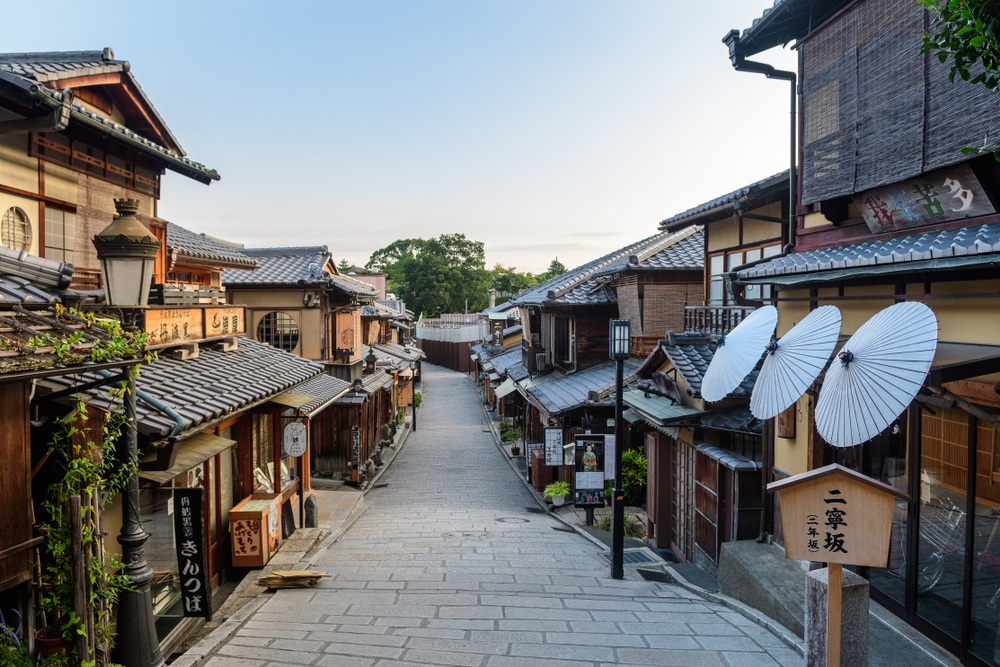
Ninenzaka Street near Kiyomizu Temple
Ninenzaka or “Two-year hill” is a paved pedestrian road in Higashiyama where you can find traditional buildings and antique shops! If you’re interested in more than just buying pottery, some shops will let you make your own bowl like the Kashogama Pottery School .
Ninenzaka is believed to help couples who are wishing for a healthy child and a safe delivery. If you’re wanting the same for yourself, make sure to walk down the cobblestone path on your way to the Kiyomizudera .
If you’re feeling parched for a cup of coffee, you can visit a Starbucks coffeehouse that’s set up in a 100-year-old traditional townhouse!
#24 Join a Sushi or Okonomiyaki Cooking Class
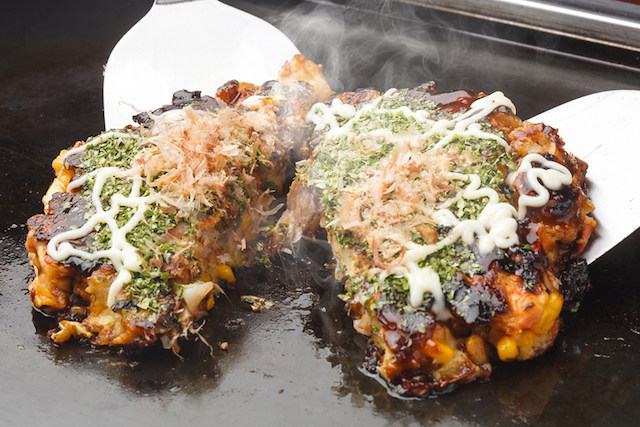
Okonomiyaki Cooking Class
If you have time, I would highly recommend booking a cooking class! There’s something more satisfying in making the local cuisine compared to just buying and snacking on them.
There are various cooking classes around Kyoto if you know how to look. Maikoya provides in-depth workshops that let you participate in the ingredient selection as well! Join the Nishiki Market Tour with Rolled Sushi Cooking Class Kyoto and learn how to make sushi from expert cooks, or Okonomiyaki cooking experience Kyoto .
Each of these classes will have you learning how to make the snack on your own from scratch. Surely you’ll be able to replicate the dishes at home and transport your taste buds back to Kyoto!
Maikoya has a variety of traditional cooking classes available in Kyoto! Each one is hosted by an experienced instructor and you can even learn how to make traditional desserts for the Tea ceremony .
#25 Hunt for Forgotten Antiques
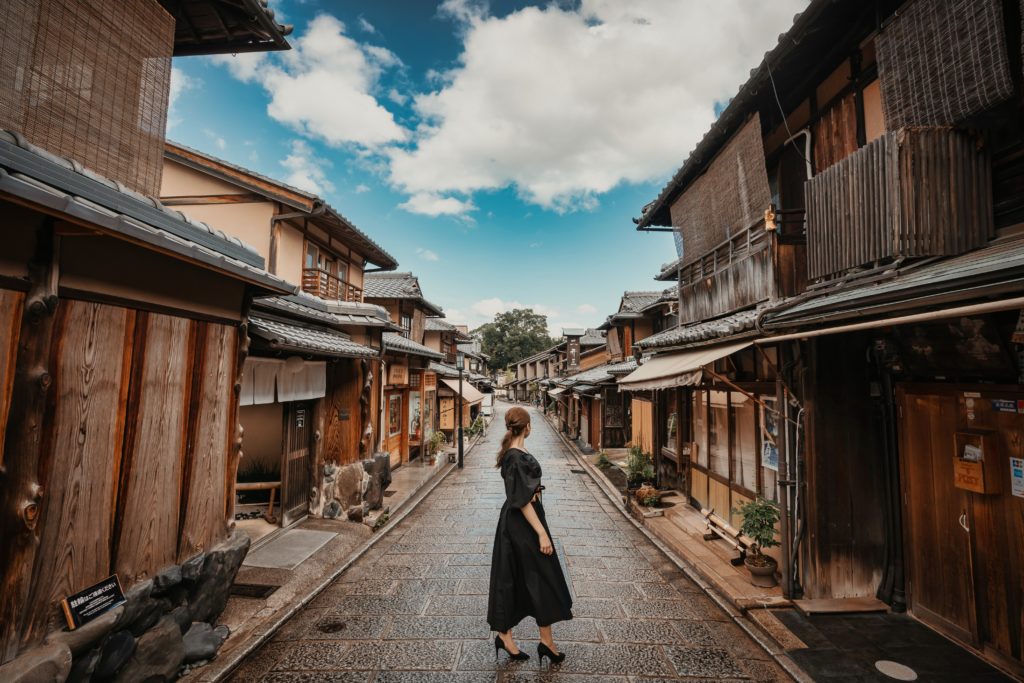
Photo by Koto Kyoto on Unsplash
Kyoto is an ancient city, making it the best place to go antique shopping! Besides Ninenzaka, Kyoto has a collection of historic neighborhoods that you can visit–one of my favorites is the Teramachi Street area between Oike and Karasuma.
If you like the Geisha district in Gion, I’m sure you’d also enjoy visiting the Kamishichiken area! This is the oldest geisha district and is home to the famous Kitano Tenmangu Shrine. The area is a lot like Gion but without the tourist crowds.
A more unique area is Yokai Street where you’ll find life-size monsters all over the street! It’s not a very large area but you can explore it with a quick walk around. The majority of the shops you’ll find here are secondhand and thrift stores that contain interesting knick-knacks.
There are a lot more places to find antique shops all over Kyoto! These are just some of the more visited and easy to navigate areas.
#26 See a Festival in Kyoto
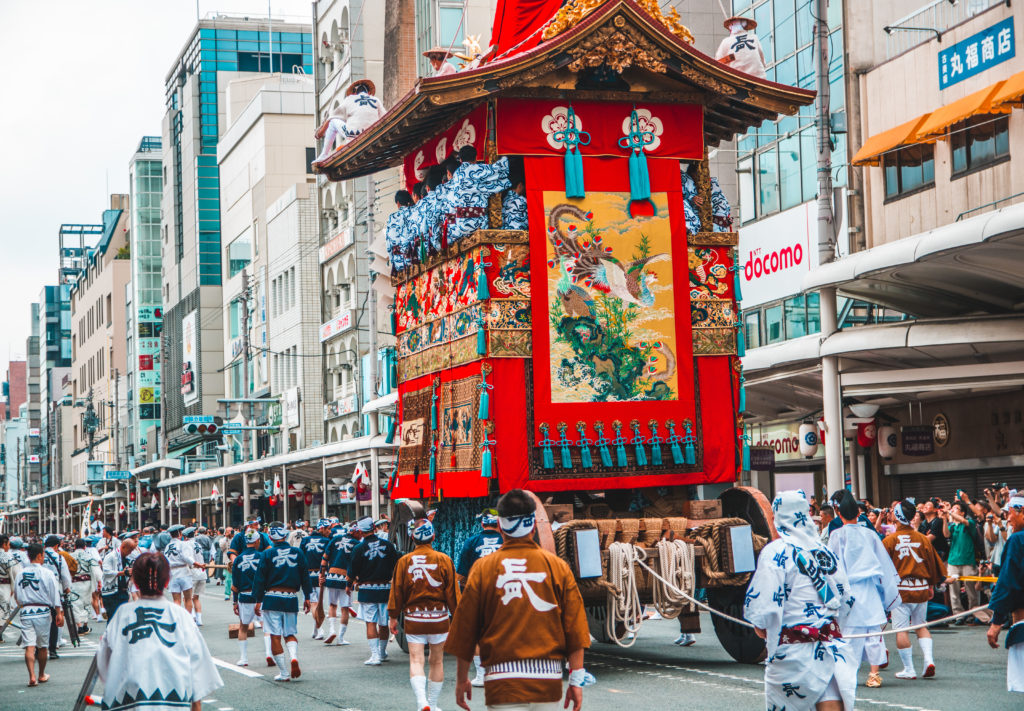
Japan has so many cultural traditions, and festivals are one of them! Similar to the ones you’ve likely seen in animes and pictures online, traditional festivals are regularly held to welcome the seasons and during significant dates in the area.
If you want to experience this in Kyoto, you should try to schedule your trip around them! The biggest festival is the Gion Matsuri as pictured above, which lasts almost 2 weeks in July . Thousands of locals would participate in this, wearing traditional outfits.
There are a number of festivals around Kyoto. Here are some of my recommendations if you want to plan your itinerary around them:
- In February, the Yasaka shrine hosts the Setsubun festival where you’ll see the Maiko and Geisha perform for crowds of spectators.
- On May 15 people dress up as aristocrats, walking from the Imperial Palace to the two main Shinto Shrines in Northern Kyoto.
- In April, there is a month-long festival called the Miyako Odori festival where you can watch Maiko and Geisha perform a dance.
- On August 16, there is Gozan no Okuribi where you can see giant kanji–shaped bonfires on the mountains surrounding Kyoto. This is to greet the spirits who come to visit the mortal world for a day in mid-August.
- In October, the Jidai Matsuri is held at the Heian Jingu Shrine and people would dress as major historical figures.
- In November, there is a number of festivals in Kyoto that celebrate the beginning of autumn.
As expected, these festivals would normally be attended by crowds of locals and tourists. Make sure you pack your essentials in an easy-to-carry bag and that it’s not heavy! Also remember to come to these festivals early so you get the best view.
#27 Yakiniku
Yakiniku is as much of an experience as it is a delicious dish. Similar to popular restaurant trends, you will get to grill prepared meat and vegetables at your table! This is also commonly referred to as Japanese Barbecue. A grill is normally installed into the middle of the table, making it safe for everyone including kids.
#28 Shabu-Shabu
Shabu-shabu is one of the internationally beloved Japanese dishes. It is a popular hot pot dish where you are normally served with thinly sliced raw meat and vegetables that you cook at your table in steaming hot broth. This is a great way to enjoy time with good company as you wait for your meal together.
#29 Nabe (Japanese hot pot)
Nabe or Nabemono is another variation or Japanese hot pot. Nabe can contain just about anything from vegetables, tofu, and meatballs that you boil in a cooking pot at the table. This is the dish that sumo wrestlers usually eat before the tournaments.
#30 Okonomiyaki
Unlike the cooking classes mentioned before, most okonomiyaki served in restaurants are prepared by a server. Restaurants normally feature table-side cooking where staff would prepare the dish right in front of you and use a hot steel plate called a teppanyaki.
#31 Zauo Fishing Restaurant
Although this experience is not in Kyoto, I highly recommend trying Zauo! It’s a short train ride to Osaka and you can catch your own fish which the restuarant will prepare for you as sashimi or any dish you prefer. This is also cheaper, and you can’t ask for a fresher catch!
#32 Kani Doraku Kyoto Honten
Kani Doraku is one of the most popular restaurants in Kyoto. They specialize in crab dishes, from crab hot pot to snow crab legs! They also serve a variety of other seafood and crustaceans. This is a great stop for foodies and lovers of succulent crab meat.
#33 Menbaka Fire Ramen
Although ramen is fairly common, this restaurant offers an extraordinary experience for guests. This small traditional restaurant is the only place in the whole world that you can get a fire show while watching the chefs prepare a fierce noodle dish for you.
As this is a popular attraction, make sure you get there early as they don’t accept reservations!
#34 Kushikatsu
Indulge in snacking on popular deep-fried street food like meat, fish, and vegetables on sticks served to your table and you get to chose toppings on your own at your table.
Things to do in Kyoto at Night
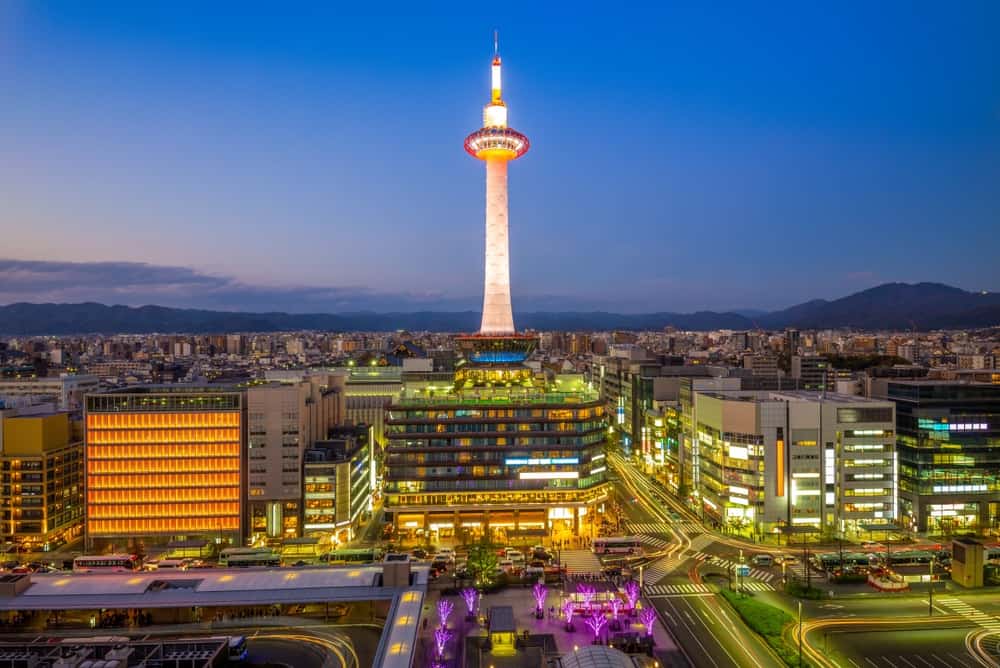
Kyoto Tower at Night
There are not many night activities geared toward tourists other than some kabuki performances at the Minamiza theater. However, you can do many things at night in Kyoto including but not limited to:
- Romantic walk by the Kamo River
- Meeting locals at HUB pub or other bars at the Pontocho entertainment district
- Walk in the Gion geisha district
- Try some theme cafes such as bluefish cafe/bar where you can touch baby sharks
- Wander in the temple gardens illuminated at night
- Go to the observation deck of Kyoto Tower and view the city lights
- Try some rooftop cafes such as my favorite, in the moon
Non-Touristy Things to do in Kyoto
Most people have jobs and work hard, so usually, people mostly hang out on weekends. Families who have a car can go to theme parks or fruit-picking and tea-planting farms outside the city.
City dwellers tend to go to the AEON shopping mall or the Teramachi shopping street just to enjoy window shopping. Young couples go to theme cafes in nearby cities (Nara, Osaka, Kobe).
Youngsters also enjoy karaoke at Jankara and bowling at Round 1.
MOVIX is another popular spot as it is the largest movie theater in Kyoto. MOVIX is surrounded by game arcades and a pachinko parlor (legalized arcade game-based gambling hall). People who are into sports, run by the Kamo river or go see sporting events such as soccer games or baseball games. People who are about to graduate from high school visit various universities for open-campus events. People who like reading go to libraries and bookstores.
The BAL/Maruzen bookstore in the downtown area has a great selection of books in English. Also every weekend there is a special exhibition, festival, or ceremony at certain temples and shrines. You can find out most local activities here on this website by using google translate.
KYOTO FACTS
- What does Kyoto mean? It means “capital city”
- What is the population of Kyoto? 1.5 million (foreigners are 2% of the population)
- How many Geisha (Geiko or Maiko) are there in Kyoto? Fewer than 200
- What is Kyoto’s original name? Heian City (became capital in 794 AD)
- Where is the Kyoto Airport? There is no “Kyoto Airport.” The closest airport in “Kansai airport” which is in Osaka. The Kansai airport is 45 KM away from Kyoto.
- How many UNESCO world heritage sites are in Kyoto? 17
- How many temples are there in Kyoto? 1600
- How many shrines are there in Kyoto? 800
- How many tourists stay in Kyoto? 13.2 Million (2019), 5.17 Million (2021)
- Best sushi in Kyoto: Musashi sushi . Not the best or cheapest but a decent place with a decent price and fresh sushi.
- Best ramen in Kyoto: Ippudo ramen . Not the best ramen but a decent place with an easy-to-understand menu with an affordable price.
- Best steak restaurant in Kyoto: Gion Karoku . Not the best steak restaurant but a decent yakiniku place in the historic geisha district where I take my guests. It is a bit pricey.
- Best izakaya in Kyoto: Ganko Sanjo Honten near the Sanjo bridge. There are also many good izakayas on Kiyamachi Street.
- Best Vegetarian restaurant in Kyoto : Ain Soph with unique vegan burgers.
- Best Halal food/restaurant in Kyoto: Istanbul Restaurant with a good selection of Mediterranean dishes.
- Best Italian Restaurant in Kyoto: Pizza Salvatore Cuomo Pizza & Grill . Definitely not the best but a decent place with decent price located by the river.
- Best Rooftop bar in Kyoto: In the Moon by the Kamogawa River.
- What is the climate of Kyoto like? Cold in the winter, hot in the summer. It snows in December and January. It rains in half of July.
- What is the terrain of Kyoto like? There is no sea or ocean in Kyoto. Kyoto is surrounded by tall mountains.
- What are the local sweets of Kyoto? Yatsuhashi (sweet beans paste in rice flour)
- What is the local dish of Kyoto? Obanzai (combination of small dishes mostly made out of vegetables grown in Kyoto)
- How far is Kyoto from other cities? Kyoto is 15 mins from Osaka, 30 minutes from Kobe, 45 minutes from Nagoya, and 2.5 hours from Tokyo (by bullet train).
- What are the famous companies in Kyoto? Nintendo, Kyocera (Kyoto Ceramic), Wacoal
- What are Kyoto local dialect phrases? Ookini: thank you; Oideyasu: Welcome…
- The cultural capital of Japan. There are fewer earthquakes in Kyoto and Kyoto was the only major city that was not bombed during WW2 since the war minister in the US had spent his honeymoon in Kyoto and really liked the city.
- Kyoto has the highest number of national treasures in Japan.
- Kyoto has the highest number of bakery shops per capita in Japan.
- Kyoto was modeled after the Tang dynasty capital in China.
- Kyoto has many old townhouses with gardens in the middle which are called “ machiya .”
- Kyoto is where the kabuki culture, geisha culture, kimono tradition, and the noh theater were born.
- In Kansai, Kyoto is known to be the place for education (there are many high-ranked universities).
- Japanese people consider Kyotoites a bit snobbish and conservative.
- Kyotoites are also known for their indirect communication style (it is believed that they never show their true face).
- People of Kyoto think the capital should be Kyoto, not Tokyo.
Kyoto Travel Tips
- Kyoto and Osaka are not far from each other (many Kyoto residents work in Osaka). You can stay in Osaka and still come to Kyoto every day during your visit.
- The downtown of Kyoto is not the Kyoto Station. The downtown area is near the Kawaramachi Station.
- The shopping district is Teramachi shopping Street . The souvenir shops and kimono shops are located on Shinkyogoku Street. The largest variety of electronics and cameras are found at Yodobashi Camera, a huge building right next to the Kyoto station.
- JR pass is not a great option in Kyoto as you either have to ride a bus or take the subway. If there are 3 or more people in your group, taking a taxi is usually a good option. UBER is not common in Japan and I usually use Didi and JapanTaxi instead. Both apps work just fine and have good rates.
- There are very few public bathrooms in Kyoto, always remember these 3 spots to find a bathroom: convenience stores, train stations, and franchise stores such as McDonald’s and Starbucks.
- There are very few public trash bins in Kyoto, always remember these 3 spots for public garbage can: convenience stores, train stations, and franchise stores such as McDonald’s and Starbucks.
- If it suddenly rains, or it gets too hot/cold, then you may want to go to the Teramachi shopping area where there are so many shops, cafes, and flea markets in a covered area.
- During the Sakura (Cherry blossom season) everywhere gets so crowded, but you can enjoy the city by going to any zen garden I listed above.
- Although it is changing, many shops still do not accept cards especially in the Nishiki market , so please always carry some cash.
- In Kyoto, store owners usually don’t jack up prices in tourist areas, so feel free to buy souvenirs anywhere.
- Always pick a young person to ask for directions . If you write what you are trying to say on a piece of paper, many people can understand you.
- Always pick the oldest person to complain about something. In Japan hierarchy almost always depends on age.
- If you have a heavy backpack you can always put it in the lockers available at every train station .
- The nearby cities are closer than you may think . You can go to Osaka in 15 minutes, Kobe in 25 minutes, and Nara City in 40 minutes.
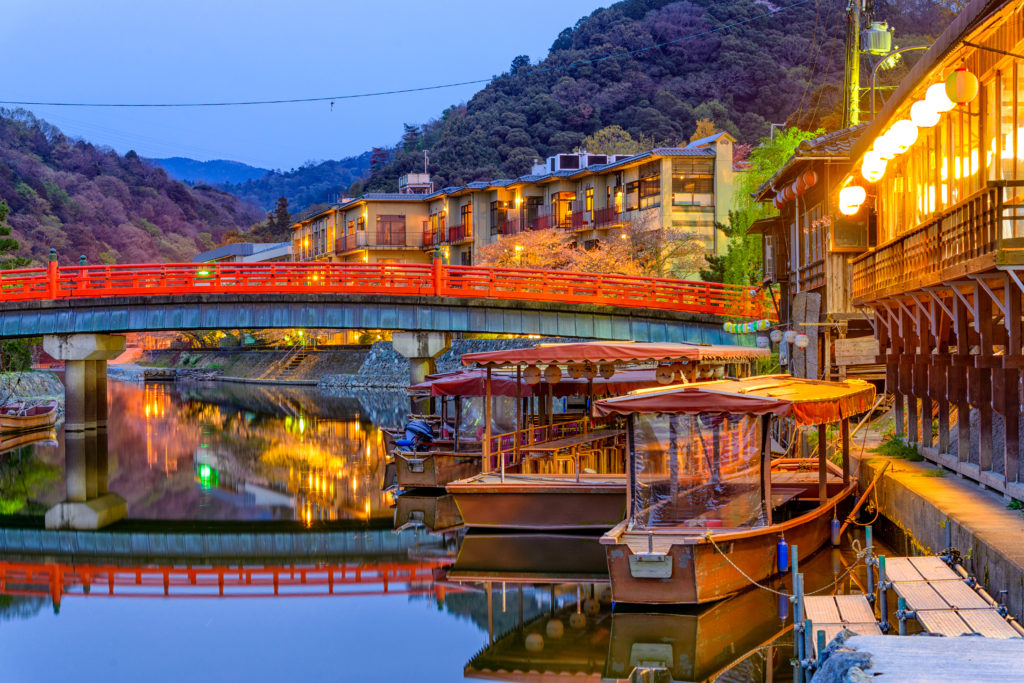
Uji, Kyoto Prefecture, Japan on the Ujigawa River
People would often ask me what they should do or see in Kyoto but I will always give the same answer: It depends on your personality and taste! There’s a little something for everybody in Kyoto whether you prefer experiences over sightseeing, being a tourist and experiencing the ancient city like a local.
Take your pick from any of the things I listed from the common tea ceremonies and kimono wearing to picnicking at the beautiful gardens and parks.
WELCOME TO MY HOMETOWN KYOTO: OIDEYASU!
- Culture Research
- Japanese Culture
- Japanese History
- Harakiri and Suppuku
- Tea ceremony Kyoto
- Geisha Tea Ceremony
- Ninja Experience & Samurai
- Kimono Wearing Experience
- Geisha Experience
- Cooking Class Kyoto
Contact us : [email protected]
Readers of this article also read
6 best massage places in kyoto.
Kyoto offers many travel opportunities and sightseeing areas for any local and international tourist to enjoy, from it’s famous Bamboo Grove in Arashiyama to the traditional and picturesque architecture in Gion District. Massages are a great way to refresh the body as well as treat and pa

8 Best Spas in Kyoto
Kyoto offers many travel opportunities and sightseeing areas for any local and international tourist to enjoy, from it’s famous Bamboo Grove in Arashiyama to the traditional and picturesque architecture in Gion District. Going around on foot is sure to be taxing on any traveler, no matter

6 Best Public Baths and Sento in Kyoto
Sento, or public baths, are fairly common and are easily found around the communities in Japan. The beginnings of this tradition can be traced back to the Heian Period in 794-1185, but the first proper public bath was built in Tokyo, formerly Edo, in 1591. This practice became popular

9 Best Photography Studios in Kyoto
Japan is a country full of traditional relics and advanced technology, balancing two different factors at the same time. It is also a place full of tourist attractions and sought-after cuisine. Kyoto is especially known for being the cultural capital of Japan. Most of its destinations are listed

Pontocho Kyoto
Ponto-chō (先斗町) is known either as a street, alley, or district in Hanamachi. There is a saying that “Pontocho” is a combination of Portuguese and Japanese words. Pontocho was said to be from the words “Ponte”, the Portuguese for “bridge”, and “cho” the Japanese for either blo
KIMONO TEA CEREMONY KYOTO MAIKOYA at NISHIKI
Kimono tea ceremony tokyo maikoya, kimono tea ceremony kyoto maikoya at gion kiyomizu, samurai & ninja museum with experience.
Kyoto Travel Guide
Courtesy of Piriya Photography | Getty Images

15 Best Things To Do in Kyoto
Updated Apr. 24, 2024
Kyoto receives scores of visitors each year and crowds can be overwhelming at many of the city's top attractions. But never fear: A bit of planning can yield introspective experiences in peaceful atmospheres. Climb the well-worn steps of a Shinto
- All Things To Do

Fushimi Inari Shrine Fushimi Inari Shrine free
As far as Shinto shrines go (there are about 400 in Kyoto), this one is pretty special. Perched on a wooded hillside in southern Kyoto, Fushimi Inari is a 1,300-year-old temple dedicated to Inari, the Shinto deity of rice and sake (Japanese rice wine). The shrine complex dates back to the eighth century, but it's not the star of the show. Most visitors come for the close to 10,000 red and orange lacquered torii gates that line the 2 ½-mile-long path up Mount Inari, where the shrine sits. Sometimes in dense rows and other times more staggered, the gates are all engraved with the names of Shinto devotees who donated them.
It takes about three hours to make the trek up the mountain, and some recent visitors say that the hike is mildly strenuous, but almost all agree this is a must-see spot in Kyoto, especially for first-time visitors. Plus, travelers report that there are plenty of places to stop and rest along the way. Peer at the dozens of stone and bronze foxes that line the paths along with the gates (foxes are thought to be Inari's sacred messengers). Or stop in to one of the tea houses or restaurants situated on the path, which serve udon noodle soup and sushi. Because crowds are drawn to their picturesque beauty, Fushimi Inari's trails can get quite congested during the day. To avoid the multitudes, opt for an evening stroll up the mountain – recent visitors say the pervading quiet coupled with the fading light filtering through the trees and torii gates makes for an eerie and spiritual experience. Early morning is another optimal time to experience the shrine sans the crowds.

Kiyomizu-dera Temple Kiyomizu-dera Temple
Situated on Otowa Mountain in eastern Kyoto, Kiyomizu-dera Temple wows travelers with its stunning natural scenery, which visitors say is best viewed from the verandah off the temple's main building. The "stage," as it's called, sits atop huge pillars more than 40 feet above the hillside and affords visitors panoramas of the surrounding forest. Those views are even more beautiful in the spring when the cherry blossoms are in bloom or in the fall with the changing foliage. When you're done taking in the temple's surrounding beauty, you are invited to drink from the Otowa Waterfall, which gave the temple its name ( kiyomizu means "pure water"). The waterfall is divided into three streams, each of which is said to bring longevity, academic success or love, respectively. But according to temple etiquette, drinking from all three streams is bad luck, so don't be greedy.
Also within in the complex is the Jishu Shrine, a red-lacquered temple dedicated to Okuninushi-no-mikoto, the Shinto god of love. Visitors who can successfully walk between two stones outside of the shrine with their eyes closed (the stones are about 20 feet apart) will supposedly have their love-related wishes granted. Along with toying with their fates, recent travelers also enjoyed the souvenir shops found along the path to the temple. Many visitors insist that Kiyomizu-dera Temple should be on every Kyoto traveler's to-do list.

Gion Gion free
Recent visitors to Gion were in awe of its quaintness (though some travelers note that hordes of camera-wielding tourists can detract from the scenery). This neighborhood is known for its charming historic features: historic tea houses, willow-lined roads, kaiseki (Japanese haute cuisine) restaurants, wooden ryokan (Japanese guest houses) and shops selling local crafts and antiques. But all of those things are secondary to Gion's real source of fame – the geisha. Visitors to Gion may catch a glimpse of these extravagantly dressed women flitting between tea houses on wooden-sandaled feet.
Contrary to western belief, geisha are not prostitutes. A geisha's primary role is entertainment; she is hired to provide diversions at dinner parties and banquets in the form of singing, dancing, games and conversation. But they are more than mere performers: Geisha are living, breathing gatekeepers of ancient Japanese culture. They train from an early age in traditional Japanese art, dance and music, and perform at exclusive dinners in ochaya (tea houses), usually only for locals. While tourists can arrange geisha dinners as well, it will put quite a dent in a travel budget. Hiring one geisha for the evening with dinner for two can cost about 103,000 yen (about $900) or more. A less costly way to see Gion's geishas in action would be to check out the daily geisha performances at the Gion Corner theater, which cost 3,150 yen (about $28). Or, if you're visiting during April, you can catch the Miyako Odori dance festival – geisha dance performances, which are held four times daily during the festival at the Gion Kobu Kaburenjo theater, cost between 4,000 and 5,500 yen (about $35 to $48) per person. You may also see geisha strolling through the neighborhood; keep a polite distance and refrain from photographing them without explicit permission.

Popular Tours

PERFECT KYOTO 1Day Bus Tour
(2902 reviews)
from $ 114.58

Private Kyoto Tour with a Local, Highlights & Hidden Gems, Personalised
(880 reviews)
from $ 121.47

Ramen Cooking Class at Ramen Factory in Kyoto
(450 reviews)
from $ 108.43

Arashiyama Arashiyama free
Arashiyama is a quaint neighborhood surrounded by trees and mountains on the western edge of Kyoto. The neighborhood's most iconic landmark is the wooden Togetsu-kyo Bridge, which has spanned the Katsura River since 1934. It makes a great spot for admiring cherry blossoms or changing fall foliage, depending on the season, though some visitors seem less than impressed with the bridge. If you want to avoid the tourist crowds that congregate on the bridge, consider renting a paddle boat to enjoy the scenery from the water. On either end of the bridge are a number of shops, restaurants, temples and gardens to explore. Some recent visitors enjoy walking around and taking in the sites, but others suggest renting a bike. You can get one for the day for around 1,000 yen (about $9) near train stations in Kyoto.
A visit to Arashiyama can be overwhelming, as there is so much to do and see here. It's best to arrive with a plan of action, and to not try to fit too many activities into one day. For example, you won't want to miss a stroll through the area's lush, peaceful bamboo groves, which recent visitors highly recommend. Once you're through the bamboo, you'll find yourself at Okochi Sanso Villa, a beautifully landscaped former residence of Japanese actor Okochi Denjiro. You can tour Denjiro's mossy, manicured gardens daily from 9 a.m. until 5 p.m., and the admission price of 1,000 yen (about $9) includes matcha green tea and cake (make sure you keep your admission ticket to enjoy this).

Ryoanji Temple Ryoanji Temple
Every day, hundreds of people visit Ryoanji Temple to see its Zen rock garden – which is probably the most famous of its kind in Japan. Located in Kyoto's northern outskirts, the temple was built in 1450, but details surrounding the rock garden's origins are hazy. Its white pebbles, which surround 15 larger rocks, were laid sometime during the Muromachi period (between 1392 and 1573), but beyond that, the garden's origins are unknown.
From any vantage point, at least one of the garden's 15 rocks is obscured from view. But why? Visitors are invited to come to their own conclusions about the garden's deeper meaning. Along with viewing the rock garden, you can explore the temple's grounds, which include a 1,000-year-old pond fringed with lily pads and tree-lined walking trails. The garden, as well as the grounds, are among the Historic Monuments of Ancient Kyoto, which were designated by UNESCO in 1994.

Nishiki Market Nishiki Market free
For those unfamiliar with Japanese cuisine, a trip to Nishiki Market can be an overwhelming experience. This bustling, five-block-long covered market is lined with more than 100 stalls, each one hawking Japanese foods and specialty items that are hard to come by in the United States. With barely any English signage for reference, it might be difficult to determine what to buy or where to start. But just because Nishiki Market is busy and confusing doesn't mean you should avoid it. In fact, recent visitors said that's exactly why you should go, saying it's an essential food tour. Others pointed out that this is a great way to sample many different local cuisines without having to buy a whole meal.
The key here is to start small. Sample some authentic green tea or nosh on some nigiri (rice balls). After you've acclimated yourself to the flavors, you can work your way up to the unfamiliar: roe-stuffed squid, dried kelp or silky yuba (tofu-milk skin). Of course, connoisseurs of Japanese cuisine can feel free to jump right in, but Nishiki Market can also offer new eating experiences to old pros. Alongside the more traditional Japanese fare, you'll find some trendier shops like Konnamonja, which sells doughnuts and soft-serve ice cream that are both made from tofu (and reportedly delicious). One thing to note: You'll have to sit (or stand) to eat your food. Walking and eating is not permitted, according to recent visitors.

Nijo Castle Nijo Castle
After years of bitter strife, the aging samurai lord Tokugawa Ieyasu finally wrested power from Japan's many warring clans and unified them at the turn of the 17th century. Upon being proclaimed Shogun (feudal military dictator) of Japan in 1603, Ieyasu constructed a palace that would reflect his supreme power. Nijo Castle in central Kyoto was certainly ostentatious enough to fit the bill. Unlike other noble homes of the day, Tokugawa's gleaming white structure – decorated with ornate wood carvings – was built for show, not for defense. Even the palace's moat and inner wall stood not as defensive structures, but rather as examples of the shogun's exclusivity; only Japan's highest-ranking officials were allowed into the castle's inner sanctum.
That is not to say that Nijo lacked in protective properties entirely. Decades of war had instilled in Tokugawa Ieyasu a deep-seated paranoia, so he had "nightingale floors" installed in his palace. Designed to creak under even the lightest footstep, these floors prohibited anyone from walking through the Nijo Castle unnoticed. Travelers today can tread upon these fabled floorboards as they tour the inside of the castle, but visitors suggest wearing socks, as you'll have to remove your shoes to enter the building. Outside the palace is the lovely Ninomaru Palace Garden designed by famed landscaper and tea master Kobori Enshu. Recent visitors applaud the site’s excellent guided tours in English and say the castle and surrounding gardens are quite beautiful. However, because it is on every tourist's "must-see" list, the castle can get quite crowded. To enjoy your visit in peace, stop by just after opening or right before closing.

Sanjusangendo Hall Sanjusangendo Hall
At nearly 400 feet, Sanjusangendo Hall is the longest wooden structure in Japan (there are archery contests held along the length of the hall every yeah). And lining its lengthy walls is a rare full set of 1,000 wooden statues of Kannon, the Buddhist goddess of mercy. The human-sized statues were carved from Japanese cypress in the 12th and 13th centuries. Recent travelers are consistently blown away by Sanjusangendo and its statues, calling it an "amazing" and "thrilling" place to visit.
Sanjusangendo Hall is open between 8 a.m. and 5 p.m. from April through mid-November, and between 9 a.m. and 4 p.m. from mid-November through March. Visitors suggest arriving at Sanjusangendo early, as the hall is not well ventilated and only gets hotter and more crowded as the day goes on. Admission costs 600 yen (about $5.25) per person (half-price for children). To get to Sanjusangendo Hall, take bus No. 100, 206 or 208 from Kyoto Station to the Hakubutsukan-Sanjusangendo-mae stop. Alternatively, you can take the Keihan subway line to Shichijo Station (Sanjusangendo is about a 5-minute walk from there). The temple sits across the street from the Kyoto National Museum, and many visitors suggest stopping by both attractions. For more information, visit the official website (in Japanese).

Private Kyoto Tour with Government-Licensed Guide and Vehicle (Max 7 persons)
(109 reviews)
from $ 609.19

Private Kyoto Day Trip with English Speaking Driver
(31 reviews)
from $ 492.88

KYOTO Tea Ceremony with kimono near by Daitokuji
(99 reviews)
from $ 78.86

Philosopher's Walk Philosopher's Walk free
Honoring Japanese philosopher Nishida Kitaro, who used to stroll here on his commute to Kyoto University in the early 20th century, the Philosopher's Walk is a roughly mile-long pathway along the Lake Biwa Canal in the Higashiyama district of northern Kyoto. In the spring, the cherry trees overhang the canal blossom, emitting a flurry of petals onto the path every time the wind blows. But recent visitors say that Philosopher's Walk is gorgeous no matter the season.
Past travelers suggested setting aside about an hour to enjoy the walk, noting that you'll probably want to stop along the way to admire the temples and shrines that can be found just outside the walking path. Others also caution that the area can get quite congested during cherry blossom season. Although there are no public restrooms along the walk, there are cafes and shops.

Kinkaku-ji (Golden Pavilion) Kinkaku-ji (Golden Pavilion)
Its top two floors swathed in gold leaf, the Golden Pavilion sits pretty in Kyoto's northern reaches, overlooking the glassy surface of Mirror Lake. Shogun Ashikaga Yoshimitsu lived in the gilded structure in the late 14th and early 15th centuries after he passed political power down to his son, Ashikaga Yoshimochi. When his father died, Yoshimochi had the pavilion converted into a Buddhist temple. However, in 1950, an extremist monk set the golden temple aflame, reducing it to smoldering ashes. What now stands is a replica of Kinkaku-ji that was built in 1955.
Many recent travelers note the gorgeous natural scenery surrounding Kinkaku-ji; the golden temple reflecting in the smooth lake makes for a great photo, no matter the season. Unfortunately, some visitors say that throngs of tourists mar the temple's tranquil atmosphere. To enjoy the attraction without the crowds, heed the advice of reviewers and avoid an afternoon or weekend visit. Keep in mind: Visitors are not permitted to enter the pavilion.

Ginkaku-ji (Silver Pavilion) Ginkaku-ji (Silver Pavilion)
Unlike the very literally named Golden Pavilion, the Silver Pavilion is not actually silver – though it was intended to be. Shogun Ashikaga Yoshimasa, who built Ginkaku-ji in 1482 as his retirement villa, died before he could swath the structure in silver leaf. But even without the bling, Ginkakuji and its grounds are stunningly beautiful.
The main pavilion, which was converted into a Zen shrine, sits overlooking a glassy pond surrounded by trees. Unfortunately, you can't go in – none of the buildings are open to the public. But visitors come here to enjoy the outdoors. As you stroll around the grounds, you'll come across a lush garden filled with mossy groves, as well as a Zen garden called "The Sea of Silver Sand." If you continue up along the path to the back of the garden, you'll enjoy a stunning view of the temple grounds as well as the city below. Many recent visitors said that a stroll around the garden at any time of day is gorgeous, even if it gets crowded at times (your best bet is to visit right when it opens or on Mondays). Several travelers stopped here while enjoying the Philosopher's Walk as the temple is located just off the trail.

Kyoto International Manga Museum Kyoto International Manga Museum
Many of Kyoto's top attractions pay homage to a Japan of the past, but the Kyoto International Manga Museum focuses on a very current form of Japanese art. Manga is a style of comics that exploded in popularity during the post-World War II period (though some historians date it back to the 12th century) and has steadily been gaining worldwide exposure in the past 60 years. The International Manga Museum, which opened in 2006, showcases a massive collection of Manga (around 300,000 items), from famous works like "Astro Boy" to more obscure comics by non-Japanese artists.
Recent visitors marvel at the museum's extensive collection, and said this is a must-do if you're a manga fan. For many, being able to sit and read the manga copies stored here was a highlight (reviewers said it felt more like a library than a museum). Travelers were also pleased that there were translations in other languages besides Japanese.

Nanzen-ji Temple Nanzen-ji Temple free
Read More »

Hidden Kyoto E-Biking tour
(863 reviews)
from $ 92.00

Kyoto 6hr Private Tour with Government-Licensed Guide
(654 reviews)
from $ 138.01

Kyoto Gion Geisha District Walking Tour - The Stories of Geisha
(54 reviews)
from $ 35.00

Shoren-in Temple Shoren-in Temple

Kyoto Botanical Garden Kyoto Botanical Garden

Explore More of Kyoto

Best Hotels

When To Visit
If you make a purchase from our site, we may earn a commission. This does not affect the quality or independence of our editorial content.
Recommended
The 28 Best Water Parks in the U.S. for 2024
Holly Johnson|Timothy J. Forster May 8, 2024

The 18 Best Napa Valley Wineries to Visit in 2024
Lyn Mettler|Sharael Kolberg April 23, 2024

The 25 Best Beaches on the East Coast for 2024
Timothy J. Forster|Sharael Kolberg April 19, 2024

The 50 Best Hotels in the USA 2024
Christina Maggitas February 6, 2024

The 32 Most Famous Landmarks in the World
Gwen Pratesi|Timothy J. Forster February 1, 2024

9 Top All-Inclusive Resorts in Florida for 2024
Gwen Pratesi|Amanda Norcross January 5, 2024

24 Top All-Inclusive Resorts in the U.S. for 2024
Erin Evans January 4, 2024

26 Top Adults-Only All-Inclusive Resorts for 2024
Zach Watson December 28, 2023

Solo Vacations: The 36 Best Places to Travel Alone in 2024
Lyn Mettler|Erin Vasta December 22, 2023

26 Cheap Beach Vacations for Travelers on a Budget
Kyle McCarthy|Sharael Kolberg December 4, 2023

Must-see attractions in Kyoto
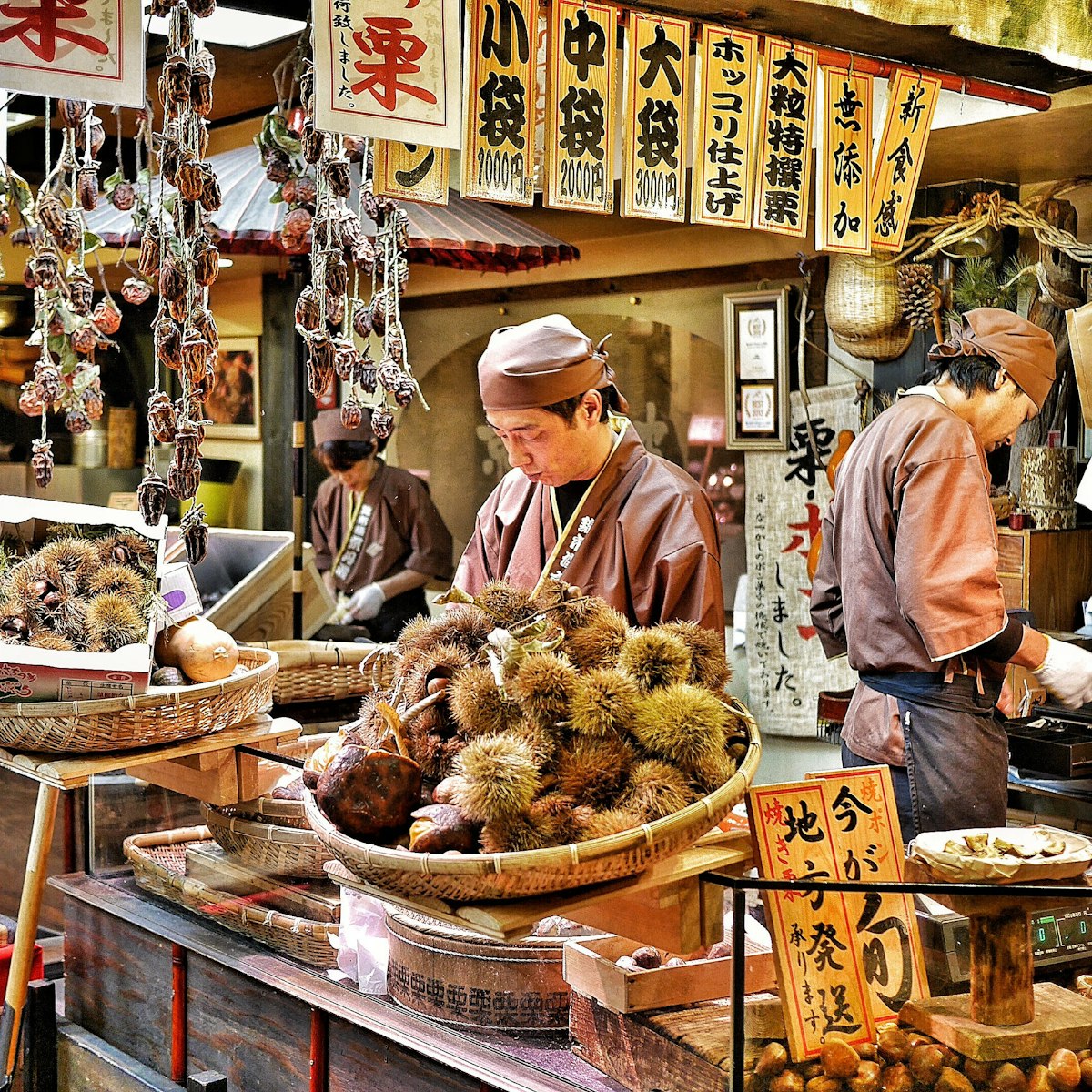
Nishiki Market
Downtown Kyoto
The covered Nishiki Market (Nishiki-kōji Ichiba) is one of Kyoto’s real highlights, especially if you have an interest in cooking and dining. Commonly…
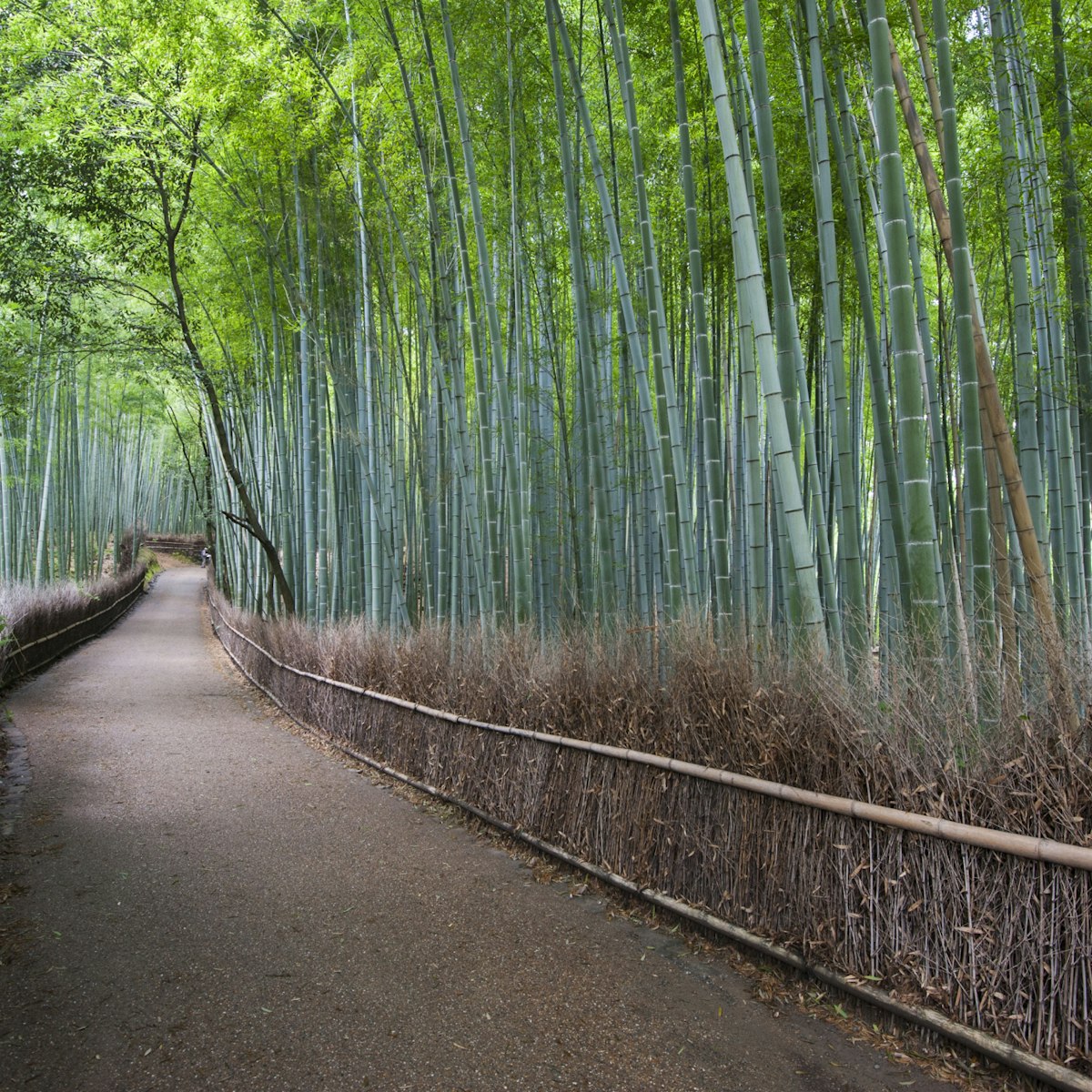
Arashiyama Bamboo Grove
Arashiyama & Sagano
The thick green bamboo stalks seem to continue endlessly in every direction and there’s a strange quality to the light at this famous bamboo grove, which…
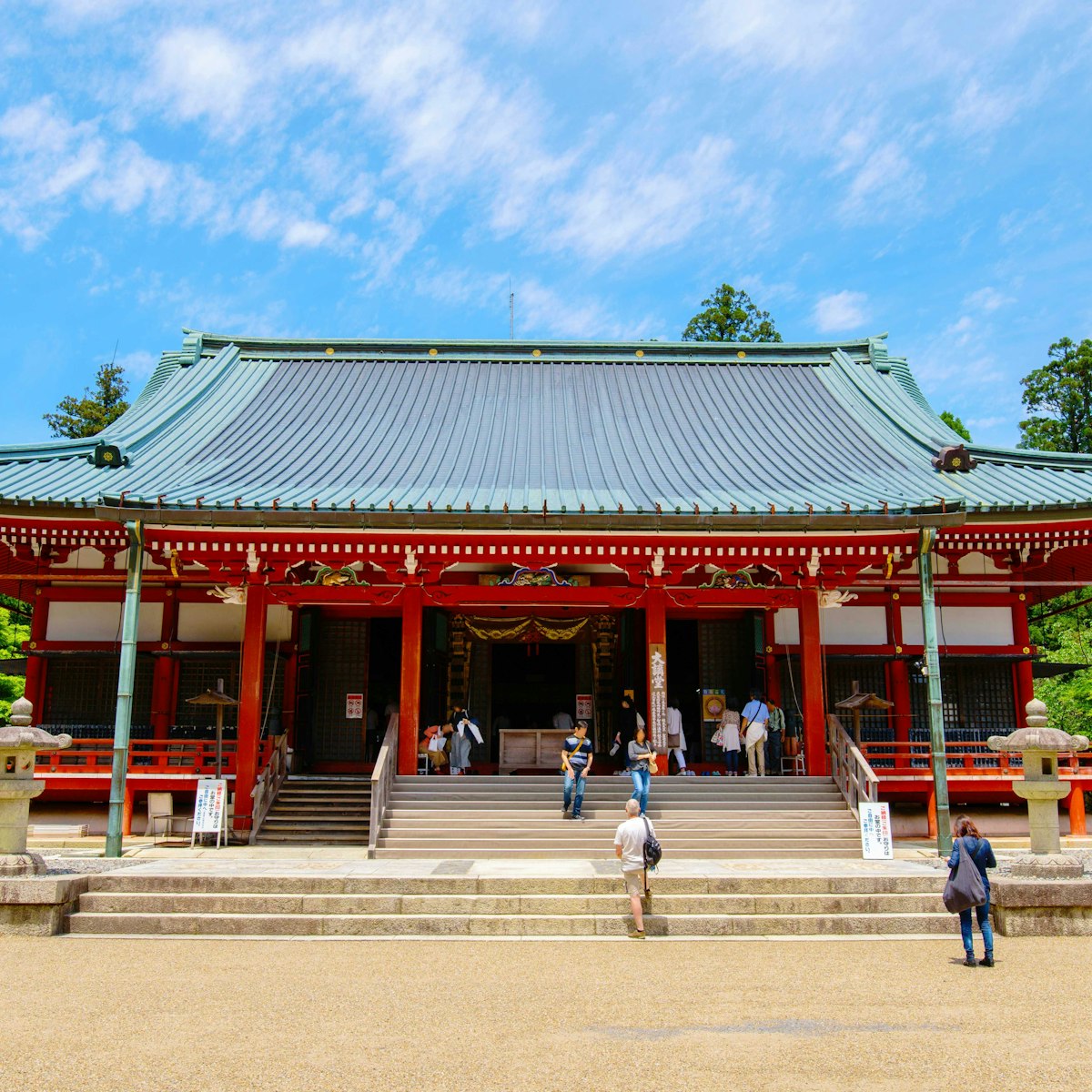
Located atop 848m-high Hiei-zan (the mountain that dominates the skyline in the northeast of the city), the Enryaku-ji complex is an entire world of…
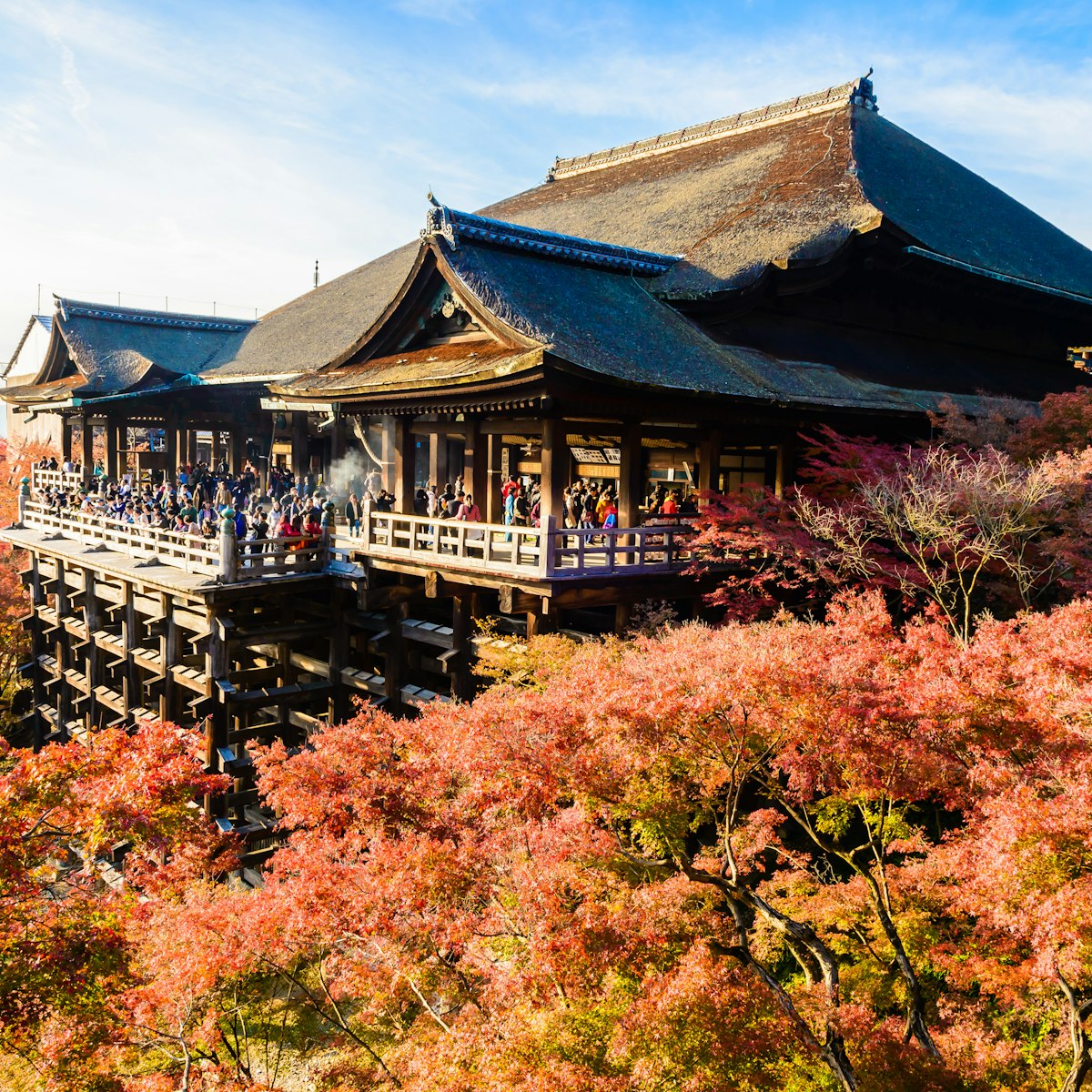
Kiyomizu-dera
Southern Higashiyama
A buzzing hive of activity perched on a hill overlooking the basin of Kyoto, Kiyomizu-dera is one of Kyoto's most popular and most enjoyable temples. It…
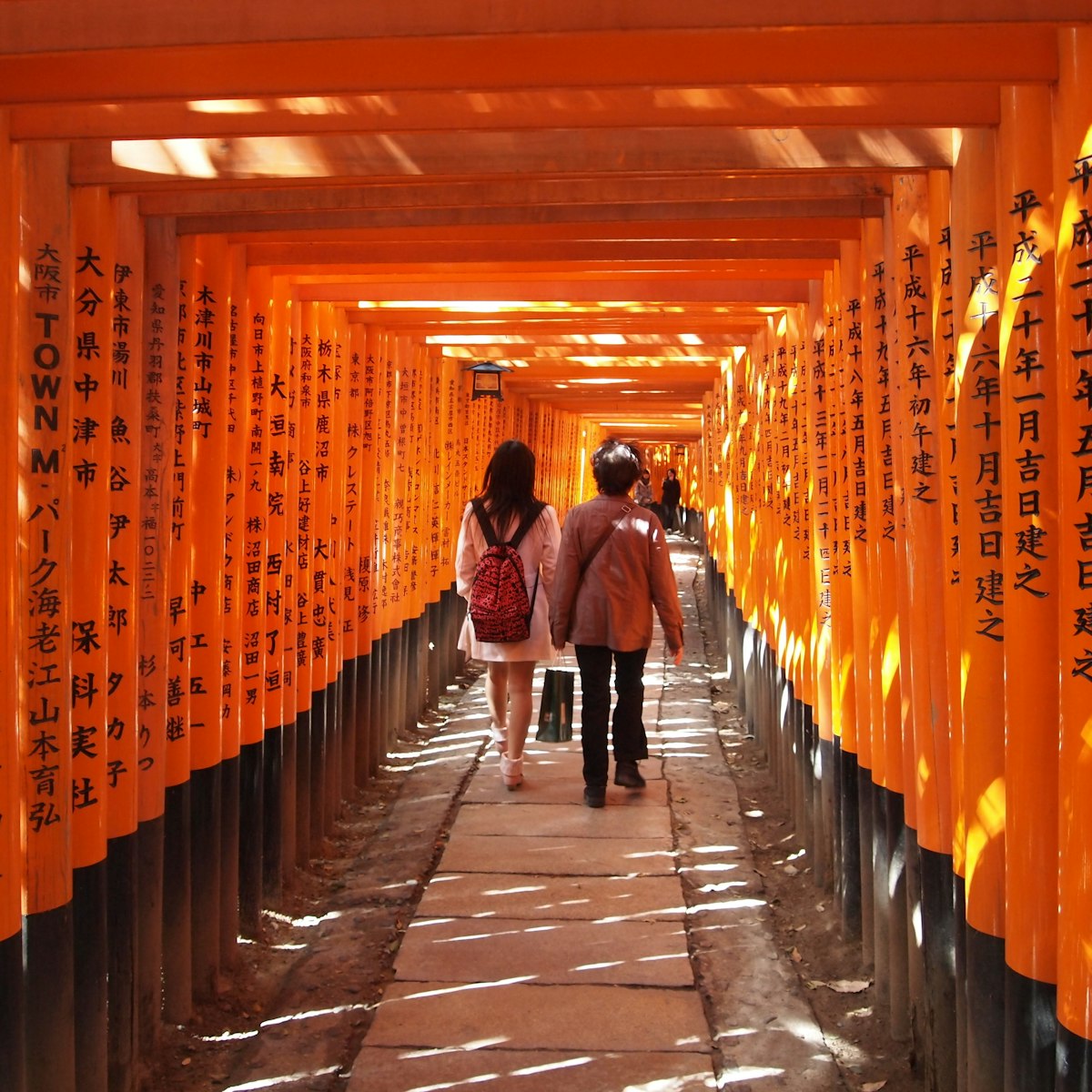
Fushimi Inari-Taisha
Kyoto Station & South Kyoto
With seemingly endless arcades of vermilion torii (shrine gates) spread across a thickly wooded mountain, this vast shrine complex is a world unto its own…
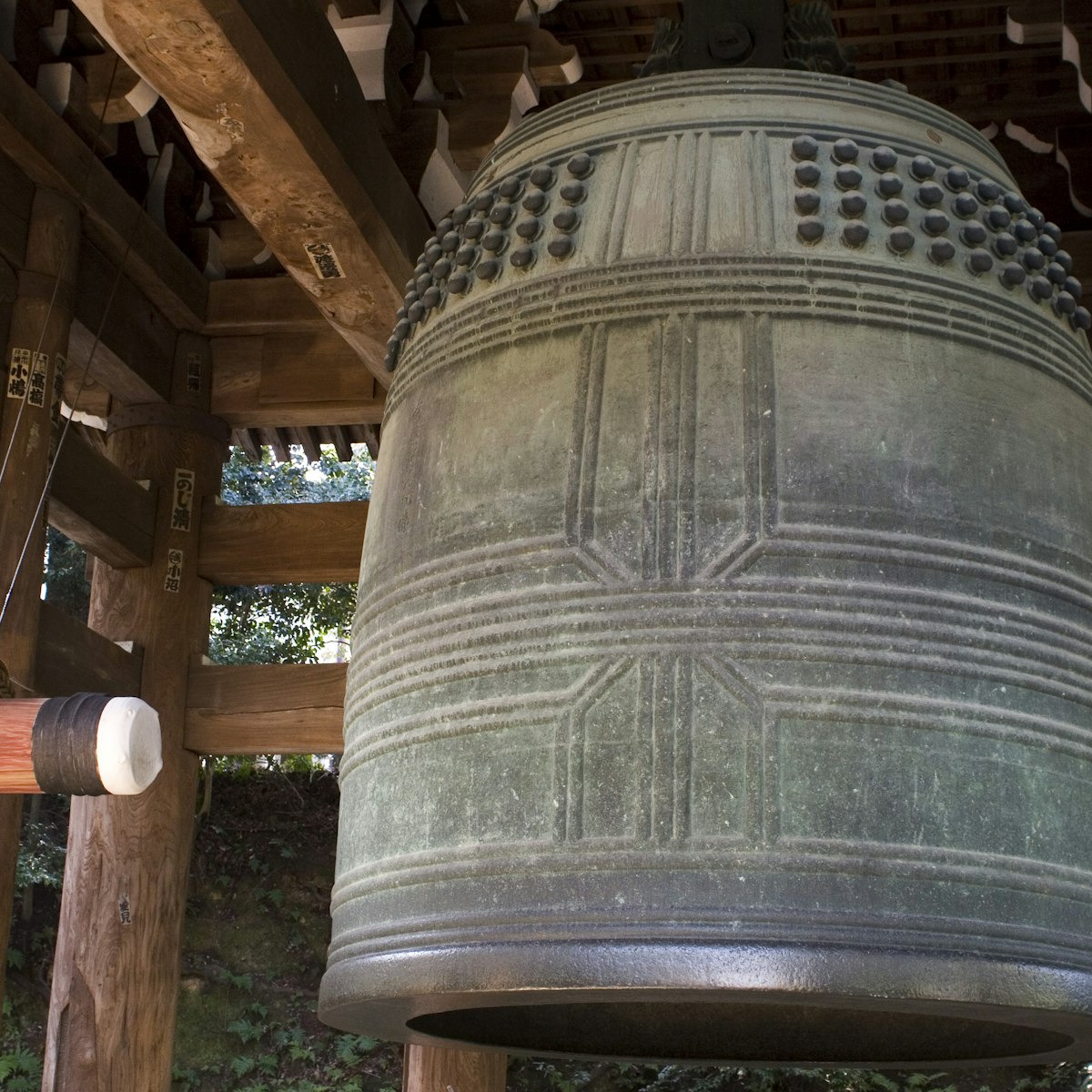
A collection of soaring buildings, spacious courtyards and gardens, Chion-in serves as the headquarters of the Jōdo sect, the largest school of Buddhism…
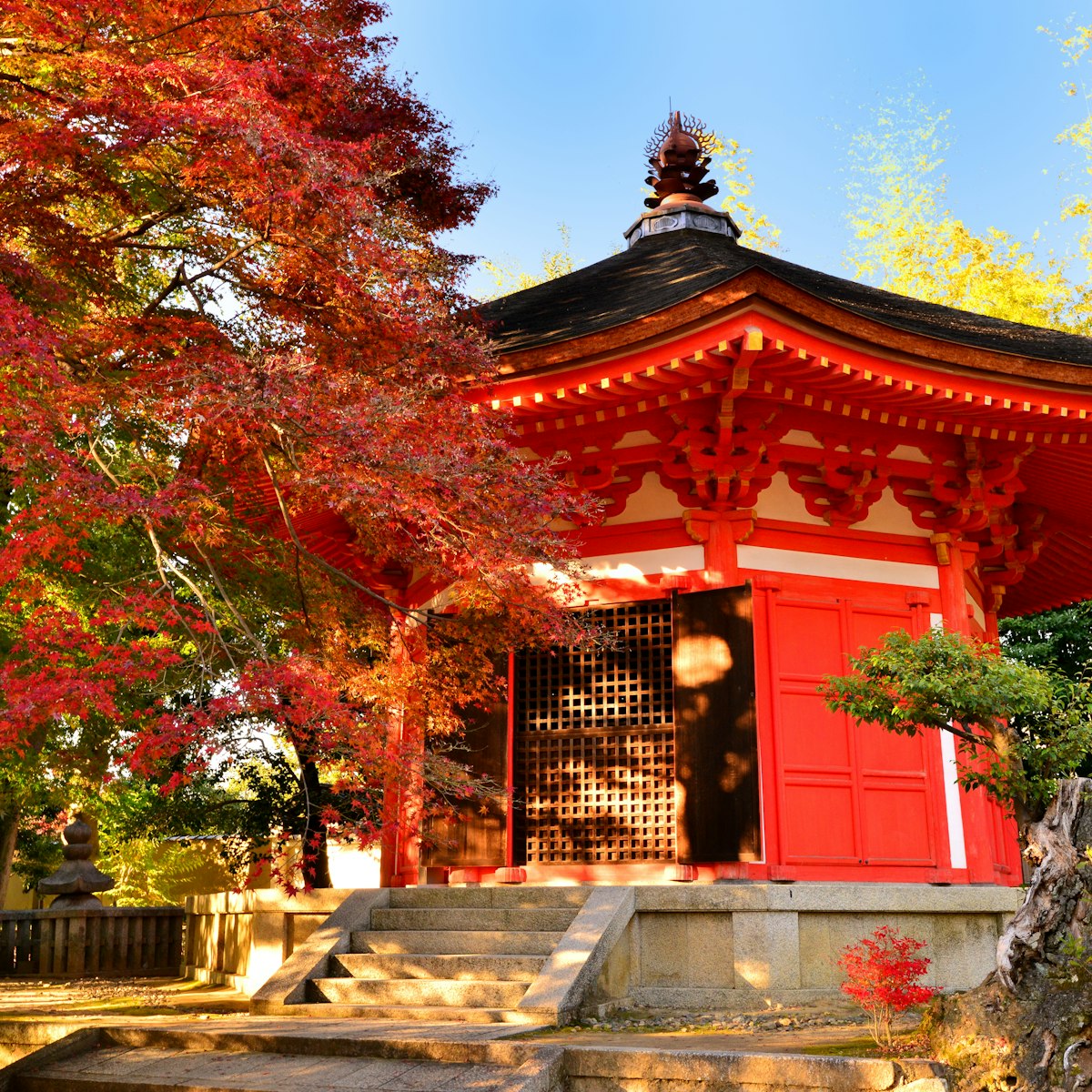
Home to a spectacular garden, several superb structures and beautiful precincts, Tōfuku-ji is one of the best temples in Kyoto. It is linked to Fushimi…
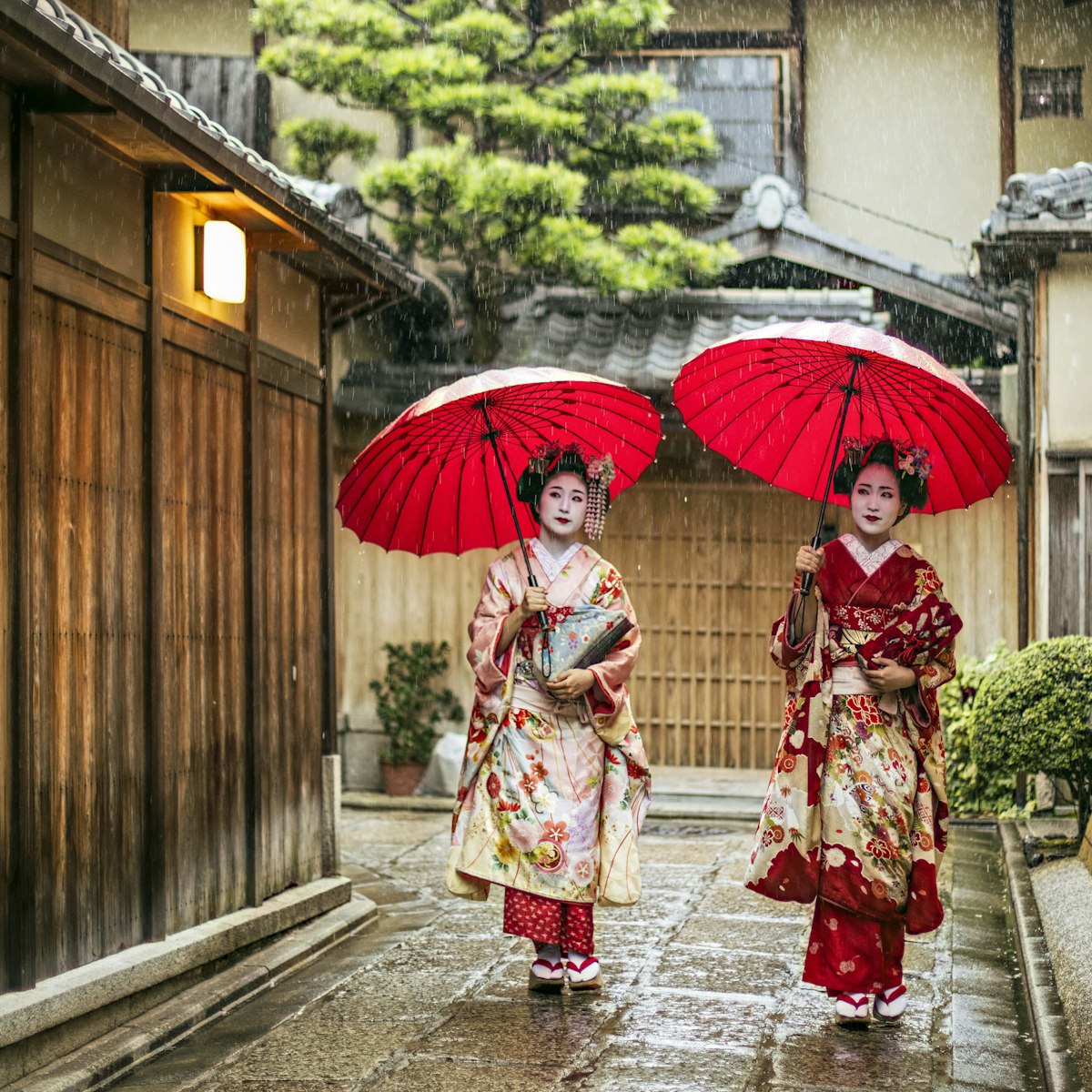
Gion is the famous entertainment and geisha quarter on the eastern bank of the Kamo-gawa. While Gion’s true origins were in teahouses catering to weary…
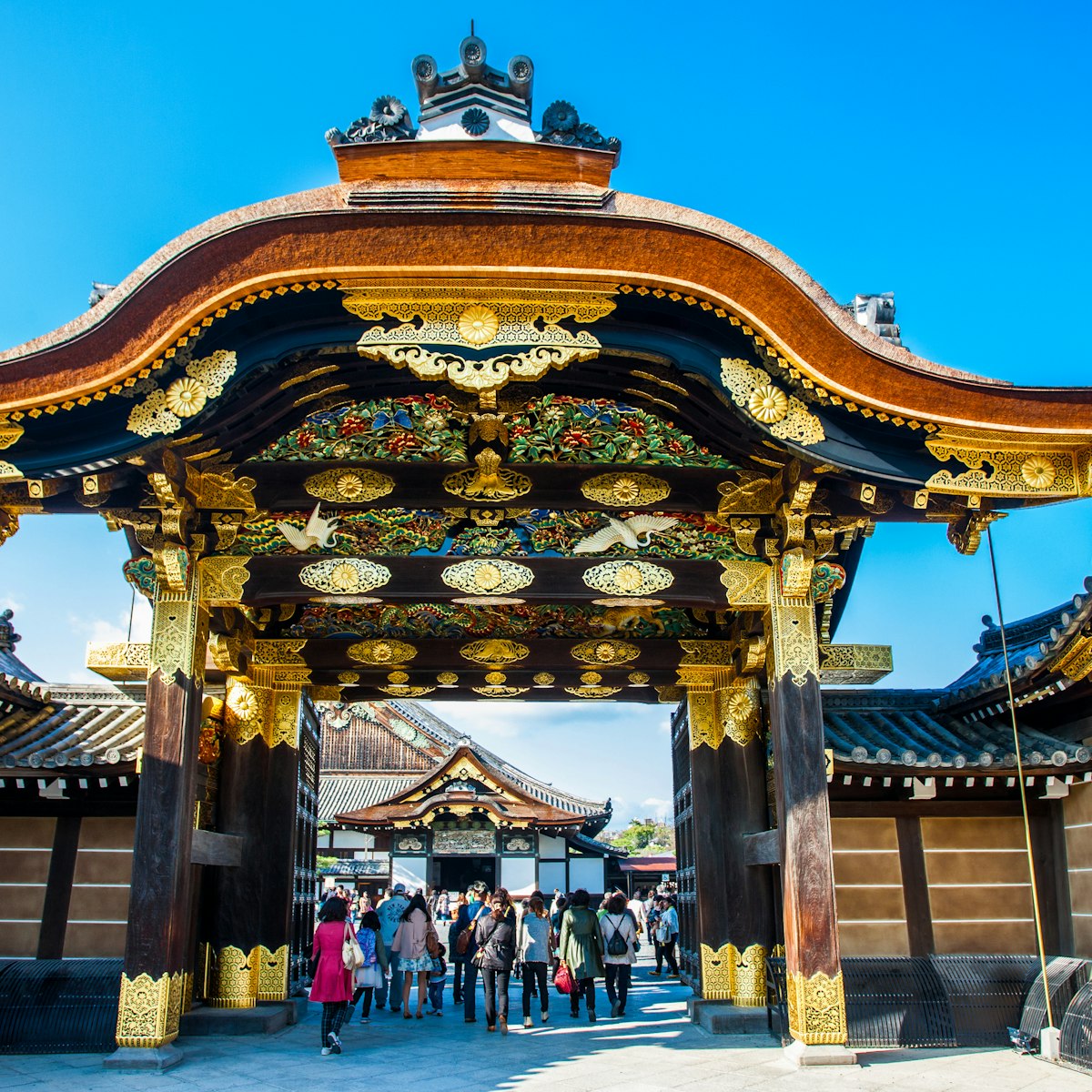
The military might of Japan's great warlord generals, the Tokugawa shoguns, is amply demonstrated by the imposing stone walls and ramparts of their great…
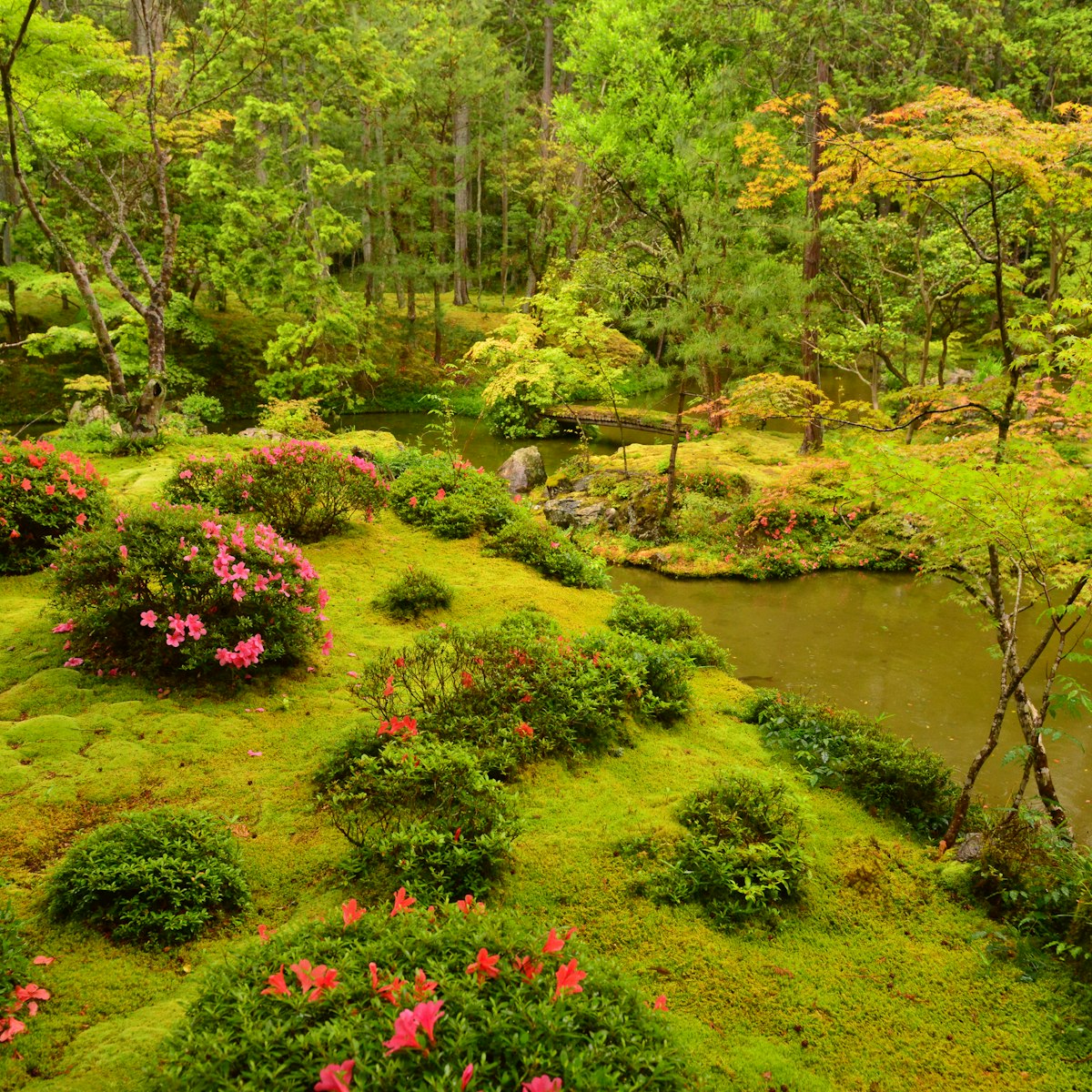
Saihō-ji, one of Kyoto's best-known gardens, is famed for its superb moss garden, hence the temple's nickname: Koke-dera (Moss Temple). The heart-shaped…

Imperial Palace & Around
For anyone with the slightest fondness for Japanese gardens, don't miss this network of lanes dotted with atmospheric Zen temples. Daitoku-ji, the main…
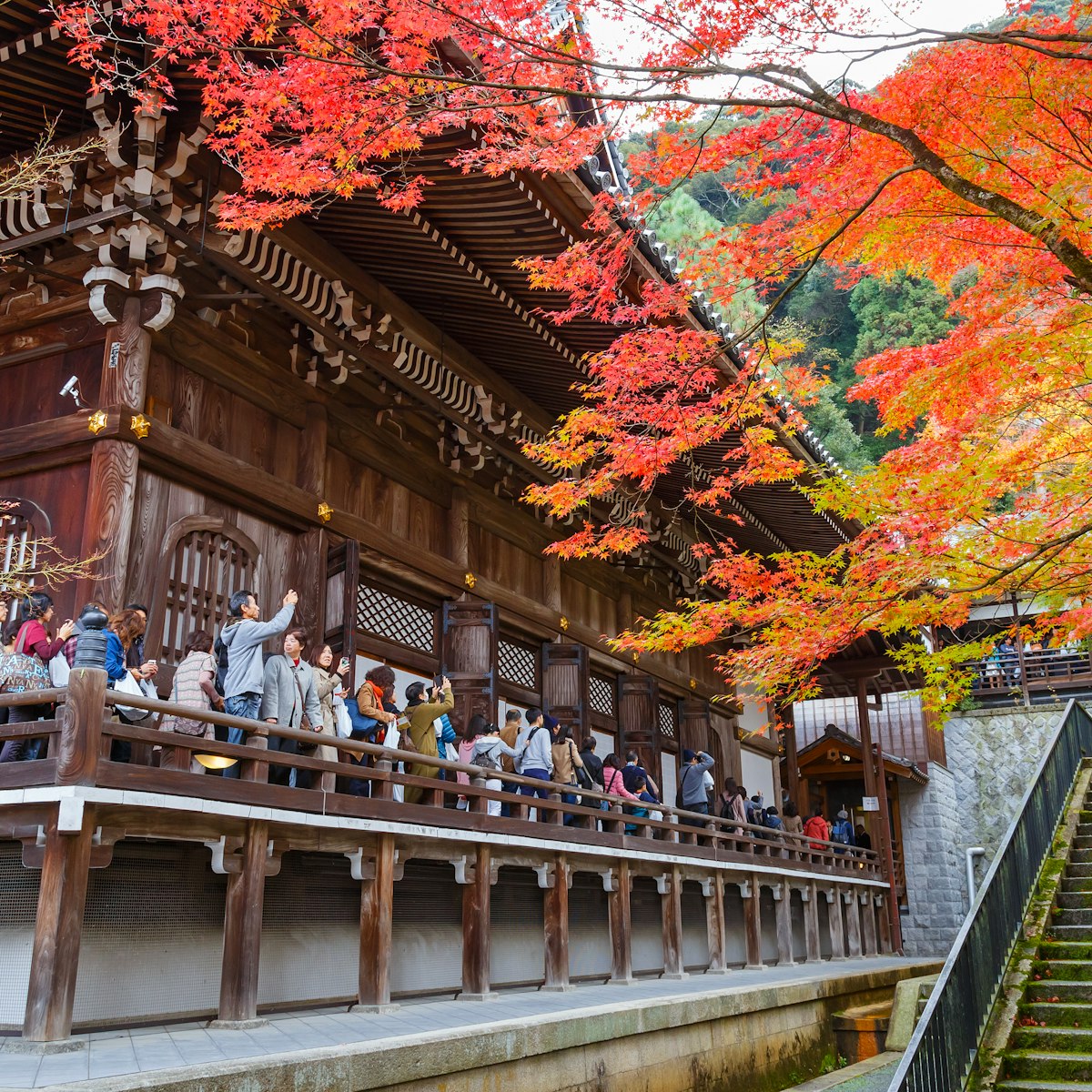
Northern Higashiyama
Perhaps Kyoto’s most famous (and most crowded) autumn-foliage destination, Eikan-dō is a superb temple just a short walk south of the famous Path of…
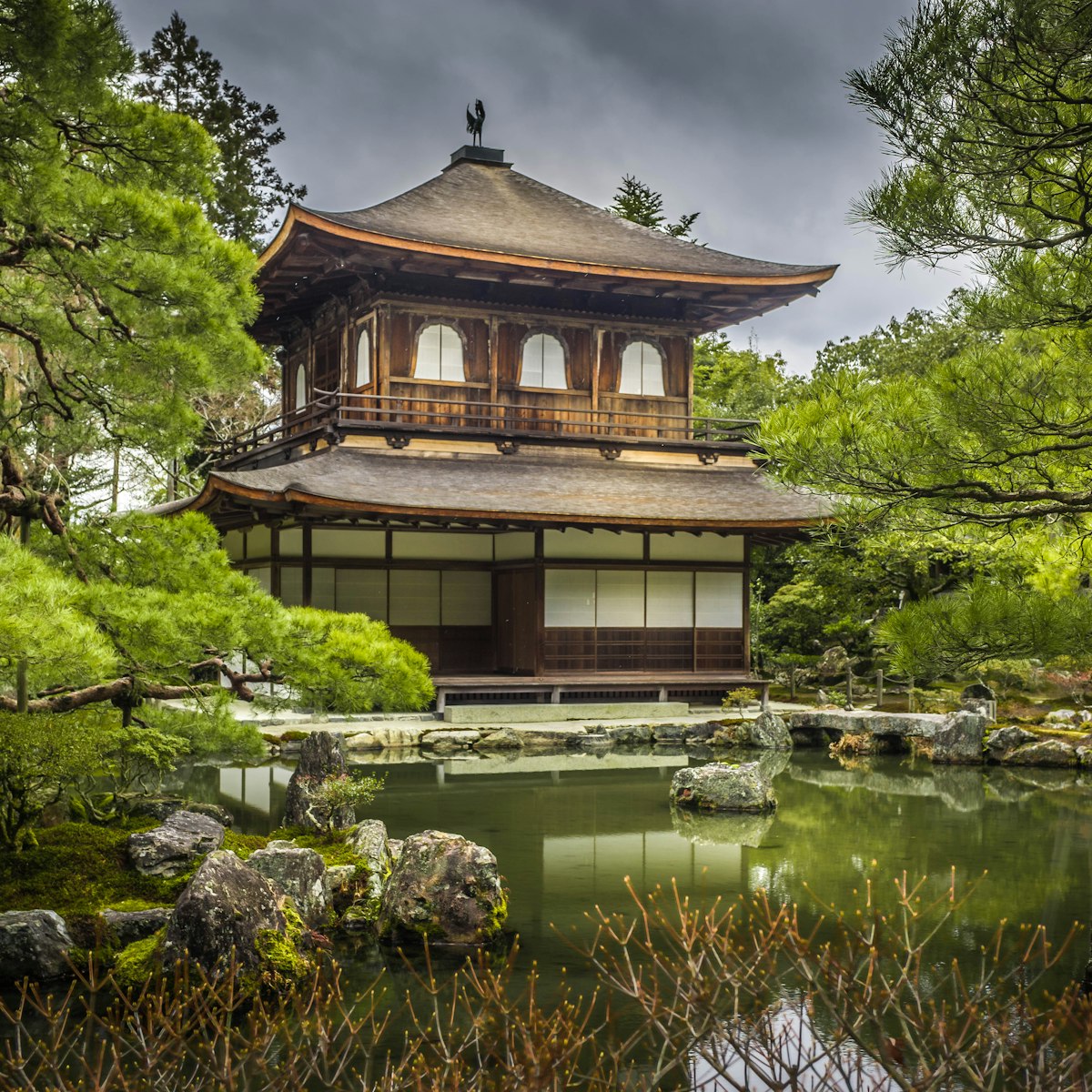
Home to a sumptuous garden and elegant structures, Ginkaku-ji is one of Kyoto's premier sites. The temple started its life in 1482 as a retirement villa…
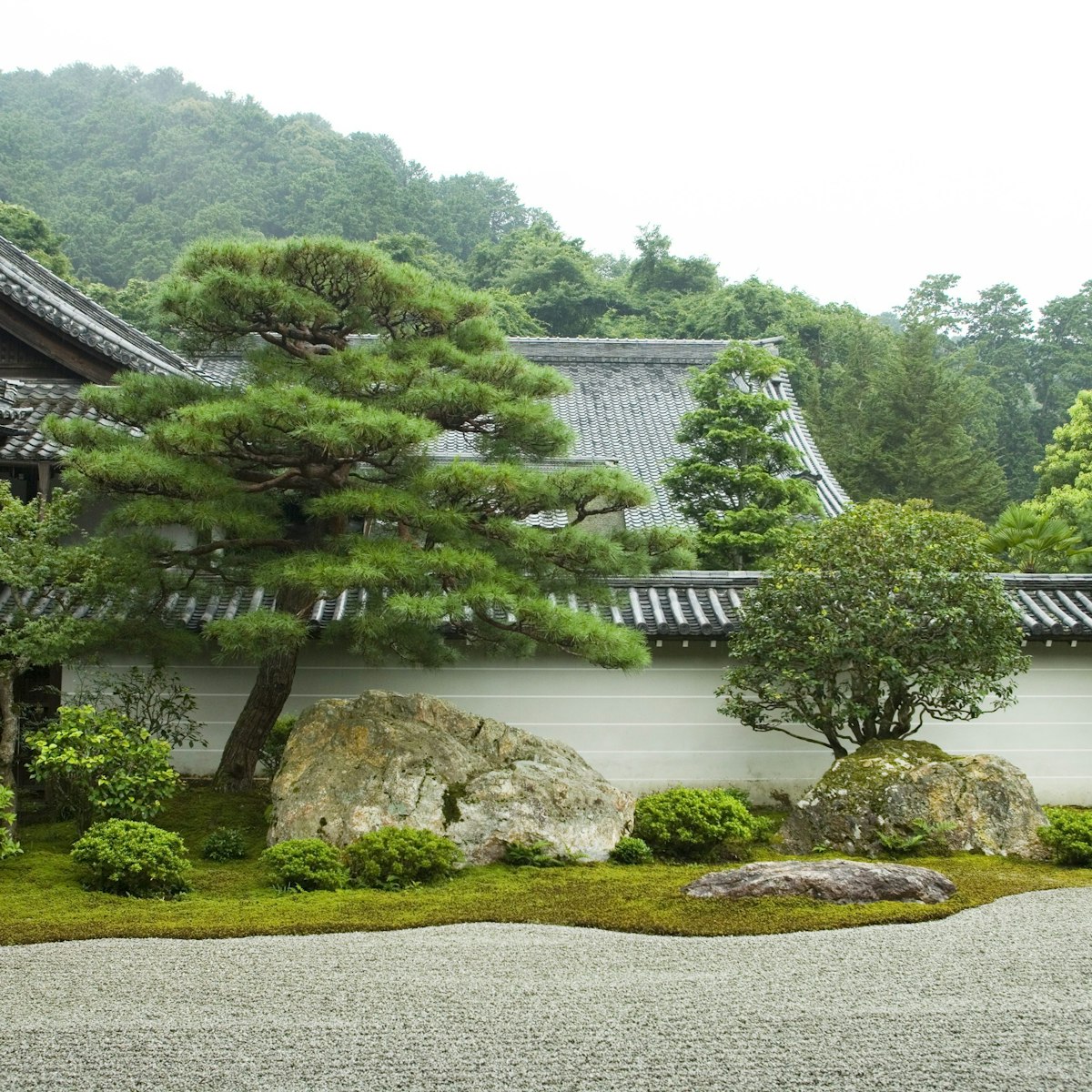
This is one of the most rewarding temples in Kyoto, with its expansive grounds and numerous subtemples. At its entrance stands the massive San-mon. Steps…
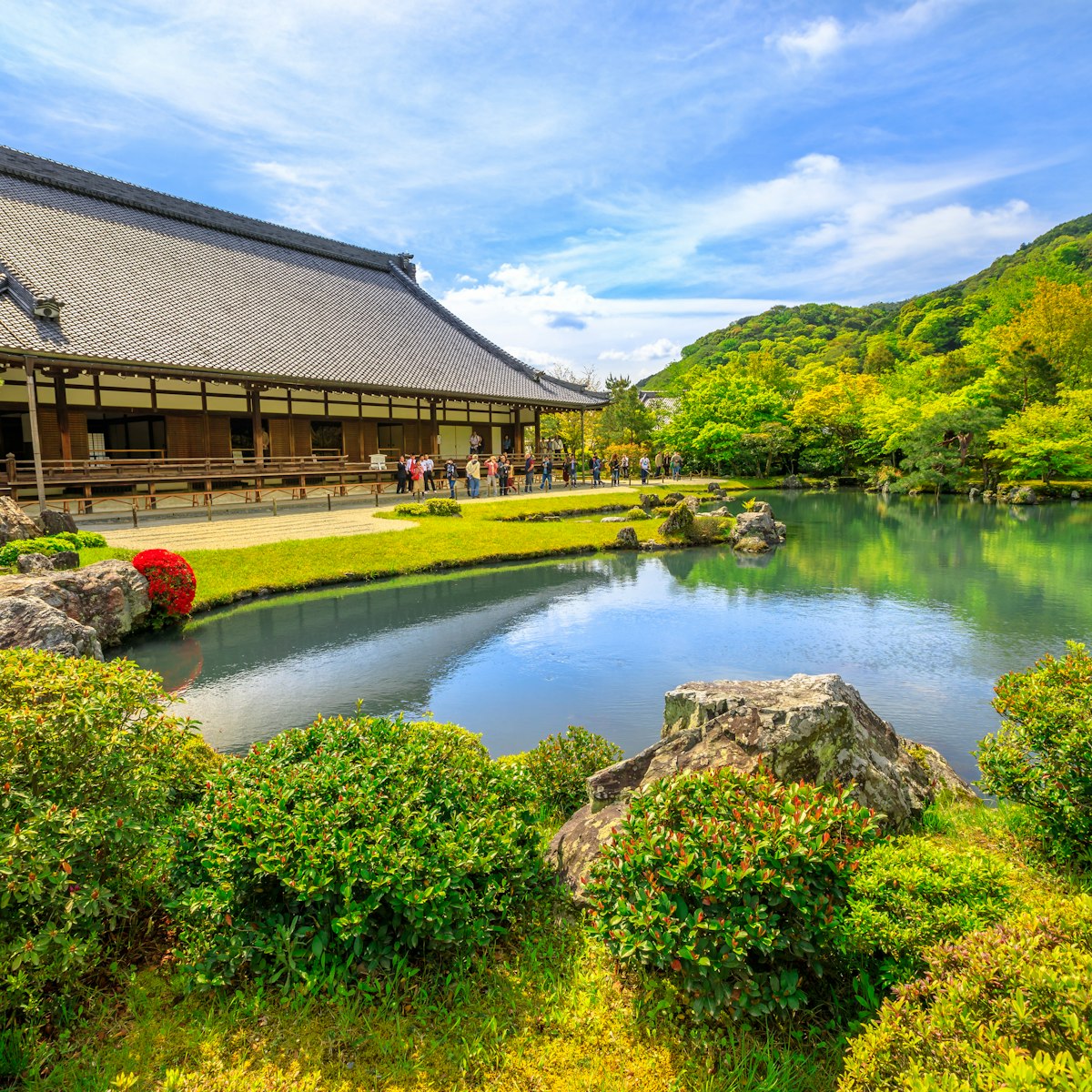
A major temple of the Rinzai school, Tenryū-ji has one of the most attractive gardens in all of Kyoto, particularly during the spring cherry-blossom and…
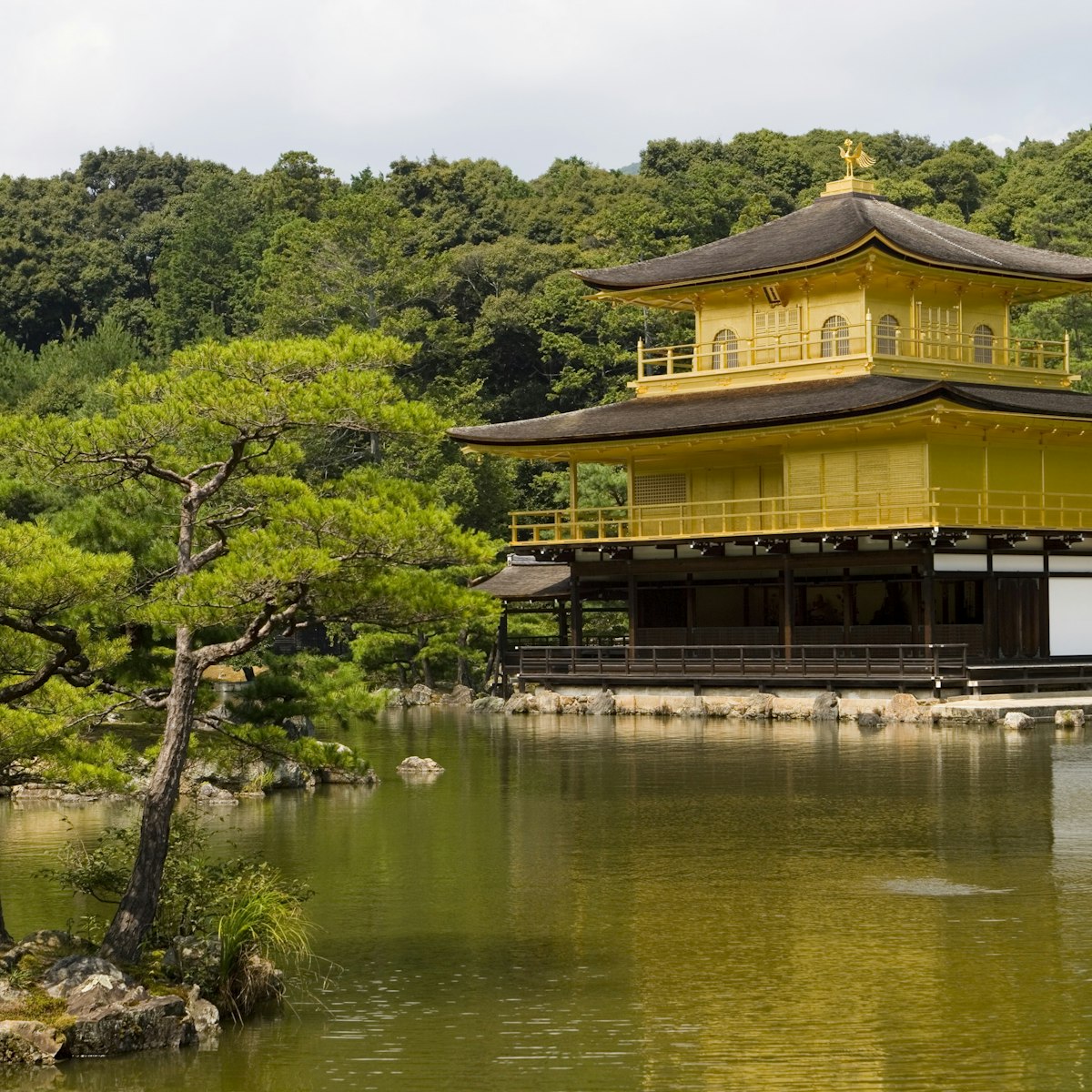
Northwest Kyoto
Kyoto's famed 'Golden Pavilion', Kinkaku-ji is one of Japan's best-known sights. The main hall, covered in brilliant gold leaf, shining above its…
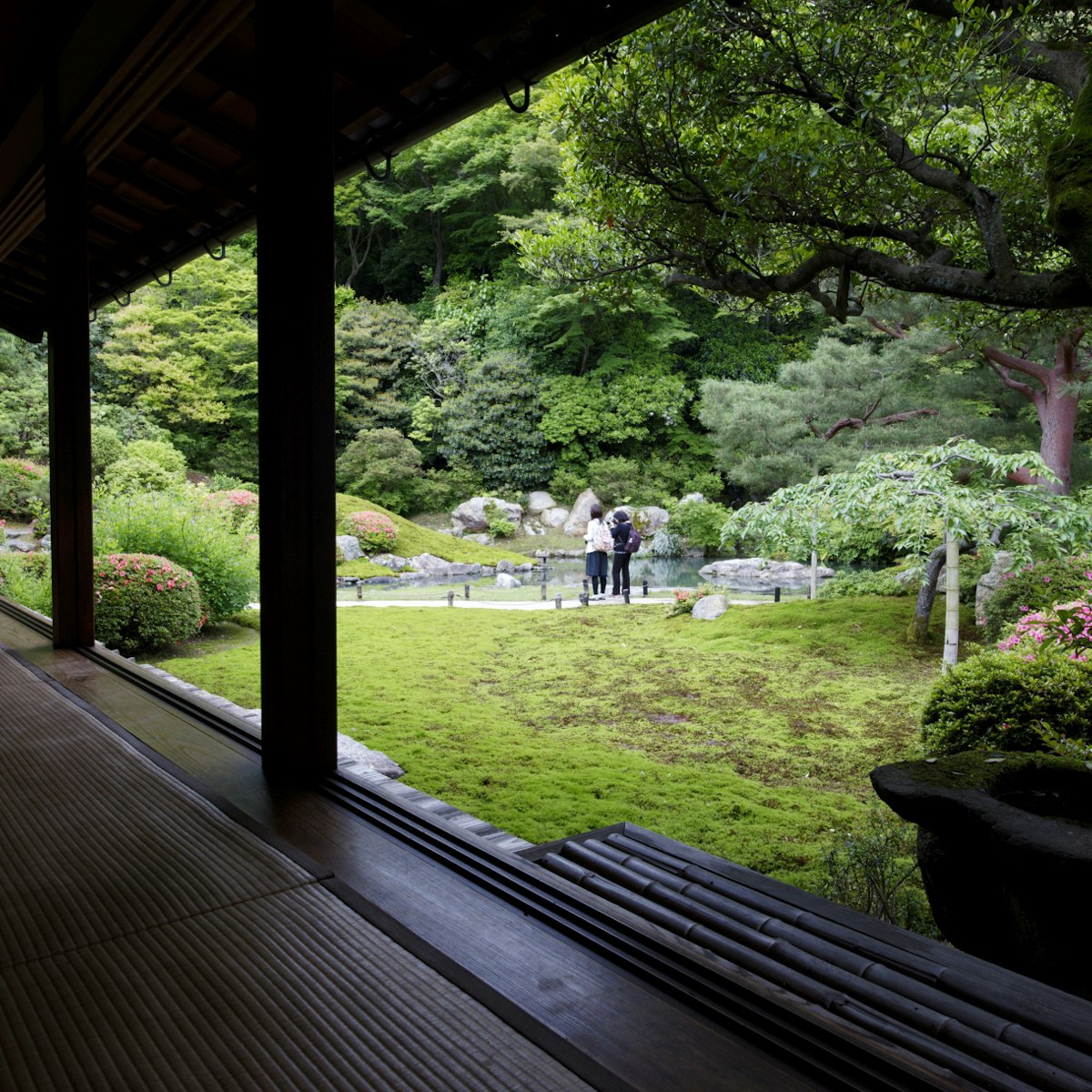
This temple is hard to miss, with its giant camphor trees growing just outside the walls. Fortunately, most tourists march right on past, heading to the…
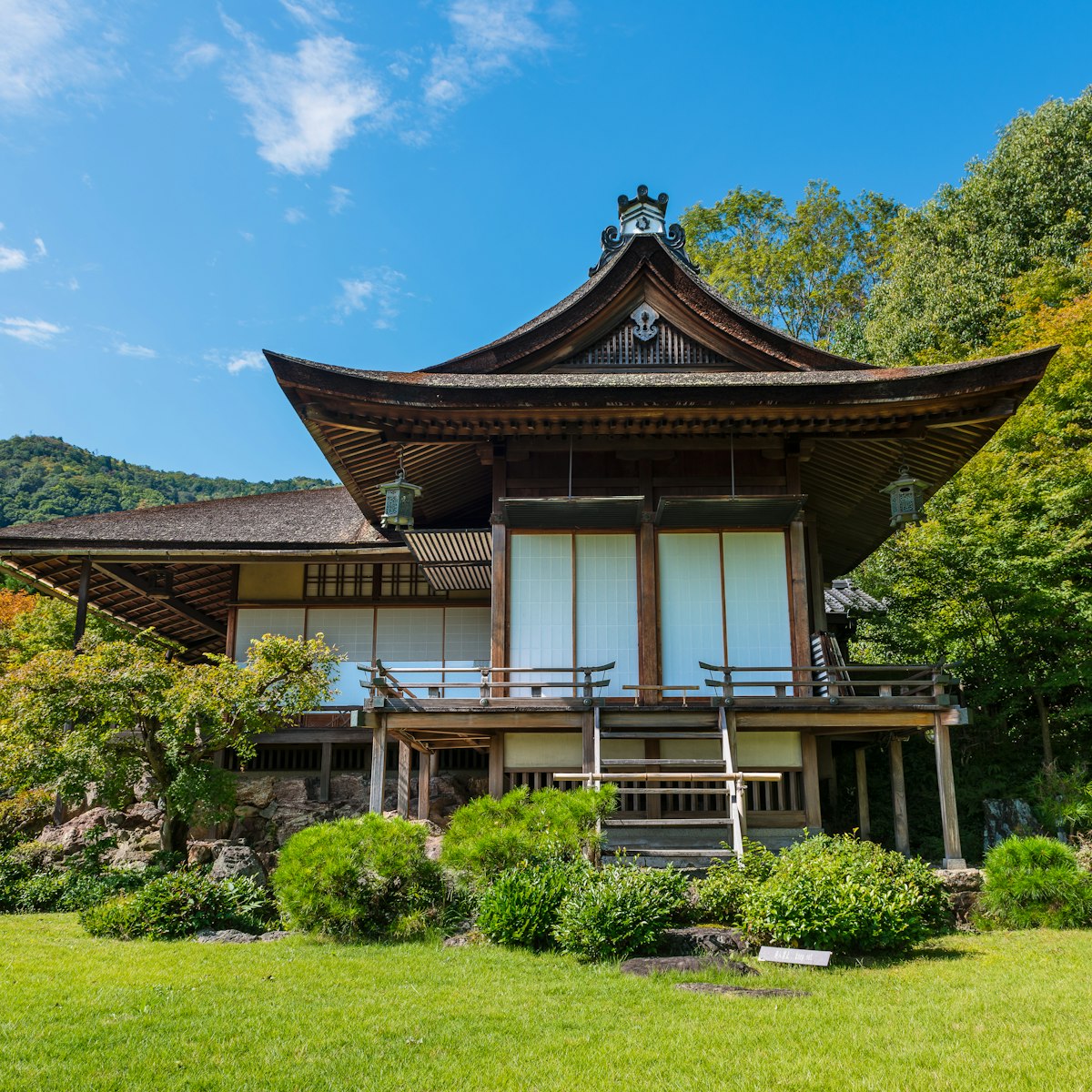
Ōkōchi Sansō
This is the lavish estate of Ōkōchi Denjirō, an actor famous for his samurai films. The sprawling gardens may well be the most lovely in all of Kyoto,…
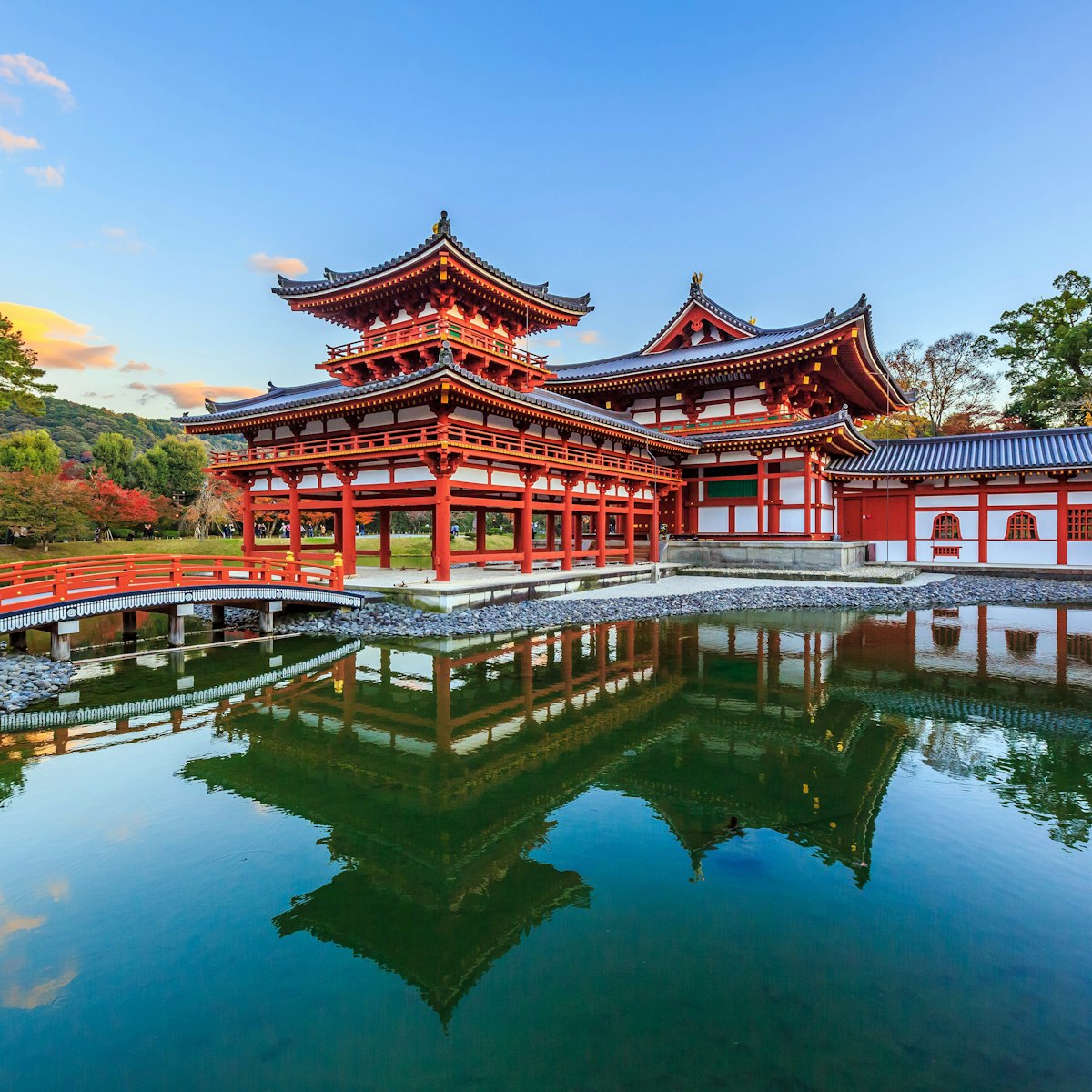
Byōdō-in is home to one of the loveliest Buddhist structures in Japan: the Hōō-dō hall (Phoenix Hall), which is depicted on the back of the Japanese ¥10…
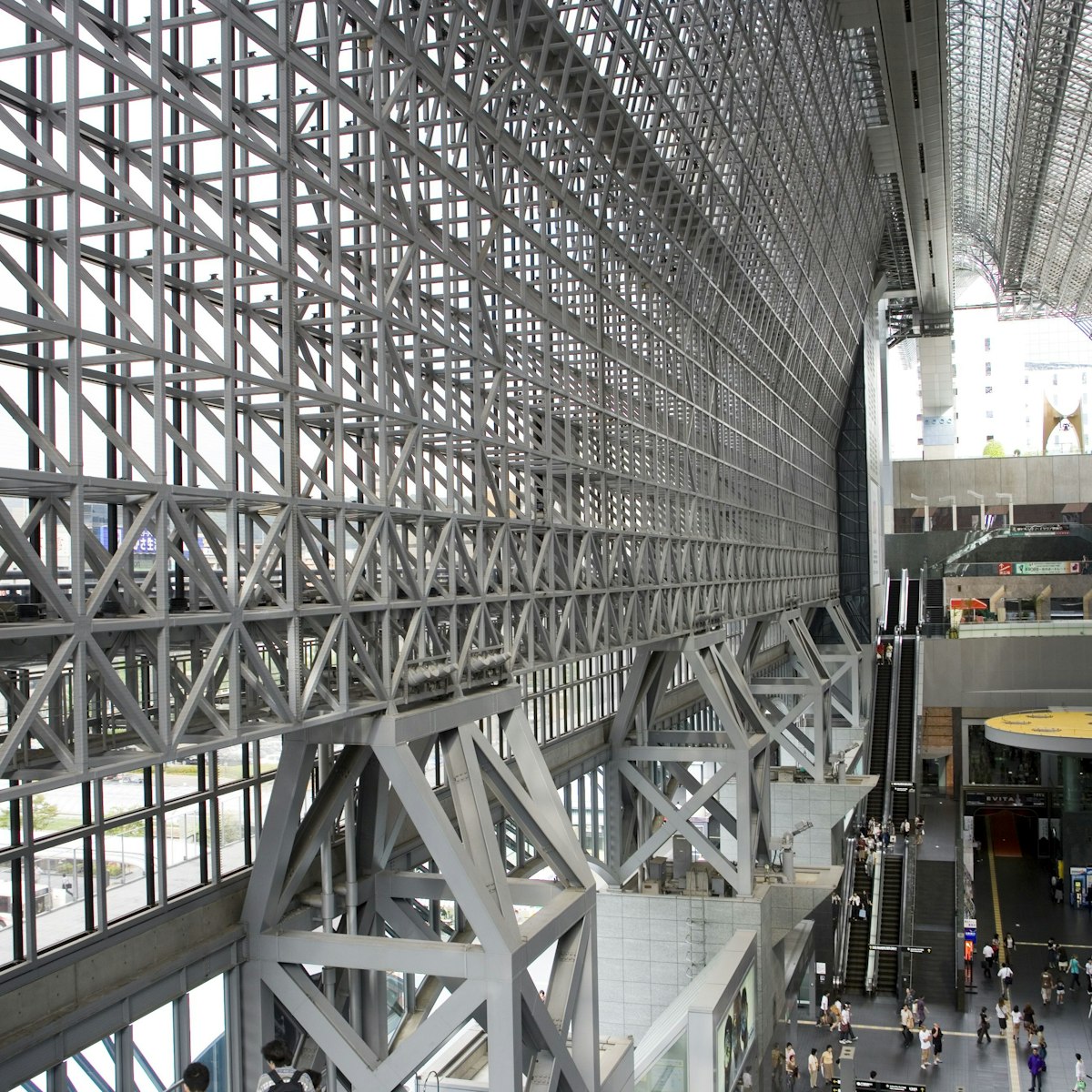
Kyoto Station
The Kyoto Station building is a striking steel-and-glass structure – a kind of futuristic cathedral for the transport age – with a tremendous space that…

This exquisite temple was founded in 1605 by Kita-no-Mandokoro in memory of her late husband, Toyotomi Hideyoshi. The extensive grounds include gardens…
Path of Philosophy (Tetsugaku-no-Michi)
The Tetsugaku-no-Michi is one of the most pleasant walks in Kyoto. Lined with a great variety of flowering plants, bushes and trees, it is a corridor of…
On the far western edge of the Daitoku-ji complex, the sublime garden of this subtemple is one of the best in Kyoto and worth a special trip. It’s located…
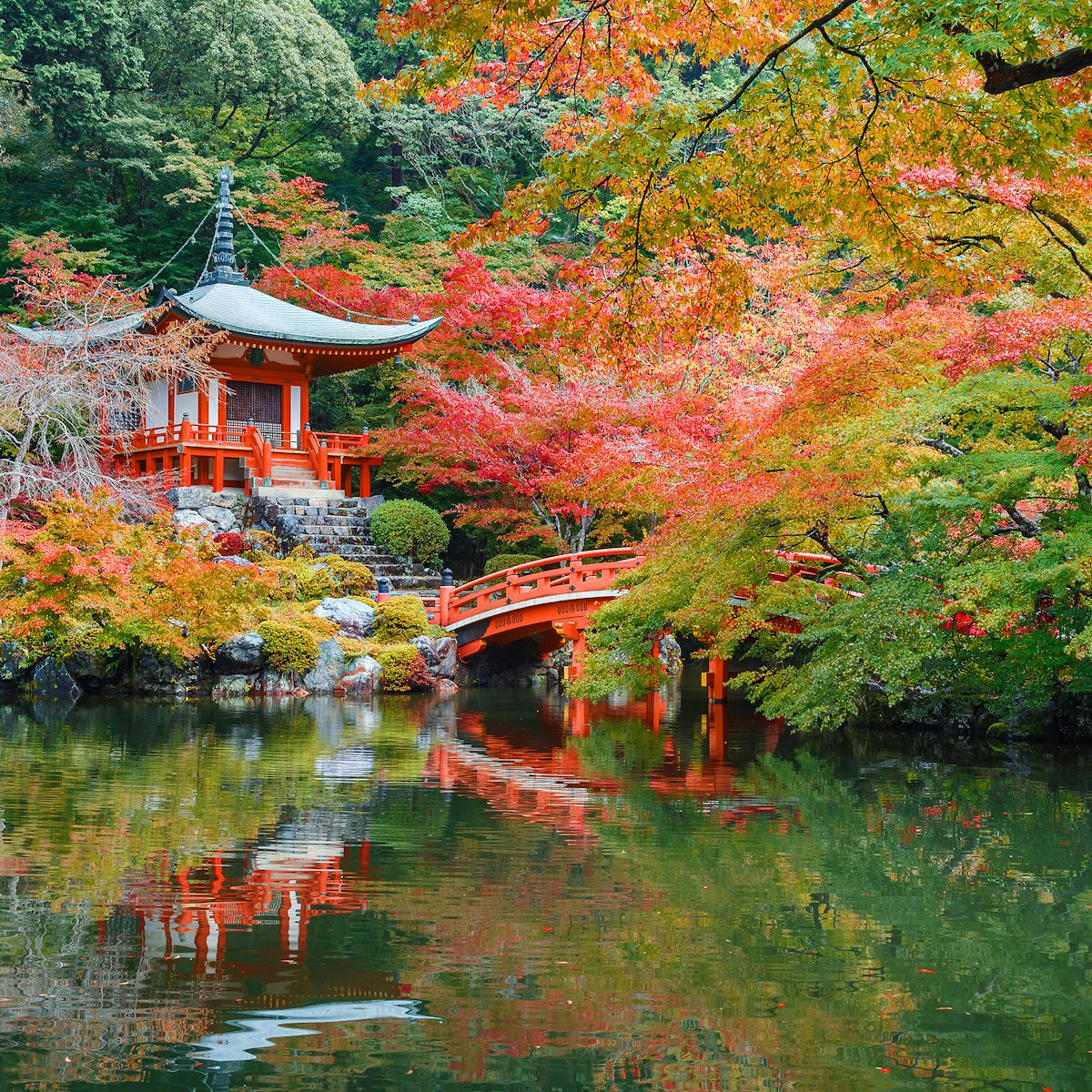
Daigo-ji is a World Heritage–listed sprawling temple complex located in the Daigo district of Kyoto, which lies on the east side of the Higashiyama…
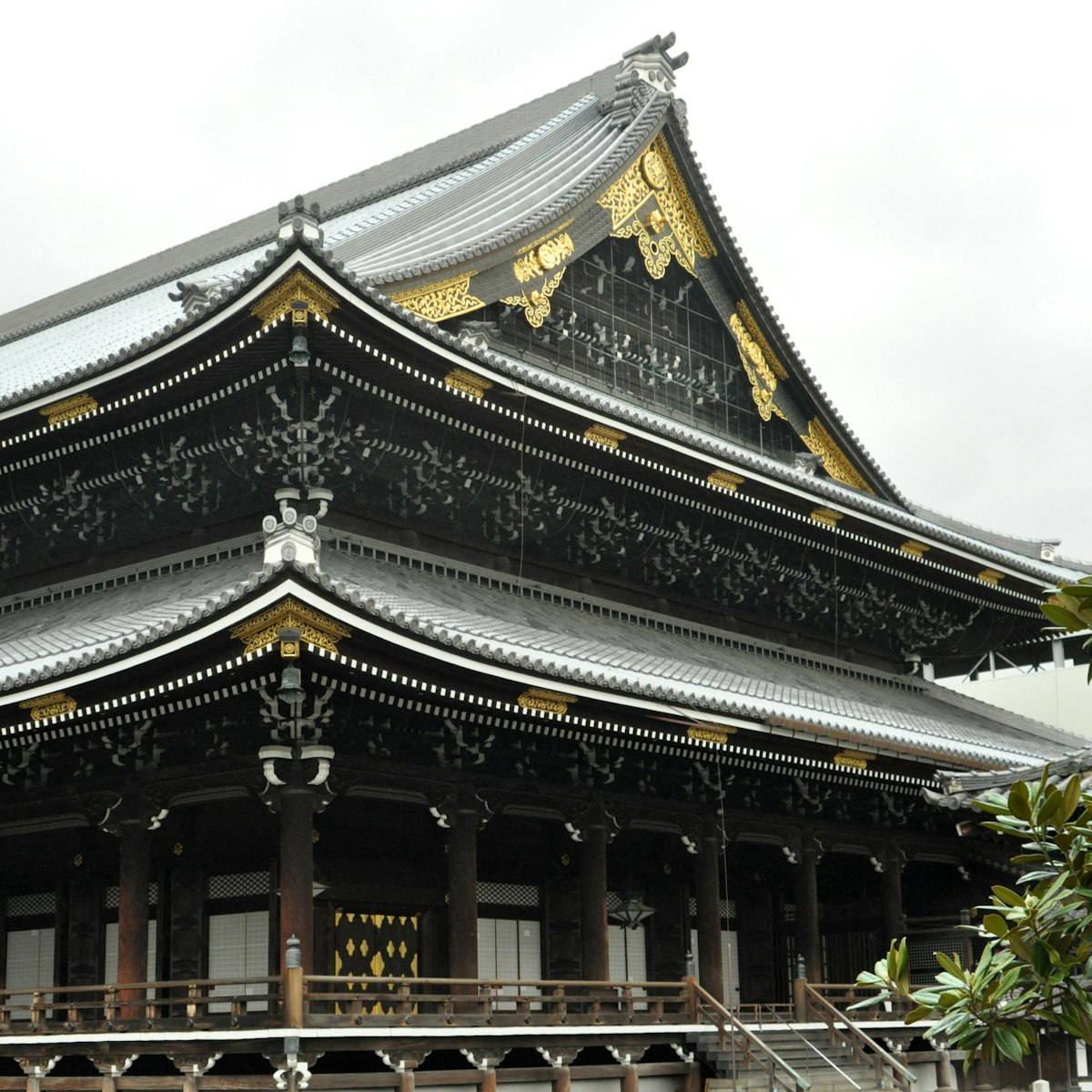
Higashi Hongan-ji
Higashi Hongan-ji is the last word in all things grand and gaudy. Considering its proximity to the station, the free admission, the awesome structures and…
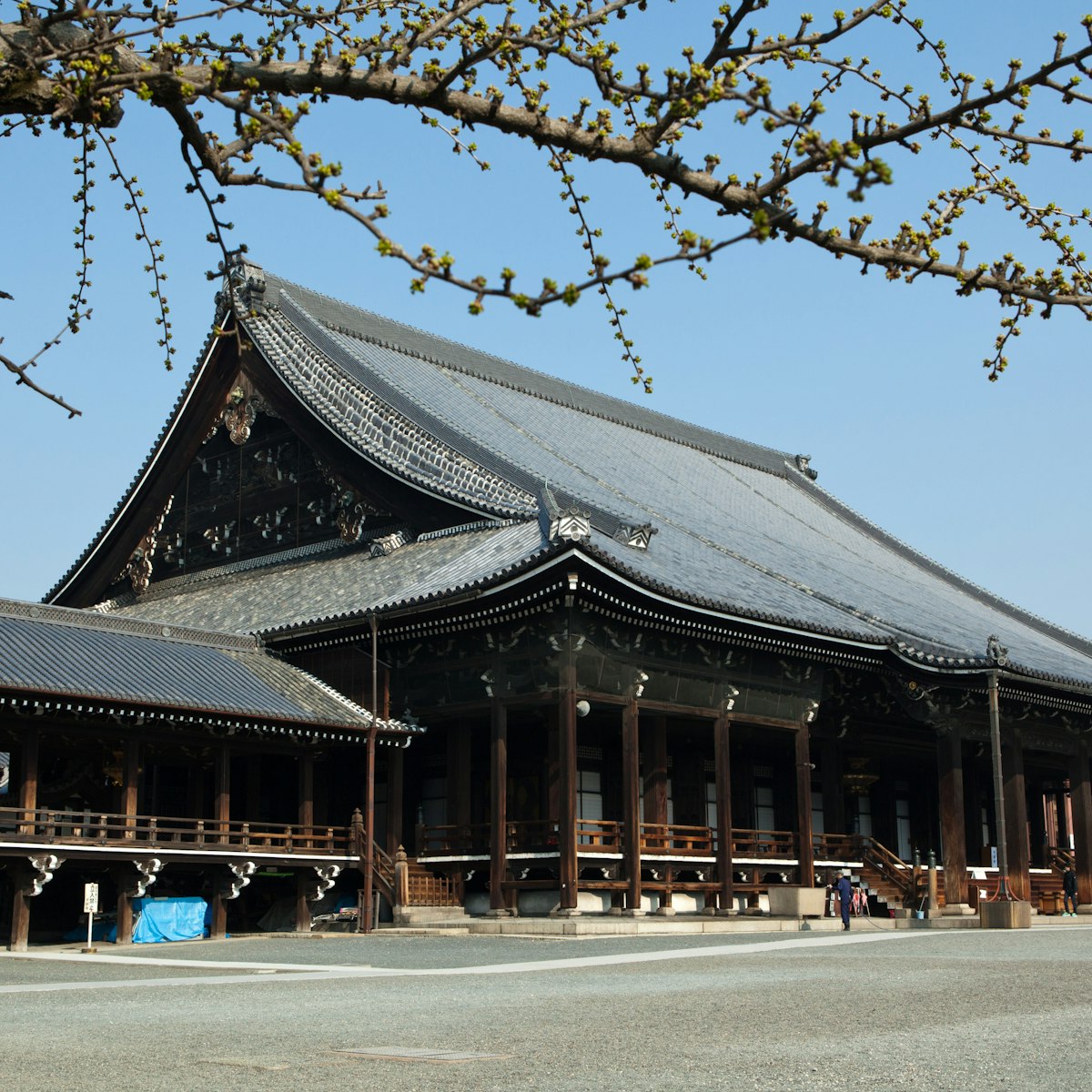
Nishi Hongan-ji
A vast temple complex, Nishi Hongan-ji comprises several buildings that feature some of the finest examples of architecture and artistic achievement from…
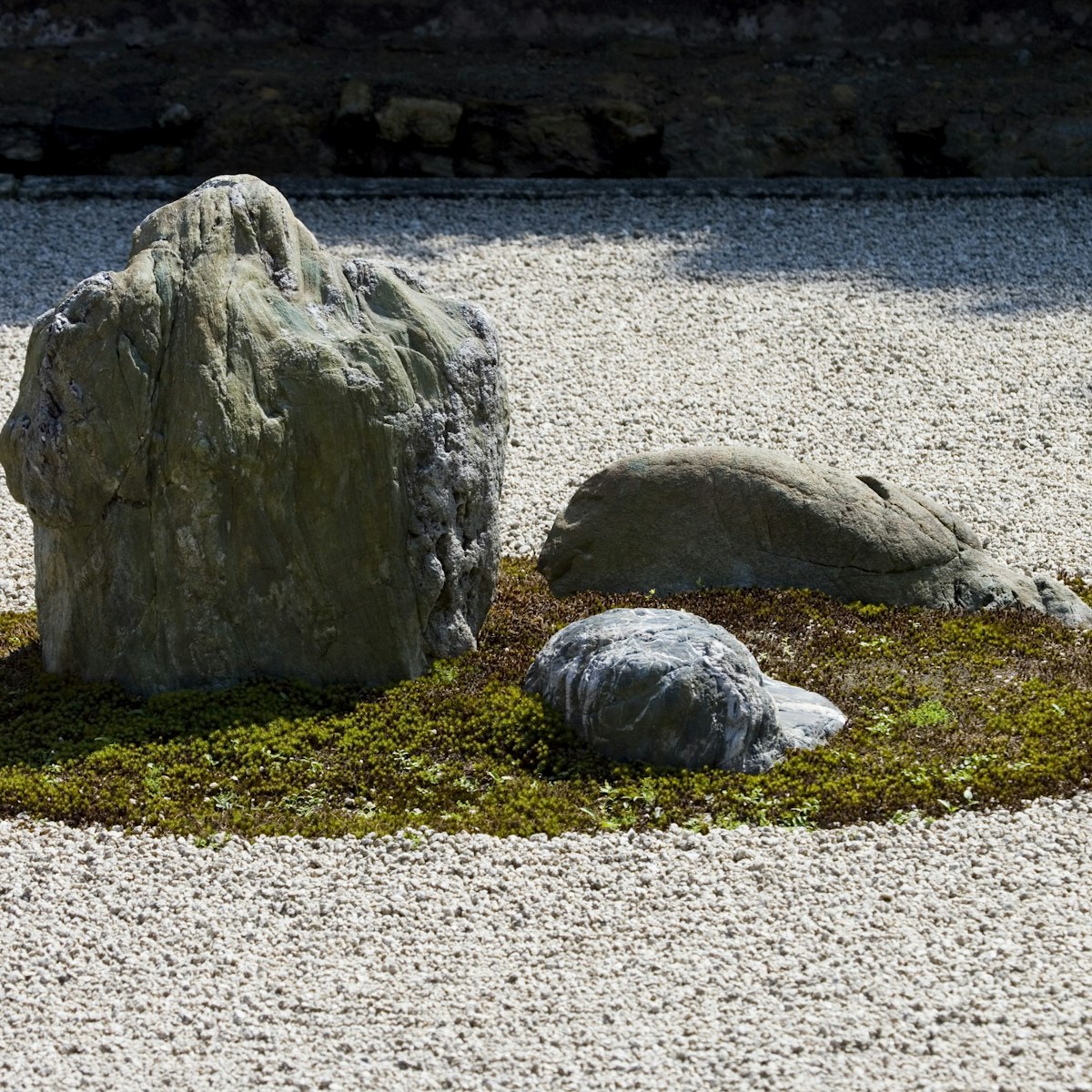
You’ve probably seen a picture of the rock garden here – it’s one of the symbols of Kyoto and one of Japan’s better-known sights. Ryōan-ji belongs to the…
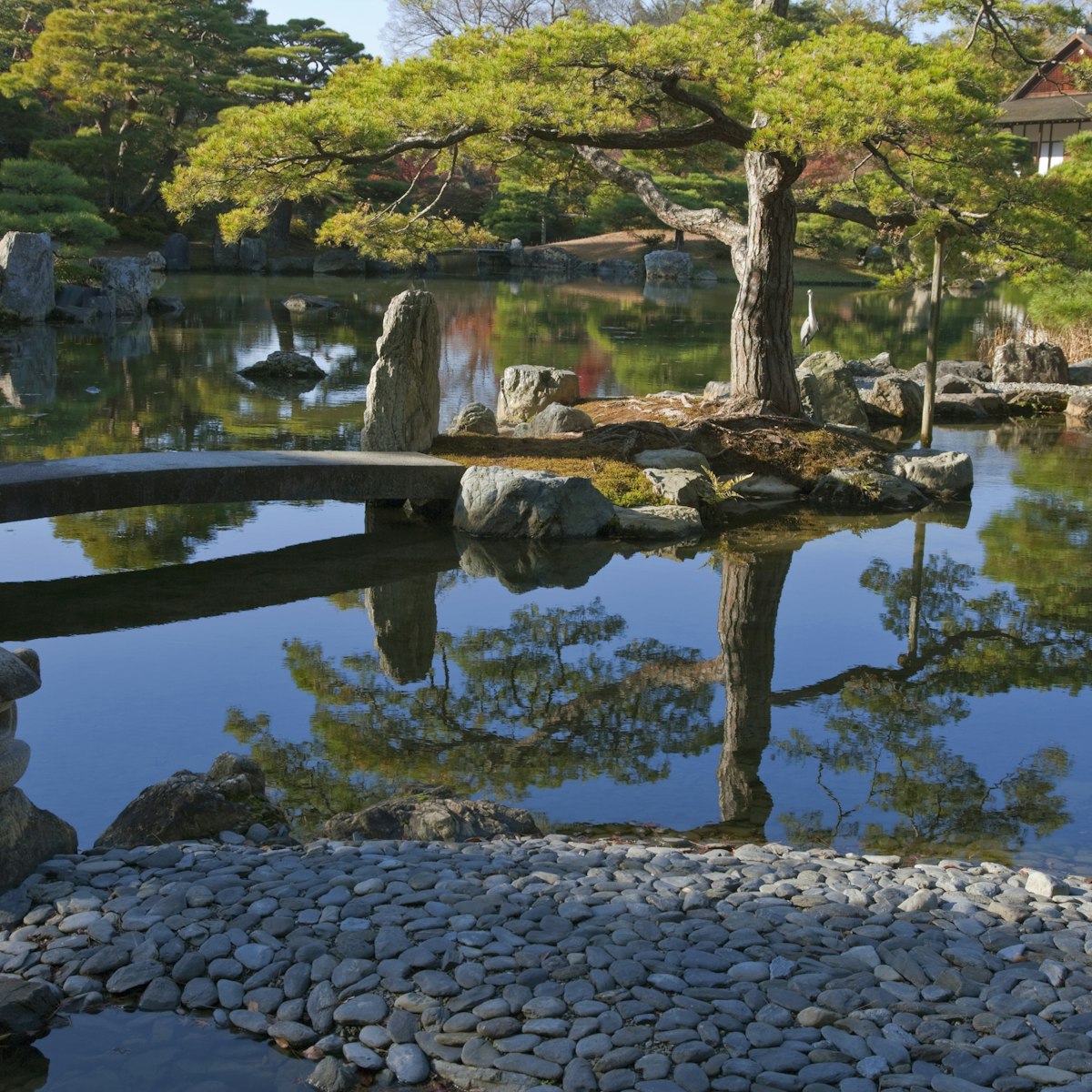
Katsura Rikyū
Katsura Rikyū, one of Kyoto’s imperial properties, is widely considered to be the pinnacle of Japanese traditional architecture and garden design. Set…
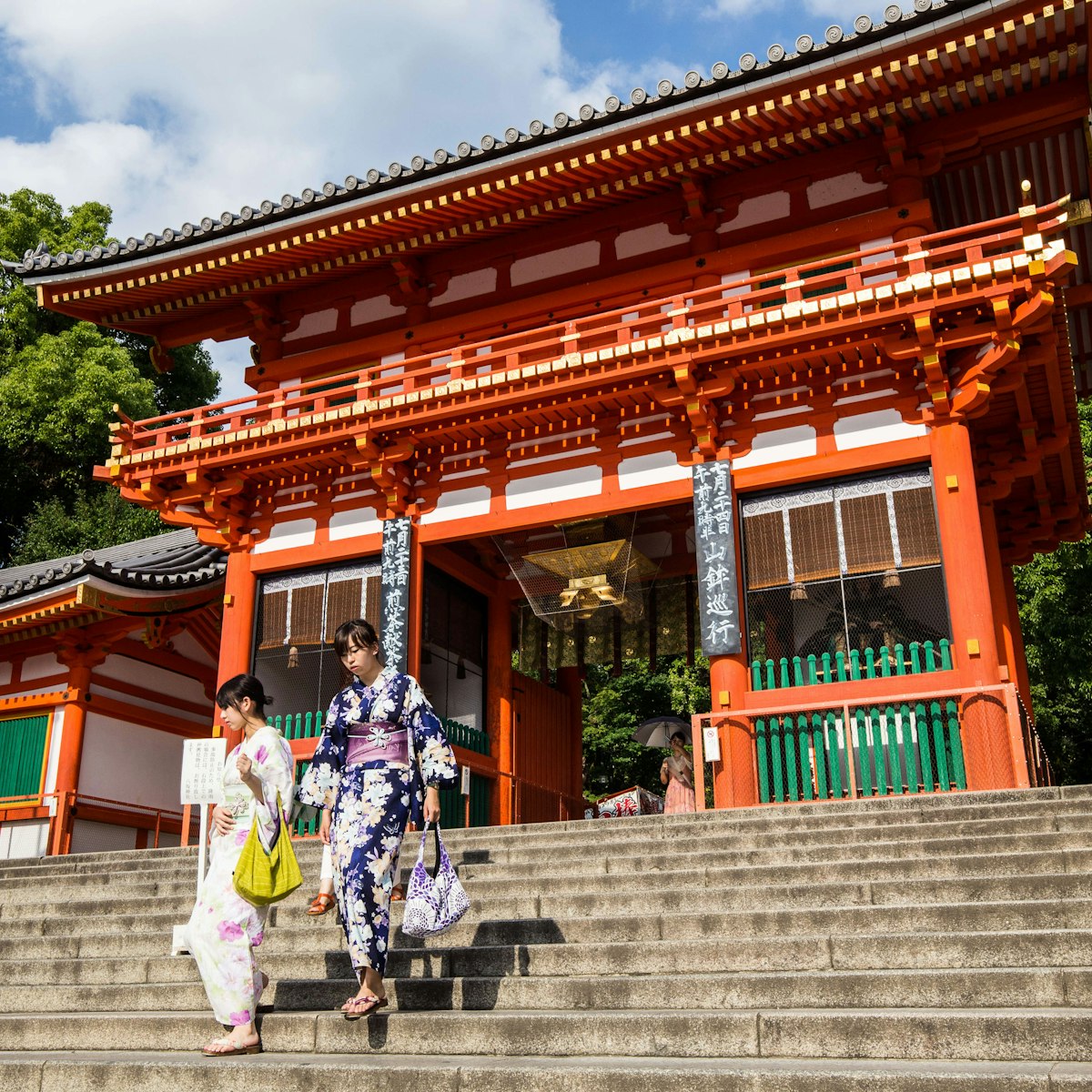
Yasaka-jinja
This colourful and spacious shrine is considered the guardian shrine of the Gion entertainment district. It's a bustling place that is well worth a visit…
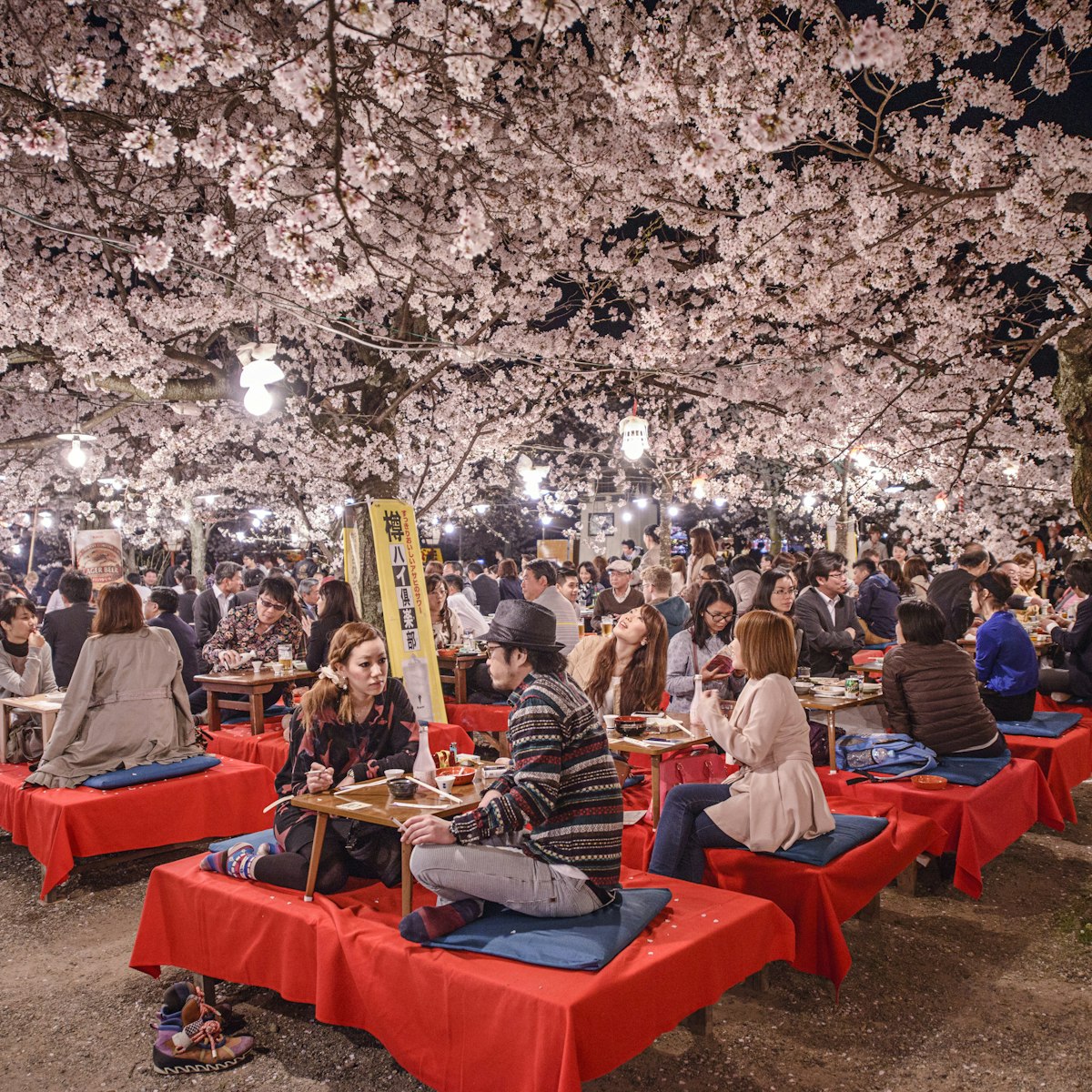
Maruyama-kōen
Maruyama-kōen is a favourite of locals and visitors alike. This park is the place to come to escape the bustle of the city centre and amble around gardens…
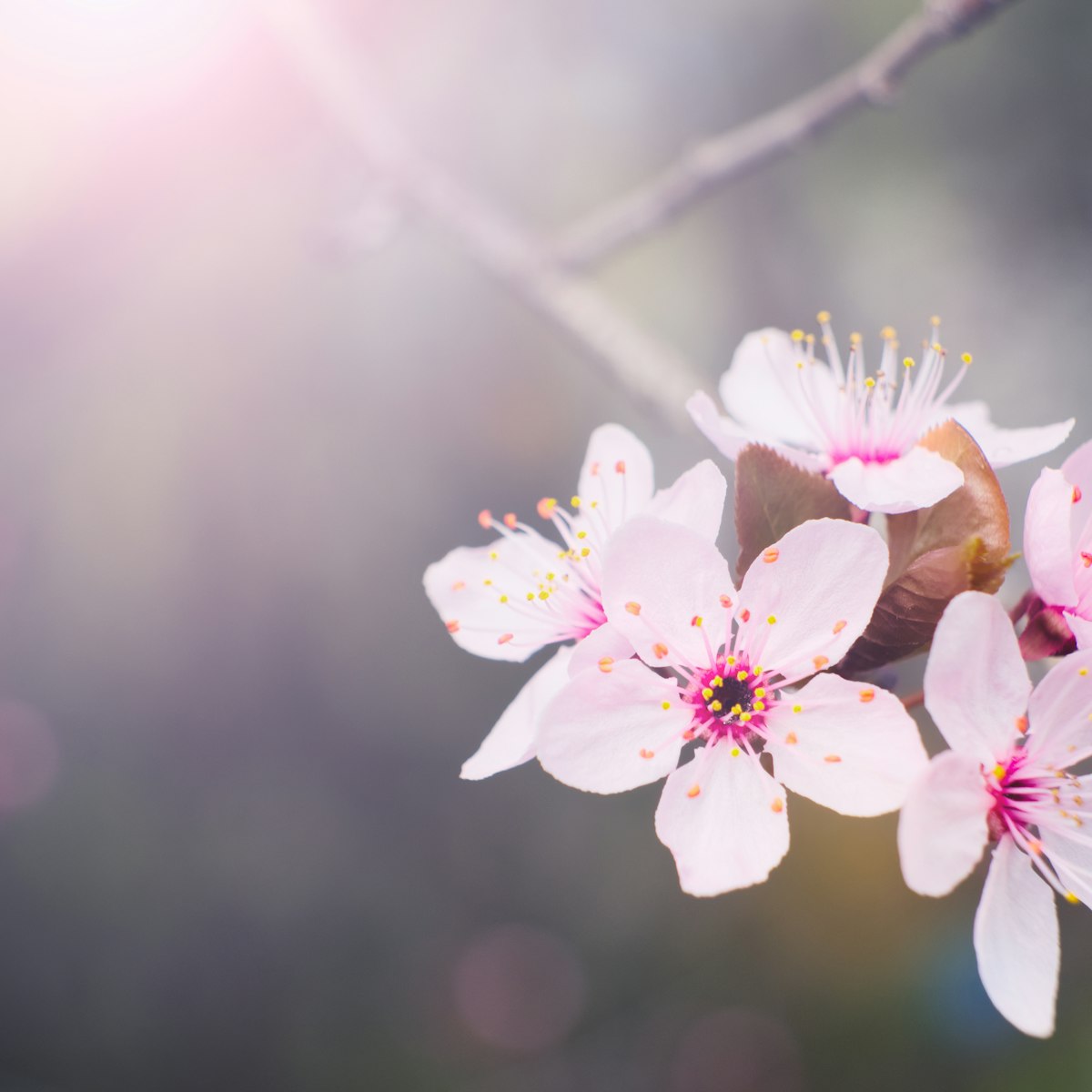
Kyoto Imperial Palace Park
The Kyoto Imperial Palace (Kyoto Gosho) and Sentō Imperial Palace (Sentō Gosho) are surrounded by the spacious Kyoto Imperial Palace Park, which is…
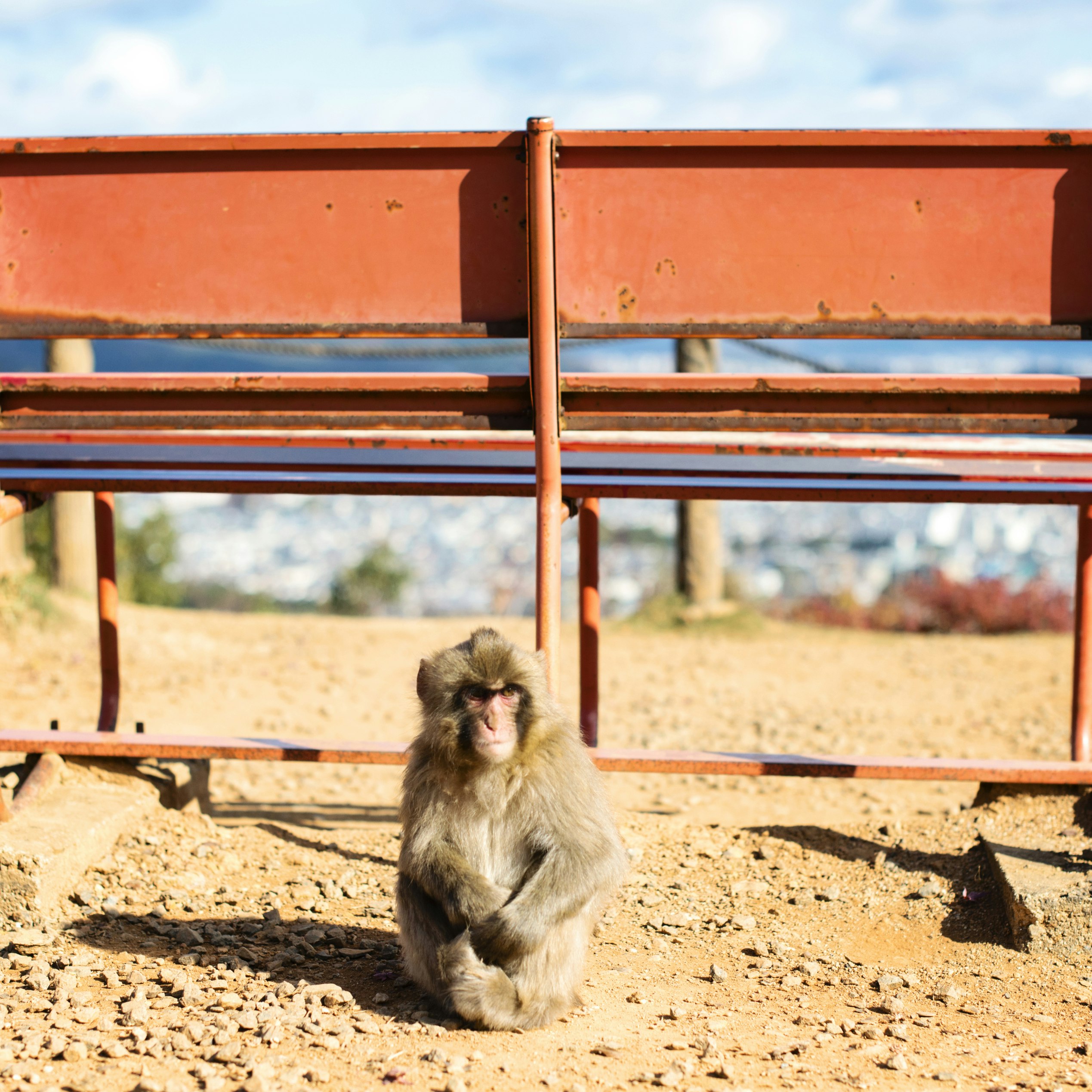
Arashiyama Monkey Park Iwatayama
Though it is common to spot wild monkeys in the nearby mountains, here you can encounter them at a close distance and enjoy watching the playful creatures…
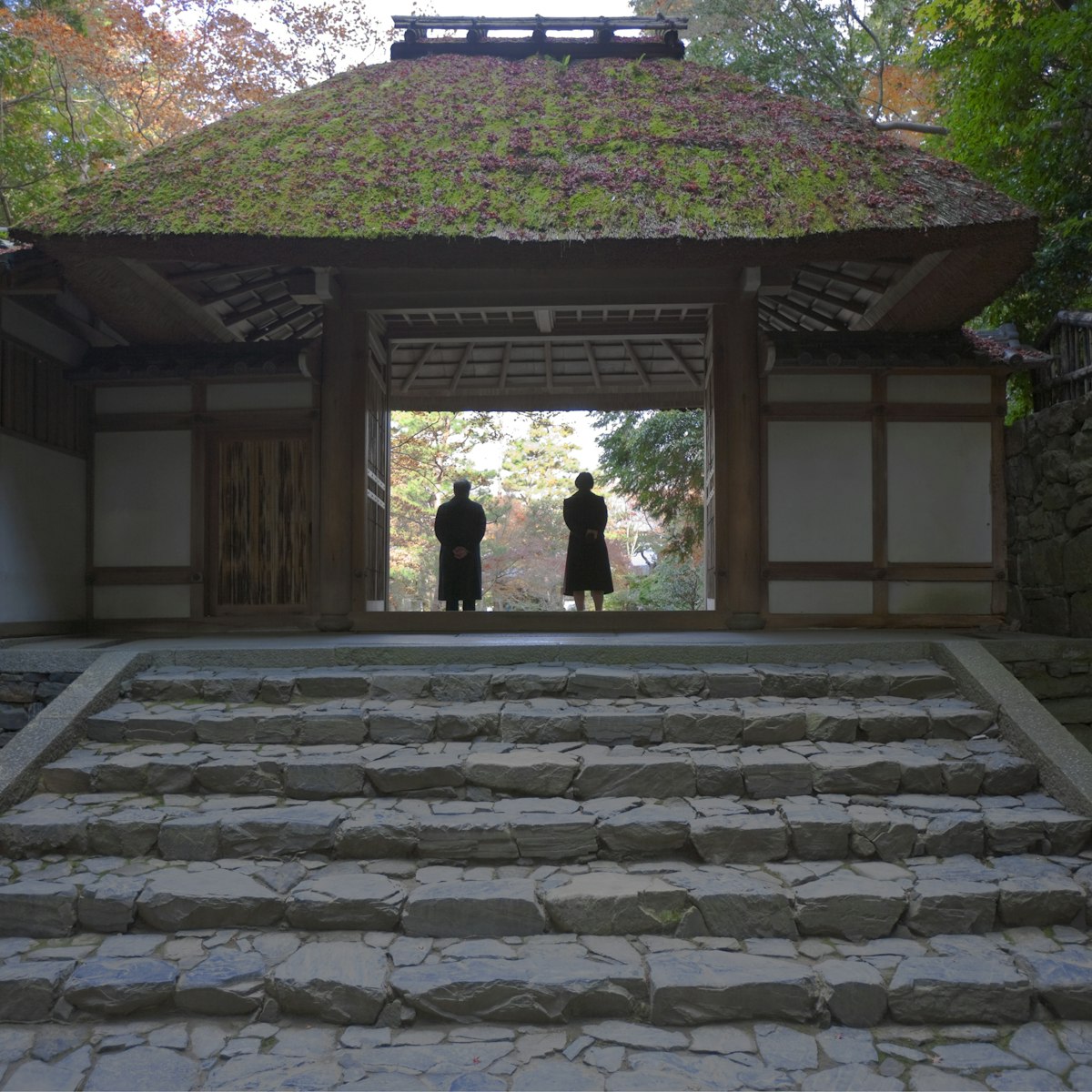
Founded in 1680 to honour the priest Hōnen, this is a lovely, secluded temple with carefully raked gardens set back in the woods. The temple buildings…
Sanjūsangen-dō Temple
This superb temple’s name refers to the 33 sanjūsan (bays) between the pillars of this long, narrow edifice. The building houses 1001 wooden statues of…
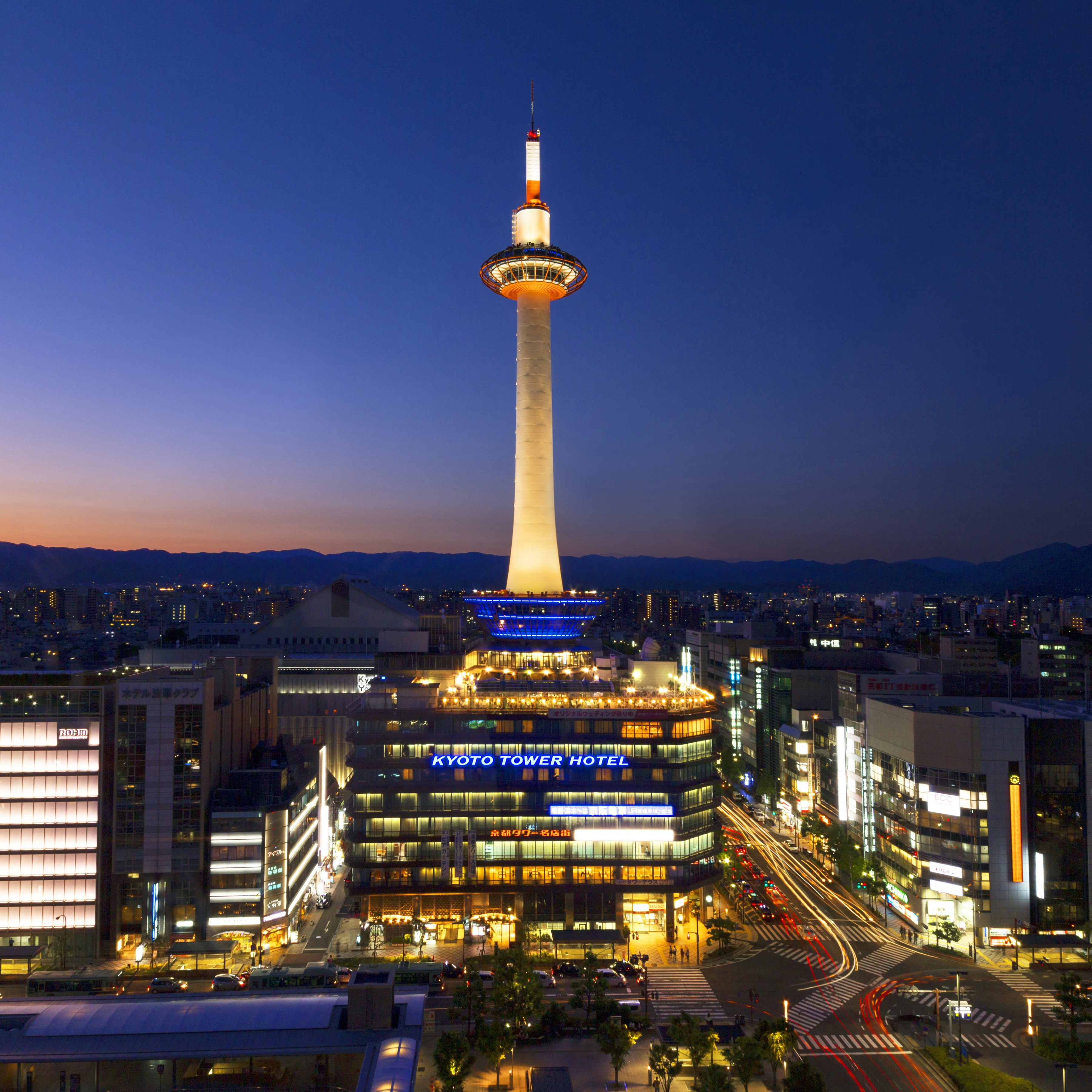
Kyoto Tower Observation Deck
Located opposite Kyoto Station, this retro tower (1964) looks like a rocket perched atop the Kyoto Tower Hotel. The observation deck provides excellent…
Heian-jingū
One of Kyoto’s more popular sights, this shrine was built in 1895 to commemorate the 1100th anniversary of the founding of the city. The shrine buildings…
One of the sights south of Kyoto Station, Tō-ji is an appealing complex of halls and a fantastic pagoda that makes a fine backdrop for the monthly flea…
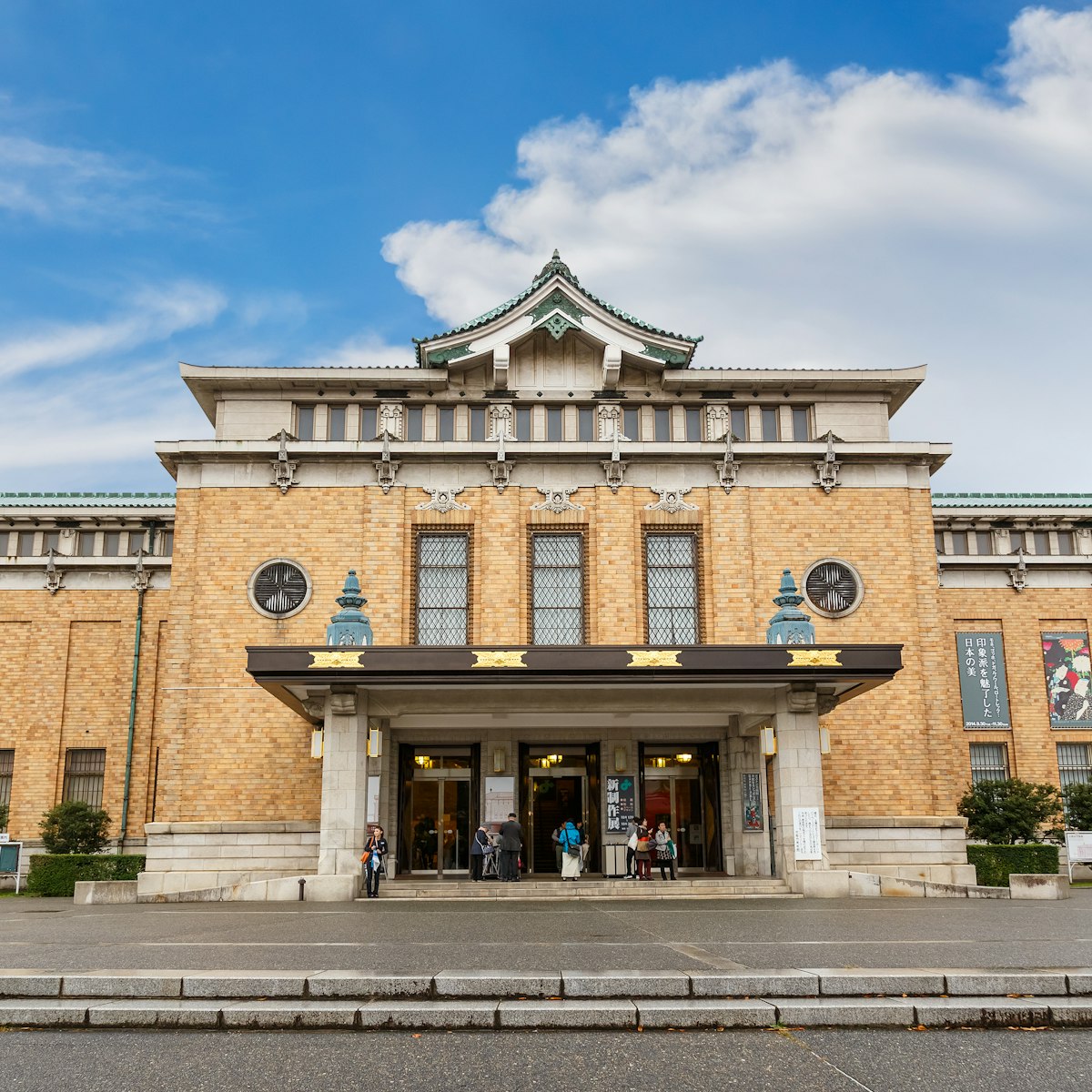
Kyoto City KYOCERA Museum of Art
This fine museum holds several major exhibitions a year, as well as a variety of free shows. It’s always worth stopping by to see if something is on while…
Shūgaku-in Rikyū Imperial Villa
One of the highlights of northeast Kyoto, this superb imperial villa was designed as a lavish summer retreat for the imperial family. Its gardens, with…
Togetsu-kyō
The dominant landmark in Arashiyama, this bridge is just a few minutes on foot from either the Keifuku line or Hankyū line Arashiyama stations. The…
More destinations you need to see
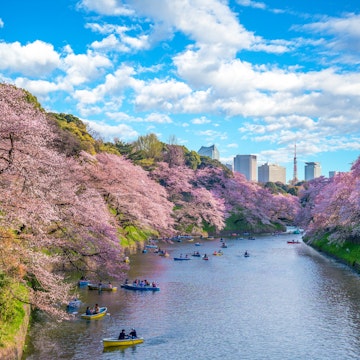

The 18 BEST Things to Do in Kyoto, Japan (2024 Update)
- Last Updated: January 25, 2024
When trying to pick the best things to do in Kyoto, Japan, you can’t go past this guide! Be amazed at what to do in Kyoto, the ancient capital city of the country!
Kyoto is one of the most popular places to visit in Japan and proudly one of the most culturally diverse cities in the world. Many tourists frequent the city every year to experience the uniqueness of Kyoto.
People love Japan for its balance between modern advancements such as in technology while still keeping its traditional roots. Kyoto is no different.
This city remains the go-to destination for those who expect to see magnificent bamboo forests, beautiful Buddhist temples and shrines, theatre, and colourfully dressed geishas.
Visitors should also look forward to walking through brightly coloured Torii gates, learning how to brew Japanese tea, enjoying cherry blossoms and experiencing Buddhism.
READ MORE: Check out our brand new travel to Japan guide!
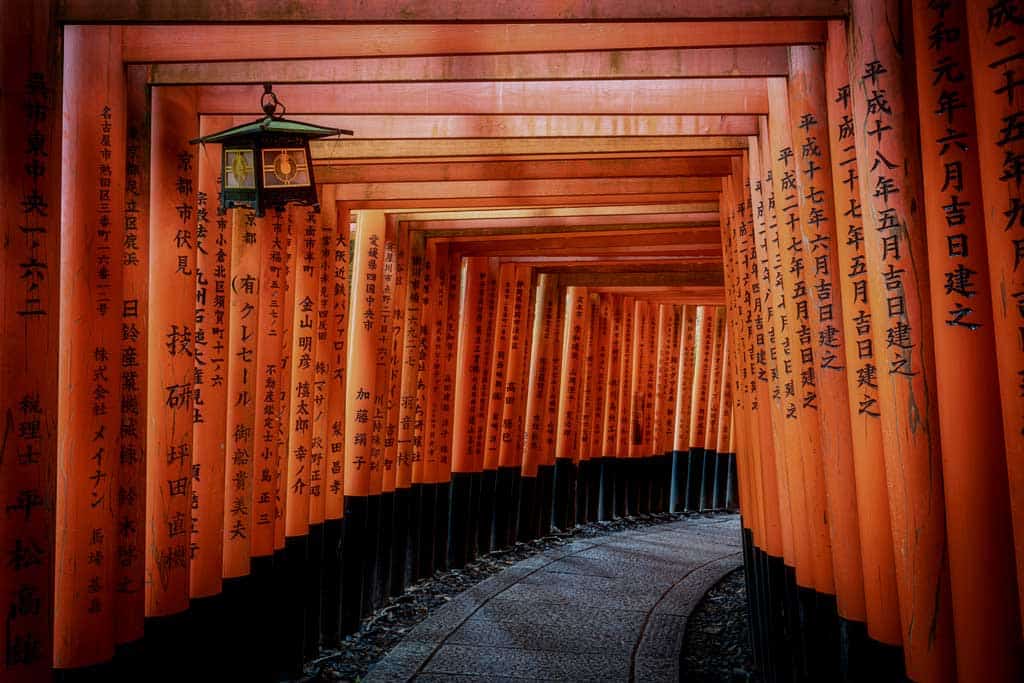
Table of Contents
1. Kinkaku ji Temple
2. ryoan ji temple, 3. kyoto international manga museum, 4. gion – the geisha district, 5. monkey park in iwatayama, 6. nijo castle, 7. visit pontocho for a fine dining experience, 8. tenryu ji temple, 9. kiyomizu dera temple, 10. arashiyama bamboo grove, 11. kifune shrine, 12. fushimi inari shrine, 13. nishiki market, 14. philosopher’s walk, 15. attend a silk weaving and kimono fashion parade, 16. attend festivals and events, 17. fushimi sake district, 18. take part in a traditional tea ceremony, best hostel in kyoto – friends kyo, best mid-range accommodation – daiwa roynet hotel kyoto shijo karasuma, best luxury hotel – the ritz-carlton kyoto, what to do in kyoto – our list of the best attractions.
For those wondering what to do in Kyoto, this is the right article for you.
If you have a short trip planned, check out our detailed 3 days in Kyoto itinerary !
One of the top attractions when you visit Kyoto, the name Kinkaku ji Temple is a translation for Temple of the Golden Pavilion. It was previously known as Rokuonji, however.
This popular Zen Buddhist Temple was the retirement villa for Ashikaga Yoshimitsu, a retired shogun of the Rinzai Sect.
The top two floors of the Kinkaku ji Temple are made in gold leaf as the retired shogun intended originally, hence the name, Golden Pavillion.
The Buddhist temple is a shariden, a place they use to store Buddha’s important items, for example, his ashes.
Visitors get to see different architectural styles on each of the three floors of the Kinkaku ji Temple.
The first floor is made of wood and white plaster. Here, they used the shinden-zukuri style. The second floor is where the Samurais resided, and they used the Bukke style.
The architecture of the third floor resembles that of a Chinese Zen Hall.
A massive pond overlooks the Kinkaku ji Temple, and from the other side, tourists can see the many statues in the building. There is a garden that leads to the Sekkatei Teahouse.
To get to temple, from Kyoto Station take bus number 101 or 205. It costs 230 Yen and takes close to 40 minutes.
Or take the Karasuma Subway Line to Kitaoji Station for 260 Yen for 15 minutes, which is the best way. From there, take a 10-minute taxi (1000-1200 Yen) or bus numbers 101, 102, 204 or 205 (230 Yen) to Kinkaku ji Temple.
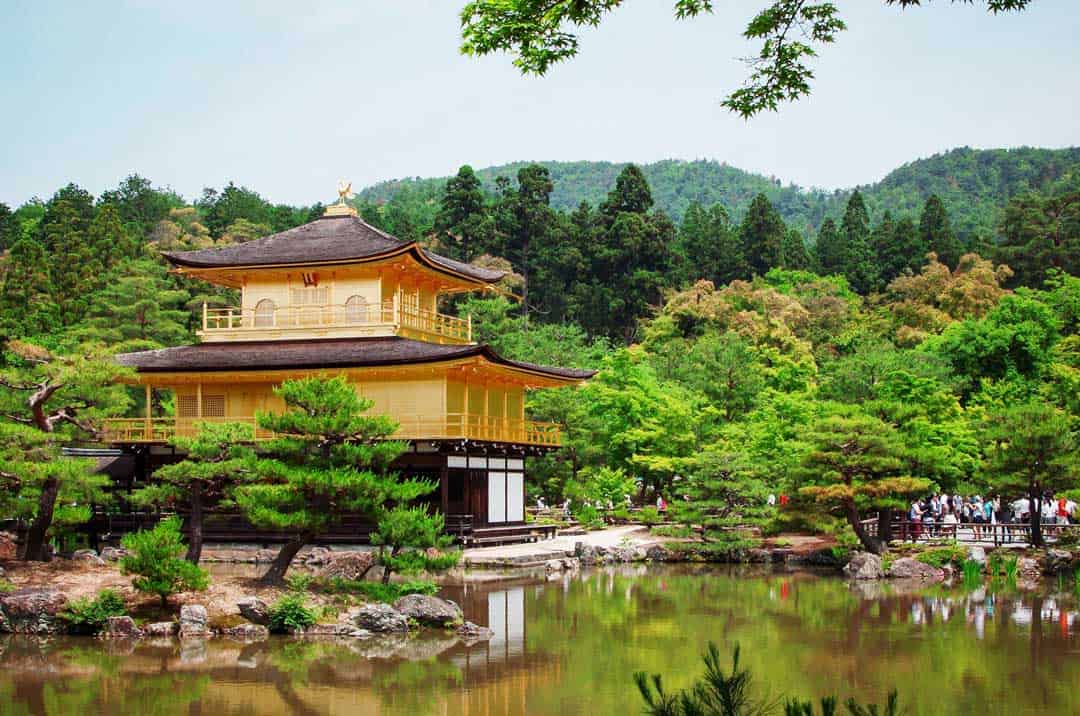
Check out our Japan vlog on exploring one of Kyoto’s famous attractions in Kyoto, Japan
Of all of the temples and shrines in Kyoto, Ryoan ji Temple is another popular Kyoto must-see site for tourists because of its spectacular rock garden.
The Myoshinji School of the Rinzai sect of Zen Buddhism owns the garden, and the head temple is located one kilometre south of the garden.
Despite the mystery surrounding its construction and motive, many people believe that it is up to each person to interpret the meaning for themselves.
The garden itself is made up of a low stone wall surrounding a plot with 15 stones laid in groups on moss. Small white pebbles cover the rest of the garden.
Fun fact is that no matter where a person stands, one rock will always be out of view for him or her.
There is a pond that is believed to have existed since the time the aristocrats lived there with a shrine on one of its islands.
Book a half day tour to enjoy the Ryoan ji Temple, one of the best things to see when visiting Kyoto.
One can access the Ryoan Ji Temple from Kinkakuji by a 20-minute walk or a 5-minute bus ride. A more direct route is by JR bus. The journey costs 230 Yen and is about 30 minutes long.
READ MORE: Want to see other places in the area? Check out these great day trips from Kyoto !
This fascinating museum opened in November 2006. It has three floors with walls lined with manga comics on its shelves.
The Kyoto International Manga Museum is a welcome change from the traditional types as it deals with a current popular Japanese art form, Manga.
It is one of the few Kyoto attractions that are unique and educational for tourists as it features modern art forms such as manga.
Although manga is an internationally-recognised art form, most of the books in the museum are in Japanese.
Books written by international artists are also on display in the museum, and their work is included in events held by the manga museum on the subject.
Besides the vast manga display, there is a display of things that belonged to the elementary school that was hosted in the building before. The Kyoto International Manga Museum is definitely one of the coolest attractions in the city.
It is two minutes from the Karasuma-Oike subway station. It costs 210 Yen, and the journey is about 5 minutes long.
READ MORE: Looking for something to do at night in Kyoto? Read this post on all the city has to offer!
People recognise the Japanese culture by its beautiful and colourfully dressed geishas.
Being the most popular geisha district, the government financed Gion’s restoration by running all overhead utilities below the ground to maintain its original beauty, tradition, and charm.
Visiting the Minamiza Theatre, popular for its Kabuki shows, is an interesting thing to do in Kyoto. Kabuki shows are a theatrical performance that incorporates dance, over-the-top makeup, and bright colors.
Tourists visit Hanami-koji Street for its gift shops, restaurants, teahouses (ochaya), and places where geishas (geiko in Kyoto dialect) and maikos (geisha protégés) perform.
For those who like fine dining, Hanami-koji Street, located from Kennin ji Temple to Shijo Avenue is the place to visit in Kyoto.
The well-preserved machiya houses on the street and in the alleys serve both local and international cuisines. Next to Shijo Avenue is the Shirakawa Canal, a quieter version of Hanami-koji.
For the best souvenirs and authentic Japanese street finds around Kytoto, visitors can visit Higashiyama District between Kiyomizu dera and Yasaka Shrine.
Make sure you sign up for this awesome Geisha night walk around Gion!
Check out our Japan vlog on exploring one of Kyoto’s famous Gion District in Kyoto, Japan
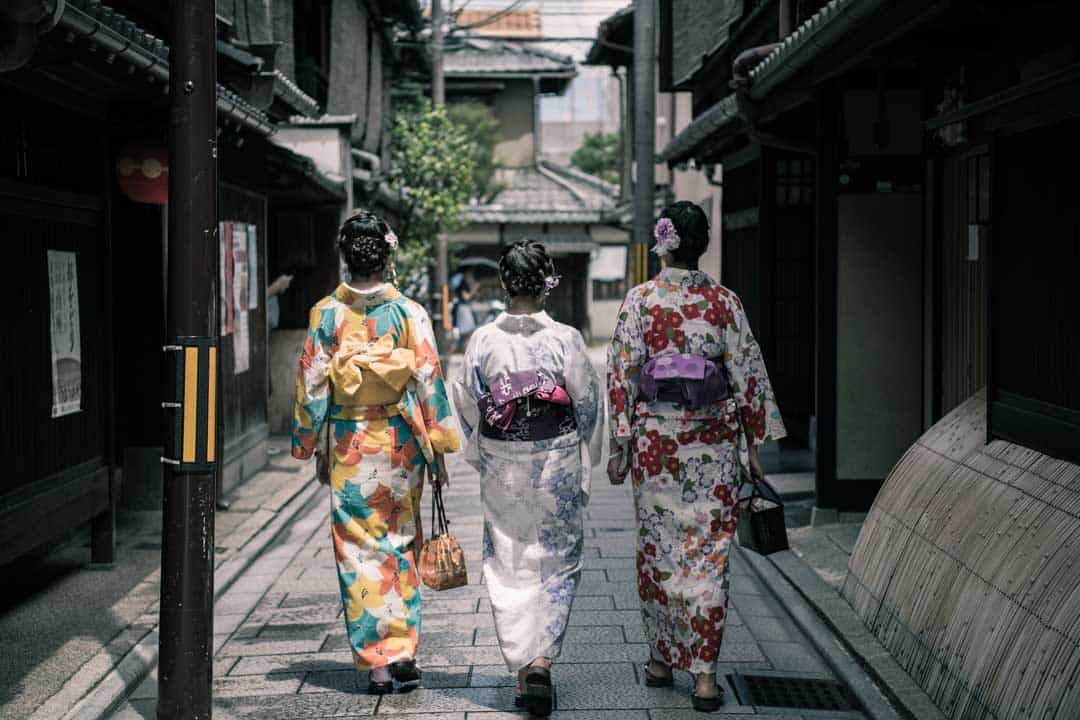
Of all the things to see in Kyoto, the Japanese Macaques (snow monkeys) are the most fascinating. They are beautiful and may even steal food from visitors that are inattentive.
The hike to the top of Mount Arashiyama is treacherous but worth it because of the great view of the city. Visitors are placed in cages so that they are protected from aggressive monkeys during feeding.
Food for the monkeys can be bought in the park for a chance to interact with the monkeys.
The park is also educational as there are quizzes that inform visitors about the monkeys and their habitat. This is definitely one of the more unique things to do in Kyoto.
Visitors can get to Iwatayama Monkey Park by either a 30-40-minute hike up the slopes of Mount Arashiyama or a 5-minute walk from the Hankyu Arashiyama Station.
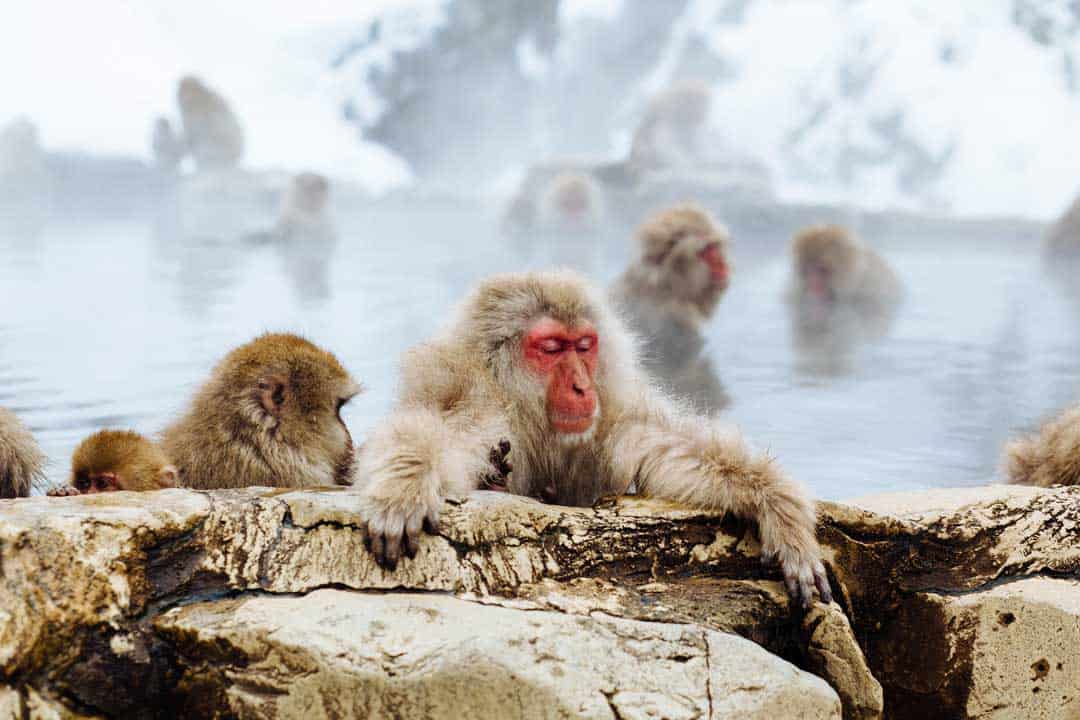
Nijo Castle is a robust imperial palace built to protect its inhabitants from any attacks.
Its layout consists of an outer wall, an inner wall for extra security, and the grounds with a garden surrounding the palace.
The main building is the Nimonaru Palace. It is where the shogun resided and has an amazing interior with sliding doors, each of which has a different design.
The Ninomaru Garden is beautiful with a pond surrounded by pine trees around it. The famous cherry blossoms are also found in the garden.
There is a second palace in Nijo Castle called Honmaru Place. Due to the damage it has sustained over the years, visitors aren’t allowed in the castle.
Tourists are, however, free to explore, see the outer wall, and even climb it for a better view.
Nijo Castle is a UNESCO World Heritage Site. Book your skip-the-line entrance ticket on Klook , which also includes entry to another nearby castle, Ninomaru Palace.
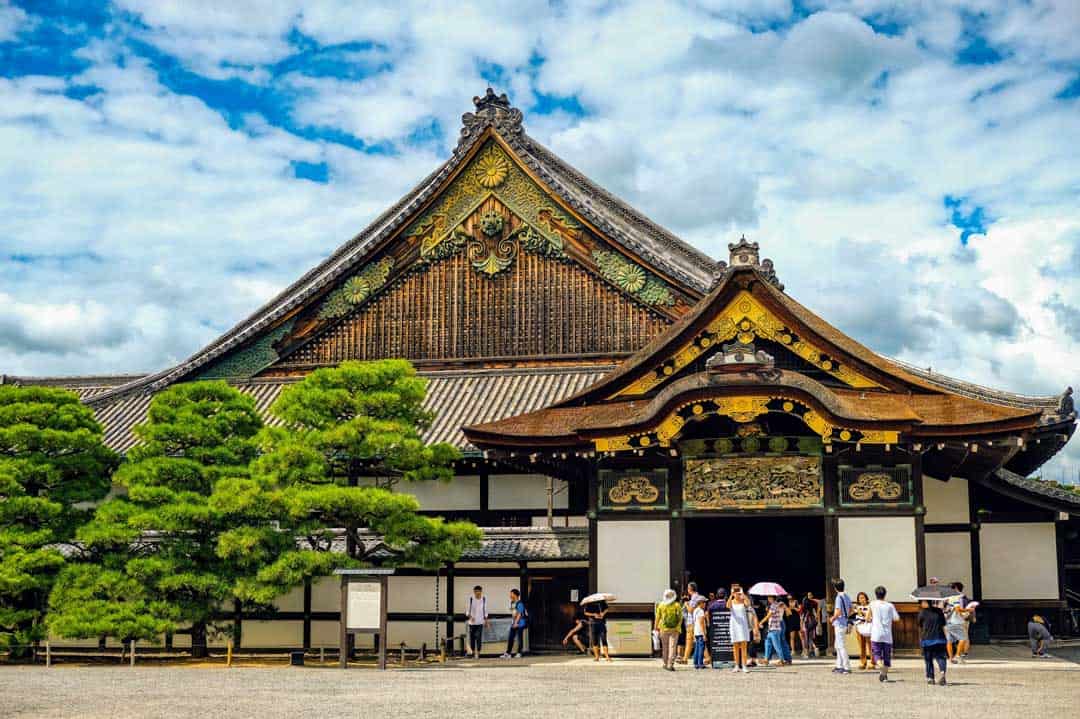
Kyoto is a major cultural city, and Pontocho offers visitors interested in fine dining with an opportunity to try out different Japanese cuisines.
It is located near the Komogawa River with hundreds of restaurants varying from expensive fine dining experiences to affordable yakitori.
To experience the best of Pontocho, ignore the guidebook and explore different restaurants. The best ones are usually smaller and not along the main way. They will probably only have their menus in Japanese.
The trick is to eat at a restaurant that pleases the visitor. On those hot and sunny days, a cool breeze from the Komogawa River may make the experience even better.
If you really love your food but would prefer to do this in style with a local, book yourself into a tour. They’re not cheap, but your tastebuds will thank you forever!
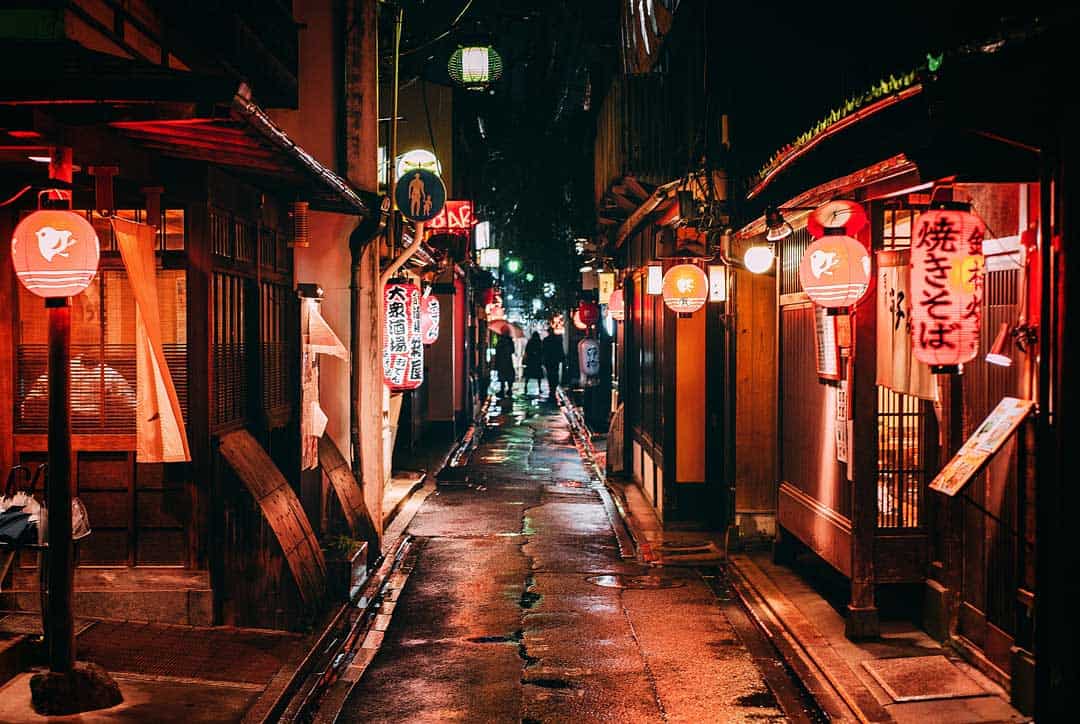
Because of its great cultural and historical significance, the Tenryuji Temple is recognised as a UNESCO world heritage site and is a top attraction in Kyoto.
It is the head temple built by Ashikaga Takauji, a ruling shogun in 1339.
The buildings of the Tenryuji temple may have been lost in fires and wars over the years; the garden remains in its original state, however.
The great garden designer, Muso Soseki, who was also the temple’s first head priest, designed it. The pond in the middle of the ground is surrounded by rocks.
It is also surrounded by pine trees and a forest on the slopes of the Arashiyama Mountains. Seasonal cherry blossoms add charm to the temple in spring.
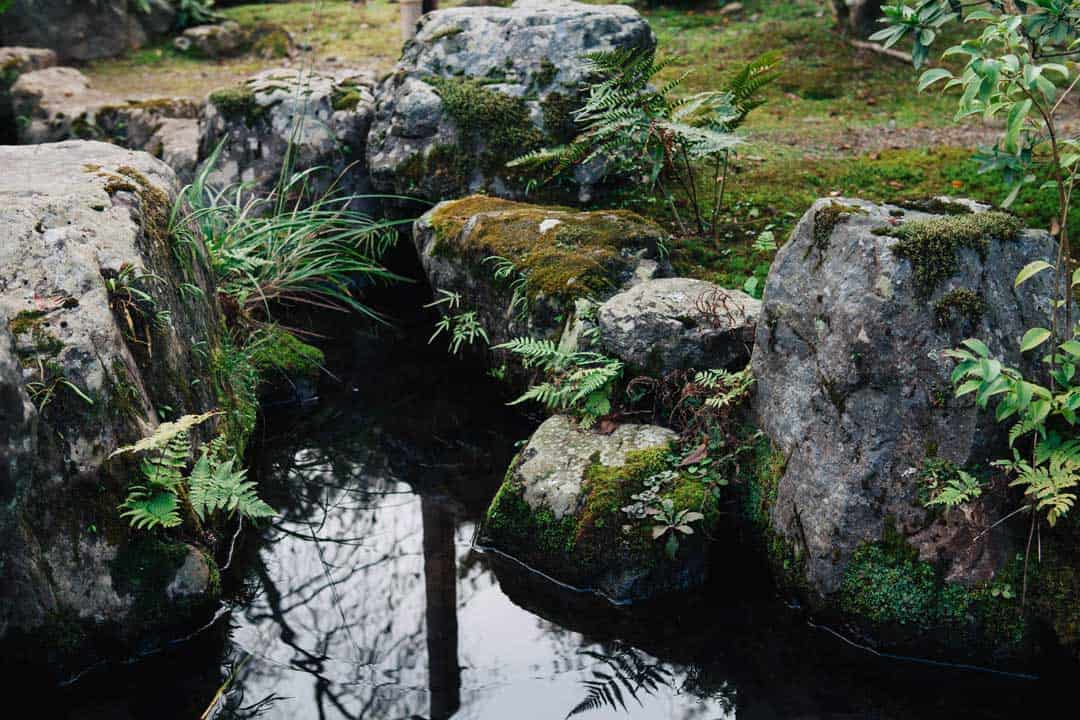
Built in 778, Otowa-san Kiyomizu Dera Temple is a Buddhist temple that is one of the most popular Kyoto attractions.
People recognise the Kiyomizu Dera Temple by its main hall characterised by a vast wooden terrace overlooking the beautiful city of Kyoto.
Fun fact: not a single nail was used to construct the 13-meter-high terrace. They used a method called hell frame and used 139 trees in its construction.
Under the main veranda is the Otowa Waterfall with three streams that the locals believe could give a person long life and success in their relationships and academics.
There are many restaurants and gift shops along the streets to Kiyomizu Dera Temple making this one of the best places to explore around Kyoto.
Kiyomizu Dera Temple is located in eastern Kyoto and a 10-minute ride by bus numbers 100 and 206 from Kyoto station
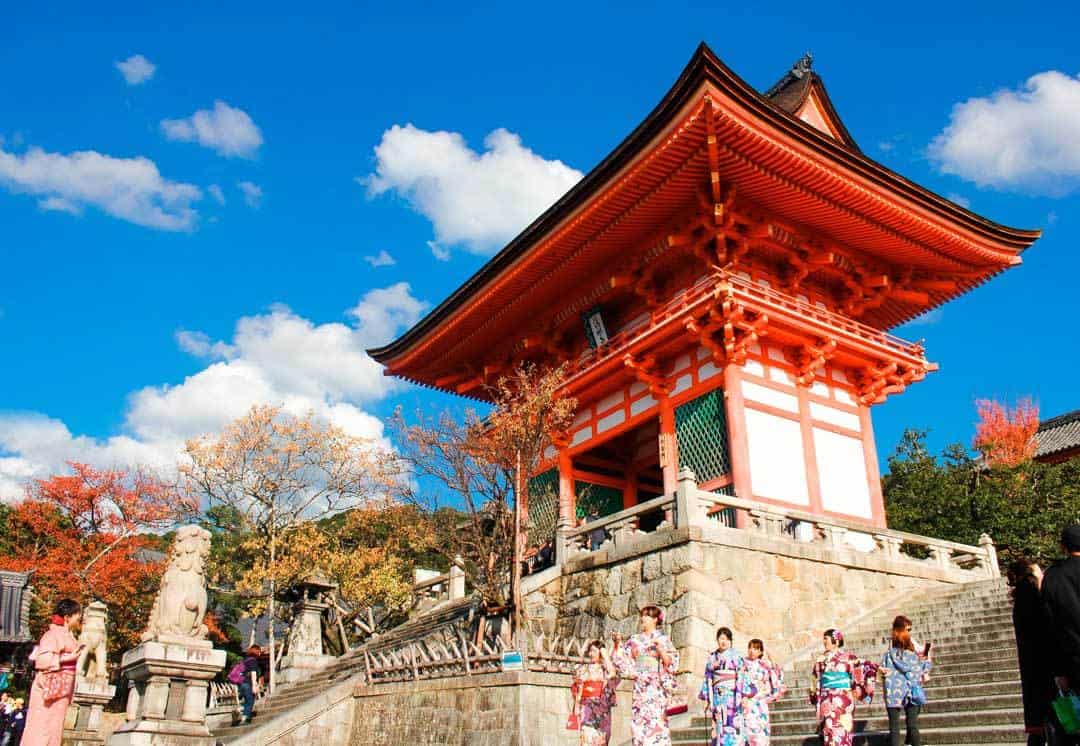
Free Things to Do in Kyoto, Japan
Not everything in the city costs money though! In fact there are some incredible free things to do in Kyoto as well, so you can save your cash for more sushi and sake!
Of all the places to visit in Kyoto, this one is probably the most famous. And aside from the cherry blossoms, the Arashiyama bamboo forest is perhaps the most familiar association with Japan.
The Arashiyama bamboo grove is a glorious bamboo forest, where the shoots rise dozens of metres high and sway gently in the wind.
You have most likely seen the photos of the Arashiyama bamboo forest, as they are very popular on Instagram.
That also means that the grove is absolutely packed throughout the day! Our secret tip is to get there early in the morning before sunrise, as you’ll avoid all the tour buses.
Get to the Arashiyama bamboo grove by taking a train from Kyoto station to Arashiyama station. From there it’s just a 10-minute walk to the entrance of the paths, just follow the signs.
This picturesque destination in Kibune Village is popular for those who are into photography because it is beautiful.
It is also a popular wedding destination and is known for its auspiciousness, especially for newlyweds.
There is a lovely stone staircase with red lanterns on the sides as you approach the main hall of the shrine. Visitors can also drink goshinsui (sacred water) from the mountain in Kibune.
For those who are superstitious, Kifune Shrine is the place to visit as it is where the locals worship Kami, a water deity.
One can buy fortune-telling paper, mizuura mikuji, and then place it in water near the main hall.
After a while, fortune reading regarding a person’s life will appear and eventually fade as the paper stays in the water.
Translations for the fortunes are available using a QR code reader.
Spiritual individuals may decide to take a pilgrimage through the three main areas in Kifure: the main shrine, Yui no Yashiro, and the Okunomiya.
One can get to Kifune by Eizan train as the town is 30 minutes from Kyoto. One can also take a 25-minute walk from Kibuneguchi station. There is also bus number 33 to Kifune.
The Fushimi Inari Taisha Shrine is recognized as Kyoto’s most important Shinto shrine as it is the head shrine of the deity Inari.
He is believed to be the patron of prosperity for businesses, traders, and industrialists. He is also the Shinto god of rice and sake.
Located at the foot of Mount Inari, it goes up to 4 kilometers up the mountain with its many sub-shrines.
The shrine has a rich history spanning back to 711 AD, making it one of the oldest landmarks in Kyoto.
Its main entrance to the shrine is the Romon Gate. It was first built in 1589 with the blessing from Toyotomi Hideyoshi, the ruler of Japan and a samurai warlord.
At the back are the Senbon Torii, donated by owners of businesses in Japan hoping for good fortunes. Their names are inscribed in black on the Torii gates, and they cover a hiking trail.
The Fushimi Inari shrine has some fox statues across the ground with some of them having keys in their mouths.
The Japanese believe that foxes are the gods’ messengers and the keys are for the rice granaries they are protecting.
Due to its historical and cultural significance, deservedly so, the Fushimi Inari Taisha shrine is on every traveler’s list of what to see in Kyoto. Visit early in the morning to escape the crowds.
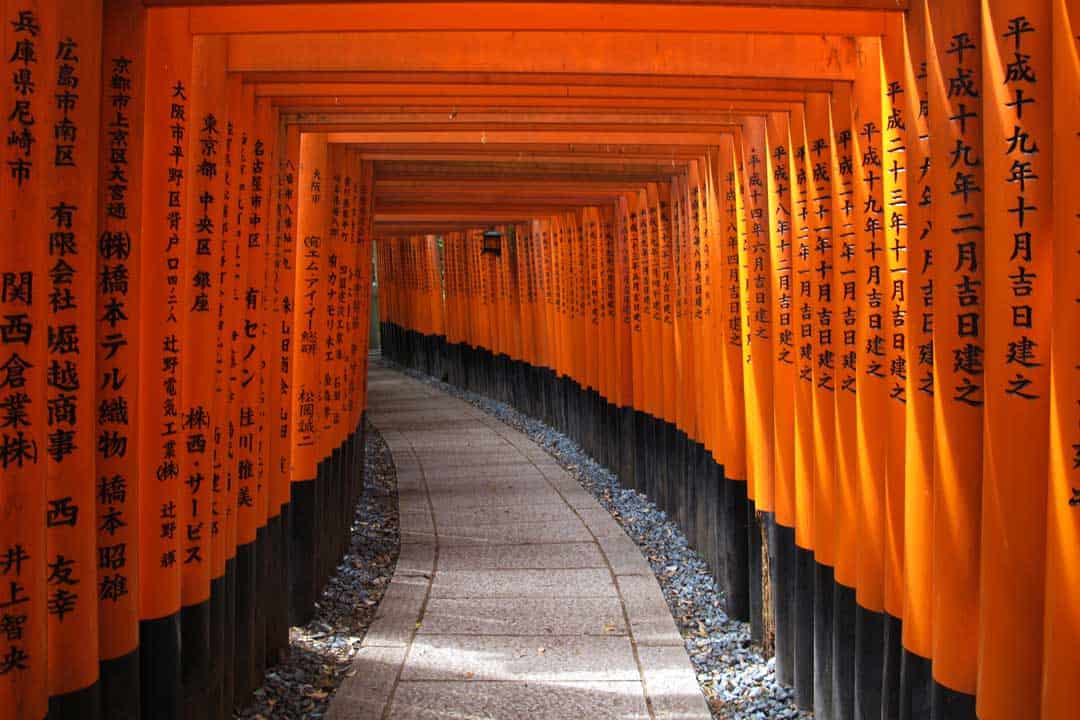
For tourists looking to experience authentic Japanese food, one of the best things you can do is check out the busy 5-block long Nishiki Market.
There are approximately 120 stalls, each of which is selling some form of Japanese delicacy. One can also get specialty items that are only locally available in Japan.
Despite how huge it is and the possible language barrier, one of the best things to do in Kyoto is to check out the Nishiki Market.
For those who have no experience with Japanese flavors, try some green tea. Be adventurous as there are many delicacies to choose from.
There are also trendy shops like Konnamonja that offer tofu made ice cream and doughnuts.
All serious traveling gourmets know that the Nishiki market is definitely one of the places to visit in Kyoto!
Book a 4-hour guided walk of Nishiki market where you will be introduced to great food and sake!

It is a mile-long path that the Japanese philosopher, Nishida Kitaro, used when he walked to Kyoto University in the early 20th century.
It is next to the Biwa Canal with cherry blossoms along the path. It takes about an hour to walk across the whole length of the trail.
Visitors can start the path at Ginkaku-ji, heading south along the path until the end of the path in Nanzenji. There are shops, restaurants, and even vending machines along the path although there are no restrooms.
It’s located in the Higashiyama district of northern Kyoto. There are no restrictions as to when one can walk the path. Take bus number 5, 17, or 100 from Kyoto Station to the beginning of the path at Ginkaku-ji.
One of the most notable fashion items from Japanese culture has to be the Kimono. It is a beautiful traditional dress that women still wear to this day.
During festivals and other occasions such as autumn and cherry blossom seasons, one can notice most women are dressed in Kimonos and Yakata.
The best place around Kyoto to see the Kimono styled and worn is the Nishijin textile centre. Here, they offer a kimono fashion parade several times a day.
There is a display of silkworms that produce silk that are used as textiles. There are also weaving demonstrations that explain how they make more complex fabrics and wall hangings.
Don’t miss out on the opportunity to see a kimono fashion parade, it’s one of our favorites Kyoto tourist attractions.

The locals in Kyoto enjoy themselves by showcasing their rich culture, traditions, and food.
A visitor on a budget with limited things to do in Kyoto may enjoy free festivals and events as they get to interact with the locals and learn more about the Japanese culture.
Such festivals include Aoi, Jidai and Gion festivals, Setsubun, and New Year celebrations among other seasonal events.
The autumn and cherry blossom seasons (Sakura) are famous for festivals.
Many travelers plan their travels during the bloom of the cherry blossoms, it’s an important part of the full Kyoto sightseeing experience.
A great way to experience the traditional Japanese culture is attending a local festival.

Located along Horikawa River, Fushimi is the top sake-brewing district in Japan and one of the best places to visit around Kyoto.
The underground springs provide soft and clean water that is good for brewing sake. Fushimi is located between two rivers with a strategic shipping position.
All these contributed to the growth of the town to a leading sake-brewing district with the popular Gekkeikan Brewery being founded in 1637.
For those wondering what to do in Kyoto, they can take a wooden boat for a sightseeing cruise from Gekkeikan Brewery and the Teradaya Inn up the Uji River for about 55 and 40 minutes respectively.
There are many ways to get to Fushimi, one of which is a 12-minute ride on the JR Nara Line then a 20-minute walk from Momoyama Station.

Because Kyoto is so in touch with its traditional roots, this is one of the best places in Japan to try a tea ceremony.
The traditional Japanese tea ceremony originated in Kyoto, and many locals still practice the ritual today.
Within Kyoto there are a few schools dedicated solely to the tea ceremony. They are casual places that emphasize the relaxation and grace associated with a tea ceremony.
Matcha is most commonly used in a tea ceremony. This finely powdered green tea is whisked into hot water and eventually made into a warm, strong, heartwarming drink.
You can book a 45-minute tea ceremony with an English speaking guide at Urasenke, one of the biggest tea ceremony schools in Kyoto.
Kyoto is a modern and equally traditional city that is magnificent to any tourist that visits it. There are many things to do in Kyoto that will be memorable for years to come.
Whether it be visiting the historic Buddhist temples and shrines or the Manga art museum, or walking among cherry blossoms or a bamboo forest, there is something for everybody. There are expensive options and affordable options for those on a budget.
Kyoto is a must see city that is warm and welcoming to visitors and encourages everyone to have a good time. You can experience traditional Japanese culture and still have all the modern amenities you may need.
Kyoto Travel Guide
In order to help you make the most of all the awesome Kyoto attractions and activities, you need to have somewhere great to use as a base.
That’s why we’ve put together this Kyoto travel guide to help cut out the guesswork.
Where to Stay in Kyoto – The Best Accommodation
If you’re still in the planning stages of your trip and are wondering where to stay in Kyoto, we’ve done the research and are happy to share with you the top 3 accommodations depending on your budget.
For backpackers on a budget, there’s no better place to call home while you’re exploring all the best Kyoto activities than Friends Kyo, right in the Gion district.
They have awesome chilling out areas, including a fantastic rooftop garden and a cool lounge. The dorms are great, clean and cheap. And best of all, they offer free laundry!
It may have a long name, but this is one of the nicest mid-range hotels in all of Kyoto! If you’re looking for super clean, spacious, affordable and with a great location, you can’t beat it.
Free wifi throughout the hotel is available, and there’s a great buffet breakfast served up every morning.
If you’re looking for the absolute best place to rest your head at night, then you can’t beat the Ritz-Carlton in Kyoto.
This hotel was only opened in 2014, making it very new with all the top modern amenities you could ever need, and it’s proudly the first luxury urban resort in all of Japan.
Whether you’re here for business or want to spoil your significant other, this is the place to be seen in Kyoto!
DISCLAIMER: Some of the links in this article are affiliate links, which means if you book accommodation, tours or buy a product, we will receive a small commission at no extra cost to you. These commissions help us keep creating more free travel content to help people plan their holidays and adventures. We only recommend the best accommodations, tours and products that ourselves or our fantastic editorial team have personally experienced, and regularly review these. Thanks for your support, kind friend!
Alesha and Jarryd
Hi, We’re Alesha and Jarryd!

We’ve been traveling the world together since 2008, searching for the planet’s best destinations and adventures.
Love Travel?
Sign up for our free weekly newsletter for the best travel tips, ideas and deals!
We respect your privacy. Unsubscribe at any time.
READ MORE...
19 BEST Things to Do in Osaka, Japan [2024 Edition]
The Perfect 3 Days in Tokyo Itinerary
The Best Day Trips from Every City in Japan [2024]
Related Posts
18 amazing things to do in kyoto at night (2024 guide), 10 best day trips from kyoto, japan [2024 travel guide], the 12 best things to do in otaru, japan (2024 edition), 17 awesome things to do in hiroshima, japan, 2 thoughts on “the 18 best things to do in kyoto, japan (2024 update)”.
On our first trip to Japan, Tokyo just didn’t compare to the beauty and tradition of Kyoto, but on our last visit we came to appreciate it for all the fun things to do, diverse neighbourhoods, and fantastic food. We’ll definitely be back.
Well I would love to see those amazing thing myself.
Leave a comment Cancel reply
Save my name, email, and website in this browser for the next time I comment.

20 Best Things to Do in Kyoto, Japan (Beginner’s Guide)
Kyoto, the old capital of Japan for over 1,000 years, still retains much of its traditional heritage. Explore Kyoto’s top sites and hidden gems, from tranquil zen gardens and enchanting geisha dances to bustling markets and serene shrines. In addition to its many historical attractions, Kyoto is also a great place to enjoy the outdoors. For more eco-conscious travelers, the city has several parks and green spaces, as well as a number of rivers and lakes. And for nature lovers, there are numerous hiking and cycling trails in the surrounding area. Here are the 20 best things to do in Kyoto!
Best Things To Do in Kyoto
For a detailed 3 days in Kyoto check out our Ultimate 3-Day KYOTO Itinerary .
1. Visit Fushimi Inari Shrine and Hike Through Torii Gates
The Fushimi Inari Shrine is one of the most popular tourist attractions in Kyoto. The shrine is dedicated to the deity Inari responsible for a good harvest and business success. It features a beautiful path lined with over 1000 red Torii gates. The hike up to the shrine takes about two hours, and it provides stunning views of the city and did we mention there’s less crowds up there.
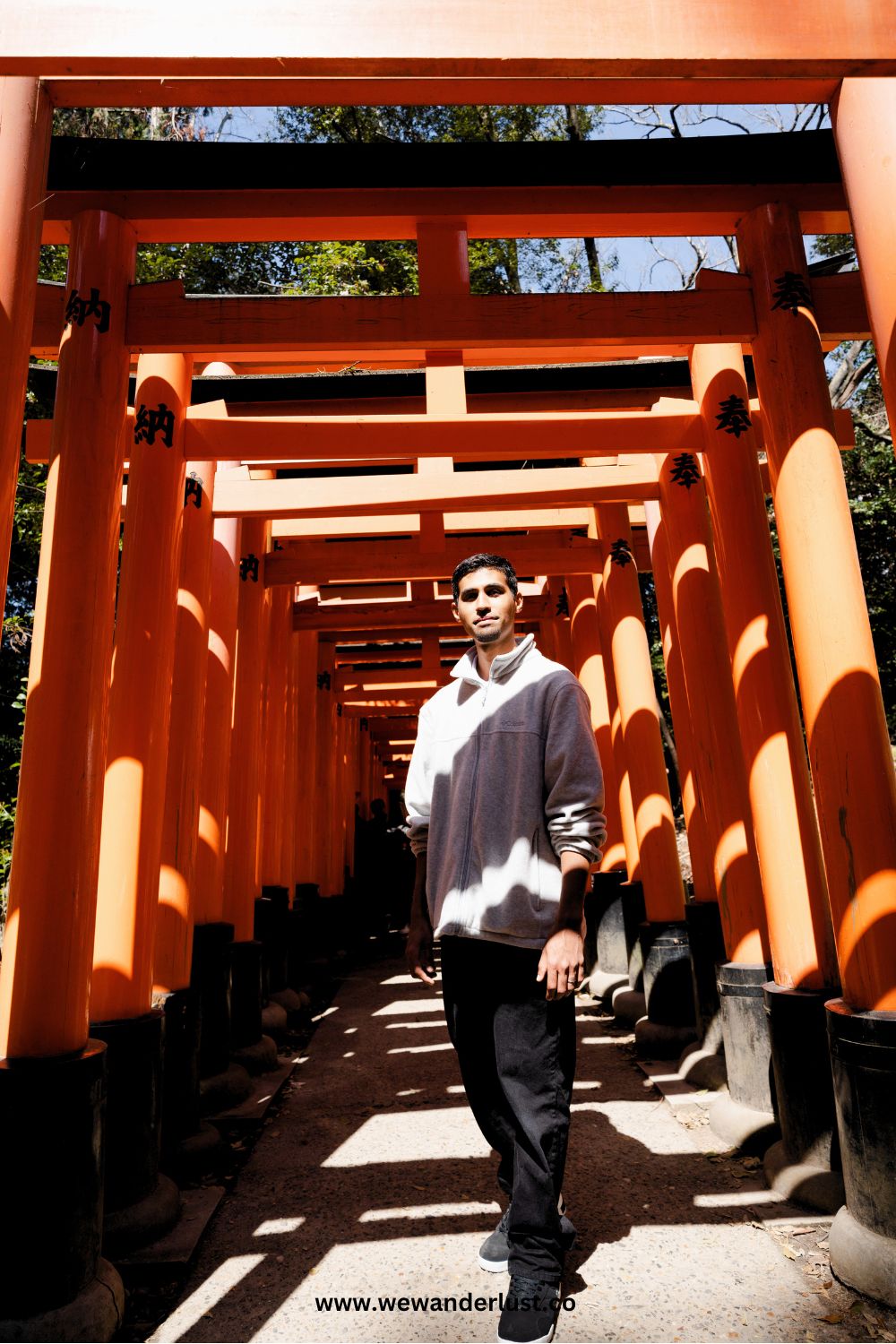
Hiking through the torii gates is an unforgettable experience, and it’s something that everyone should do while in Kyoto. The hike is relatively easy, and it’s a great way to get some exercise while enjoying the beauty of nature.
After your hike, be sure to stop by one of the many food stalls at the base of the shrine. There, you can try delicious local dishes like yakitori (grilled chicken).
2. Visit the Nishiki Market
The Nishiki Market is one of the best places in Kyoto to try local food. The market is home to over 100 stalls, and you can find everything from fresh produce to grilled meats and seafood. There are also a number of restaurants and cafes where you can sit down, enjoy a meal and just simply observe daily life of vendors and locals going about their day.
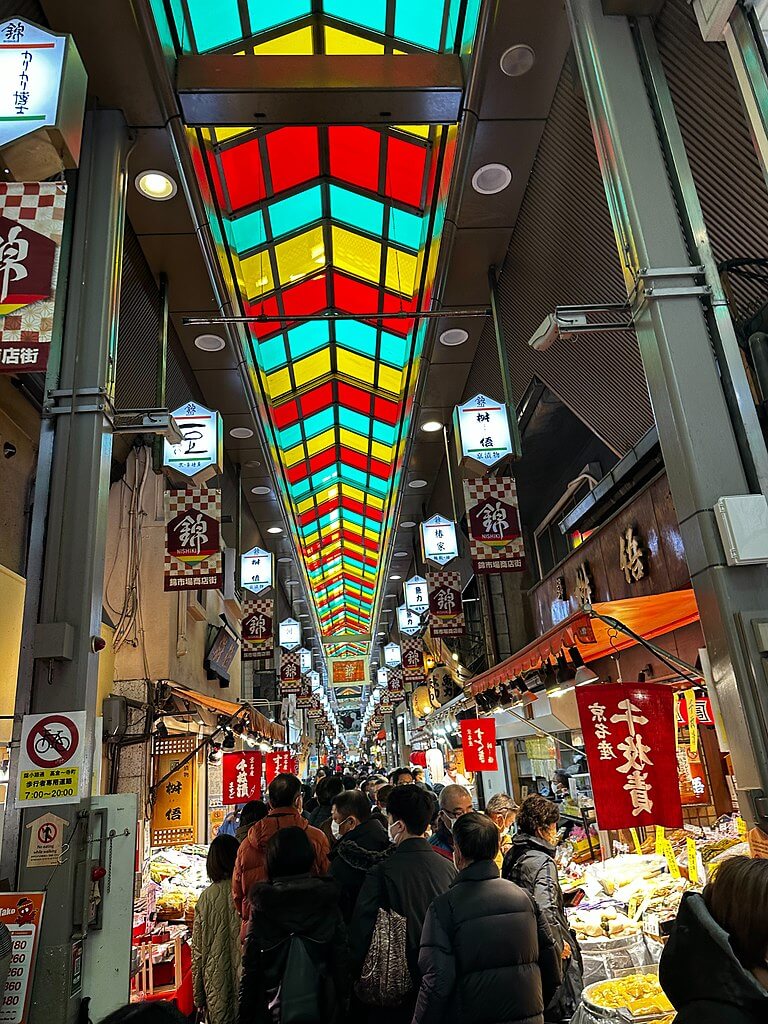
If you’re feeling adventurous, why not try some of the more unusual foods on offer? The market is a great place to find things like grilled eel and tofu skin . You can buy souvenirs and gifts at many of the stalls as well.
The Nishiki Market is a must-visit for anyone visiting Kyoto. It’s a great place to sample the local cuisine and find some unique gifts. Thanks for reading, and we hope this guide has helped you plan your trip!
3. Visit Pontocho Alley
Pontocho Alley, a narrow historic district in Kyoto, Japan, offers a glimpse into traditional Japanese culture. Lined with teahouses, restaurants, and bars housed in historic wooden buildings, this atmospheric alley transports visitors back in time. Though generally safe during daylight hours, Pontocho can become crowded and boisterous at night, especially on weekends, when the area transforms into a lively nightlife destination.
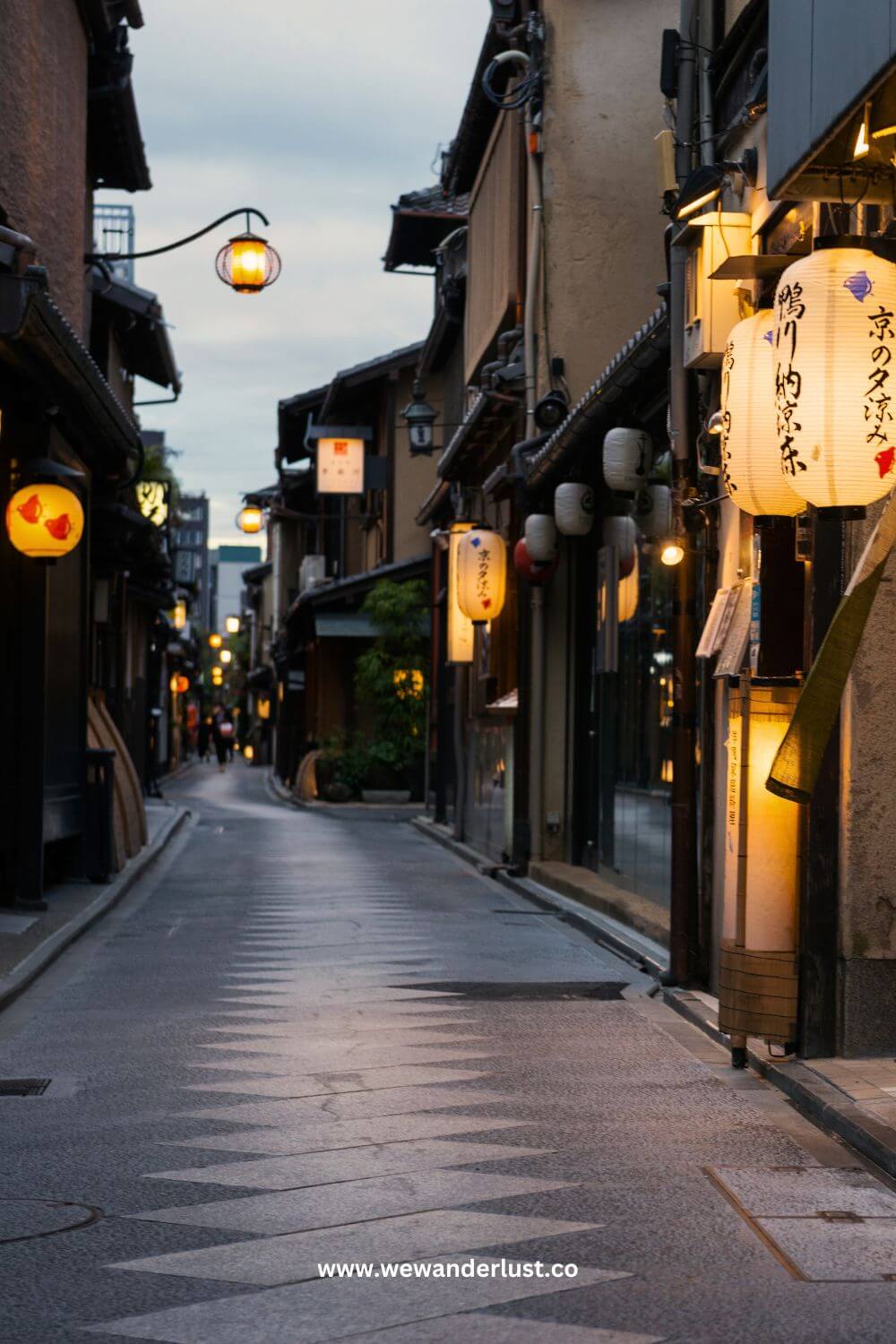
Here are some things to know about Pontocho Alley:
- Pontocho, a pedestrian-only street lined with traditional wooden restaurants and tea houses overlooking the Kamo River, is considered by many to be the most picturesque street in Kyoto .
- This historic dining and entertainment district, just a 3-minute walk from Kawaramachi Station, prohibits cars, modern buildings, and neon signs.
- You can access Pontocho from the nearby Shijo Kawaramachi bus stop, served by lines 17 and 205 from Kyoto Station.
See all Kyoto Stays
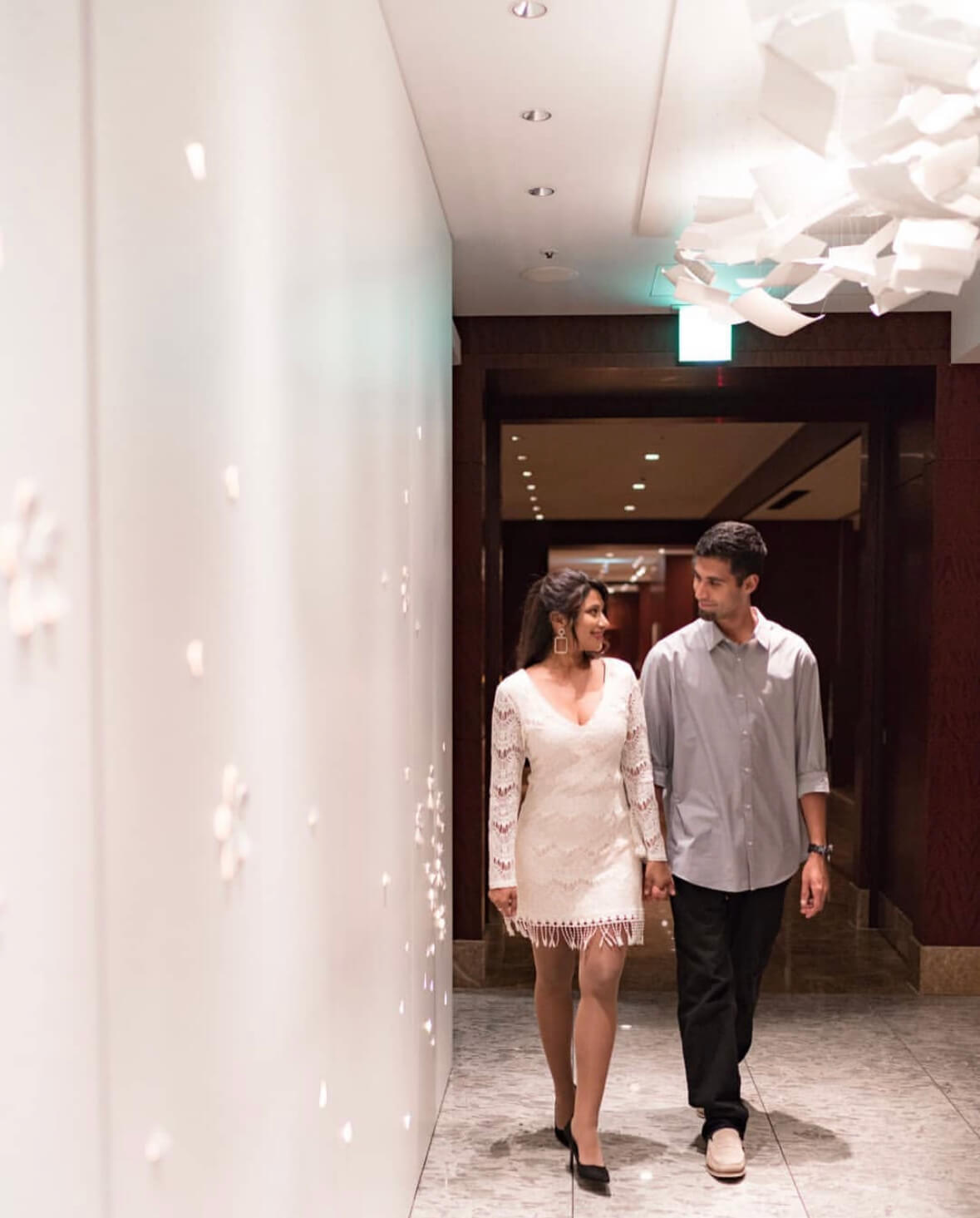
4. Visit the Kinkaku-ji Temple
The Kinkaku-ji Temple, also known as the Golden Pavilion, is one of Kyoto’s most iconic landmarks. The temple is covered in gold leaf, and it’s surrounded by a beautiful garden. The temple was built in the 14th century, and it has been designated as a UNESCO World Heritage Site.
Explore the grounds, admire the architecture, and learn about the history of the temple. Experience a traditional tea ceremony at a tea house on the premises, where you can relax and enjoy a cup of green tea.
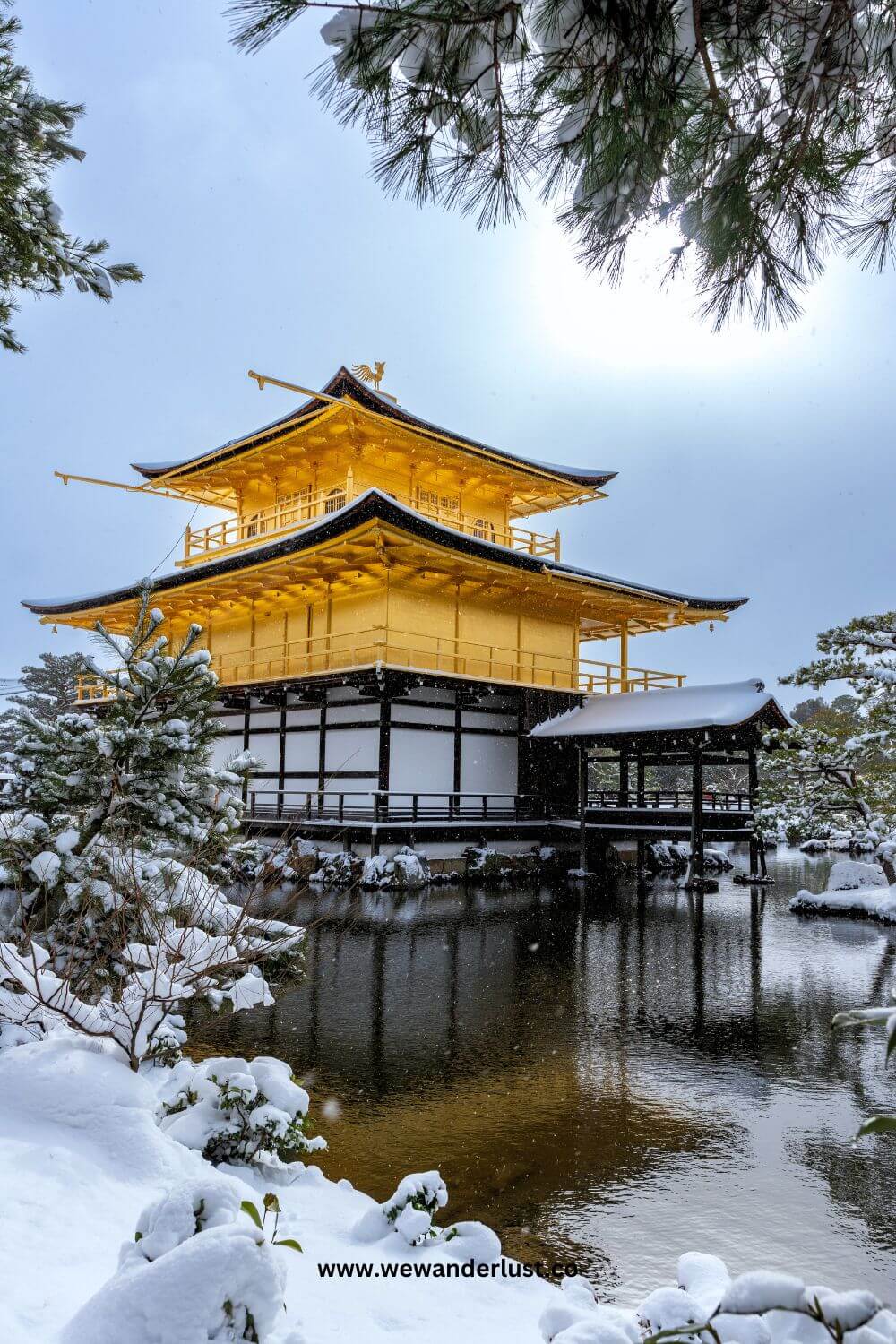
The Kinkaku-ji Temple is a must-see for anyone visiting Kyoto. It’s a beautiful example of traditional Japanese architecture, and it’s surrounded by stunning gardens.
Tip: The best time to visit Kinkaku-ji temple is during winter when the surrounding areas and trees are covered in white snow only leaving the golden pavilion to shine. Although, Spring and Fall are also popular.
5. Visit Gion District
The Gion District in Kyoto is popular for good reason. The district is home to a number of traditional Japanese buildings, as well as a large number of restaurants and shops. The Gion District is where you can also see the elusive geishas, who are trained entertainers that wear traditional Japanese clothing.
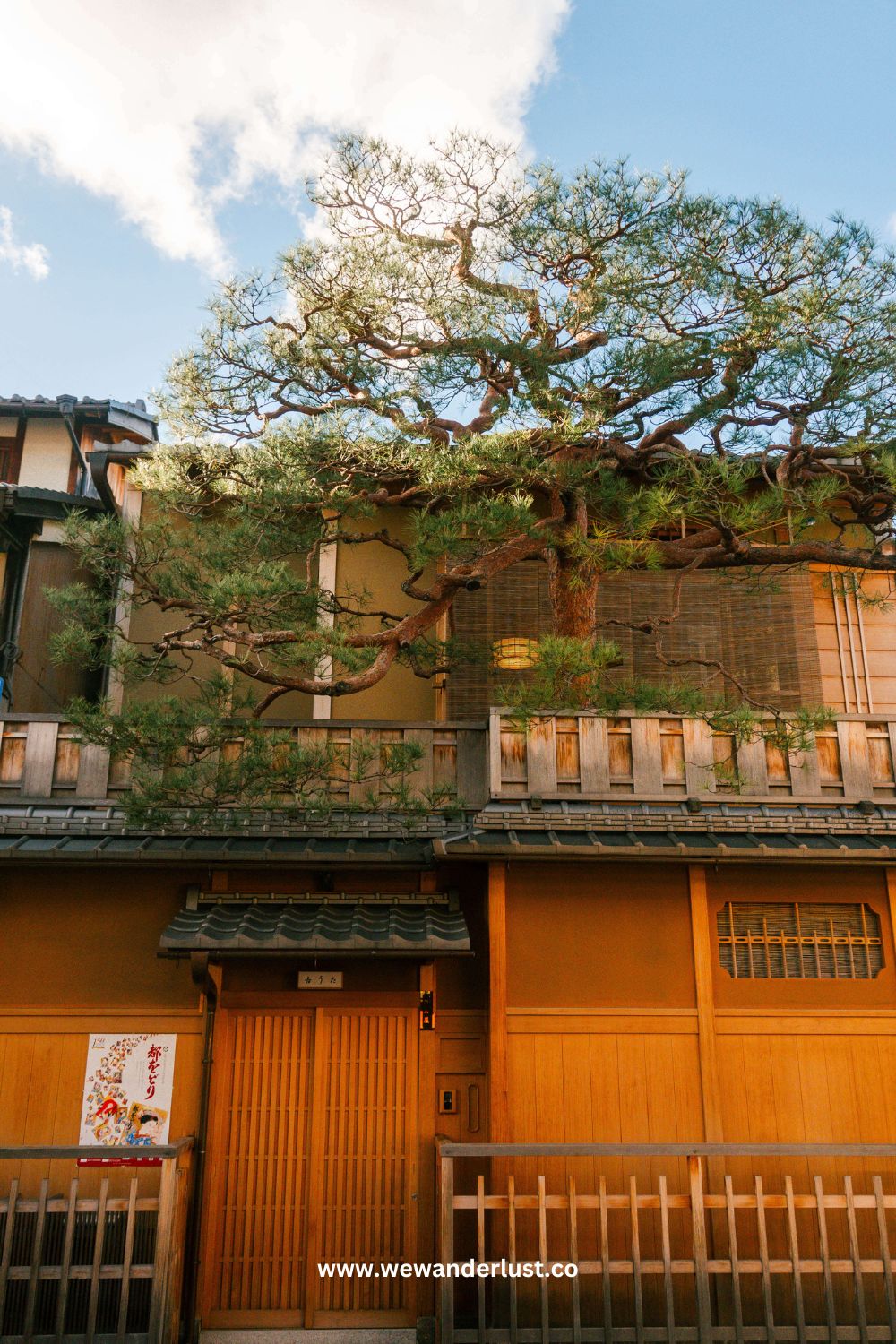
The best time to see geishas in the Gion District is during the late afternoon or evening, when they are out walking to appointments. If you’re lucky, you may even spot a geisha on her way to work at a tea house or restaurant. Luckily for us, we spotted 3 different geishas walking away from crowds.
Tip: Please be respectful when you are around geishas or trying to photograph them. It’s best to ask for permission first or shoot from a distance.
Due to recent incidents of tourists disrespecting geishas by running after them, taking unsolicited selfies and touching them, some of the streets have closed to tourists that were open before.
See more Kyoto Stays
6. visit hanami-koji street.
Hanamikoji Street is a historic street in Kyoto. It’s located within the Gion district, east of Gion Shijo Station, and halfway down Shijo-dori street. The name translates to “Blossom Viewing Lane”.
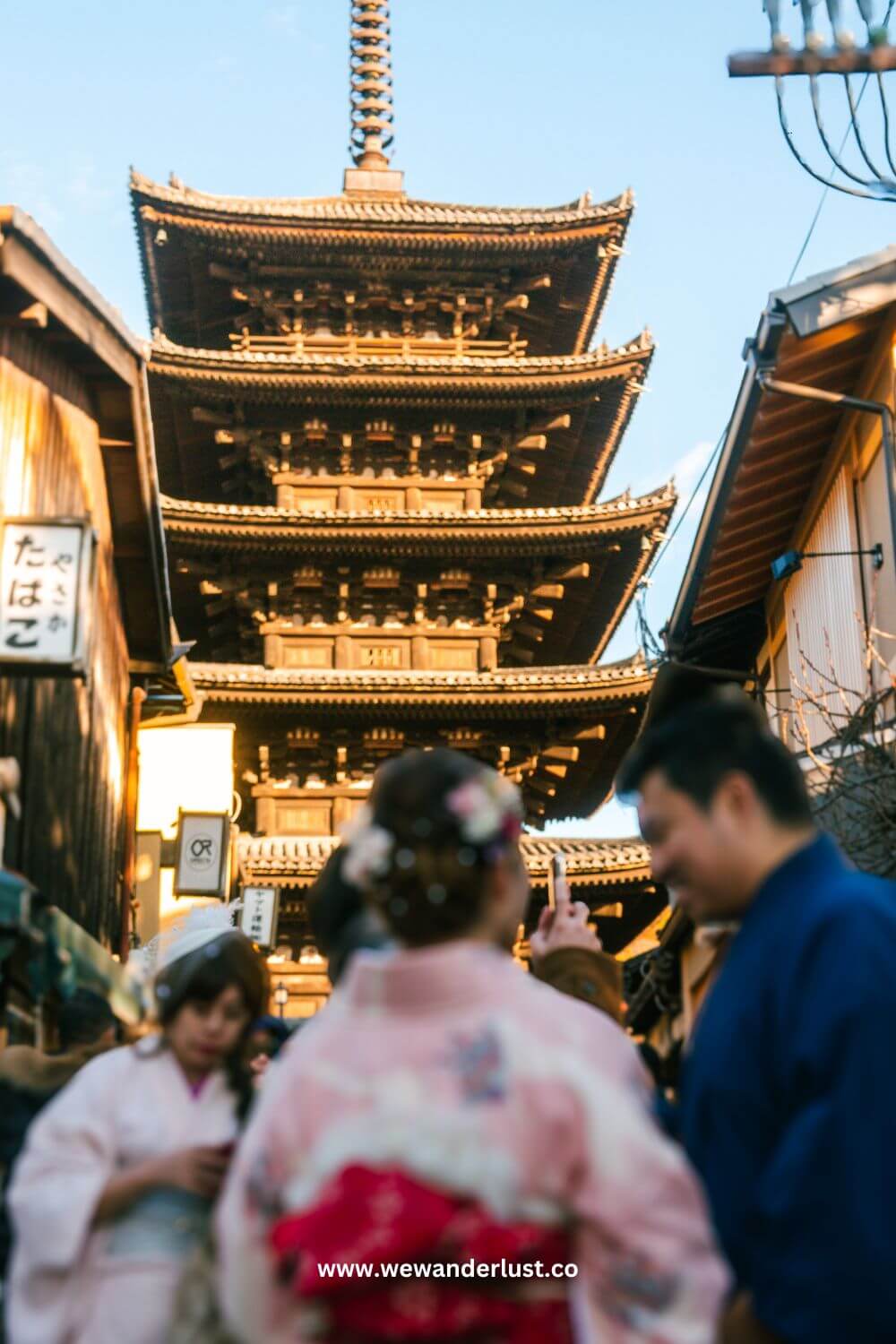
This is Kyoto’s most famous geisha spotting area where if you get lucky you may see a geisha going about her day. This specific street has lots of traditional Japanese houses, ochaya (teahouses), and old restaurants.
Tip: Head here for night photography to capture the dark lantern lit alleys with geishas walking around.
7. Visit Arashiyama Sagano Bamboo Grove
The Arashiyama Bamboo Grove is known as one of the world’s most prettiest groves. The grove is home to mostly one species of bamboo called Moso Bamboo that’s known to shoot up to 92 feet high. Don’t forget to look up and see the pockets of light shining through the dense forest.
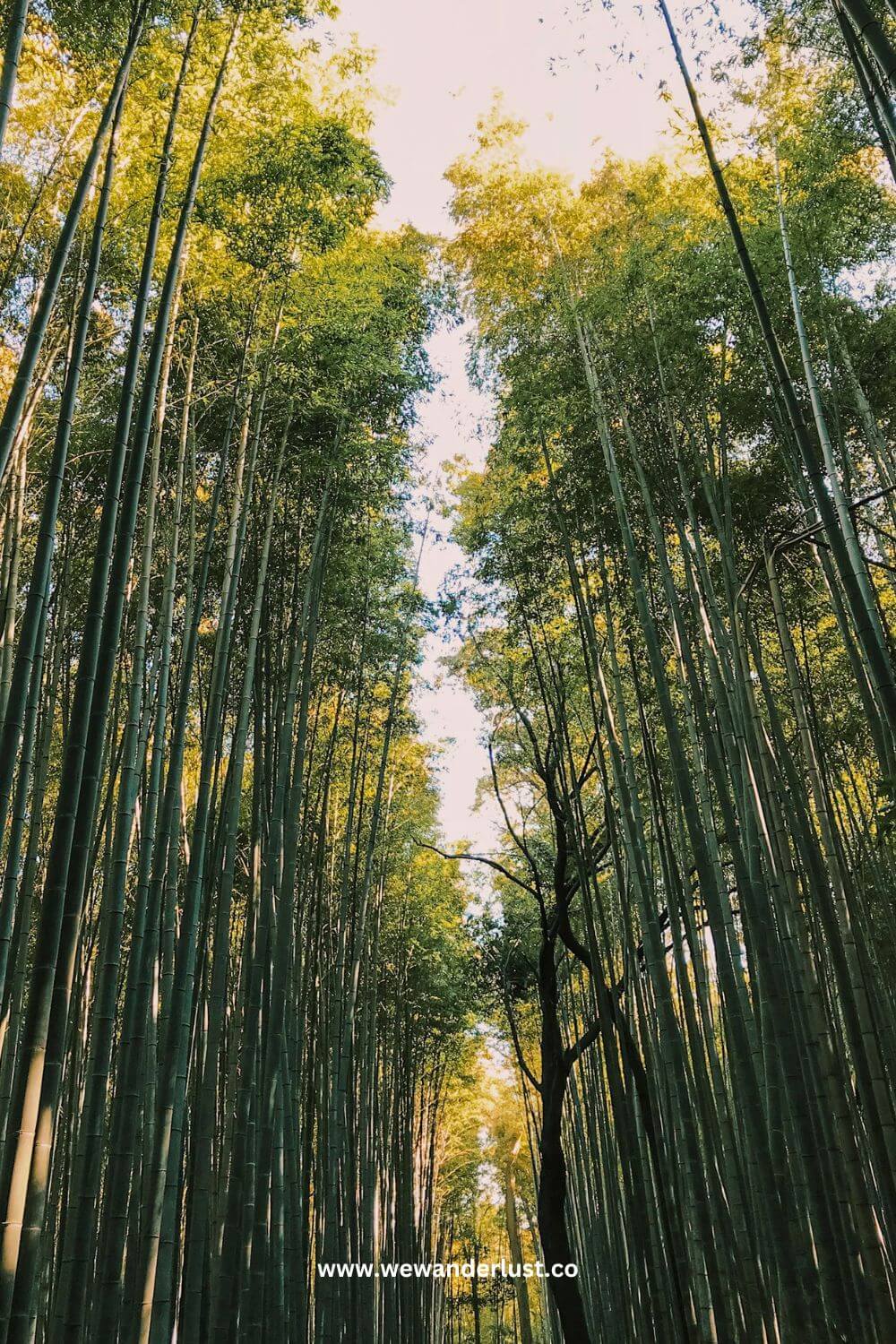
The best time to visit the Arashiyama Bamboo Grove is early in the morning, before the crowds arrive. If you want to avoid the crowds altogether (this is rare in 2024), try visiting during the weekdays.
8. Visit Daigo-ji Temple
Daigo-ji Temple is a Shingon Buddhist temple and a UNESCO World Heritage Site known as the “Temple of Flowers”. The temple was built in the ninth century and makes a great location to see cherry blossoms and autumn leaves.
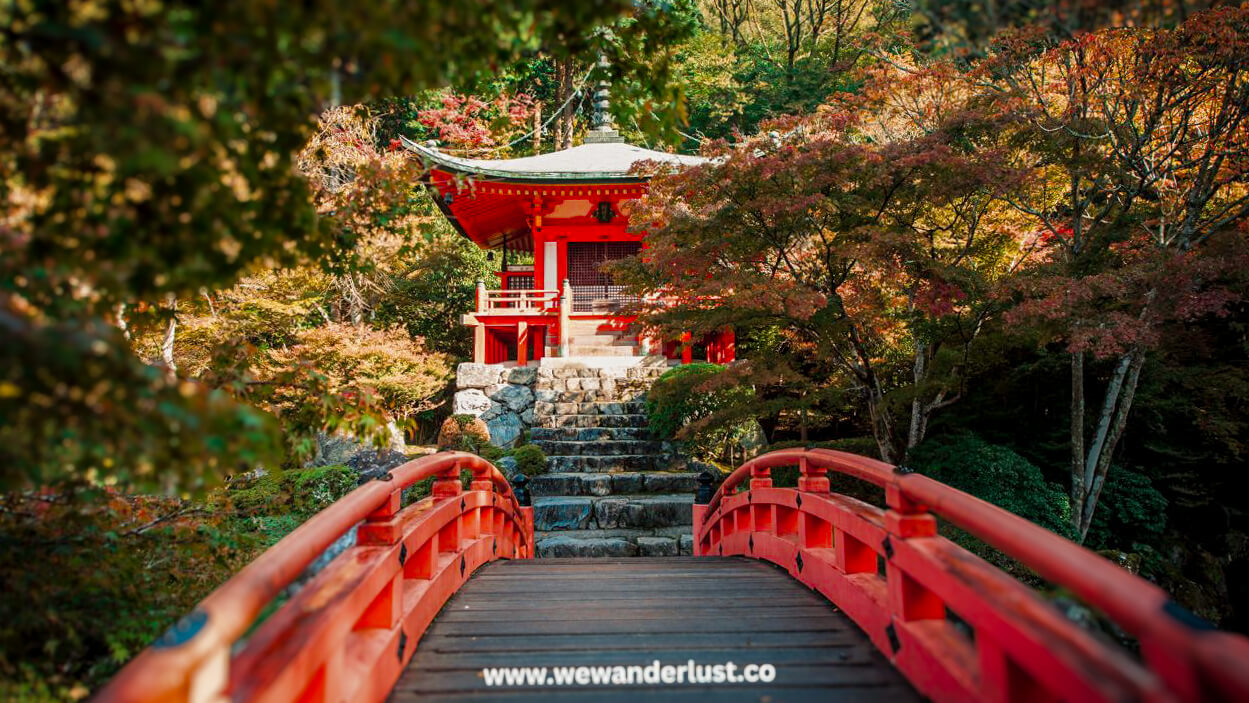
Tip: The best time to visit Daigo-ji temple is during Autumn when maple and gingko trees surround the temple with their vibrant leaves.
9. Take a Cooking Class
Japanese cuisine is world-renowned, and it’s a great way to experience the culture. There are many cooking classes available in Kyoto, and they’re a great way to learn about the ingredients and techniques used in Japanese cuisine. After taking a cooking class, you’ll be able to impress your friends and family with your new skills straight from Japan!
10. Visit Enkoji Temple
Enkōji Temple is a Zen Buddhist temple nestled in the lush hills of northeast Kyoto, not far from the historic Shugakuin Imperial Villa.
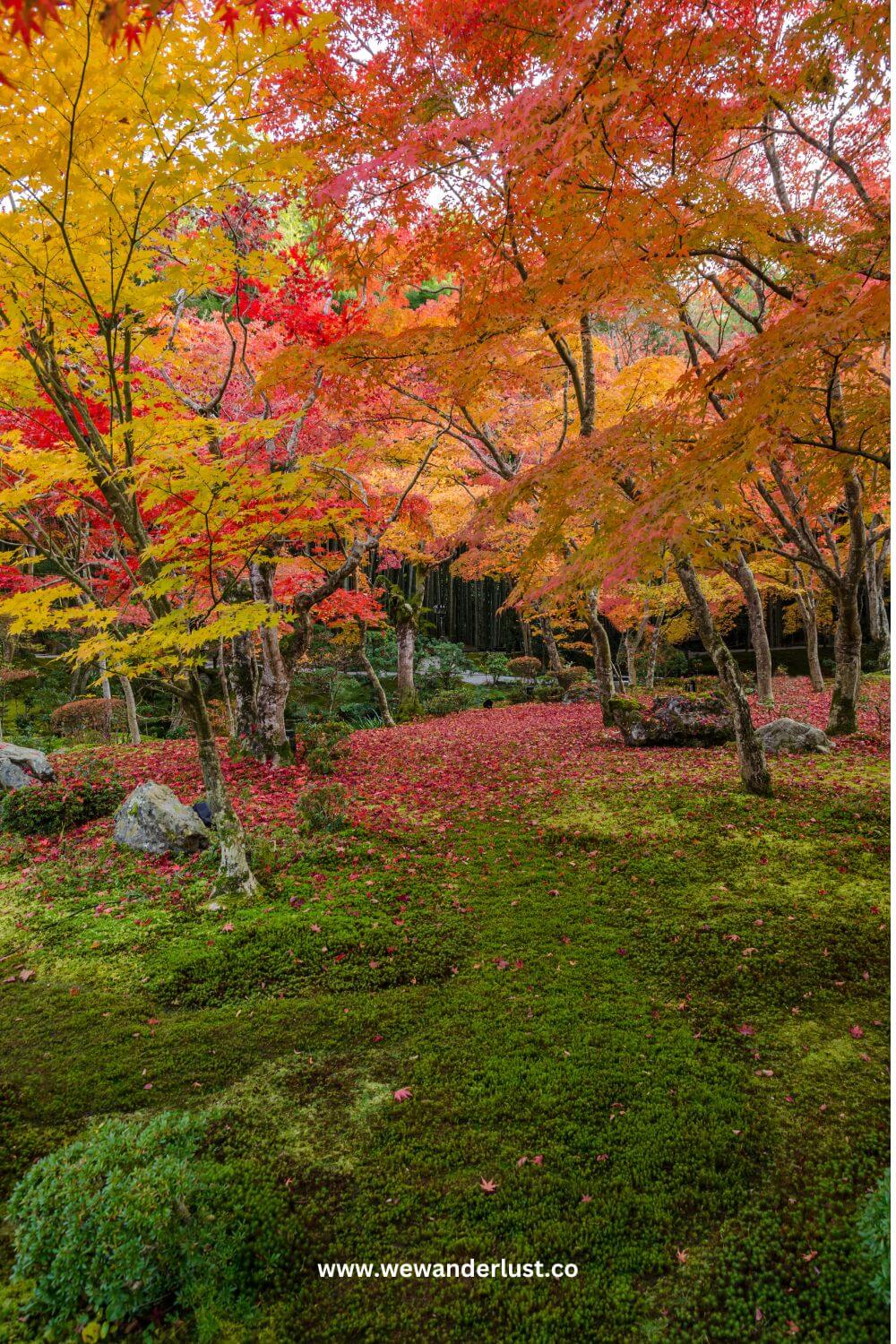
It was originally founded in 1601 by Tokugawa Ieyasu as a seminary for women and school of law known but is now renowned for its brilliant fall foliage in Autumn, as well as for its unique suikinkutsu (water harp jar). Enkōji Temple is definitely less crowded than other surrounding temples and is one we recommend if you’re looking for less crowds.
11. Enjoy the Views from Kiyomizu-dera Temple
Kiyomizu-dera Temple is located on a hill, and it offers stunning views of the city below. Enjoy the many gardens and walkways that surround it.
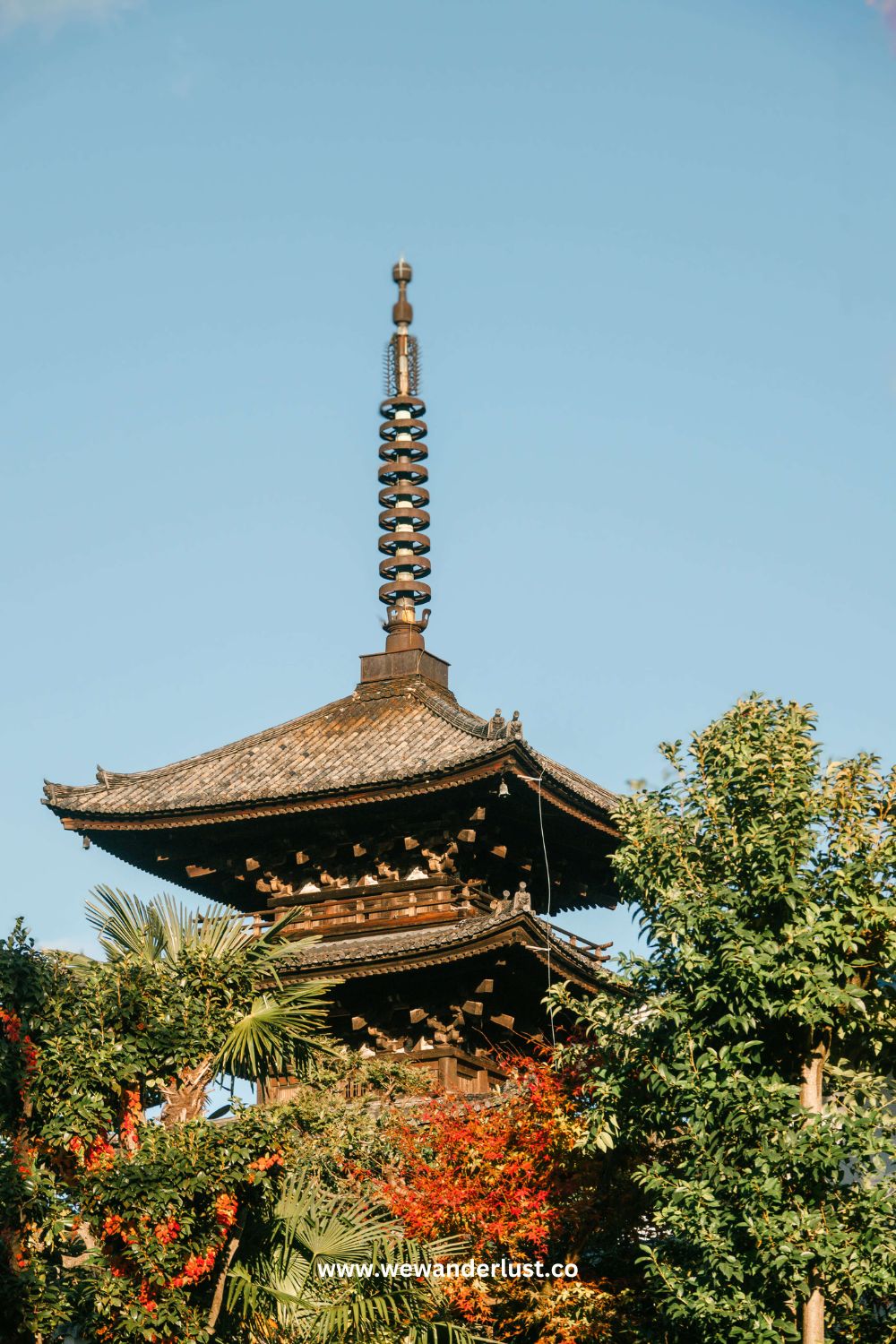
The best time to visit Kiyomizu-dera Temple is either during Spring or Autumn, when the cherry blossoms are in bloom or when the fall foliage appear. However, you can visit any time of year to pray and take in the serenity.
12. Take a stroll down the Philosopher’s Path
The Philosopher’s Path (Tetsugaku no Michi) is a stone path lined with cherry trees that runs along a canal in Kyoto. The path gets its name from a famous Kyoto University professor and philosopher Nishida Kitaro who walked this path to the university as a form of meditation.
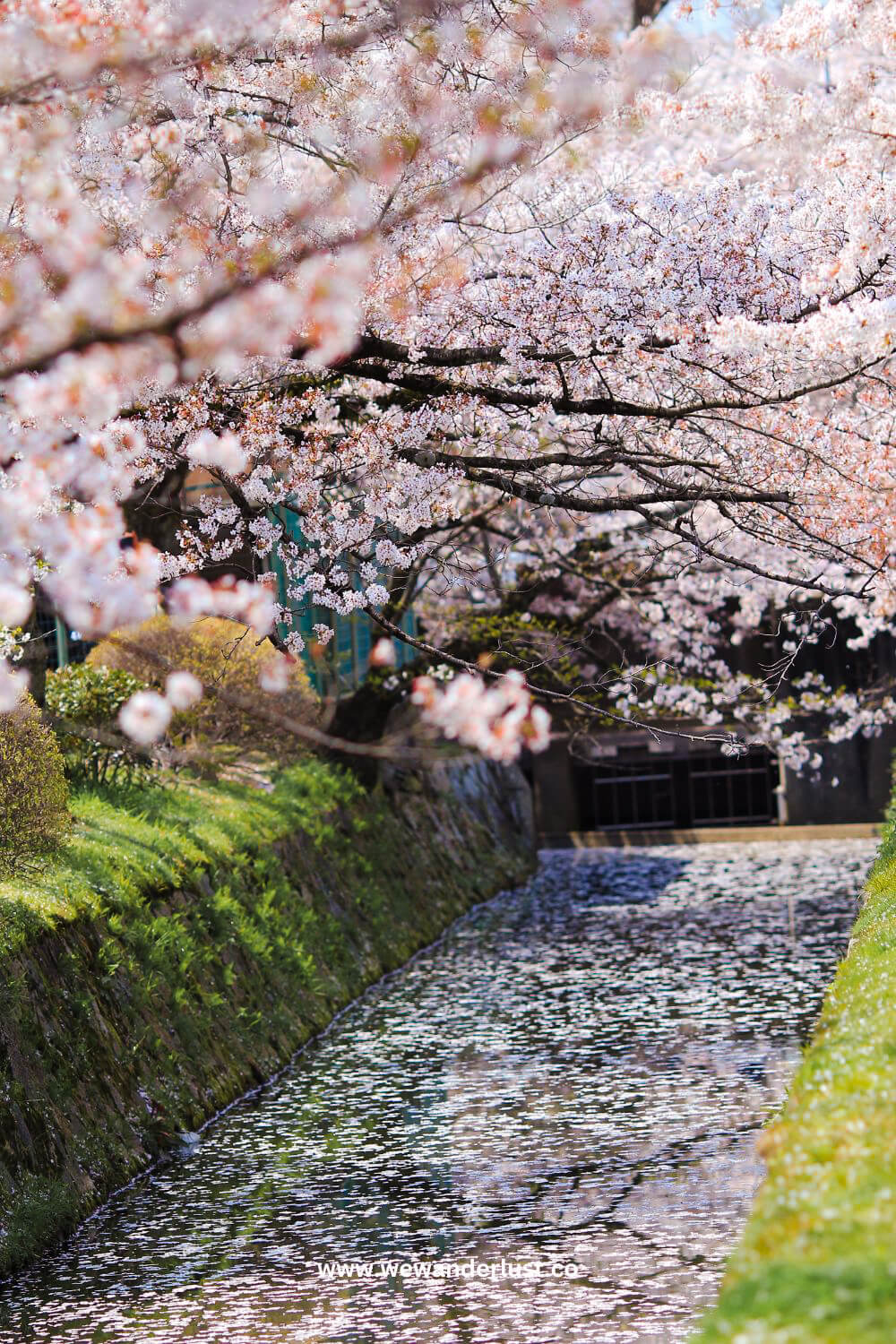
The best time to walk the Philosopher’s Path is during the spring, when the cherry blossoms are in bloom. However, the path is beautiful year-round, and it’s a great place to relax and enjoy the scenery.
13. Explore Nanzen-ji Temple
Nanzen-ji Temple is a Buddhist temple that was founded in the 13th century. The temple is located in a scenic area of Kyoto, and it’s surrounded by forests and mountains. Visitors to the temple can explore the many buildings and gardens on the premises, and they can also hike to the top of Mt. Hiei for stunning views of the city below.
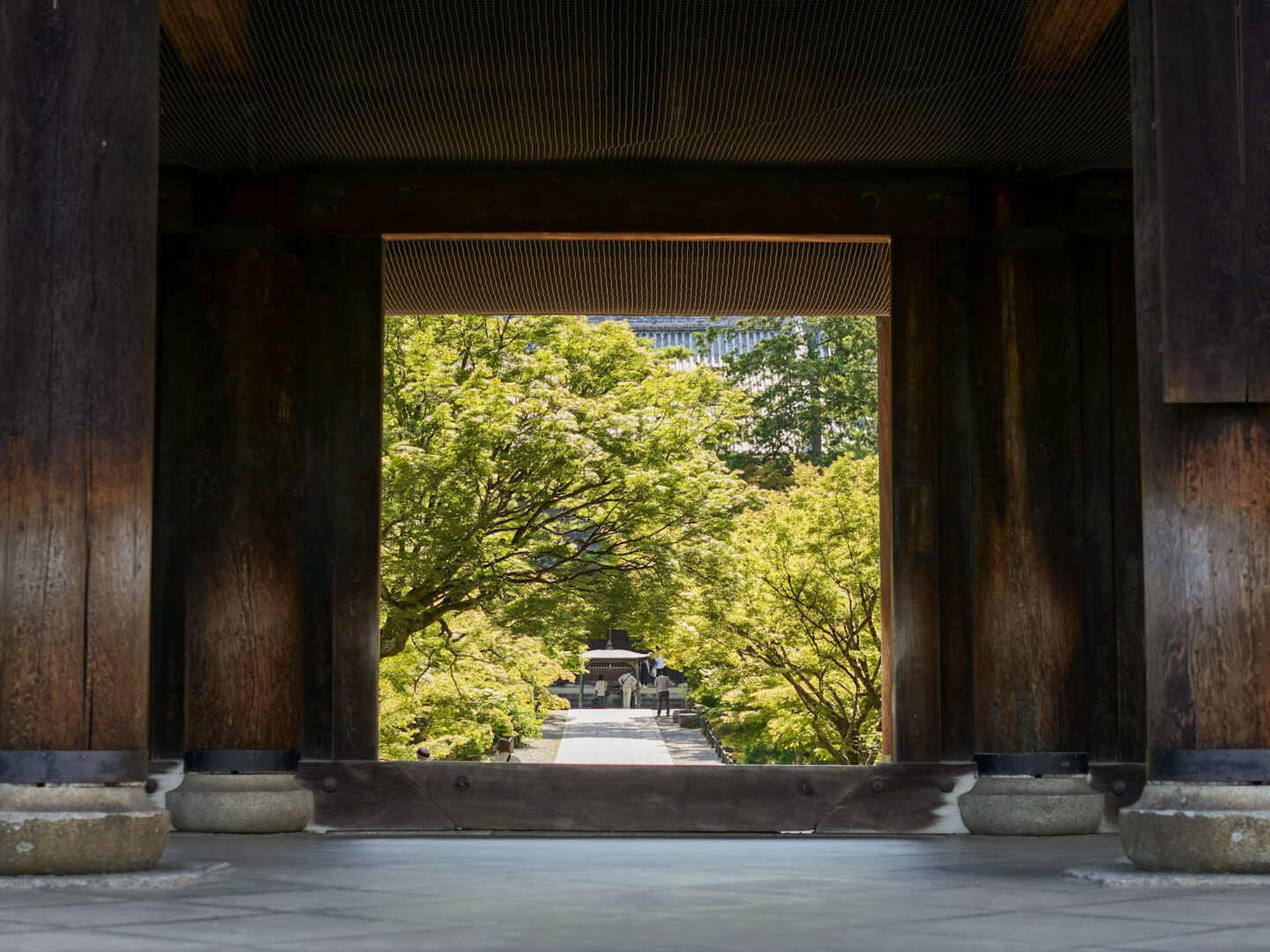
The best time to visit Nanzen-ji Temple is during the spring or autumn, when the leaves are changing color. However, the temple is beautiful year-round, and there is always something to see no matter when you visit.
14. Eat Shojin Ryori in a Templ e
Shojin ryori is a type of vegetarian cuisine that was developed by Buddhist monks. The cuisine is based on the principles of Buddhism, and it uses only fresh, seasonal ingredients. Shojin ryori is typically served in temples, and it’s a great way to experience traditional Japanese cuisine.
Experience a Temple Stay with monks in Kyoto

Click here for updated prices
15. Visit Nijo Castle
Nijo Castle is a UNESCO World Heritage Site that was built in the 17th century. The castle is famous for its beautiful gardens, as well as its many rooms and corridors.
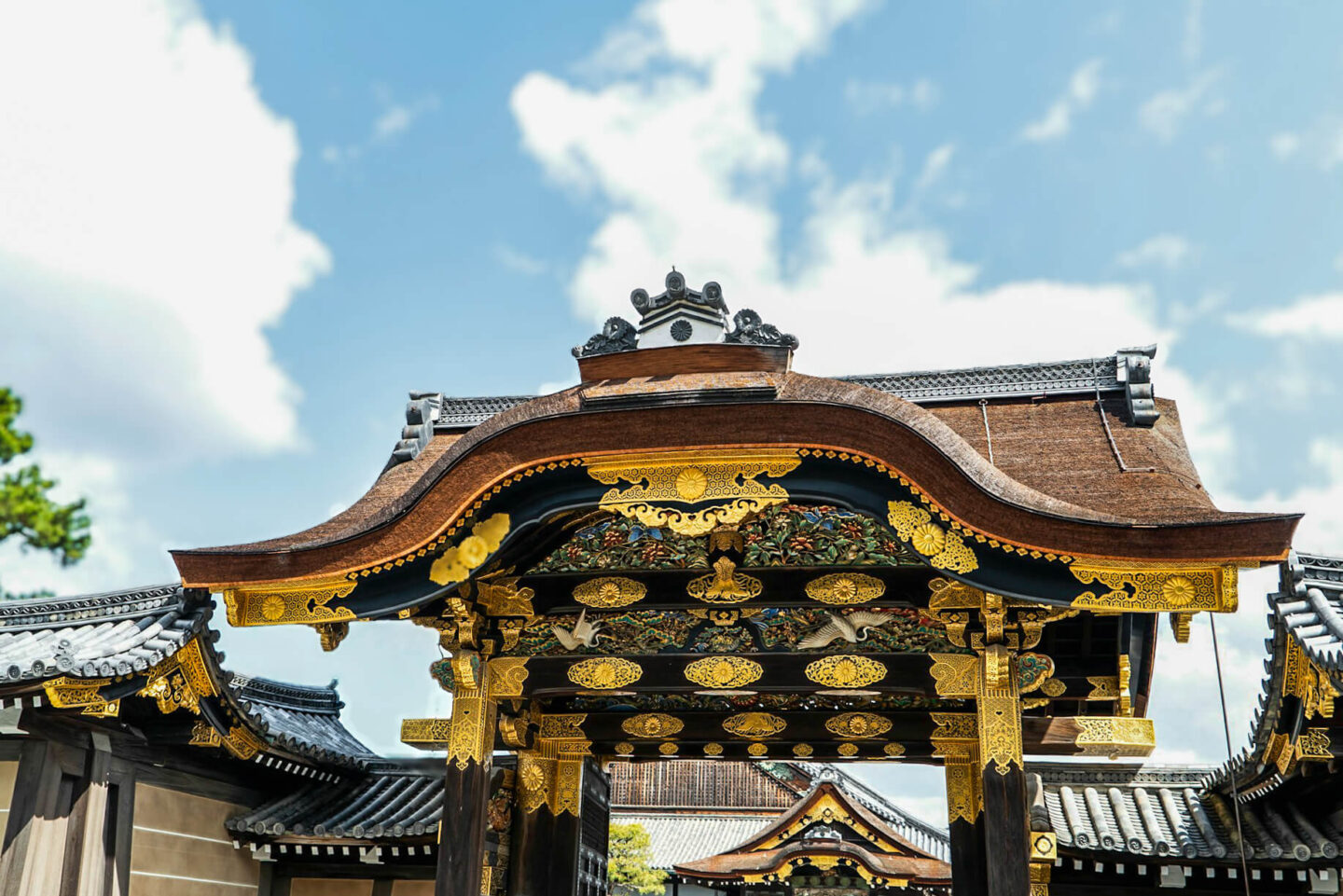
The best time to visit Nijo Castle is during the spring or autumn, when the leaves are changing color.
16. Visit Ginkaku-ji Temple (Silver Pavilion)
The Ginkaku-ji Temple is a Buddhist temple that was built in the 15th century. Stroll around the lush temple gardens and practice your zen state.
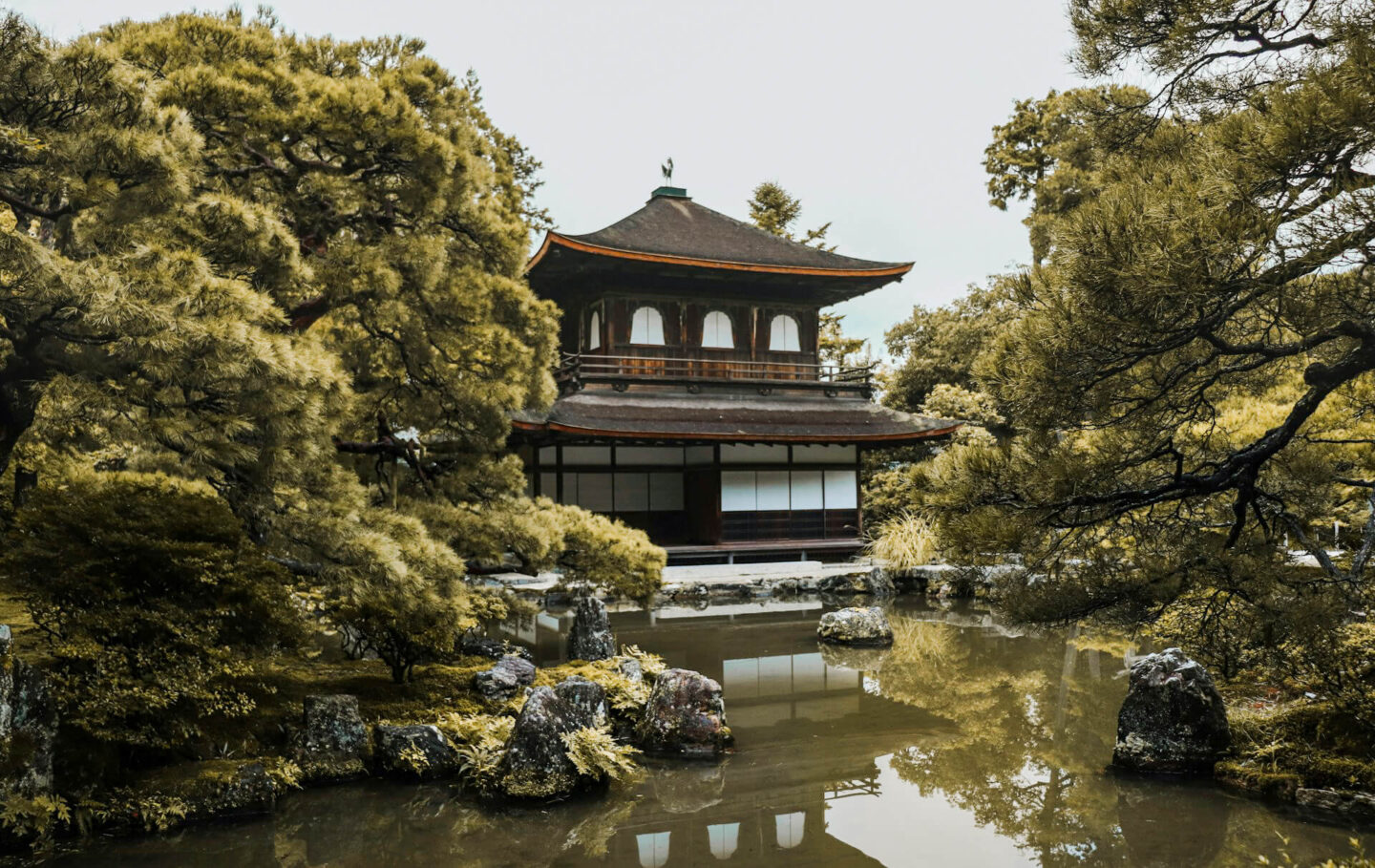
The best time to visit the Ginkaku-ji Temple is during Autumn when the maple leaves turn bright orange and red.
Tip: Admission for adults is 500 yen while children (up to junior high school age) get in for 300 yen.
17. Drink Matcha in a Teahouse
Matcha is a type of green tea that is made from powdered tea leaves. Matcha is a traditional Japanese drink. In Japan’s traditional tea ceremonies, matcha is prepared with a special bamboo whisk and hot water, then served alongside something sweet to balance the tea’s characteristic bitterness.
There are many teahouses to choose from in Kyoto, and they’re a great place to relax, witness the art of a tea ceremony and simply take in the ambiance.
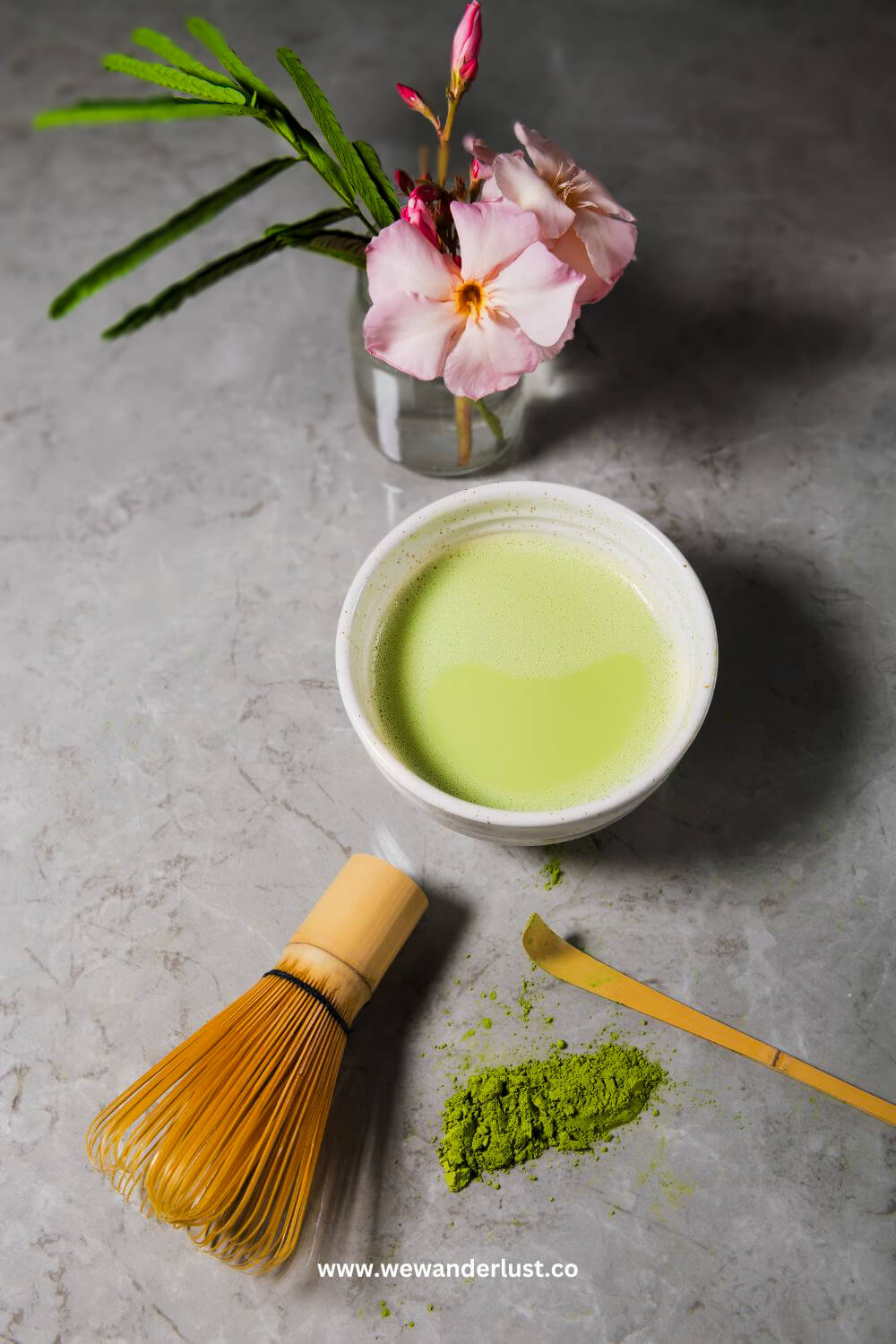
18. Wander Around Kyoto Botanical Gardens
The Kyoto Botanical Garden is a large park that is famous for its beautiful flowers and trees. Founded in 1924, the Kyoto Botanical Garden is Japan’s oldest and most comprehensive public botanical garden. With plants, flowers, and trees blooming year-round, the garden showcases over 12,000 varieties including roses, cherries, and other seasonal flora across multiple conservatories.
The garden is a great place to relax and take in the scenery, and it’s also a great place to learn about the plants and animals of Japan.
19. Watch the Geisha Spring Dances
The geisha are traditional Japanese entertainers, and they’re famous for their skills in music, dance, and poetry. The geisha perform dances every Spring in Kyoto, and it’s a great opportunity to see these performers in action.
20. Visit Heian Shrine
Built in 1895, Heian Shrine is a Shinto shrine dedicated to the emperors of the Heian period. This popular Kyoto landmark is an excellent place to learn about Japanese history while admiring the tranquil beauty of its gardens.
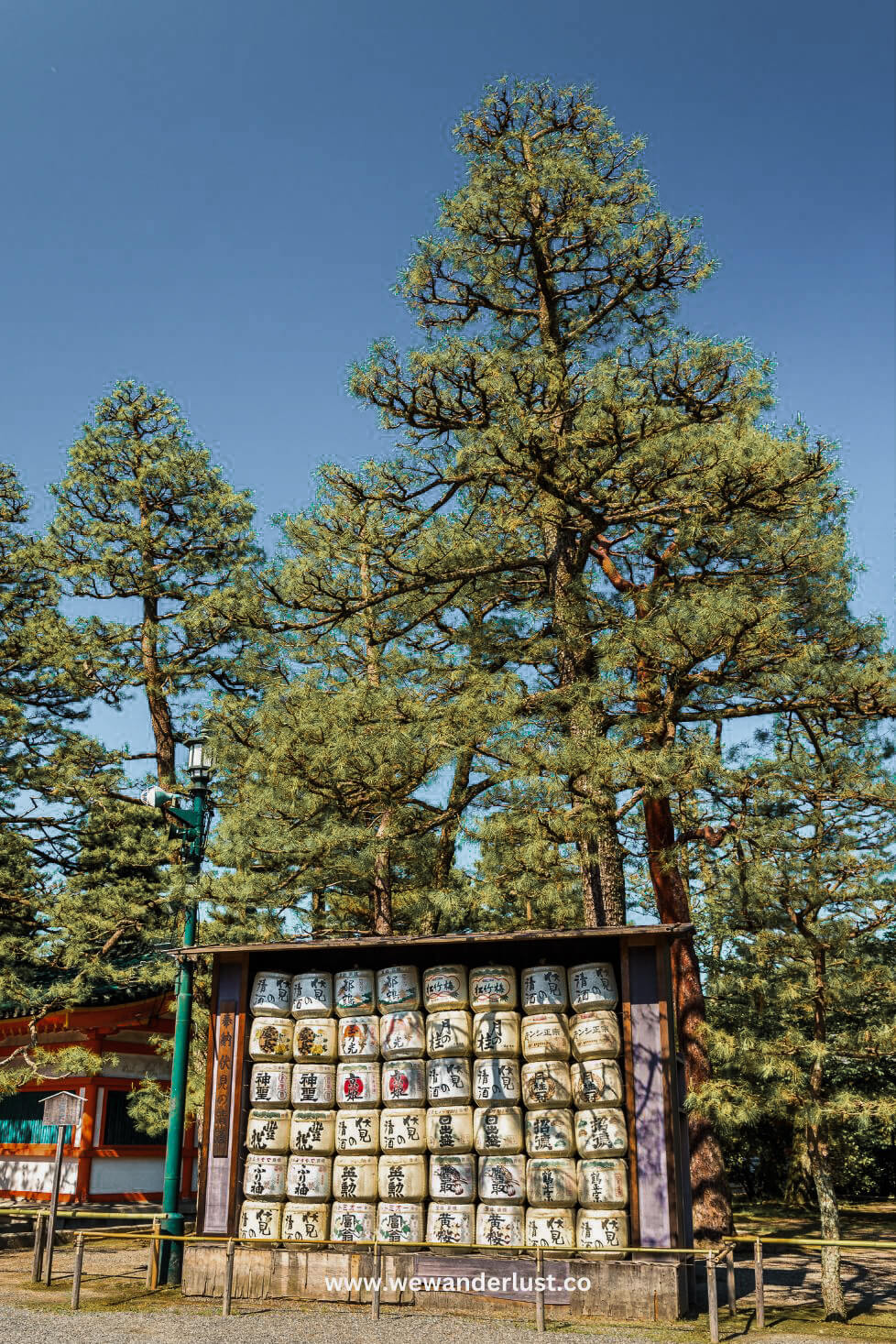
Similar Posts

Is the 2022 Fifa World Cup Qatar worth going to? Here’s the Ultimate Guide
Qatar is a small Arab state located on the coast of the Arabian Peninsula. Qatar is home to 2.8 million people, and its capital, Doha, is one of the most modern and cosmopolitan cities in the Middle East. The FIFA World Cup Qatar 2022 will be held in Qatar from November 21 to December 18….
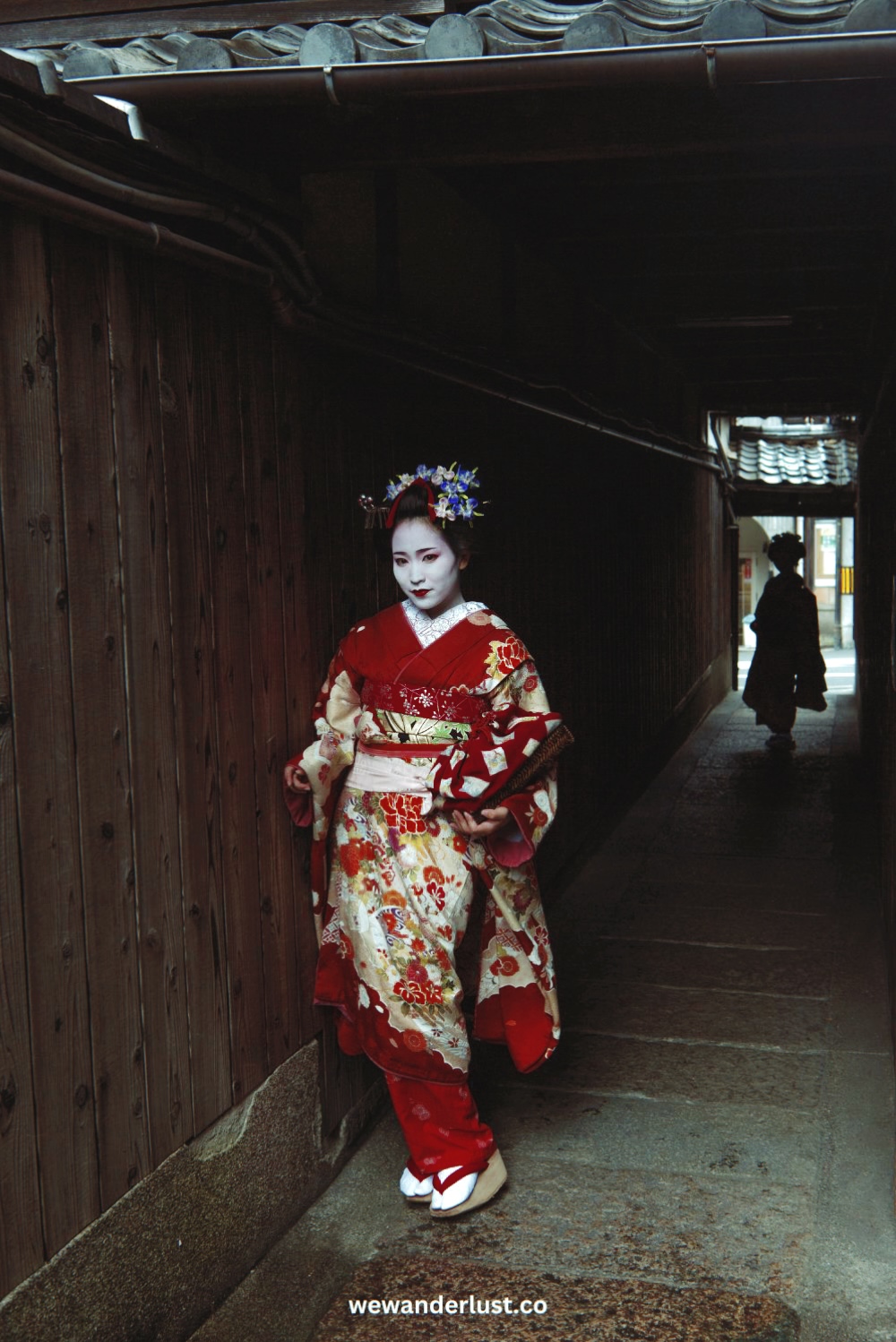
The Ultimate 3-Day KYOTO Itinerary | Japan Travel Guide (2024)
Kyoto is a city full of history, culture, and beauty, making it one of Japan’s most popular destinations. It was once the imperial capital of Japan and is filled with incredible temples, shrines, and gardens designated UNESCO World Heritage Sites. Kyoto is also home to various traditional Japanese arts such as pottery, woodblock prints, and…
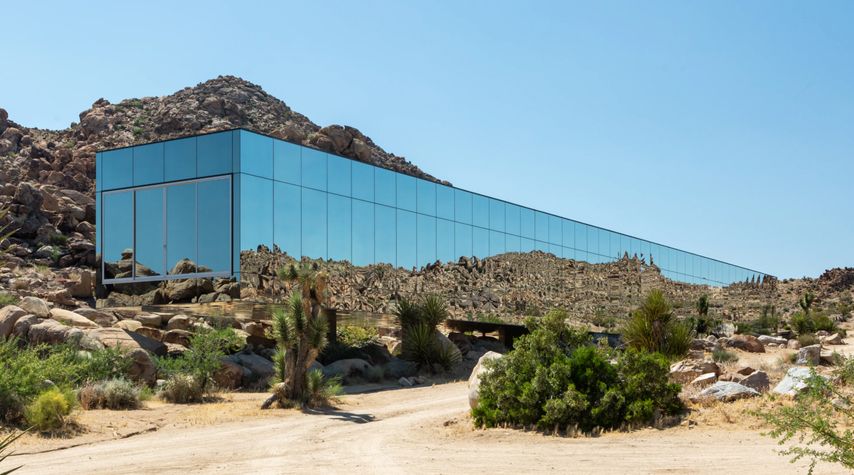
Top 15 Things to Do in Joshua Tree National Park
Welcome to Joshua Tree National Park, located in southeastern California, between the cities of Palm Springs and Twentynine Palms. It is approximately 750,000 acres of land that serves as a haven for desert wildlife and an oasis for people looking to get away from it all. The Joshua Tree has taken on almost spiritual meaning…
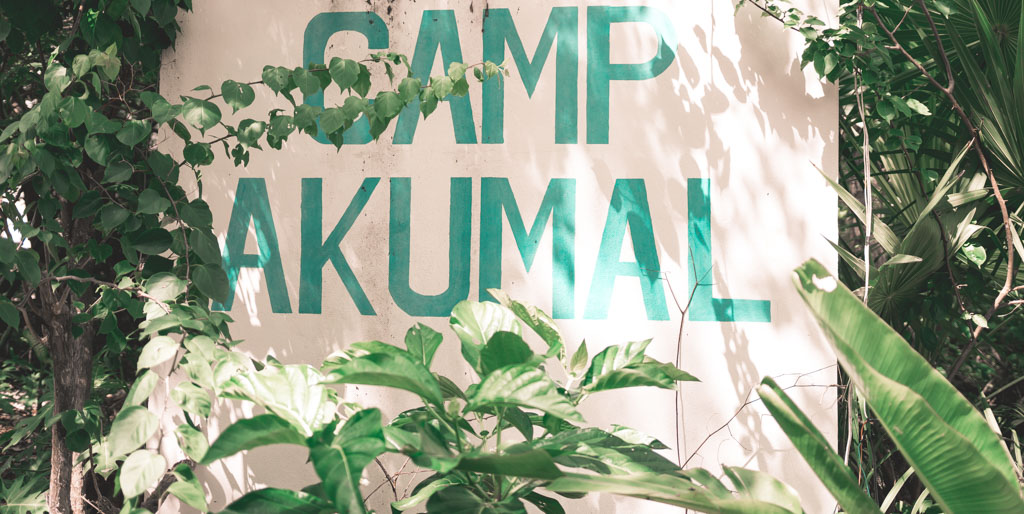
One of a Kind Jungle Experience at Camp Akumal, Mexico
When we were headed to Mexico, swimming with turtles was an experience we always wanted to cross off our bucket list. The best place to swim with turtles in Mexico happens to be in Akumal. After days of research, I stumbled upon an amazing jungle experience stay in Akumal with the most affordable price which…
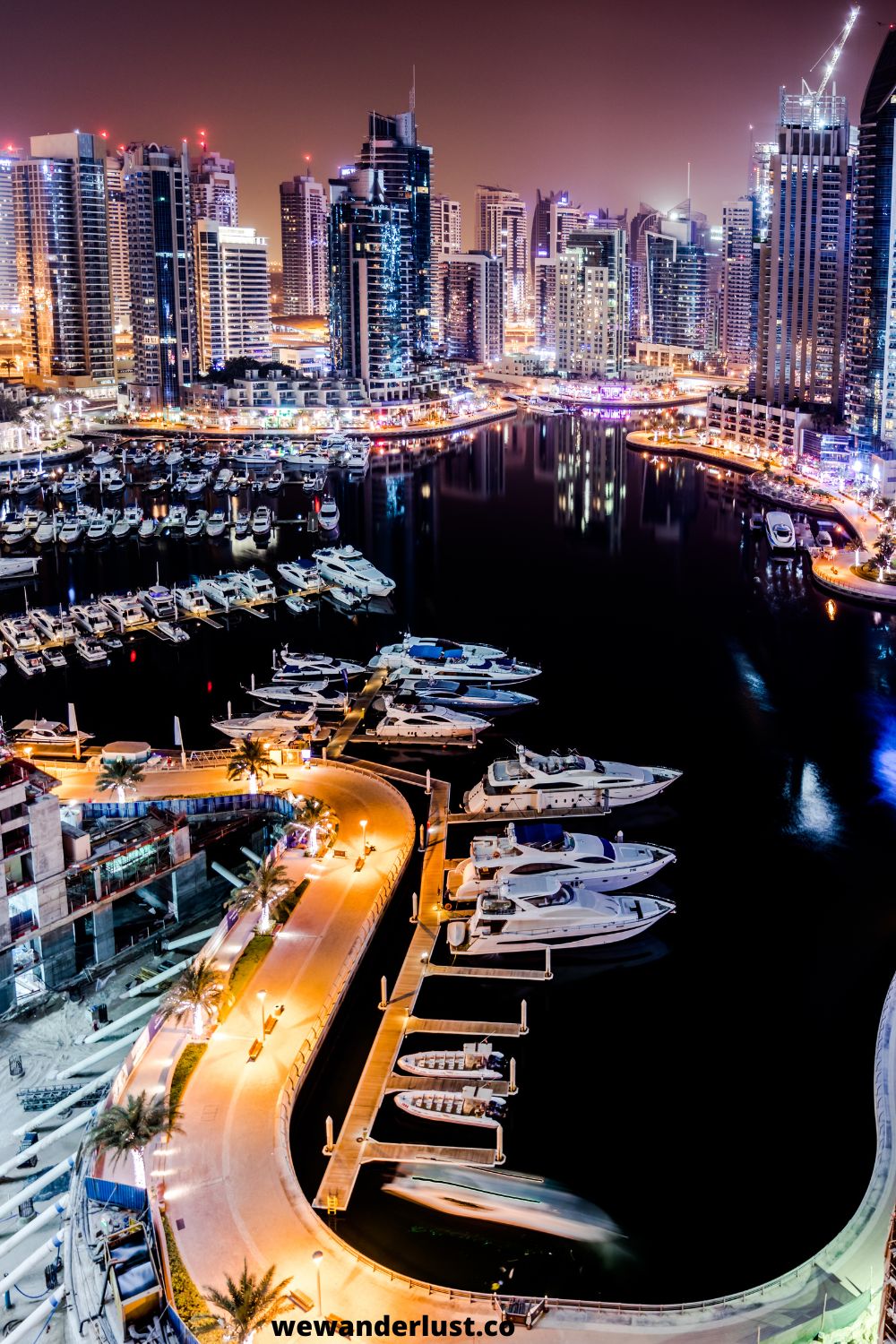
17 Free Things to Do in Dubai: The Best Activities and Attractions for Budget-Conscious Travelers
Dubai is a city that is known for its luxury and extravagance. However, there are also plenty of free things to do in Dubai if you know where to look! It is one of the most popular tourist destinations in the world, and for good reason! This city is home to some of the best…
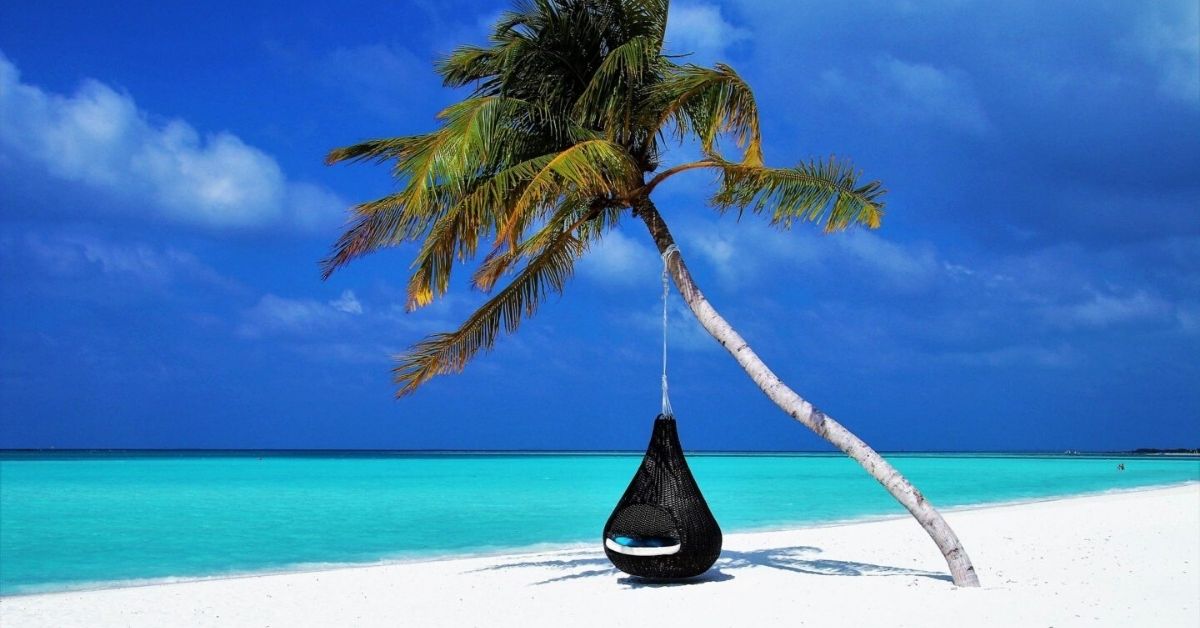
21 Top Places That Are Open for Travel NOW
As more and more countries are beginning to open their borders for travel, we decided to list down all the spots you need to visit once this lockdown is over. You may be asking, “Is it safe to travel now?” In today’s post, we’re going to provide you with the top destinations that are starting…
Temples to Visit
Maiko Shows
Kyoto's Bamboo Forest
Foods to Try
Top Restaurants
Nightlife in Kyoto
Nishiki Market Guide
Best Time to Visit
Weather & Climate
Kyoto's Best Neighborhoods
Public Transportation
How to Stay at a Ryokan
Day Trips from Kyoto
48 Hours in Kyoto
Things to Do in Kyoto
The 10 Top Things to Do in Kyoto, Japan
If Kyoto is not at the top of your bucket list, it should be. The Japanese city is one of the rare destinations you can count on to constantly exceed the hype built up around it. Which is not surprising, what when you consider that walking its streets exposes you to more than a millennium of history, most of which saw Kyoto as Japan's imperial capital.
As you'll see exploring the selections below, which have all earned mentions as the Top 10 things to do in Kyoto, the city is not so much a tourist trap as it is a tourist paradise, a place where you'll want to stay for far longer than your plane ticket allows.
Kiyomizu-dera
You might find yourself concerned as you walk the hill up to Kiyomizu-dera, an eighth-century Buddhist temple perched on a hill in the eastern reaches of Kyoto. It's extremely crowded here, rain or shine, sun or snow and at almost all hours of the day.
Once you reach the main view point inside the temple, however, particularly if you happen to visit around sunset, you'll understand why this is among the best of Kyoto's top attractions, and is totally worth putting up with the throngs of tourists.
Tip: While Kiyomizu-dera is beautiful 365 days a year, it's especially stunning under spring's cherry blossoms and autumn's brilliant colors.
Taylor McIntyre / TripSavvy
Would you believe that one of Japan's most picturesque bamboo forests sits within Kyoto's city limits? You will once you set foot in Arashiyama, which is less than half an hour from Kyoto station by train or bus. As an added bonus, you enter the forest through Tenryuji Temple, which provides an absolutely gorgeous gateway to the grove.
Fushimi Inari Shrine
Taylor McIntyre / TripSavvy
Another of Kyoto's most iconic images is of seemingly endless orange gates extending up the side of a mountain. This is the Fushimi Inari Shrine , whose path is actually less than two miles, just in case you're thinking to hike its entirely.
Of course, if you're just on the hunt for the ultimate Kyoto selfie, you won't have to walk far from Inari station. After just a few minutes, in fact, you'll realize why this is one of Kyoto's top 10 attractions!

Kinkaku-ji (The Golden Pavilion)
While a gold-covered Zen temple has technically existed at the site of Kinkaku-ji since the mid-15th century, the one you see reflecting on the pond today actually dates back less than 100 years to 1955, when it was rebuilt after arson at the hands of a fanatic monk. Like most of Kyoto's top ten attractions, the aptly-named Golden Pavilion looks great no matter when you visit, although the white snows of winter seem to contrast best with its shiny exterior.
The Philosopher's Walk
Interestingly, the second-most famous Zen temple in Kyoto is called the Silver Pavilion (Ginkaku-ji), although it is not conspicuously silver in color. Although not as pretty as its golden sister, the Silver Pavilion sits at the beginning of the so-called Philosopher's Walk, which might just be Kyoto's prettiest stroll. If you head to the Silver Pavilion after lunch, you can walk the entirely of the path before sunset, potentially winding up at Kiyomizu-dera in time for sunset.
Explore Kiyomizu-dera or nearby Gion, which boasts a few important selling points. First among these is the fact that Gion is the surest place in Kyoto to spot a geisha, although this title does come with a caveat: Geishas are still incredible rare to spot , and most of the ones you do won't want their pictures taken. Rather, you're much more likely to spot visitors from around Japan and neighboring countries dressed in geisha outfits. And let's face it: Some of them look convincing enough that your friends back home might not realize they're impostors!
Kyoto Imperial Palace
In spite of its important name and massive size, Kyoto Imperial Palace does not make it on to lists of Kyoto's top attractions as often as some of the other places you see above and below it. Yet it's a worthwhile addition to any Kyoto itinerary, both because it served as the residence of Japan's imperial family for more than 1,000 years, and because it sits right in the middle of many of the attractions you're going to see anyway.
Kyoto Tower
Most of the top ten attractions in Kyoto are ancient, which isn't a shock when you consider how much history the city has. With this being said, a trip to the top of Kyoto Tower is worth considering, if only because of the incredible panorama it offers.
Even if you only manage to admire Kyoto Tower from afar (it looks great from the view point of Kiyomizu-dera!) it's impossible to miss from ground level in the city, on account of the fact that it towers 430 feet into the air—Kyoto's tallest structure, by a long shot.
Nijo Castle
Like Kyoto Imperial Palace, Nijo Castle is the most unsung of Kyoto's top ten attractions, since it's not as selfie-worthy as Fushimi Inari Shrine or Arashiyma, nor as scenic as the Philosopher's Walk or Kiyomizu-dera. Yet Nijo Castle is as picturesque as it is historically important—it was built in the early 17th century to house the first Shogun of the Edo period (which, ironically, was what led to Japan's capital being moved to Tokyo). Like the Imperial Palace, Nijo Castle is also convenient enough that there's no reason you shouldn't visit it.
Kyoto Station
As is the case with Kyoto Tower, Kyoto Station is among the most modern of the top ten attractions in Kyoto, with most of what remains of it having been built long after its 1877 inauguration. Even more surprising than the station's inclusion on this list, however, is the incredible perspective you get from its 15th floor, which reveals a building much more futuristic than you'd expect for the gateway to a largely ancient city like Kyoto.
Kyoto Guide: Planning Your Trip
The Best Time to Visit Kyoto
48 Hours in Kyoto: The Ultimate Itinerary
The Top 12 Day Trips From Osaka
Where to Stay in Kyoto
The Top 18 Things to Do in Tokyo
The 10 Best Temples to Visit in Kyoto, Japan
The Best Time to Visit Japan
Kyoto's Nishiki Market: The Complete Guide
The Top 10 Things to Do in Kanazawa, Japan
The Top 15 Destinations to Visit in Japan
Gion, Kyoto: The Complete Guide
The Top 25 Things to Do in Japan
Japan's Fushimi Inari Shrine: The Complete Guide
18 Best Things to Do in Japan in Summer
48 Hours in Tokyo: The Perfect Itinerary
- Things to Do
- Tourist Spots & Attractions
25 Best Things to Do in Kyoto: Explore Bucket List Spots Like Arashiyama, Fushimi Inari-taisha Shrine, Gion, and More!

Shrines, temples, tours, day trips... If you've started looking into a trip to Kyoto, you might be overwhelmed by how much there is to see and do here. As the capital of Japan for over 1,000 years, Kyoto has a long history as a cultural powerhouse, and you can still experience the city's historical beauty and unique traditions today. In this article, we've compiled 25 of the best things to do in Kyoto. Read on to learn about the best sightseeing spots and activities to add to your Japan bucket list!

This post may contain affiliate links. If you buy through them, we may earn a commission at no additional cost to you.
About Kyoto
Explore japan's ancient capital, historic temples and shrines, kyoto food culture, atmospheric walks and scenic streetscapes, kyoto day trips, kyoto shopping, kyoto art and culture, don't miss visiting kyoto.
Located in the Kansai area of Western Japan, Kyoto is one of Japan's most famous tourist destinations. As the old capital, Kyoto has a wealth of shrines, temples, historical areas, and gardens to see. At the same time, Kyoto is a modern city with plenty of shopping, gourmet dining, and entertainment options as well.
Kyoto is easy to access from Tokyo by bullet train, and is only a 30-minute train ride from Osaka. Kyoto also makes a great base for exploring the Kansai area, with the surrounding cities of Osaka, Nara, Kobe, and Japan's biggest lake, Lake Biwa, all very easy to get to from the Kyoto city center.
The climate in Kyoto can be very hot in the summer and fairly cold in the winter. The best times of the year to visit are arguably the cherry blossom season in early April, the autumn foliage period in late November, and the Gion Matsuri period in July. For obvious reasons, these are also extremely crowded periods, as are long Japanese holiday periods such as Golden Week (April 29 to early May) and Obon (mid-August). So if you're planning a trip during these times, it's best to secure all your reservations well in advance.
A good starting point for planning any visit to Kyoto is our Ultimate Kyoto Travel Guide . Here you'll find everything you need to know about where to stay, eat, shop, as well as all the info you need to get around and stay safe in Kyoto.
Nijo Castle Kyoto Tour
As the capital of Japan for a thousand years, Kyoto was the home to Japan's royalty, but the Imperial Family was not the only seat of power in ancient Kyoto. The shogunate, Japan's feudal military government, held power over the country from 1185 to 1868.
Completed in 1603, Nijo Castle served as residences, offices, and reception spaces for the Tokugawa shogunate. In 1867, the last shogun, Tokugawa Yoshinobu, declared the end of the shogunate and the return of power to the Imperial Court at this very castle. After this period, Nijo Castle was used as a detached palace of the Imperial Court before being opened to the public in 1940.
Ninomaru Palace in the Nijo Castle complex is famous for its “nightingale floors”, named for the chirping sound the floorboards make when stepped upon. Ninomaru Palace is not just a site for history lovers; it's also a rare chance to see a range of decorative artworks like folding screens and wall and ceiling paintings displayed just as they were when the castle was in use by the shogunate.
This castle has a long and complex history, and was the site of some of the biggest changes in Japan's history. To properly appreciate its cultural, artistic, and historical background, we recommend seeing Nijo Castle with a guide. The 60-minute Nijo Castle Kyoto Tour via Voyagin gives you 10% off the original tour price and is both an easy and affordably-priced way to deepen your experience of this UNESCO World Heritage Site. For more information about this tour, please see the link below!
Kyoto Imperial Palace and Imperial Palace Park
Kyoto was Japan's capital for over a thousand years, during which Kyoto, known as Heian-kyo at the time, flourished as a cultural and economic center. Since the capital moved to Tokyo in 1868, the Kyoto Imperial Palace has been preserved as a historical site. While some official functions are held here today, the grounds and gardens are open to the public. Inside the palace gates you'll find preserved buildings used by the Imperial Household and beautifully-crafted Japanese gardens.
In the past, visitors were required to register in advance for a tour to access the palace grounds, but today, anyone can visit without a reservation. Free tours are still available, and are worth joining to find out more about the history and architecture here. English language tours are held daily at 10:00 am and 2:00 pm. To join, just visit the Visitors Room on the right of the entrance before the tour’s start time. Click this link for more details.
While historically the area around the Imperial Palace housed residences of court nobles and were walled off to the public, today this space serves as a large public park. Measuring 1.3 kilometers from north to south, the Kyoto Imperial Palace Park is an important green space for Kyoto locals, and also has a range of small shrines, temples, and historical buildings to see. In the spring, the weeping cherry blossom grove at the north of the park is one of the more spacious and peaceful spots in Kyoto for a hanami picnic .
If you're able to secure a tour reservation, the gardens of the Kyoto Sento Imperial Palace, also located in the park, are definitely worth visiting. This palace was built at the beginning of the 17th century for the retirement of Emperor Go-Mizunoo. While the original buildings have since been lost, many consider the gardens here to be some of the most beautiful in Kyoto.
Fushimi Inari-taisha Shrine
Fushimi Inari-taisha Shrine, with its thousand torii (shrine) gates, is one of Japan’s most iconic sights, and is definitely an unmissable stop during any visit to Kyoto. Located in the city's south, the shrine features torii gate-lined trails that lead around four kilometers up Mt. Inariyama. Along the way, you'll find lush forest and many charming sub-shrines to explore. It can take around two hours to walk up the full length of the trail, so be sure to wear comfortable walking shoes!
Fushimi Inari-taisha Shrine is open 24 hours a day, so you can walk the trails in the evenings or early morning if you want a more serene experience.
This shrine enshrines Inari, a fox god said to grant blessings for things like business and harvests, so keep your eyes peeled for the cute Inari statues found all over the complex.
Kiyomizu-dera Temple
Kiyomizu-dera Temple, located in the southern Higashiyama district, is another of Kyoto’s busiest and well-known temples. The main hall’s balcony, or “stage”, seems to jut out of the mountainside, and gives a great view of Kyoto and the surrounding mountain forest. The vibrant red maples make a particularly beautiful sight here in the fall.
The main hall with its large stage was once the site of dangerous tradition. In the Edo period, it was said that if you survived the 13-meter jump from the stage, your wish would be granted. Of course, this practice has now been banned, but today you still hear Japanese people using the phrase “jumping from the Kiyomizu stage” to describe someone taking a leap of faith.
Luckily, there are still some safer places to make a wish at Kiyomizu-dera Temple! When you emerge from the main hall, take the stone stairs up to visit Jishu Shrine, which enshrines Okuninushi-no-Mikoto, a god of love and matchmaking. If you’re looking for love, stop and for one of the love-themed charms or fortunes here.
You’ll also see two stones decorated with ceremonial rope 18 meters apart on the central path of the shrine. If you can walk from one stone to the other with your eyes closed, it’s said you’ll find true love. Considering how busy this shrine can get, making the walk can be harder than it might seem!
Tenryu-ji Temple
World Heritage Site Tenryu-ji Temple is one of Arashiyama’s most famous sights. The gorgeous Sogen Pond Garden (Sogenchi Teien) here has remained almost unchanged since it was first designed hundreds of years ago, and was the first site in Japan to be designated a Site of Special Historic and Scenic Importance by the Japanese government. The temple itself houses a number of important works of art, and it’s worth paying the small extra fee to access the temple's main building to see the gardens from a different angle while you take in the peaceful atmosphere.
If you enter the temple from the entrance near Hankyu Arashiyama Station and exit from the North Gate, you can head straight into Arashiyama’s famous bamboo forest. This part of the garden is called the Hyakka'en (Garden of a Hundred Flowers), and is a beautiful place to see each season's flowers in bloom. There is also a rest area near the North Gate that looks out over the bamboo forest itself. If there’s a breeze, you can hear the peaceful rustling and crackling soundscape the bamboo forest is known for.
There is also a Japanese vegetarian restaurant called Shigetsu on the premises. With sets starting at 3,300 yen, it’s best for a special meal, but if you want to try Japan’s shojin ryori (Zen temple cuisine), it’s well worth the visit.
Byodoin Temple
Byodoin Temple, located in Uji City to the south of Kyoto City, is a good temple to combine with a visit to Fushimi Inari-taisha Shrine, as it’s just a few more stops south on either the JR or Keihan lines.
Byodoin Temple’s Phoenix Hall was built in 1053, and is one of the few wooden structures in Kyoto from the Heian Period that has never needed to be rebuilt after fire or other disaster. This hall is so treasured in Japan, it’s even featured on the 10 yen coin. You must reserve a spot on a guided tour to enter and see the interior architecture and artworks housed within the hall. If tours are booked out for the day, the iconic view of the hall reflected in the Aji-no-Ike pond is worth the entry fee in and of itself.
Byodoin Temple is also a particularly beautiful spot for seasonal flowers. Around Aji-no-Ike pond, there are cherry blossoms in early April and a gorgeous trellis of wisteria plus azaleas in bloom in late April to mid-May. In summer, you can see water lilies and lotus, including a variety of lotus called Byodoin Temple Lotus. This plant was successfully germinated from a single, 200 year-old seed found during an excavation on the grounds, and doesn’t grow anywhere else in the world.
Sanzen-in Temple
Sanzenin Temple is the lagest temple in Ohara, a rural town to the north of Kyoto City. This temple is part of the Tendai sect of Japanese Buddhism, and is also known to be a monzeki temple, or a temple where members of the Imperial Family served as priests. This temple has a range of buildings and gardens to explore, also houses a National Treasure, a image of Amida Nyorai flanked by two attendants that was created in the Heian era.
The temple's Guest Hall offers a famous view of the picture-perfect Shuheki-en Garden. Here you can stop for some green tea and a traditional sweet as you take in the pond and landscaped features framed elegantly by the hall's architecture.
Sanzenin is particularly famous among Kyoto locals as a go-to destination for hydrangeas in the spring and beautiful autumn foliage that reaches its peak around a week before the city does. The reds and yellows of the autumn leaves look particularly stunning against the vivid green in the temple's Yusei-en moss garden.
If you're looking to experience Ohara the easy way, you'll find our suggestion for a half-day guided tour from the Kyoto City center that includes Sanzenin and other Ohara highlights below.
Fushimi Sake District Tour
The key to Japan’s most famous sake brewing areas is the quality of the local water. Kyoto Fushimi’s water is said to be perfect for sake thanks to its low iron content and ideal mineral balance, which is created by the underground layer of granite this water filters through.
Whether you’re a diehard sake fan or an absolute beginner, no visit to Kyoto would be complete without trying some of the city’s local sake. An easy way to do this is to explore the area with a guide on a Fushimi Sake District Tour .
This 2.5 hour tour gives you access to Kizakura Fushimigura, one of Fushimi’s best known breweries. You can learn about how high-quality sake is made and try sake pairings with different foods. Experts are on hand to explain the concepts to you in English, so you can leave confident about ordering sake for the rest of your trip!
This tour also takes you around the scenic Fushimi sake brewing area, including the historical buildings and tree-lined canals this area is famous for. This afternoon tour is good to pair with a morning visit to Fushimi Inari-taisha Shrine. After the tour, why not take a cruise along the Fushimi canal?
Uji Tea Culture Exploration
Uji in Kyoto’s south is a city that produces some of the most prized matcha (green tea) in Japan. Uji was one of the first areas in Japan to start cultivating the green tea that was first imported from China. Over time, the custom of drinking tea spread through Kyoto’s nobility to the general public to become the staple of Kyoto’s food culture it is today.
Today, Uji is a popular scenic area, well known for its Uji Bridge, known as one of the three most ancient bridges in Japan, Byodoin Temple, and the city's rich tea culture. Many visitors enjoy strolling the riverbanks of the Uji River and trying foods made with the local tea like matcha ice cream and soba noodles.
If you want to escape the city, you can take a tour of different tea fields in Uji and its surrounding tea-growing areas. This is one of the easiest ways to find your way around the more rural areas where tea is grown. Visiting on a tour also gives you access to the private farms themselves, and usually come with tea tasting and other hands-on experiences, too. You can check out an example of Uji tea farm tours here !
Kyoto Izakaya Restaurant Tour
Kyoto is known for its many elegant, high-end restaurants, but the local izakaya culture is definitely not to be missed. Izakaya are Japanese-style pubs that serve affordable food and drinks in a relaxed environment. As casual as they are, if you’re new in town, it can be hard to know where to go and how to navigate the menus and sake choices.
This is why we recommend the Japanese Izakaya 101 tour via Voyagin . On this two hour tour, you'll meet with a guide who will take you to some of Kyoto’s best izakaya to try local food and sake. Unlike some other pub-crawl style tours, the guides on this tour take the time to teach you how to order, how to choose sake, and all the other basics travelers might need to know. After this tour, you’re sure to feel at home exploring izakaya on your own!
For more details, including pricing and how to book, check out the link below.
Arashiyama Bamboo Forest
Located to the west of the Kyoto city center, Arashiyama is a historical area known for its beautiful natural scenery.The Arashiyama bamboo forest is one of the most iconic sights in Kyoto, and is a must-see when visiting the area any time of year. There are a number of paths through the bamboo forest, but the most popular area starts at the exit of the north gate of Tenryu-ji Temple mentioned above, and extends towards the entrance to Okochi Sanso Villa Garden.
Togetsukyo Bridge
Togetsukyo Bridge has been considered the symbol of Arashiyama for hundreds of years. This bridge has been rebuilt a number of times since its first version in 843, and the current bridge was rebuilt in 1934 to recreate the design first built in 1606.The name "Togetsukyo" means "Moon-Crossing Bridge", and it has a poetic origin. It's said that Emperor Kameyama, who reigned from 1260 to 1274, was enjoying a boating party on the river under a full moon when he was moved by the scenery before him to write a poem. In it, he remarked that it seemed as though the moon itself was crossing the bridge. This image clearly resonated with the Kyoto townspeople, as the bridge is still known by this name today.
Today, the sight of the Togetsukyo Bridge backdropped by mountains dotted with cherry blossoms or autumn foliage is one of the most iconic sights in Kyoto.
* Arashiyama is typically only lit up at night during the Kyoto Arashiyama Hanatouro period, which usually takes place every year on March.
West Kyoto Electric Bicycle Tours of Rakusai
If the crowds in Arashiyama leave you wanting to get off the beaten track, consider the West Kyoto Electric Bicycle Tours of Rakusai . One of the main attractions of this bicycle tour is getting to cycle through the Rakusai Bamboo Park. Designed to educate the public about bamboo and its importance to Japanese culture, the park—consisting of a museum, bamboo path, and gardens—has over 200 varieties of bamboo from all over the world to see.
On this tour, you’ll also have the chance to visit Oharano Shrine and Nishiyama Yoshimine-dera Temple. Oharano Shrine is a historic shrine built in 784 that is known for its beautiful gardens, especially in the fall. Yoshimine-dera, built on the hillside, is best known for its 600-year-old white pine called Yuryu no Matsu (Frolicking Dragon Pine). Supported on bamboo trellis, this tree gets its name from the fact that it grows almost horizontally, resembling the body of a Japanese dragon. In fact, it's said to have the longest tree branch in Japan.
The Oharano area is definitely a hidden gem in Kyoto, but it's known as a tricky area to navigate. If you want to experience the history, nature, and culture of this little-known area without the hassle, look no further than this tour!
Philosopher's Path
Kyoto’s Philosopher’s Path is a charming walk that runs from the Eikan-do Temple area to the Ginkaku-ji Temple area in northern Higashiyama. This path runs along the Lake Biwa Canal, and gets its name from the fact that Nishida Kitaro, a famous Kyoto philosopher, was said to meditate while walking along this path.
Lined with cherry trees, the Philosopher's Path is beautiful to walk in the spring, but as its name suggests, the seasonal foliage, charming local houses and gardens, and gentle flow of water through the canal makes for a meditative experience no matter the time of year. It should take around half an hour to make your way along the path, but there are some small boutiques and cafes along the way if you want to linger a little longer.
While you're in the area, we also highly recommend taking the time to visit Nanzen-ji Temple. This important Zen temple complex is known for its enormous Sanmon Gate and unique Lake Biwa Canal brick aqueduct, and is located just beyond Eikan-do Temple at the north end of the path.
Hanami Koji
Hanami Koji (Flower-Viewing Lane) is a preserved historical street in Kyoto's Gion area. The main section of this street is found off Shijo Street between Shijo Bridge and Yasaka Shrine, and runs from Shijo Street towards Kennin-ji Temple.
This is a scenic area for a stroll or a meal in one of the cafes and restaurants housed in the historical houses that line the street. As Hanami Koji lies within the Gion Kobu geisha district, in the evenings you might even be lucky enough to see one heading to or from an appointment at one of the traditional tea houses here. Of course, remember that any geisha you do see are professional artists at work, so be sure to respect their privacy and personal space.
One highlight of the street is Ichiriki Chaya, a high end, exclusive tea house where well-connected visitors have enjoyed luxurious meals, famous Japanese hospitality, and geisha performances for over 300 years. Western readers may recognize the name from its role as an important setting in the book and movie Memoirs of a Geisha. While access is by invitation only, its imposing exterior architecture facing Hanami Koji is an interesting glimpse at a landmark of Kyoto's elite.
Gion Shirakawa Area
Shirakawa is the name of the preserved historical area in Gion that runs along the Shirakawa Canal. Known for its pretty stone-paved streets, traditional townhouses, and willow trees, this area is a beautiful spot that’s very easy to get to from the major sightseeing areas. You’ll find your choice of traditional restaurants and tea houses here, and exploring the area gives a lovely experience of a traditional Gion streetscape. We recommend coming for a walk here in the evenings, as this area takes on a truly special atmosphere when lit by street lanterns.
Tatsumi Daimyojin is a tiny shrine located at the intersection of two of the prettiest streets in the area, Shirakawa Minami-dori and Shimbashi-dori, and is said to be a spot where the local geisha would traditionally pray at while working in the area.
Ohara Kyoto: Sanzenin Temple, Raigoin Temple & Hosenin Temple
Ohara is a small, rural town located around an hour’s drive north of the Kyoto city center. Famous for its incredible autumn scenery and beautiful temples, it’s an area that’s definitely worth exploring if you’re looking for an experience of rural Kyoto.
As it’s somewhat remote and not connected directly to the city by train, we recommend considering the Ohara Kyoto tour via Voyagin. This five-hour tour takes you to Ohara by chartered taxi, and gives you a chance to enjoy private guided tours and experiences at Sanzenin Temple, Raigoin Temple, and Hosenin Temple.
Sanzenin Temple with ist famous Shuheki-en Garden mentioned previously is Ohara's biggest attraction. The nearby Raigoin Temple was founded as a training site for Buddhist monks in the Shomyo style of ritual chanting. Hosenin Temple displays some interesting contrasts. It has a beautiful, 700-year-old pine tree to see in its gardens, but is also known as one of Kyoto's "bloody" temples, with ceilings made from blood-stained floorboards taken from the original Fushimi Castle.
On this tour, you’ll explore all these beautiful temples and gardens, and have a chance to try some hands-on activities like sutra copying and chanting. You’ll finish your tour with green tea while enjoying the magical view of Hosenin's gardens illuminated in the evening.
For more information about this unique tour, you’ll find all the details at the link below.
Miyama Thatched House Village (Kayabuki no Sato)
Japan’s most famous thatched roof village is Shirakawa-go in Gifu Prefecture, but not everyone knows that there is another village where you can see this beautiful style of traditional architecture not far from Kyoto City!
Miyama is a thatched house village located around 50 kilometers from the Kyoto city center. Many of these beautifully-preserved houses are open as museums and restaurants, so you’ll have plenty to do as you explore the culture, history, and food of the area. You might find yourself not wanting to go back to the modern world, and luckily enough, you can also stay the night in some of these houses. If you’re with a group, you can even rent out an entire one for yourself!
Amanohashidate
Amanohashidate is a natural sand bridge that spans Miyazu Bay in northern Kyoto. It's famous for being one of the Three Views of Japan, a list of the three most scenic spots in Japan. Covered in pine trees, the sand bar is beautiful to explore in and of itself, and the view of it from the Kasamatsu Park observatory is stunning. A famous thing to do here is to look at the view upside down by bending forward and looking between your legs. It’s said the view from this angle makes the sandbar look like a dragon rising into the sky.
We've recommended a number Kyoto spots that are beautiful in spring and autumn, but Amanohashidate makes a great summer spot, especially if you're looking for somewhere to swim or enjoy water sports. There are regular events for visitors in the summer months, including sea kayaking, beach yoga, and paddle-boarding. For more information about how to book, check out the link to the Amanohashidate Tourism Association below.
Of course, riding a bike along the sandbar, relaxing in the local hot springs, and trying some of the local, freshly-caught seafood is a relaxing way to enjoy the culture of Kyoto’s coastal areas any time of year!
Kurama and Kibune
If you’d like to experience the landscapes and lifestyles of people who live in the mountains that surround Kyoto City, Kurama and Kibune make a great half or full day trip. You can access both small towns on the Kurama line of the Eizan Electric Railway which departs from Demachiyanagi Station. You can take the train between them, or if you prefer, walk the 4 kilometer hiking trail that connects the two towns.
Kurama is known for Kurama-dera Temple, situated on the top of Mt Kurama, a short walk from Kurama Station. The walk to the top is very scenic, with many charming shrines, statues, and natural features like waterfalls to explore. If you prefer, though, you can take a funicular up and down the mountain as well.
Kurama Onsen is another famous destination in the area, and is known in Kyoto for its particularly scenic open-air hot springs.
Kibune is best known for Kifune Shrine, a shrine known for its famous red lantern lined stone stairs leading to the temple and its strong associations with water. You can drink sacred mountain water called "goshinsui" here, and even have your fortune told with water by buying a mizu-ura mikuji. To find out your fortune, just float the paper slip you're given in the temple's sacred water and wait for the text to appear.
Kibune is also known for its quality Japanese restaurants. In the summer, Kibune is one the best places to enjoy the tradition of kawa-doko (sometimes called kawa-yuka), where people dine on platforms built over the river. Here, visitors can enjoy meals while cooling down in the refreshing breeze that rises from the mountain stream.
Nishiki Market
Nishiki Market is sometimes nicknamed Kyoto’s kitchen, and when you visit this jam-packed shopping street you’ll quickly realize why. Whether you want to try Kyoto’s street food or are just interested in seeing some of the city’s traditional food culture, you’ll be amazed by the range of delicacies on offer here. Recommendations from Nishiki Market include Kyoto-style pickles, or tsukemono, made from local vegetables. The huge range of vegetables and pickling methods can be overwhelming, so be sure to take advantage of the free samples as you browse!
* The streets of Nishiki Market are quite narrow. Please be mindful of others by, for example, not staying in one place for a long time when the market is especially busy.
Kawaramachi Shopping Streets
Whether you're shopping for souvenirs, fashion, or local products, you're sure to find what you're after in Kawaramachi, Kyoto's main shopping area. As a general guide, you'll find Kyoto's high-end luxury stores and large department stores along Shijo-dori between Kawaramachi and Karasuma Stations, while the maze-like warren of shopping streets around the Teramachi shopping arcade are a hotspot for stylish fashion boutiques and lifestyle stores.
If you're into Japanese otaku culture, the Shinkyogoku shopping street which runs parallel to Teramachi is known for its game arcades and anime, manga, and video game stores. If you want to know more about these kinds of stores in Kawaramachi, check out our guide to the area here !
Ninen-zaka and Sannen-zaka
Ninen-zaka and Sannen-zaka are the names of the preserved hill roads that form the path to Kiyomizu-dera Temple. First built around the year 800, these preserved districts still have some of Kyoto's most unspoiled traditional streetscapes.
If you're wanting to buy souvenirs, you won't have to look far in these areas. Here you'll find everything from boutiques selling high-quality local food, crafts, and ceramics, to touristy stores packed to the roof with all the cheap and cheerful souvenirs you could want. Make sure not to overload on souvenirs before you get to Kiyomizu-dera Temple, though!
Minamiza Theater
First founded in 1610 and recently reopened after extensive renovations, Kyoto’s Minamiza Kabuki Theater is one of the best places in Japan to experience kabuki theater. In fact, the kabuki tradition was said to have originated as performances held on makeshift stages on the Kamogawa River banks not far from where the Minamiza Theater stands today.
Kabuki is known for its bold, stylized performances and spectacular costuming and stage design. It originated as a form of popular entertainment, and even today is often said to be the most popular form of Japan’s traditional theater. This speaks to just how lively and entertaining kabuki can be, even to a modern audience. Even if you can’t understand the dialogue, a kabuki performance is a feast for the eyes and ears. While Minamiza Theater also hosts plays and concerts, it’s definitely worth trying to get a ticket to a kabuki performance at this historical theater while you’re in Kyoto.
Kyoto National Museum
Kyoto National Museum is one of Japan’s four official national museums, and displays fine art, handicrafts, and archeological artifacts from pre-modern Japan and Asia. There are almost always a number of different exhibits to see here, including rotating displays of the museum’s permanent collection and regular special exhibits.
Even if you’re not particularly knowledgeable about Japanese art, you’re sure to find the classical pieces here beautiful in and of themselves. Since so much about a trip to Kyoto is about appreciating the history of the area, a visit to the Kyoto National Museum gives you a chance to learn a little more about the artistic and cultural background of the other sites you’ll be seeing. When you come to Kyoto, be sure to visit the museum's official website below to see what exhibitions are on!
Kyoto Museum of Traditional Crafts Fureaikan
The Kyoto Museum of Traditional Crafts displays examples of all 74 of the designated traditional industries in Kyoto, with everything from textiles to ceramics and even roof tiles! Workshops and demonstrations are held almost every day, and you can even buy some handmade pieces for yourself. This museum is a great way to get a sense of the scope of the arts and crafts culture in Kyoto.
If you’re looking for a deeper experience of Kyoto’s craft culture, the Kyoto Museum of Traditional Crafts also manages the Kyoto Artisan Concierge. This service connects visitors with local artisans who are willing to open up their studios for visits. If you find yourself drawn to a particular craft while visiting the Kyoto Museum of Traditional Crafts, why not make use of this service to learn more?
Kyoto is a city that everyone should visit at least once. But with so much to do here, planning a trip to Kyoto can definitely be a challenge. We hope you can use this introduction to 25 things to do in Kyoto as a starting point for your itinerary. We've definitely just scratched the surface in this article, so if you want to know more, check out our other articles about Kyoto here . As long as you avoid peak travel periods such as the cherry blossom period (late March to early April), the autumn foliage period (late November to early December), and the Gion Festival period (July), we're sure you'll have a grand time exploring Kyoto!
If you want to give feedback on any of our articles, you have an idea that you'd really like to see come to life, or you just have a question on Japan, hit us up on our Facebook , Twitter , or Instagram !
Thumbnail: Benny Marty / Shutterstock.com

The information in this article is accurate at the time of publication.
tsunagu Japan Newsletter
Subscribe to our free newsletter and we'll show you the best Japan has to offer!

- arashiyama bamboo forest
- kawaramachi
- hanamikoji-dori
About the author
Related Articles
Related interests.
- Otaru canal
- Umeda sky building
- Rainbow bridge
- Tokyo skytree
- Tokyo tower
- Imperial Palace
- World heritage sites
Restaurant Search
Tsunagu japan sns.
Subscribe to the tsunagu Japan Newsletter
Sign up to our free newsletter to discover the best Japan has to offer.
Connect with Japan through tsunagu Japan
Let us introduce you to the best of Japan through our free newsletter: sightseeing spots, delicious food, deep culture, best places to stay, and more!
Bucket List Seekers
Extraordinary Travel for Ordinary Couples
Japan , Travel Guides , Travel Inspiration · July 18, 2022
25 Top Things to do in Kyoto, Japan

Are you looking for the best things to do in Kyoto, Japan? From the site of the Insta-famous red Torii Gates to the stunning Golden Temple, our guide on what to do in Kyoto details all the best Kyoto attractions to add to your itinerary!
We first visited Japan a few years ago, and it’s safe to say that we fell head over heels for the place. We spent an amazing 14 days exploring Japan and have since been back two more times to discover more of the unique hidden gems this country has to offer.
It’s safe to say that Kyoto should be high on every first time visitor to Japan’s list of destinations to visit .
There are so many top things to see and do in Kyoto that you could easily spend a week there. But most visitors only have a few days to spend in Kyoto , because, after all, Japan is a country that has so much to offer and many places to discover.
Depending on whether you plan to spend 7 days , 14 days, or 21 days in Japan, we suggest spending at least a few days exploring Tokyo before hitting up these Kyoto tourist spots and then continuing on to Hiroshima, Osaka, or Hakone .
So, if you only have two or more days in Kyoto , we’ve narrowed down this list to our top 10 places to visit in Kyoto so it’s easy to cover in a short amount of time. Plus, we’ve also thrown in 15 more tourist spots at the end of this article for those readers who happen to have more time to spend in Kyoto.
Here are our recommendations for the top things to do in Kyoto, Japan
Related articles you may be interested in:
- The Perfect Itinerary for 2 Days in Kyoto, Japan
- 5 Best Places to Visit in Japan for First Timers
- The Ultimate Japan Travel Guide for First Timers
- The Ultimate Japan Bucket List
- Japan 7 Day Itinerary: From Tokyo to Kyoto
No time to read this now? Pin it for later!

Did You Know? We use ads to help pay the bills so we can continue to publish free travel advice. We also have affiliate partnerships, so when you click through and make a purchase or book your stay from one of our blog posts, we may receive a small commission (at no extra cost to you). Thank you for supporting Bucket List Seekers! Read our Disclosure Policy for more details.
In This Post:
Top Things to do in Kyoto – At A Glance
These Kyoto tourist spots are all unique and suited to any type of traveller. They offer an authentic taste of traditional Japanese food, culture, gardens, and architecture.
Here’s a quick run-down of our top 10 things to do in Kyoto that are covered in this guide. Read on for more details about each attraction. Plus, there are 15 bonus activities listed at the end of this article.
- Fushimi Inari
- Arashiyama Bamboo Grove
- Nishiki Markets
- Kiyomizu-dera Temple
- Higashiyama District
- Kinkaku-Ji (Golden Temple)
- Tea Ceremony
- Gion Corner
- Philosopher’s Path
Kyoto Attractions Map
Best Places to Stay in Kyoto
A lot of people don’t realise that Kyoto is actually quite a large city and there are many areas you could stay in. Gion and downtown Kyoto are the two areas closest to most of these Kyoto tourist spots and the places we would recommend staying.
Where to Stay in Gion:
- Yasaka Yutone Kyokoyado (3 star)
- Kyoto Granbell Hotel (4 star)
- Four Seasons Hotel Kyoto (5 star)
Where to Stay in Downtown Kyoto:
- TSUGU Kyoto Sanjo by Share Hotels (3 star)
- Matsui Honkan (4 star)
- Good Nature Hotel Kyoto (5 star)

How to Get Around Kyoto
Kyoto has great public transport. All the Kyoto tourist attractions listed below are accessible by public transport or on foot.
Train or Subway:
The train or subway is the most convenient method of transport during busy times (i.e. peak hours). The majority of Kyoto’s trains and subway lines are privately owned and are not operated by Japan Rail, so you won’t be able to use your Japan Rail Pass. You’ll need a contactless transport card (e.g. ICOCA, SUICA, or PASMO).
There are tons of taxis available around Kyoto and are often faster than trains (except during peak hour rush). Just be aware that most taxi drivers in Kyoto don’t speak English very well, so ask the hotel staff to write down your destination or hotel name in Japanese.
Kyoto is a very walkable city, particularly around the Higashiyama areas, which are so pretty that it’s nice to take your time wandering and seeing all the cute traditional Japanese shophouses. However, some Kyoto attractions are a little further away and will require a train, subway to taxi to reach.
Top 10 Things to do in Kyoto
#1 | visit fushimi inari.
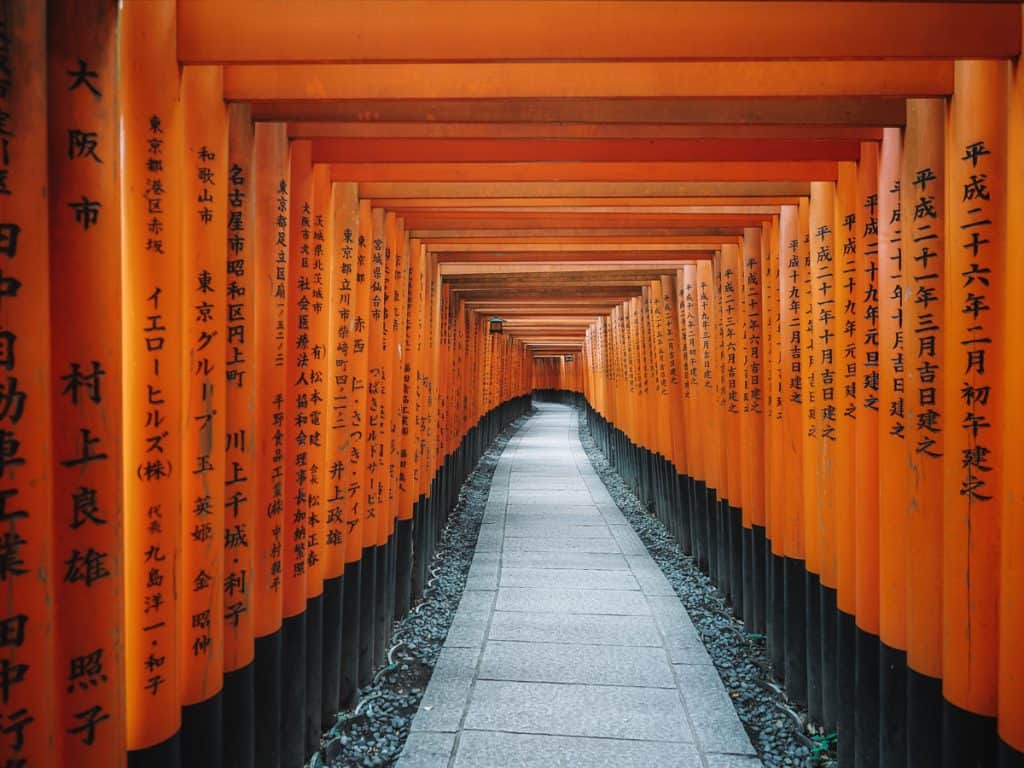
Fushimi Inari Taisha is one of the most famous things to do in Kyoto, so it probably needs no introduction. What a lot of people don’t know about it though, is that the shrine is dedicated to Inari, the god of rice, and it’s said to be over a thousand years old!
The shrine is most well-known for its thousands of red torii gates, which wind their way up the mountain behind the main shrine buildings. It’s a popular spot for hikers, and the 4 km uphill trail is well worth the effort, as you’ll be rewarded with stunning views from the top.
The Details:
Location: Fushimi Inari Taisha
Opening Hours: 24 hours a day
Entrance Fee: Free
Recommended Tour: Fushimi Inari Tour and Lunch with a Local
#2 | Wander through Arashiyama Bamboo Forest
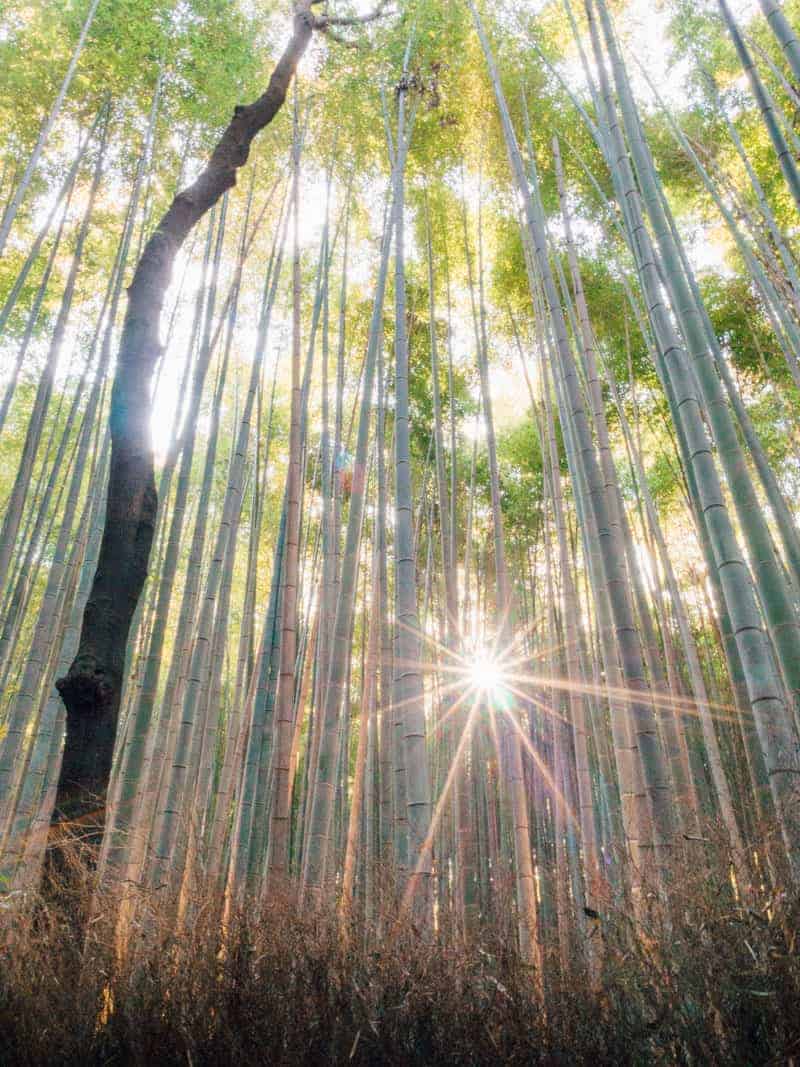
The bamboo forest at Arashiyama is one of the most stunning attractions in Kyoto and should definitely be on your list of things to do in this city. This iconic forest is one of the most photographed places in the city, so chances are you’ve seen it before even if you don’t know it.
The forest is located just outside of Kyoto, in the town of Arashiyama. It’s a short bus or train ride from downtown Kyoto, and well worth the effort to get there. The forest is made up of hundreds of bamboo trees, which create a tunnel-like effect. It’s a popular spot for photography, and it’s also said to be lucky to walk through the forest.
Wandering through the towering bamboo stalks is an unforgettable experience and one that you’re sure to want to repeat!
Location: Arashiyama Bamboo Forest
Opening Hours: 24 hours a day, we recommend visiting early in the morning.
Recommended Tour: Arashiyama Walking Tour or Arashiyama Rickshaw Tour & Bamboo Forest
#3 | Feast Your way through Nishiki Market

The best part about exploring a new country is trying all the food, and Japan is no exception. From sushi to ramen, there are plenty of delicious dishes to try here – and Nishiki Market is the perfect place to sample some of Kyoto’s local fare.
The market expands over a narrow, five-block stretch and is made up of over one hundred food stalls, shops, and restaurants. It’s often referred to as “Kyoto’s Kitchen,” and it’s easy to see why. The market is a food lover’s paradise, and it’s the perfect place to try some of the local specialties, like dried seafood and traditional Japanese sushi.
You’ll find everything from fresh produce to Japanese sweets, and there are plenty of places to eat if you get hungry. Nishiki Market is a great place to wander and explore, and you’re sure to find something to your taste.
Location: Nishiki Market
Opening Hours: The market is open from 9 am to 6 pm
Entrance Fee: There is no entrance fee, and you can easily spend an hour or two exploring the stalls.
Recommended Tour: Nishiki Market Food Tour incl. Lunch or Nishiki Market Food Tour incl. Cooking Class
#4 | Visit Kiyomizu-dera Temple
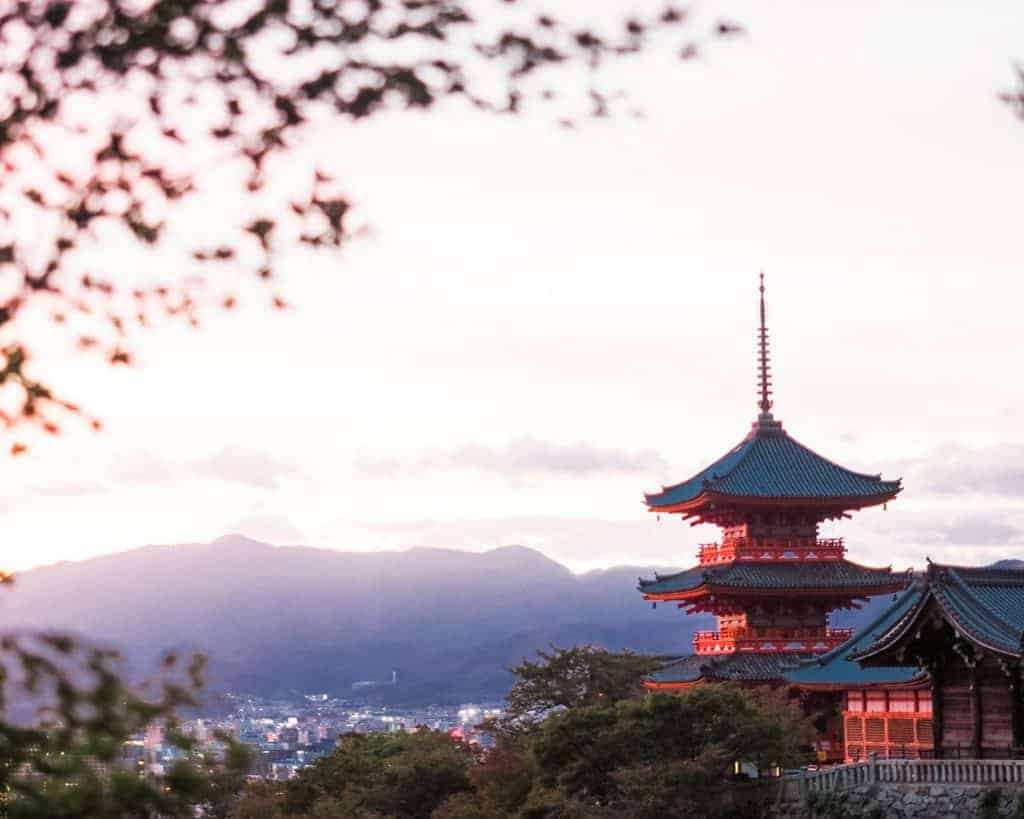
Kiyomizu-dera is one of the most popular temples in Kyoto and has even been named a UNESCO World Heritage Site. The temple complex is located on a hillside, and there are stunning views of the city below.
The temple was first built in 778, and it’s been through several renovations over the years. The current buildings date back to 1633, and they’re some of the best-preserved examples of traditional Japanese architecture in the city.
The temple is most famous for its wooden stage, which juts out over the hillside and offers stunning views of the cityscape below. The stage is supported by 13 meters of pillars, and it’s said to be lucky to stand on it. The temple is also home to a number of Buddhist statues, as well as a museum with Buddhist artifacts.
The temple is located a short walk from the Kiyomizu-Gojo station, so you can get there easily on public transportation.
Location: Kiyomizu-dera
Opening Hours: Kiyomizu-dera is open from 6 am to 6 pm
Entrance Fee: The entrance fee is 400 Yen for adults
Recommended Tour: Kyoto Private Walking Tour with Local Guide
#5 | Wander around Higashiyama District
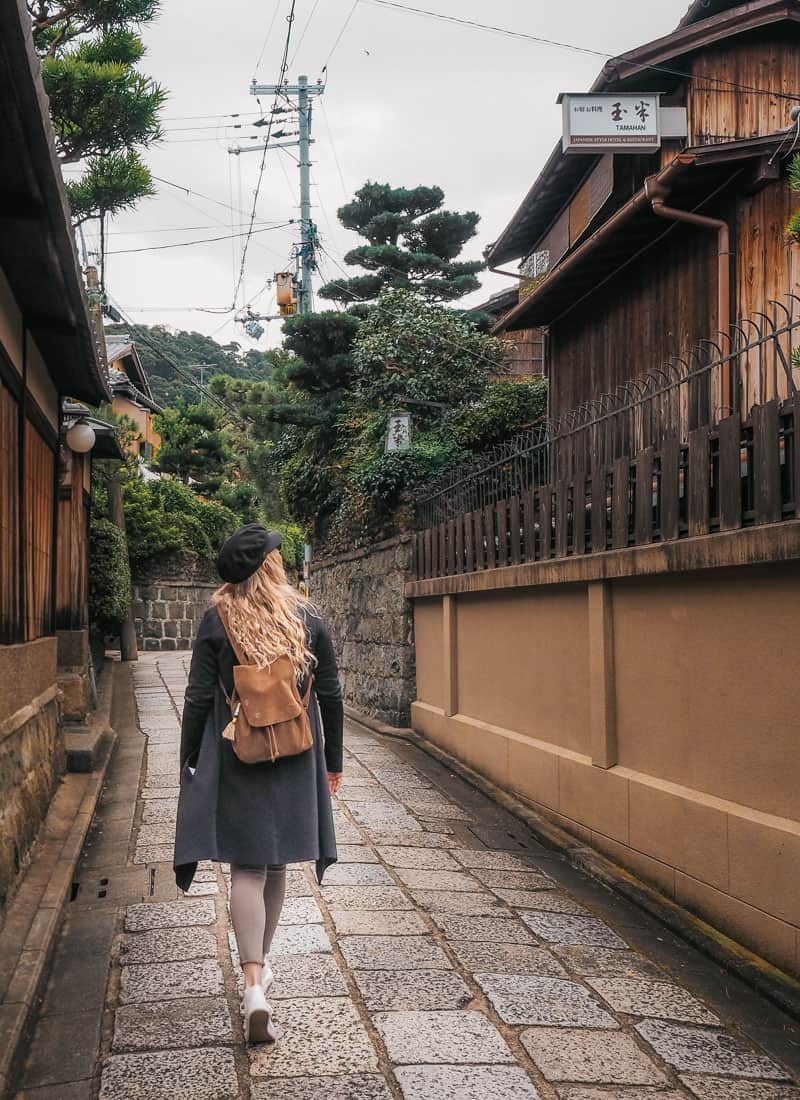
The Higashiyama District is one of the best places to explore on foot, and it’s full of narrow streets and traditional Japanese buildings. The district is located east of the Kamo River, and it’s a great place to wander and get lost.
There are plenty of things to see in the Higashiyama District, including the Higashiyama Zoo and Botanical Gardens, the Gion district, and the Philosopher’s Walk. The district is also home to a number of temples and shrines, including Kiyomizu-dera and Yasaka Shrine.
The best way to explore the Higashiyama District is on foot, so you can wander at your own pace and take in the sights. The district is located east of the Kamo River, and it’s a short walk from the Gion-Shijo station.
You’ll wander past the imposing Yasaka Pagoda, you can actually go inside for a look if you like.
Location: Higashiyama Ward
Recommended Tour: Kyoto Private Walking Tour with Local Guide or Rickshaw Tour of Gion and Higashiyama Area
#6 | Visit Kinkaku-Ji (Golden Temple)

Kinkaku-ji, or the Golden Temple, is one of the most popular Kyoto attractions. This Zen-Buddhist temple was built in 1397 as a retirement villa for the shogun Ashikaga Yoshimitsu. It later became a Buddhist temple, and it was even used as a residence for the abbot during the Muromachi period.
The temple is named for its golden exterior, and it’s one of the most beautiful examples of Buddhist architecture in Kyoto. The temple complex is located on a pond, and there are stunning views of the gardens from the verandah. Visiting the Golden Temple is an absolute must do in Kyoto!
Location: Kinkaku-Ji
Opening Hours: Kinkaku-ji is open for visits from 9 am to 5 pm daily, all year round.
Entrance Fee: There is an entrance fee of 400 Yen for adults to visit the temple.
Recommended Tour: Kinkaku-Ji and Niko Castle Half Day Tour
#7 | Attend a Tea Ceremony
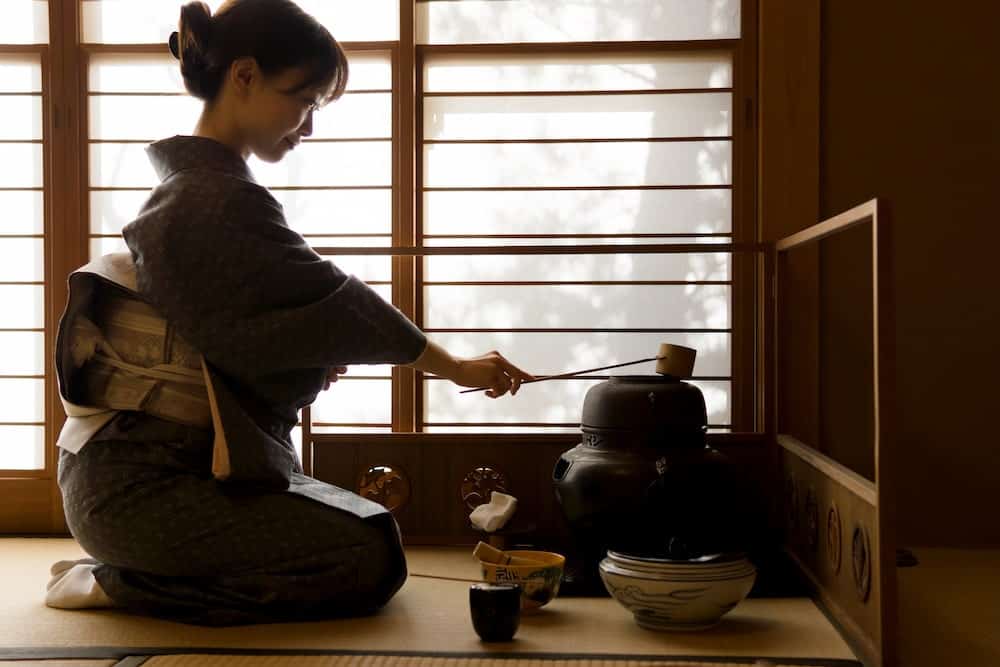
A tea ceremony is a traditional Japanese ritual that dates back to the 15th century. The ceremony is a way to appreciate the taste and aroma of tea, and it’s also a form of art. For those looking for things to do in Kyoto that will give you a taste of traditional Japanese culture, attending a tea ceremony is a must.
There are a number of places where you can attend a tea ceremony in Kyoto, including the Fushimi Inari Shrine and the Gion district. The ceremonies are usually led by a tea master, and they’re typically conducted in silence.
During a tea ceremony, you’ll be served a cup of matcha (powdered green tea) and a sweet. The tea ceremony takes place in a special room called a tearoom, and it’s a relaxing and interesting experience.
You can find tea ceremony classes all over Kyoto, and it’s a great way to learn about traditional Japanese culture.
Location: Tea Ceremony Camellia Garden
Recommended Tour: Tea Ceremony at Camellia Garden or Tea Ceremony Ju-An at Jotokuji Temple
#8 | Search for Geishas at Gion Corner
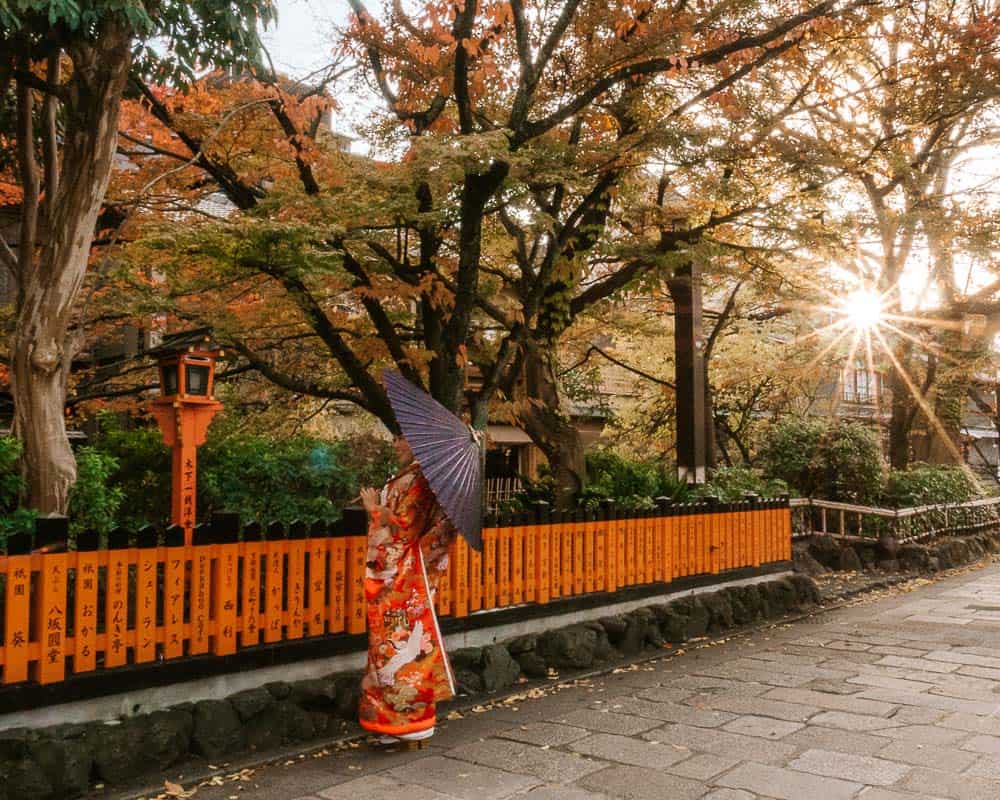
Gion is the best place to see geishas in Kyoto, and it’s one of the most popular things to do in the city. Geishas are traditional Japanese entertainers who wear elaborate kimonos and perform various arts, such as music, dance, and poetry.
While you can sometimes spot geishas walking to appointments around Gion, the best place to see them is at the Gion Corner theatre. The theatre offers a variety of performances, including traditional Japanese dance and music, and you can even get your photo taken with a geisha.
Gion Corner is located in the Gion district, and it’s a short walk from the Gion-Shijo station.
Location: Gion Corner
Opening Hours: Gion Corner offers performances every day from 6:30 pm
Entrance Fee: Theatre tickets start at 3,150 Yen.
Recommended Tour: Gion Geisha District Tour
#9 | Wander Along the Philosopher’s Path
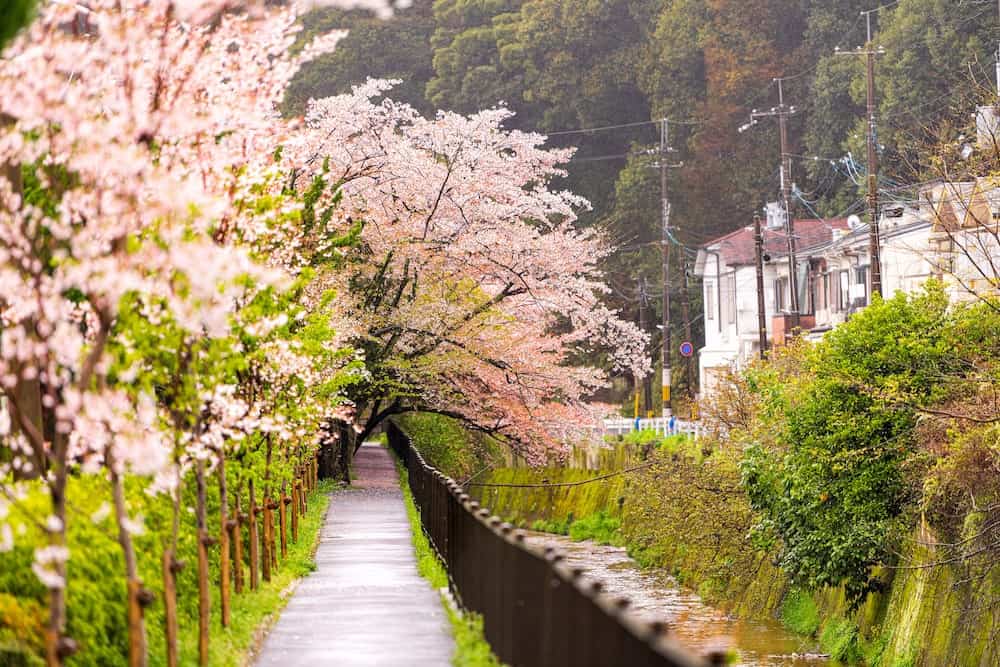
For history buffs and philosophy fanatics looking for what to do in Kyoto, this ones for you! The Philosopher’s Path is a stone path that runs along a canal in the Higashiyama district. The path gets its name from the philosopher Nishida Kitaro, who used to walk along the path every day on his way to Kyoto University.
The path is lined with cherry trees, and it’s a popular spot for cherry blossom viewing in the spring. The path is also home to a number of temples and shrines, including Nanzen-ji and Honen-in.
The Philosopher’s Path is located northeast of the Higashiyama district, and it’s about a 20-minute walk from the Keage station. The path is free to walk, and it’s open 24 hours.
Location: Philosopher’s Path
Opening Hours: 24/7
Recommended Tour: Ginkaku-Ji and Philosopher’s Path Bike Tour
#10 | Enjoy dinner in Pontocho
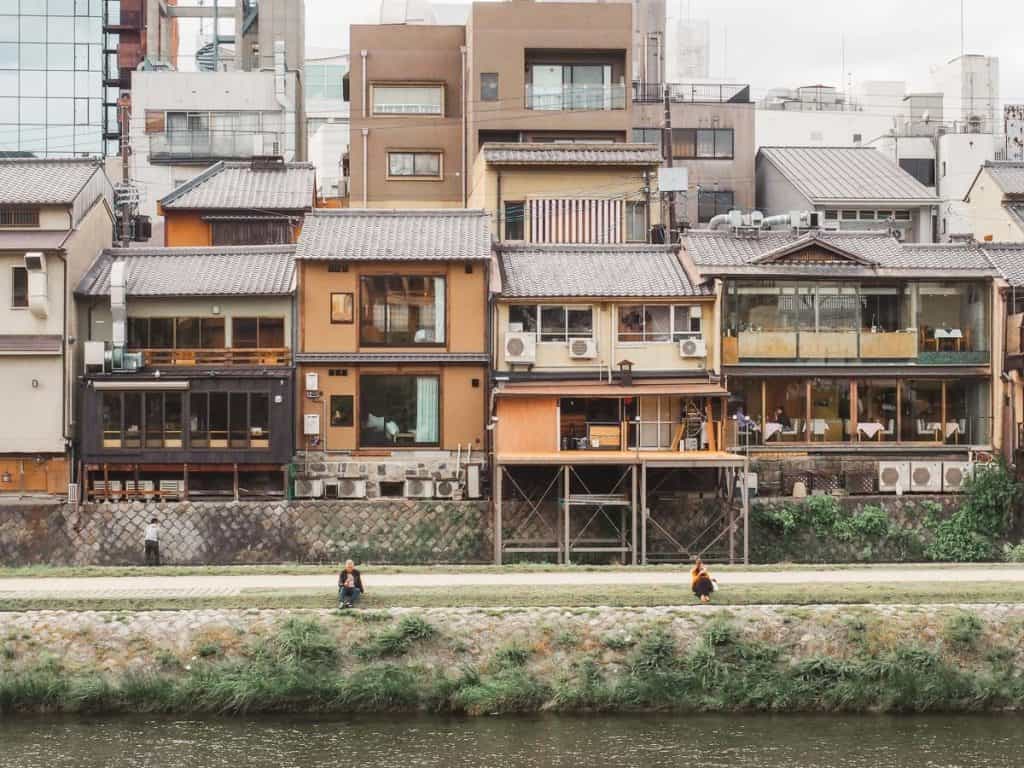
Pontocho is a narrow alleyway packed with restaurants and bars, and it’s one of the best places in Kyoto for dinner. The alleyway is located in the Gion district, and it’s known for having any kind of food you can think of – from inexpensive local cuisine to international foods, and even traditional Japanese Izakaya restaurants.
An Izakaya is a Japanese pub, and they’re typically casual places where you can enjoy a meal and some drinks with friends. Pontocho is the perfect place to try traditional Japanese dishes like yakitori (grilled chicken) and tempura, and there are plenty of restaurants to choose from.
Whether you’re a picky eater or you like to try new things, you’ll find something to your taste in Pontocho. The price of your meal will vary depending on the restaurant you choose, but you can find reasonably priced meals for around 1,000 – 2,000 Yen.
Location: Pontocho
Recommended Tour: Pontocho Evening Food Tour or Izakaya Food Tour with Local Guide
Looking for More Kyoto Tourist Spots?
If you’re planning to stay longer than 2 days , here’s a list of 15 more fun things to see in Kyoto:
- Relax in the Zen garden at Ryoanji Temple
- Ginkakuji Temple (Silver Temple)
- Learn how to make sushi rolls in a Japanese cooking class
- Take photos of the stunning red lanterns at Kifune Shrine
- Have lunch at Kawadoko on the Kamogawa River
- Feed the wild deer at Nara Deer Park on this heritage tour
- Take a trip out to the Ine no Funaya fishing village
- Learn the art of Samurai with a one hour class
- Wander across the Togetsukyo Bridge
- Take a trip on the Sagano Train during Cherry Blossom Season
- See the cute monkeys at Arashiyama Monkey Park Iwatayama
- Take a tour through a 400-year-old Sake Brewery
- Explore the beautiful Tenryuji Temple and surrounding Zen gardens
- Visit the Wazuka Matcha Tea Plantation
- Dress up in a Kimono and enjoy a one hour private photoshoot
Have we missed a spot? Can you recommend any other fun things to do in Japan for other visitors to check out, let us know in the comments below!

Ready to Book Your Trip to Kyoto?
Kyoto is one of our favourite cities in Japan. It is steeped in history, and there’s no shortage of sights to see and things to do in Kyoto.
If you’re looking for more travel guides and information for planning a trip to Japan , be sure to check out our other Japan travel blog articles.
More Japan Travel Guides
View more resources & tips to help plan your japan trip.
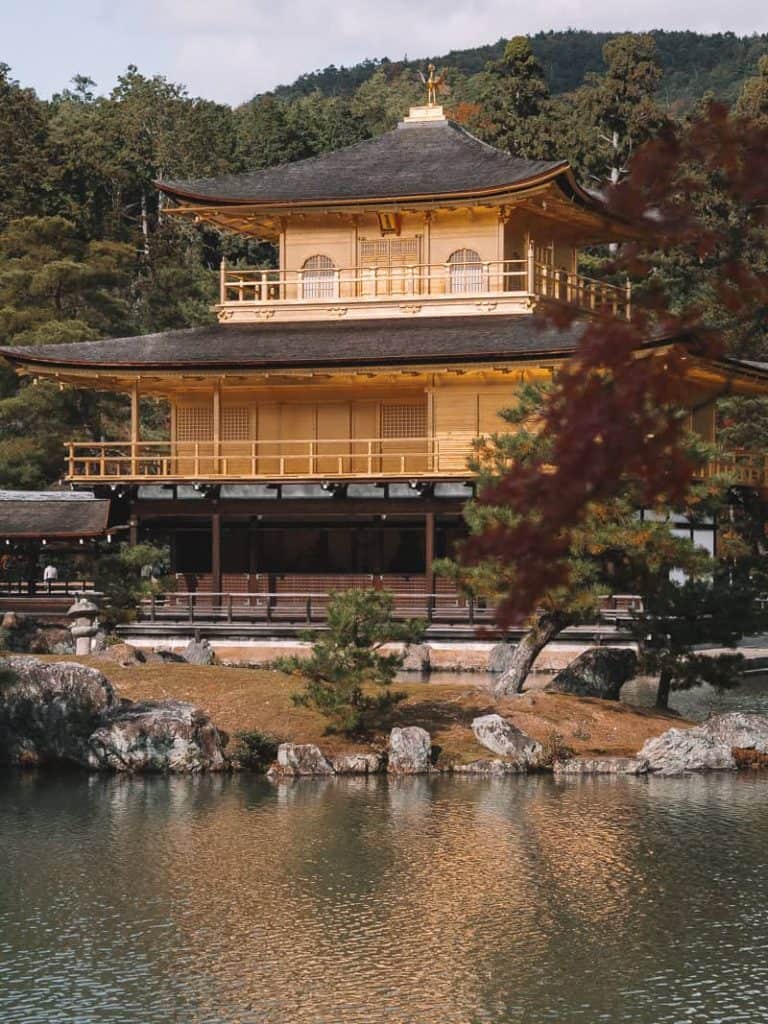
Feeling inspired? Here are 10 amazing destinations you must add to your Travel Bucket List !
Planning a trip soon? Here’s a list of the websites we use for booking our trips:
- Skyscanner for the best flight deals
- Booking.com for the best rates on hotels
- HomeAway for the best price on apartment and home rentals
- Rentalcars.com for quick and easy car rentals
- Luxury Escapes | Expedia for luxury package holiday deals and tours
- Get Your Guide | Klook | Viator for booking day tours and attraction tickets
- Tourradar for a wide selection of multi-day tours
- Safety Wing for the most comprehensive worldwide travel insurance
Did You Know? We use ads and affiliate links on this website. When you click through and make a purchase, we may receive a small commission (at no extra cost to you), that helps us pay the bills to keep running this blog as a free resource. We only recommend products we use ourselves. If you’re planning to book a trip soon, please consider clicking through the links above, so that we can continue to provide free travel guides, just like this one! Please see our Disclosure Policy for more details.
About the Author:
Amanda Twine is the founder and creator of Bucket List Seekers – a luxury travel blog sharing informative travel guides, food guides, hotel reviews, itineraries, and tips about how to make luxury travel more affordable.
Connect with us on Facebook | Pinterest | Instagram | Twitter . If you found this article helpful, please share it with your friends!

Share This Post:
Get Access to our FREE Travel Resources Library!
Subscribe and get exclusive access to loads of printable planning checklists, maps, itineraries, destination bucket lists, and more!
You’ll Also Love

Leave a Reply Cancel reply
You must be logged in to post a comment.

10 Best Beaches on the Sunshine Coast, Queensland
- Destinations
- Travel Guides
- Travel Itineraries
- Travel Tips
- Accommodation
Join Our Newsletter
And get exclusive access to our FREE Travel Planning Resources!
- Work With Us
- Disclosure Policy
- Terms & Conditions
- Privacy Policy
Copyright © 2024 Bucket List Seekers
Privacy Overview
- Tokyo Cheapo (繁體中文)
Kyoto Top Attractions: 12 Must-See Sights in Japan's Ancient Capital
If Japan’s ancient capital is on the top of your travel hit list, but you’re not sure where to begin, here’s a starter’s guide to the top Kyoto attractions!
Kyoto easily has enough to keep you entertained for weeks. But if you’re on a whirlwind tour or just want to make sure you don’t miss anything major, look no further. Once the capital of Japan and considered today’s cultural capital, Kyoto has no shortage of temples and shrines, but there are also markets and bamboo forests to explore too.
- Kinkaku-ji (Golden Pavilion)
- Fushimi Inari Taisha
- Higashiyama District
- Sagano Bamboo Forest
- Nishiki Market
- Ginkaku-ji (Silver Pavilion)
- Geisha spotting in Gion
- Philosopher’s Path
- Yasaka Shrine
1. Kinkaku-ji

Featured on the cover of every Kyoto guide book, Kinkaku-ji is also known as the Golden Pavilion. The Zen temple was destroyed on multiple occasions (including once by an enraged monk who set it alight), with the current iteration built in 1955.
Perched beside a lake and surrounded by well-manicured gardens, the gold-leaf-covered temple is a sight to behold. It’s best visited when it opens in the morning as it is a tad quieter. If you have time, enjoy some green tea and a small gold-leaf-dotted wagashi sweet in the garden tearooms.
Take Bus 205 from Kyoto Station.
- Kinkaku-ji Temple
2. Fushimi Inari Taisha
Take the JR Nara Line from Kyoto Station to JR Inari Station.

Follow the famous trail of red gates as far as you can up the sacred Mount Inari. The main shrine will welcome you from the station, with a huge 16th-century torii gate, the main shrine buildings and plenty of food stalls.
Pro tip: Go on a Kyoto sake brewery tour in the famed Fushimi sake district.
Dedicated to Inari — the Shintō God of rice — the main shrine of Fushimi Inari was built in 1499. But some of the earliest parts of it date all the way back to 711. Foxes are believed to be messengers of Inari and plenty of appearances throughout the area, so keep an eye out. The most densely layered gates are found early on in the trail, so don’t worry about hiking the whole way to the top if you don’t have time (or energy).
- Fushimi Inari Shrine
3. Kiyomizudera
Kiyomizudera is a 15-minute walk from Kiyomizu-gojō station on the Keihan Railway Line. Alternatively, take Bus 86 or 206 from the Kyoto Station.

Known for its wooden veranda with stunning views of Kyoto, Kiyomizudera is a highlight of the city. It’s also the perfect way to end a walk through Higashiyama (next on our list).
Meaning “Pure Water Temple”, it was built close to the Otowa Waterfall and is now part of the Kita Hosse sect of Japanese Buddhism. As well as admiring the view both from and of the temple, you can pray for love at Jishu Shrine behind the main hall. Or choose between longevity, educational fortune, or luck in love by drinking from one of the waterfall’s three streams.
- Kiyomizu-dera
4. Stroll the streets of Higashiyama/h2> Higashiyama is located between Yasaka Shrine and Kiyomizudera, best accessed from either Gion-shijō, Kawaramachi, Higashiyama or Kiyomizu-gojō stations. Buses 86 or 206 will take you to Kiyomizudera and you can explore from there. The streets of Higashiyama | Photo by Lily Crossley-Baxter For that ancient-Kyoto feel, Higashiyama is the place to visit. It has narrow, winding streets, and traditional shop fronts for you to explore. And don’t forget the beautiful shrines and pagodas to admire too. Hōkan-ji’s pagoda and the brightly colored kukurizaku (decorative balls) of Daikoku-san Kongō-ji Kōshin-dō (or Yasaka Kōshin-dō for short) are just some of the highlights. The most popular and photogenic streets are Ninnen-zaka and Sannen-zaka, which feature restored wooden-fronted teahouses, shops, and restaurants. These streets are close to Kiyomizudera and the walk between is one of the highlights of any trip to the city. 5. Relax at Sagano Bamboo Forest
Sagano Bamboo Forest is a short walk from Arashiyama Station on the Keifuku Dentetsu tram. It’s a little farther from Saga Arashiyama Station on the JR San-in Line, which has trains direct from Kyoto Station. Arashiyama Station on the Hankyu Line will take you to the otherside of Togetsukyo Bridge which is a slightly longer but pleasant walk.

Stroll through the famous and picturesque bamboo forest and enjoy one of the top 100 soundscapes of Japan. With swaying trees and shady pathways stretching up to 500 m, you can explore the hidden spots around Tenryūji (#10 on our list).
Be sure to visit Nonomiya Shrine to make a wish on the tortoise stone and admire the beautiful heart-shaped ema . If you know anyone getting married or expecting a child, this is a great place to buy a small charm to wish them luck. The bamboo forest is extremely popular of course, so if you want to see it at its emptiest, arrive early!
6. Fill up at Nishiki Market | 錦市場
Nishiki is close to Shijō station on the Karasuma Subway line and Kawaramachi Station on the Hankyu Line.

Squeezing over 100 shops into a five-block street, Nishiki is nicknamed Kyoto’s Kitchen, and certainly delivers on the food front. Originally a fish market started in 1310, today you can find stores that have stayed in families for generations, with traditional Japanese foods like pickled vegetables, locally grown rice and dried fish.
Many stalls offer tasters and there are plenty of stalls serving fresh food from steamed buns to homemade tofu and you can even try a quail-egg-stuffed mini-octopus!
7. Go Zen at Ginkaku-ji | 銀閣寺
You can either walk the Philosopher’s Path from Nanzen-ji (around 40 minutes) or catch the number 5 or 17 buses from Kyoto Station.

Converted into a temple in 1940, it was a hub of cultural development including the progression of tea ceremony, flower arrangement, and Noh theater. The Sea of Silver Sand contains the carefully constructed cone known as the moon-viewing platform, and the moss garden is equally beautiful.
8. Ryōan-ji | 龍安寺
The temple is a few minutes on Bus 59 from Kinkaku-ji. Or it’s 10-minute walk from Ryōan-ji Station on the small Keifuku Kitano line.

Home to Japan’s most famous rock garden, Ryōan-ji is a Zen temple under the Rinzai sect of Buddhism. Originally though, it was an aristocratic villa. The garden features 15 different rocks, and it is thought to be impossible to see them all at once. However, if you manage to do so, you will be enlightened. There’s also a beautiful garden and pond to explore and a restaurant which specializes in yudofu (boiled tofu).
Ryoanji Temple
9. spot a geisha in gion | 祇園.
Gion Shijō Station is the closest option for those arriving by train. Bus 206 can also take you close by.

The most famous of the five hanamachi (flower towns) of Kyoto, Gion is a well-known place for geisha spotting . Gion is filled with ancient ochiya (teahouses) and ryotei (restaurants) that host high-class evenings of entertainment. Many won’t accept new customers, so you may have to stick to street-watching if you are keen to catch a glimpse of the mysterious women (but be respectful, they are often surrounded). With or without the elusive figures, Gion is a beautiful area to explore day or night, with a traditional atmosphere and popular with couples for a stroll after dinner.
10. Tenryū-ji | 天龍寺
Tenryū-ji is across the road from the Arashiyama Keifuku Dentetsu tram station. Saga Arashiyama Station is a few minutes away and has direct trains from Kyoto Station, whereas the Hankyu Arashiyama Station is a pleasant walk from across the bridge.

UNESCO World Heritage Site Tenryū-ji is the most important Buddhist temple in Arashiyama. Built to appease the spirit of an emperor in 1339, various disasters have lead to re-building, but the garden has survived and remains a beautiful example of Zen design. With a central pond and the Arashiyama mountains forming an equisite backdrop, the view is perfect for a stint of contemplation, and exploring the grounds is a relaxing journey into nature.
- Tenryuji Temple
11. Philosopher’s Path | 哲学の道
The path is located right next to Ginkaku-ji, which can be reached by Bus 5 or 17 from Kyoto Station.

A peaceful place to reflect, the Philosopher’s Path runs along the canal in the Higashiyama District and is covered with cherry blossom in spring. It is beautiful throughout the year however, and is lined with the occasional cafe or shop with detours to shrines and temples along the way.
The path stretches between Ginkaku-ji and Nanzenji and is around 2 km long. One of Japan’s most respected philosophers, Nishida Kitaro, would walk this path to university each day and practice meditation, giving the path its name.
12. Yasaka Shrine | 八坂神社

Just across the Kamo River and the welcoming gate to the Higashiyama District , Yasaka Shrine is well known for festivals, weddings and hanami parties. Founded over 1,300 years ago, it is home to the most famous festival in Japan — the Gion Matsuri — which takes place every July. The shrine is surrounded by Matsuyama Park which is great for cherry-blossom viewing. It also contains Shōren-in, a temple with close associations to the Imperial Family dating back to the 12th century.
Yasaka Shrine is a few minutes’ walk from Gion Shijō Station on the Keihan Main Line.
Only have a weekend in Kyoto? Read our sightseeing itineraries for city’s east and west sides.
This post was originally published in September 2018. Last updated in February 2023 by Maria Danuco.
- The Philosopher’s Path
- Attractions
- Sightseeing
Get the best Japan Cheapo hacks direct to your inbox

Best Places To Stay in Nara
Because this beautiful city deserves to be more than just a day-trip destination.

15 Things To Do in Osaka: Explore "Japan's Kitchen"
Get ready for colorful nights, culinary delights — and much more.

May 2024: Top Events Around Japan
Giant battling kites, a thousand-samurai march, flower festivals and more!

10 Adrenaline-Pumping Okinawa Adventures
The options are plentiful, the prices low. Choose from jungle treks, wild camping, zip-lining and more.

A Matcha Lover's Guide to Kyoto
Love tea? Then you'll love Kyoto.

Updated: 2024 Japan Cherry Blossom Forecast
The blooms are fashionably late. Here's when to see sakura in all the major cities.

April 2024: Top Events Around Japan
Look forward to flowers and festivals galore!

8 Perfect Places To See Cherry Blossoms in Osaka
Castle grounds, sprawling parks — and somewhere extra special.

Cherry Blossoms in Kyoto: 14 Best Sakura Spots
From temples to riversides, geisha districts — and more.

9 Things To Do in Fukui
Explore the shiny new stop on the Hokuriku Shinkansen — an easy trip from Tokyo.

6 Must-See Fertility and "Penis Festivals" in Japan
Stop giggling and start reading.

11 Best Places to See Cherry Blossoms in Japan
Riverside paths, real castle moats, pagodas and more.

Recommended hotels located nearby

Close without accepting
14 Places to Visit in Kyoto + Things To Do

If there’s only one place you should visit in Japan, it has to be Kyoto! This historic city is a must-see destination for travelers hoping to get a glimpse of Old Japan.
Kyoto is one of Japan’s most beautiful cities, famed for its, which includes 17 UNESCO World Heritage Sites.
Here are the main places that I enjoyed in Kyoto. This list is perfect for first-timers planning a quick visit.
Kyoto travel essentials: (click below to view prices online)
Where to stay Tours + discounts WiFi/SIM
Japan WIFI/SIM Card
See also : Kyoto Itinerary | Osaka Tourist Spots | Best Places to Visit in Japan | Best Places to Visit in Tokyo | Japan Itinerary
1. Fushimi Inari Shrine (Fushimi Inari Taisha)
Location : 68 Fukakusa Yabunouchicho, Fushimi Ward, Southern Kyoto . Save on Google Maps .
Dedicated to Inari, the Shinto god of rice and success in business, the Fushimi Inari Shrine is one of the most famous sights in Japan. Here, you’ll find the iconic vermillion torii gate covered trail that leads to the sacred Mount Inari. The Fushimi Inari Shrine is perhaps the busiest tourist spot in Kyoto, so visit early in the morning before the crowds arrive.
How to go :
Take the JR train (JR Nara Line) to JR Inari Station, two stations away from Kyoto Station. You’ll find the shrine right outside the station. It’s also a short walk away from the Fushimi Inari Station along the Keihan Main Line.

Kyoto and Nara Day Tour from Osaka/Kyoto
See discounts
Kimono Rental in Kyoto
To help with your trip planning, I’ve added links to the locations on Google Maps. Feel free to click/tap on the links posted. Then, use the “save” feature on the Google Maps app for easy reference. I’ve also shared photos from my Instagram feed . Use Instagram’s save feature for quick access to your travel/feed goals.
Follow me on Instagram
2. Arashiyama Bamboo Forest
Location : Arashiyama, Ukyo Ward, Western Kyoto . Save on Google Maps .
Found in the western outskirts of the city, the Arashiyama Bamboo Forest is one of the most scenic attractions of Kyoto. A walking path cuts through the bamboo grove allowing you to get immersed in the serene view of towering bamboo trees.
Take the JR train to the JR Saga-Arashiyama Station. The bamboo grove is a 15-minute easy walk away from the station.

Sagano Romantic Train Ticket Ticket
Arashiyama rickshaw tour.
3. Tenryuji Temple

Tenryuji Temple in Arashiyama, Kyoto, Japan
Located beside the bamboo grove, the Tenryuji Temple is a must-visit when in Arashiyama. It the top Zen Buddhist temple in Kyoto and registered as a UNESCO World Heritage Site, as part of the “Historic Monuments of Ancient Kyoto”. Don’t miss the sprawling Zen garden with the Arashiyama mountains as its backdrop.

4. Togetsu-kyo Bridge, Arashiyama

Togetsu-kyō Bridge in Arashiyama, Kyoto, Japan
Location : Arashiyama, Ukyo Ward . Save on Google Maps .
The Togetsu-kyo Bridge, which literally means “Moon Crossing Bridge” is a well-known central landmark in Arashiyama. Stopover for a peaceful view of the riverside and surrounding mountains.
5. Kinkakuji Temple (Golden Pavilion)
Location : 1 Kinkakujicho, Kita Ward, Northwest Kyoto . Save on Google Maps .
In the northwest part of the city, you’ll find the Kinkakuji Temple or the Golden Pavillion, one of the most photographed sites in Kyoto. Take your spot from across the large pond to enjoy the landscape garden and the Zen Buddhist temple, which has its top two floors covered in gold leaf.

6. Kiyomizu-dera Temple

Kiyomizudera Temple view overlooking Kyoto, Japan
Location : 294 Kiyomizu, Higashiyama Ward, East Kyoto . Save on Google Maps .
Kiyomizu-dera Temple, which literally means “Pure Water Temple” was ) is a Buddhist temple founded on the site of the Otowa Waterfall in the eastern hills of Kyoto. A beautiful view can be seen from the terrace, which overlooks the canopy of trees and the Kyoto cityscape.

7. Kyoto Old Town (Sanneizaka & Nineizaka Streets)
Location : Higashiyama Ward, East Kyoto . Save on Google Maps .
Get a feel of Old Japan at the historic streets of Sanneizaka & Nineizaka. Walk through the stone paved streets lined the whole way with traditional wooden shophouses and landmarks like the Hōkan-ji Temple.

8. Kodaiji Temple

Kodaiji Temple in Kyoto, Japan
Location : 526 Shimokawaracho, Higashiyama Ward, East Kyoto . Save on Google Maps .
You’ll find the Kodaiji Temple temple near the northern end of Nineizaka Street. This Buddhist temple is famous for its stunning Zen gardens and special illumination shows in autumn and spring.

9. Yasaka Shrine & Gion District

Location : 625 Gionmachi Kitagawa, Higashiyama Ward, East Kyoto . Save on Google Maps .
From Kodaiji Temple, you can walk farther north and explore Gion, Kyoto’s geisha district. One of the main places to visit here is the Yasaka Shrine, home to the most famous festival in Japan, the Gion Matsuri. Visit during the evening to see hundreds of lanterns lit up at the dance stage fronting the main hall.

10. Nijo Castle

Location : 541 Nijojocho, Nakagyo Ward, Central Kyoto . Save on Google Maps .
Nijo Castle is another interesting place to go in Kyoto aside from its famed temples and shrines. This castle features massive stone walls surrounded by a wide moat, heavy gates, and a richly decorated palace.
Nijo Castle and Ninomaru Palace Admission Ticket

11. Kyoto Tower

Kyoto Tower in Kyoto, Japan
Location : 721-1 Higashishiokojicho, Shimogyo Ward . Save on Google Maps .
Get a breathtaking view overlooking Kyoto from the Kyoto Tower, the tallest structure in the city. It’s conveniently located beside Kyoto Station.
12. Sushi no Musashi

Location : Atsy Road, Kyoto Station (near the Shinkansen Hachijo entrance on the southern side of the station), Central Kyoto . Save on Google Maps .
If you’ve always wanted to try a conveyor belt sushi restaurant (kaiten-sushi), check out Sushi no Musashi, which has three branches in Kyoto including one right inside the Kyoto Station complex.

13. Ramen Sen no Kaze

Location : 580 Nakanocho, Nakagyo Ward, Central Kyoto . Save on Google Maps .
One of the best ramen I’ve had in Japan! Ramen Sen no Kaze is a must-try in Kyoto. The queue was long when I went but it was worth the wait.

14. Teramachi Shinkyogoku Shopping Arcade

Location : Central Kyoto . Save on Google Maps .
What places have you added to your bucketlist? Have you been to beautiful places in Kyoto that should be on this list? Feel free to share your thoughts!
Places to visit in Kyoto
Kyoto tourist spots, things to do in Kyoto, where to go in Kyoto & more.
Note: Destinations featured above are not listed by rank.
Where to Stay in Kyoto
Click below & search recommended Kyoto hotels/hostels/home rentals within your budget. Remember to set your min/max price , travel dates, and sort by review ratings . I often book online with these trusted booking sites below for rock-bottom prices & convenient bookings.
Agoda Booking.com
Book sooner rather than later if you already have your dates set. Cheaper-priced rooms and hotels with high reviews tend to get fully booked faster, especially during busy days like weekends, holidays & peak tourist seasons.
Kyoto Essentials & Top Discounts
Japan mobile data sim card/pocket wifi.
Travel with ease & confidence throughout your trip. Get a data SIM card or pocket WIFI device! Access Google Maps and all your favorite travel apps. Share your travel stories instantly with all your friends. Click below and choose your pick-up location:
Japan SIM card Pocket WIFI See all discounts
JR Kansai WIDE Area Pass (5 Days)
Unlimited JR rides in Kyoto, Osaka, Nara, Himeji, Kobe & more
ICOCA IC Card
Kyoto hop-on hop-off sightseeing bus pass, jr pass for whole japan.
Popular discounts and tours booked by other travelers:
Japan Trail and Shinkansen Tickets
Kimono Rental in Kyoto with Optional Photoshoot
Bus Transfers between Osaka or Kyoto and Kansai International Airport (KIX)
One Day Kimono Rental
JR Takayama-Hokuriku Area Tourist Pass (5 Days)
Sagano Romantic Train Ticket (Kyoto Station Pick Up)
Kyoto Sagano Sightseeing Carriage Tour
Asia 4G LTE WIFI Hotspot (Manila Airport Pick Up)
Kyoto JR Car Rental (1, 2, 3, or 4 Days)
Click below to see more on:
Don’t Stop Here
Click below for more travel inspiration:

Don’t leave yet. There’s more!

Discover more blogs and travel tips in:
Leave a Reply Cancel reply
Your email address will not be published. Required fields are marked *
This site uses Akismet to reduce spam. Learn how your comment data is processed .
March 16, 2020 at 6:31 pm
Nice places i wanna check there. Thanks ;)
April 24, 2020 at 4:37 pm
There are three things I want to do in Japan: 1. Visit the temples 2. Eat Ramen and Sushi 3. Visit the Kyoto Tower And adding Arashiyama Bamboo Forest on my list must be fun. Thanks for this!
August 7, 2021 at 12:06 am
Seems like covid isn’t going away the earliest we want, but I’m planning our Japan trip as early as now 😁 Thanks for the ideas and I got inspired by how you presented Kyoto. This is perfect because we’re planning to enter through Osaka and a quick trip to Kyoto will be included in the itinerary. Thanks, Marcos!
20 Popular Tourist Attractions in Kyoto – An Overview Per Area
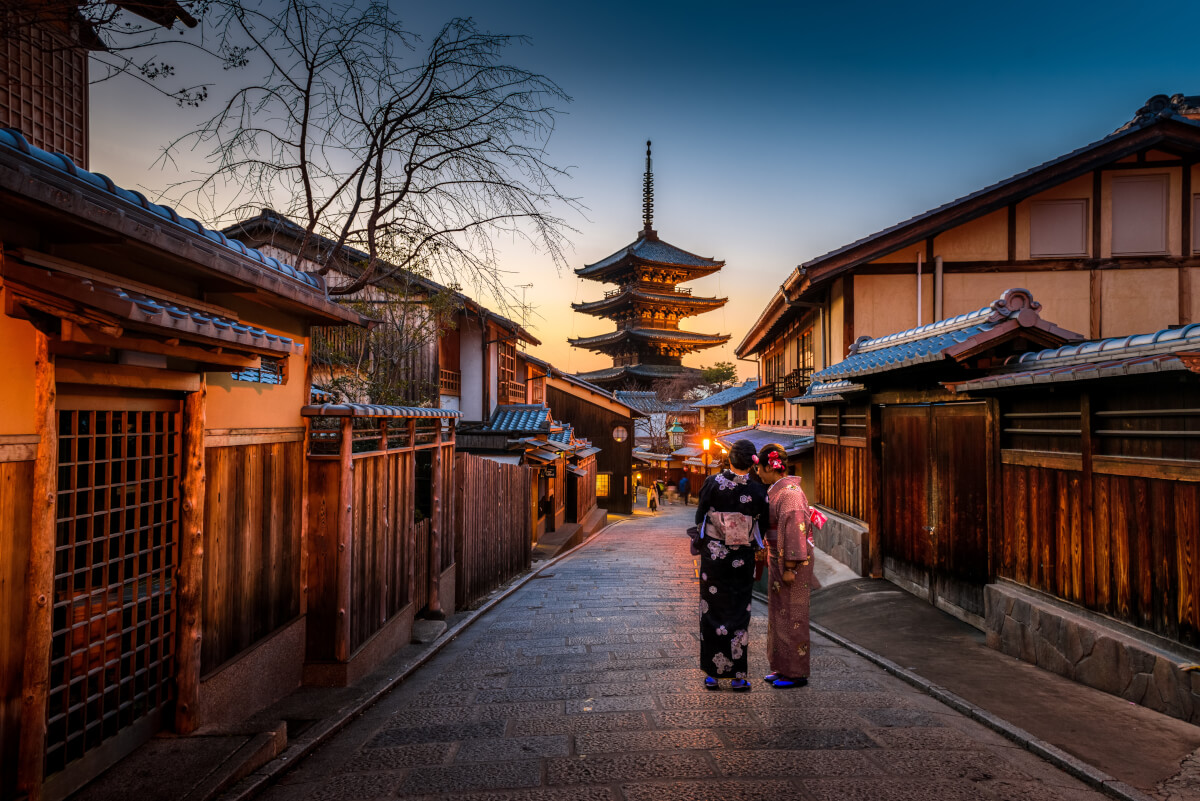
Kyoto, the ancient capital of Japan, is always listed among the most popular tourist destinations in Japan. It is a wonderful place to visit, all year round and offers an abundance of things to see and do. Like many of the other bigger cities such as Tokyo and Osaka, it has been through rapid growth as a center of the economy. Many amazing sightseeing spots draw many tourists to the city. Once you open a travel guide in Kyoto, you might get a little confused and feel lost as there are so many places to go and things to do there. In this article, we list Kyoto’s most popular tourist attractions (and some hidden attractions), and tell you more about each area and its’ highlights! But first, let’s start with an introduction to a beautiful city!
▼ Want the real Kyoto experience? Meet some Maiko and Geiko (geisha) and explore the Gion area with us!
About Kyoto
1. kyoto station, 2. kyoto imperial palace & kyoto gyoen, 3. gion district, 4. nijo castle, 5. nishiki market, 6. kinkakuji temple, 7. ryoanji temple, 8. kurama temple and kifune shrine, 9. fushimi inari shrine, 10. tofukuji temple, 11. gekkeikan okura sake museum, 12. kiyomizu-dera temple, 13. sanjusangendo temple, 14. arashiyama bamboo groves, 15. togetsukyo bridge, 16. arashiyama monkey park iwatayama, 17. amanohashidate, 20. yokai street, kimono rental in kyoto, find other experience, where to stay in kyoto, other articles you may like.
Kyoto (京都, Kyōto) is Japan’s oldest city and served as the nation’s capital and the emperor’s residence for over 1,000 years, from 794 until 1868. Over the centuries, the city has been destroyed by many wars and fires, however, because of its cultural and historical value Kyoto was largely spared by the WWII bombings. It is for this reason that you can still visit many old cultural landmarks and historical sites. And because of the preserved townscape, you will find many people walking around in a beautiful kimono (traditional Japanese clothing) in Kyoto! If you want to try on a kimono and explore the city, you can easily find some kimono rental shops in Kyoto to complete the look to match the historical sites.
Present day, Kyoto is home to about 2,000 temples and shrines such as the Fushimi-Inari Shrine, the Kinkaku-ji (The Golden Pavilion), and Kiyomizu-dera Temple. Some of Kyoto’s other famous tourist destinations include the Imperial Palace and the Gion district.
Kyoto is often combined with day trips to some of Japan’s famous tourist destinations that are located nearby, including Nara, Kobe, and Hiroshima.

Kyoto station is the city’s main gateway located in the very center of Kyoto. This is where most tourists start their trip in Kyoto as almost all of the public transportation lines depart and arrive here. The station is also known as a huge shopping complex, where you can try local foods and find perfect souvenirs to take home. Around the station, there are several attractive spots that can be seen from the observation deck of Kyoto Tower, which offers an amazing view of the entire city of Kyoto!
For more things to do around Kyoto Station have a read below!
▶Book your Kyoto Tower Observation Deck Admission E-ticket here
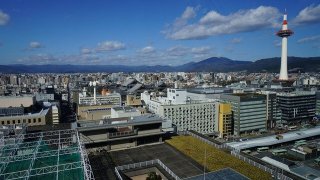
Other famous tourist attractions are also accessible by bus or subway. Kyoto Imperial Palace (also known as Kyoto Gosho), one of the most popular historical spots in Kyoto, can be reached by a 10-minute comfortable ride on the subway from Kyoto Station. Kyoto Imperial Palace is the former residence of the imperial family for over 1,000 years. The current building was reconstructed in 1855 after it burned down but the architecture kept the ancient style. It is located in the vast park of Kyoto Gyoen, and you can see the other important historical sites and enjoy beautiful gardens.
Learn all about Kyoto’s Imperial Palace and Kyoto Gyoen in the article below!
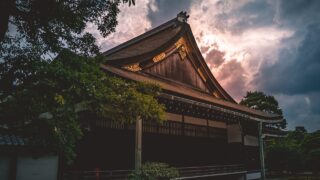
Gion district, often described as the geisha district, is the famous entertainment district that is home to many beautiful traditional restaurants and is great for strolling around. For those who want to have a more special experience, you can also visit traditional performances by geisha. It’s not easy to see the geisha’s performance since many of the places don’t allow first-timers. It’s best to book the walking tour including access to meet geisha and maiko who are apprentices of geisha and see their beautiful performance if you are interested in their history, culture, and traditions.
Recommended tour:
Another must-visit spot called Nijo Castle, which is designated as a UNESCO World Heritage Site is within walking distance from Kyoto Gyoen. This castle was originally built in 1603 and used as a temporary stay for the shogun when visiting from Tokyo and the lookout for Kyoto Gosho. The big reconstruction had been done with gorgeous paintings on the sliding doors, and it was the event that showed the power of the Edo shogunate throughout Japan. However the prosperity didn’t last forever, the end of the flourishing Edo period, one of the biggest historical events of Japan, happened here in 1867, when the imperial court regained its power once again when the last shogun returned its power to the court. The gorgeous interior and beautiful paintings on the sliding doors can be seen in the main hall, Honmaru Goten. Also, you can enjoy a relaxing stroll around the gardens at the castle site.

If you’re feeling hungry, Nishiki Market is the ideal spot to sample delicious Japanese traditional cuisine amid the unique atmosphere of the small stores lining the lively, narrow street. Located in the central part of Kyoto, it’s easily accessible from the city’s popular tourist attractions. Known as the Kitchen of Kyoto, Nishiki Market offers a variety of foods to try. For instance, Takotamago, a small octopus stuffed with a boiled quail egg, and Yuba, a traditional regional specialty made from tofu skin that forms on the surface of boiled soy milk which has been enjoyed in Kyoto since ancient times. Another Kyoto specialty is Hamo, which is Japanese pike conger eel. Its tempura is especially delicious. With so many shops, it can be hard to decide what to try. But don’t worry, leave it to the local guide and make sure you sample all the best foods that Nishiki Market has to offer!
On this Nishiki Market Food and Drink Tour , you can not only enjoy local food and drink, but also discover where the people of Kyoto shop and eat, learn about the area’s history, and explore both traditional and modern parts of the city.
▼Book our food and drink tour in Nishiki Market! This locally guided tour takes you on a food adventure at Nishiki Market, and then, you will stroll two Geisha districts. One is Pontocho Alley known as a scenic and quaint grummet spot along the most quaint river, Kamogawa, and the other one is Gion District, the biggest Geisha district of Kyoto. Let’s try several Kyoto local foods, sake, and sweets on the tour!
The most prestigious site is Kinkakuji Temple, also known as Golden Pavilion, a Zen Buddhist temple widely known because of its stunning design and appearance covered with gold leaf. You can take a relaxing walk in the Japanese traditional garden around the temple as well. In winter, the magnificent view of the golden temple covered by snow can be seen if you are lucky!
Learn more about the Kinkakuji area below!

Ryoanji Temple is another Zen temple listed as a UNESCO World Heritage Site with a famous rock garden which represents a simple, but important aspect of Japanese culture.
Explore all of the other zen and rock gardens Kyoto has to offer in the article below.

Further north in the mountains, there are two historical sites, Kurama Temple and Kifune Shrine. This area is also known as the best spot to enjoy hiking on the sacred mountain while exploring the spiritual sites in nature. The atmosphere here is different from what you can feel in the city, and the place offers an unforgettable memory! Although it is a bit out of the way, it is definitely worth visiting.
▼Book our Kurama & Kibune Private Trekking Tour! In this private tour, the guide will pick you up at your hotel and take a local train to the sacred mountain of Kurama. While hiking to the top, you will find many shrines and temples the guide will explain. During summer, you can have lunch at a traditional ‘kawadoko’, a riverside restaurant in the Kibune area!
This is probably what most tourists think of when they think of Kyoto. The southern part of Kyoto City has the most popular tourist attraction in Kyoto; the Fushimi Inari Shrine. What makes it so special and popular is the long line of thousands of red torii gates known as Senbon Torii. You have probably seen the iconic red torii gate pictures online or in guidebooks before. And to be honest, this is actually a must-visit spot that is also easily accessible by train from Kyoto station.
Discover everything that Fushimi Inari has in store below.

Besides Fushimi Inari Shrine, there are a number of other tourist spots in the area. Tofukuji Temple is one of them which is known as the best place to see the beautiful view of the colorful leaves in autumn. It’s one of the principal Zen temples in Kyoto and the large temple site includes the Zen garden and the oldest gate of the Zen temples in Japan which is designated as the National Treasure.
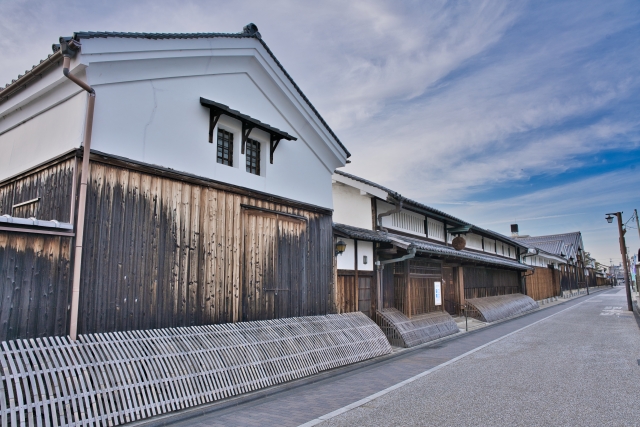
It’s a museum about Japanese sake, renovated from the old sake brewery. You can learn the history and process of making sake using a traditional method, but of course, you can taste some sake at the end of the tour! There’s an optional tour to visit the small sake brewery where a fermentation process can be observed through the window.
Sake Spectacular: Museum Tour & Tasting in Fushimi
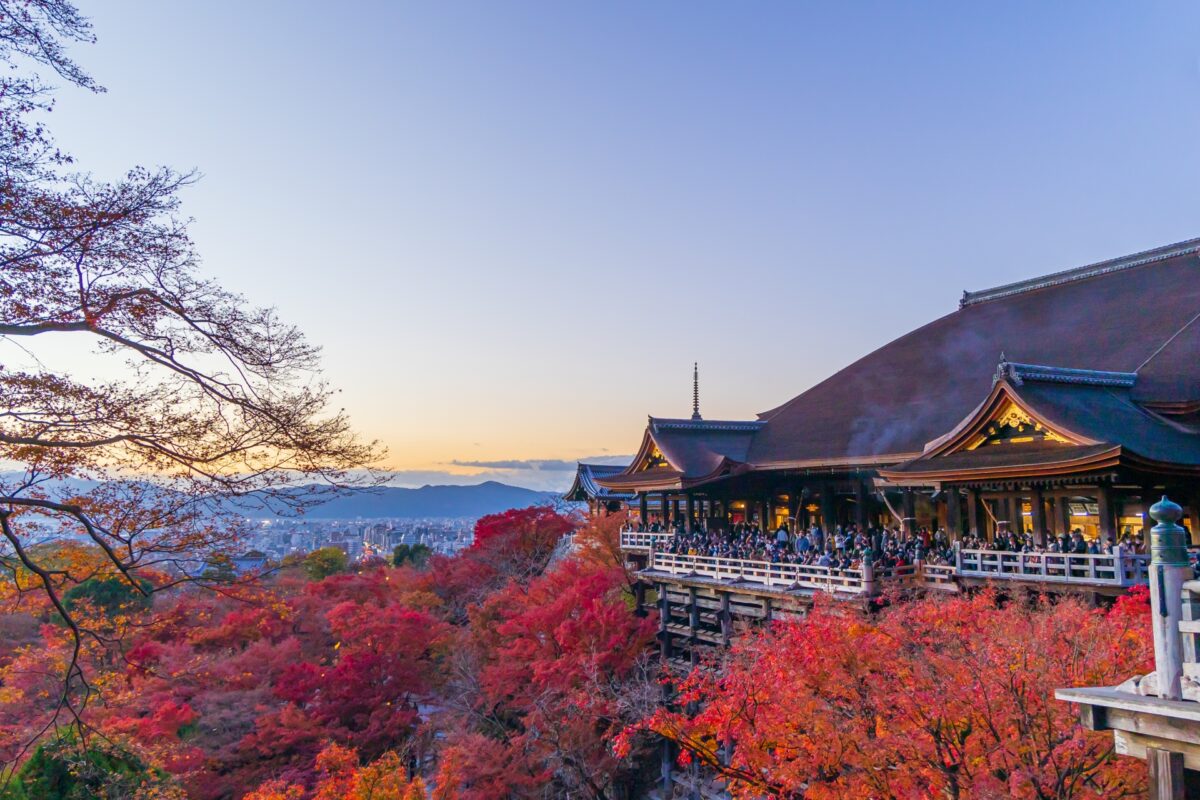
When it’s your first time in Kyoto, we recommend visiting the famous temples such as Kiyomizu-dera Temple. It’s one of the most popular tourist spots in Kyoto all year round which is always crowded with many tourists. Kiyomizu-dera is located in the middle of the mountain, and its wooden stage of the main hall is so famous that many people visit and see the view over Kyoto City from the stage. On the way up to the temple, you can enjoy some souvenir shopping and have some snacks at the stores lining up on the gentle slope path.
Explore the historic temple to it’s full potential with the article below.
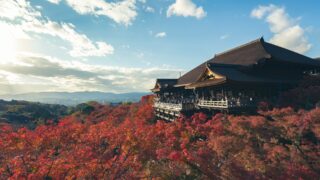
It’s nicknamed a forest of Buddha statues because 1,001 Buddha statues are nestled in the long wooden main hall of the temple. Each face of the statue is slightly different, and it is said that you can find a familiar face in them. The view of the overwhelming number of statues all lining up neatly along the hall is quite an impressive sight.
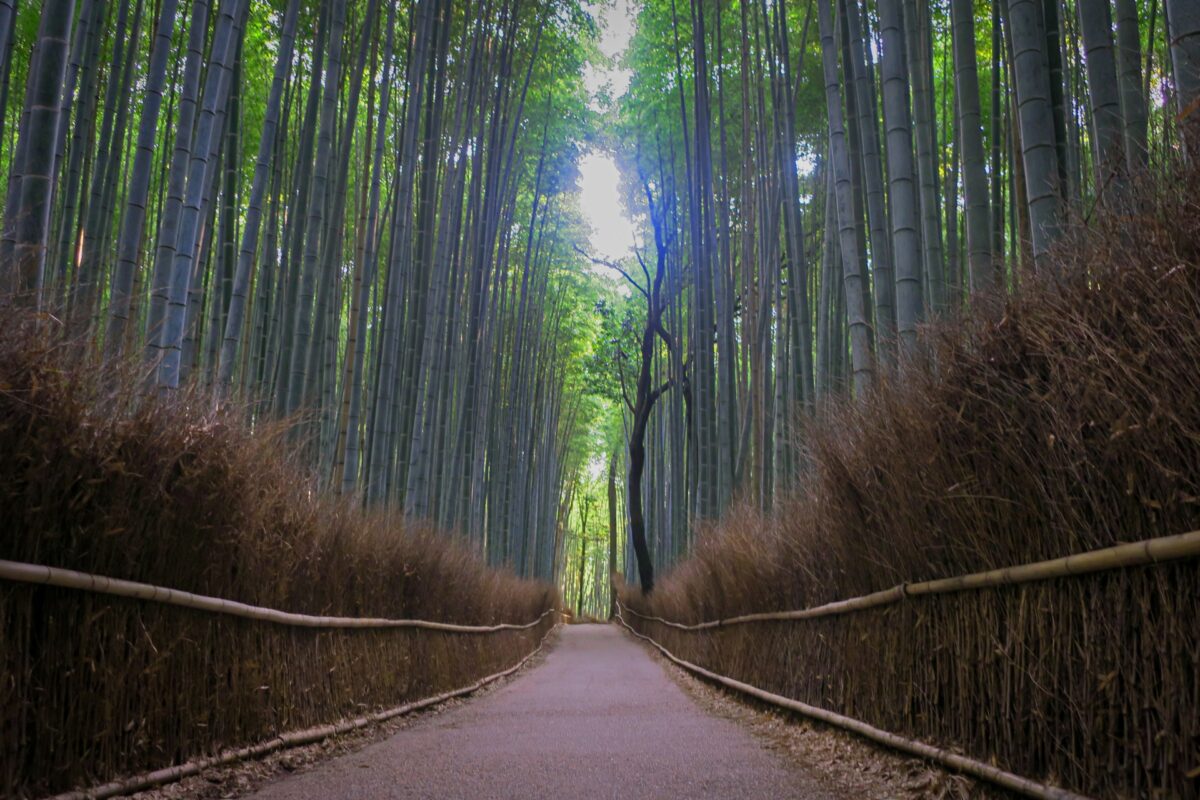
The Arashiyama area is a popular tourist attraction which is about an hour away from central Kyoto. Compared to other areas in Kyoto City, the area is relatively isolated and a bit outside of the city. However, once you visit there, you will immediately understand this is exactly where everyone should go to experience the real Japan coexisting in harmony with nature. The peaceful bamboo forest is always full of tourists but has a peaceful and relaxing atmosphere. If you stop and listen to the sound of the bamboo moving in the wind, you almost forget you are in one of the most popular places in Kyoto!
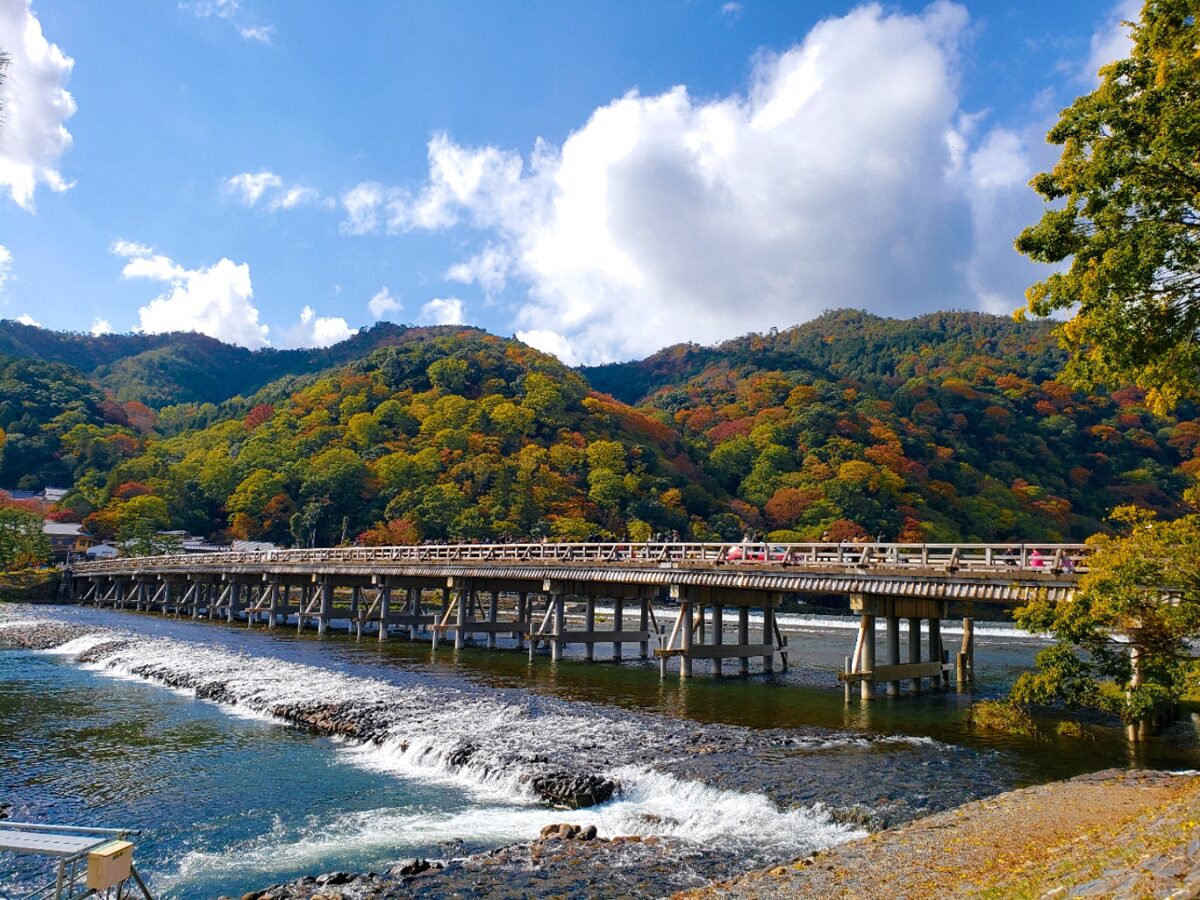
The Togetsukyo Bridge, a 155-meter-long wooden bridge over the Katsura River, creates a breathtaking view along with the Arashiyama Mountain in the background. It is the landmark of the Arashiyama area, and once you cross over the bridge, you can start exploring the main sightseeing street and spots in Arashiyama.
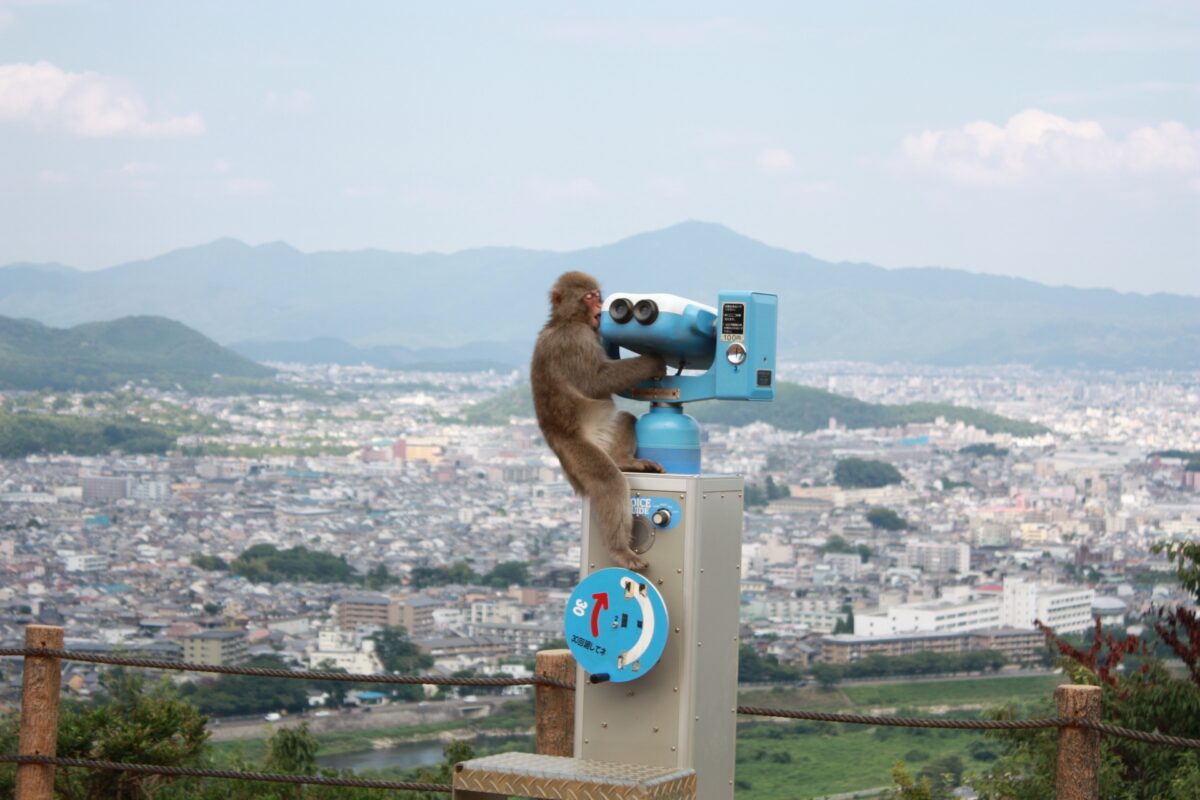
Arashiyama Monkey Park is home to about 120 wild monkeys. At the observation deck, you can check the view over Mt. Hiei and Kyoto City with the monkeys! There’s a place where you can feed monkeys with some fruits or peanuts through the wire fence, and also there’s a playground for kids.
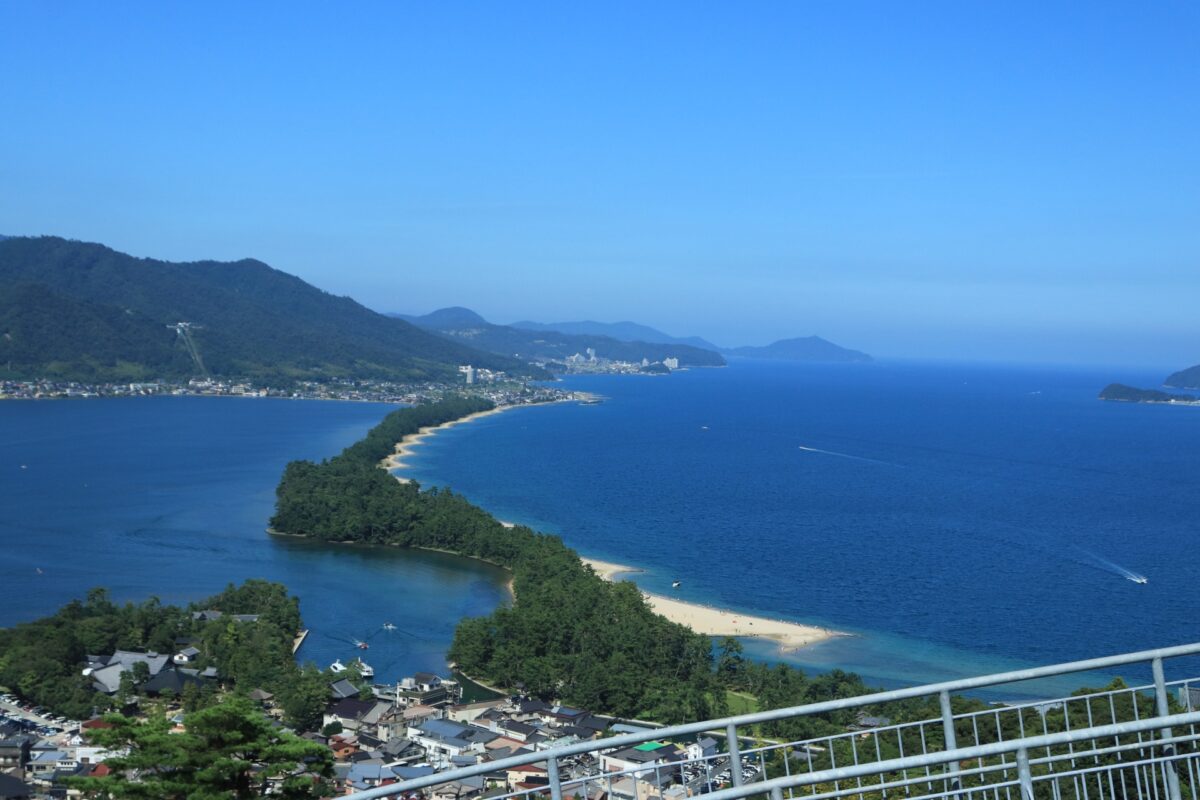
If you travel further from Kyoto City, you can discover completely different attractions of Kyoto surrounded by beautiful nature. In Northern Kyoto, there are tranquil villages near the ocean providing stunning scenery.
Amanohashidate is a popular spot located in Miyazu Bay, the 3.4 km sandbar covered with 5,000 pine trees across the bay. You can take a pleasant walk across the sandbar or cycling is popular too.
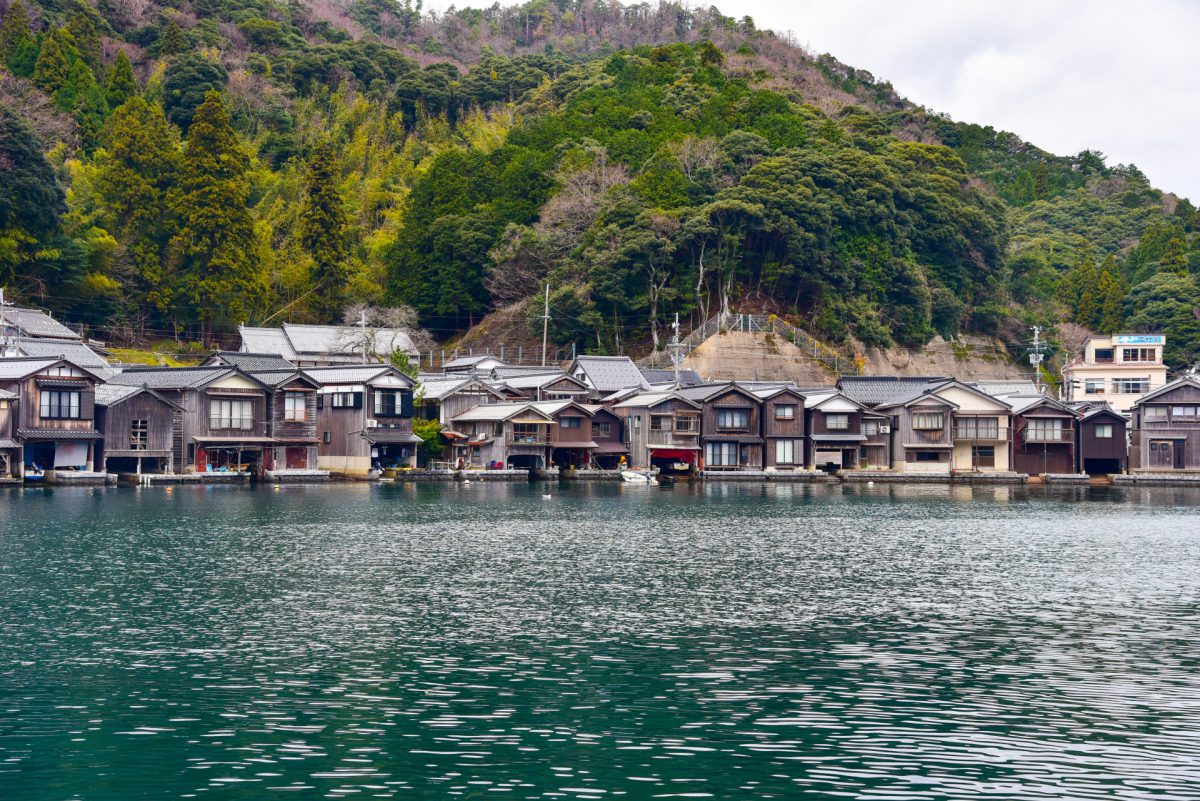
In Ine in Tango peninsula, over 230 boat houses floating in the sea create unique and beautiful scenery. It can only be accessed by sea taxi or ferry. These unique houses were originally built for fishermen, who parked their boats on the first floor and then used the second floor as their residence. Please note that to respect the residents, it’s strongly recommended to take a guided tour if you would like to explore the area.
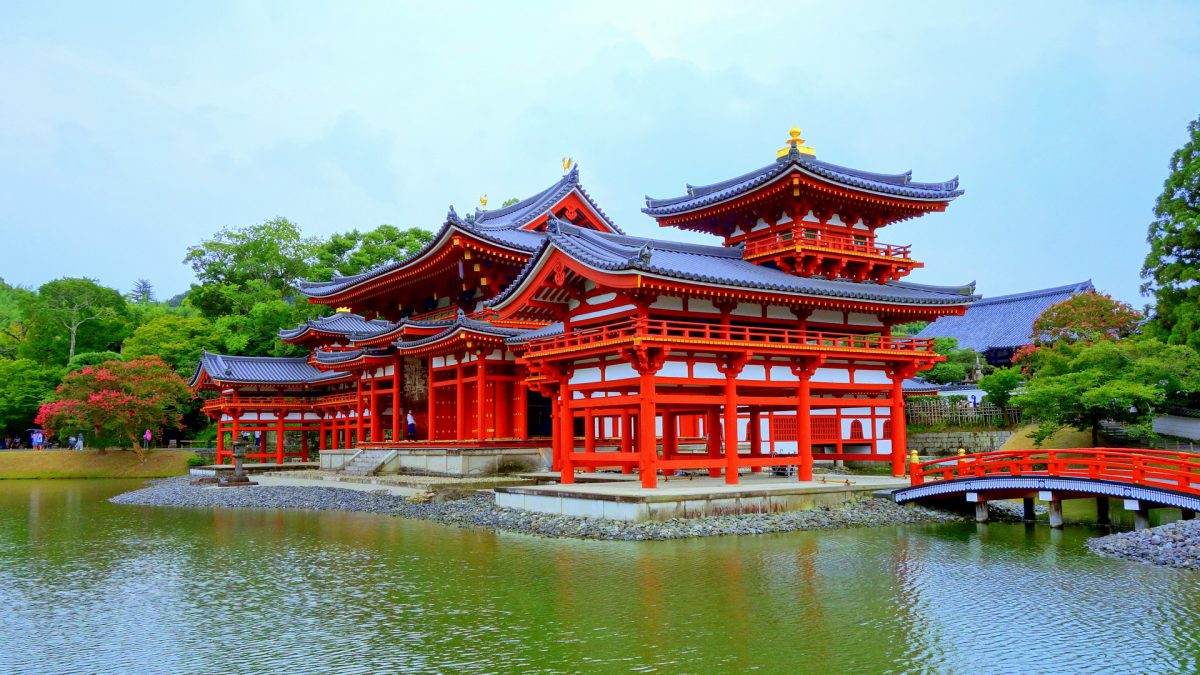
Uji is a small town located a bit far from central Kyoto City. It is known for its matcha tea and the historical temple. Byodo-in temple is a beautiful temple originally built in the Heian period. Flip the 10 yen coin and you’ll find a picture of it! Uji is also known as their tea field and Uji matcha is one of the high-quality brands of tea.
Learn more about the matcha tea capital of Japan below!
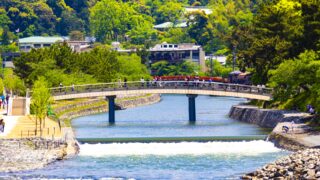
▼Book a one-day tour from Kyoto or Osaka to explore Northern Kyoto Traveling to the countryside of Japan is sometimes a little tricky in terms of the convenience of transportation and lack of English signs. If you are looking for the easiest and most comfortable trip to Northern Kyoto, take a private tour exploring Ine, Amanohashidate, and more beautiful attractions in the area!
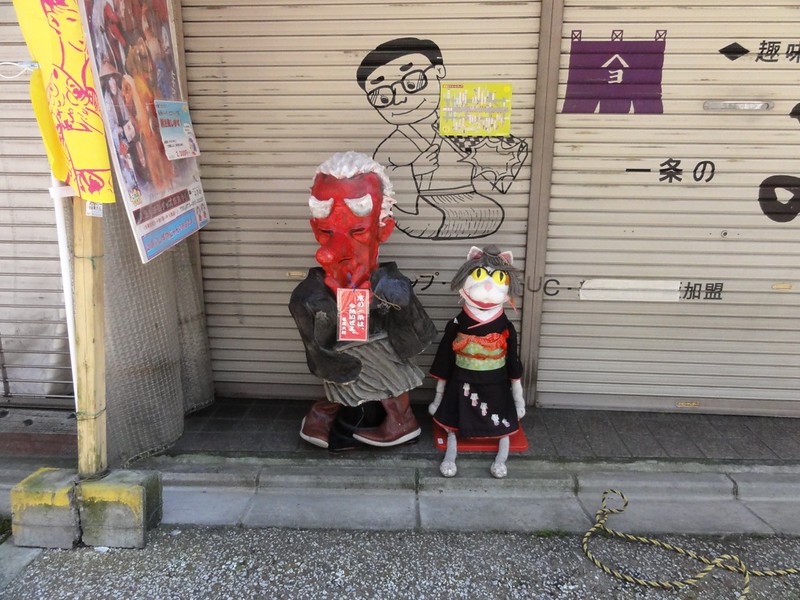
Last but not least, there are many unique and mysterious spots in Kyoto. Yokai Street is one of them. Yokai are legendary creatures that appear in folklore. Yokai Street is a shopping street where you can spot some marks of Yokai and is best known for the Yokai parade that is carried out on the second Saturday in October every year. You think it’s similar to the Halloween parade but somehow it’s more beautiful yet scary with hundreds of Yokai walking solemnly on the street. It will get you a chill up and down the spine.
Read more to find 10 Mysterious Spots and Stories in Kyoto

Are you looking to get the full Kyoto experience and dress up in a nice kimono while you’re in the beautiful area? We offer a number of affordable kimono rental plans that are suited for everyone. With shops in both Gion and near Kyoto Tower, and hundreds of different kimono to choose from, you are sure to find something that you like. Check out our plans below and let our staff do the rest!
Book your rental here !
Japan Wonder Travel Tours in Kyoto
When you are visiting Kyoto and you need some help organizing your trip, you came to the right place. We’re happy to help you make your trip to Kyoto the best trip ever. We can advise you on where to go or even better, show you around with a local, English speaking guide. Let us help you create safe, comfortable, and unforgettable memories in Kyoto!
▶ Kyoto 8h Private Custom Highlight Tour with Licensed Guide On this full-day private tour of Kyoto, you will be able to see the highlights of Kyoto in just one day and at the same time develop a deeper understanding of both the culture of the area and Japan as a whole.

▶ Kyoto 10-Hour HIGHLIGHT Private Tour If you only have a day or two in Kyoto, we offer a full-day tour of the city, enabling you to immerse yourself in and fully enjoy the entire city of Kyoto in just 10 hours!
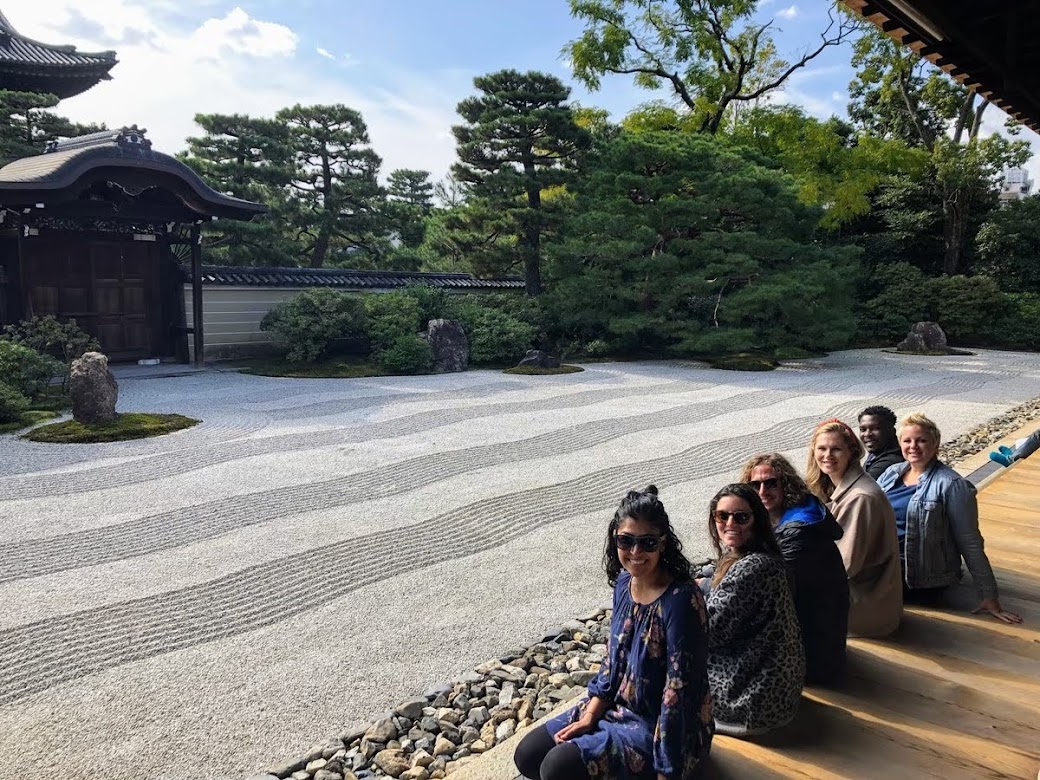
▶ Explore Nishiki Market: Food & Culture Walk If you’re looking to learn more about the culture and the local cuisine of Kyoto, this is the perfect tour for you! Take part in this Kyoto food and drink tour and explore the 400-year-old market and the famous surrounding areas.
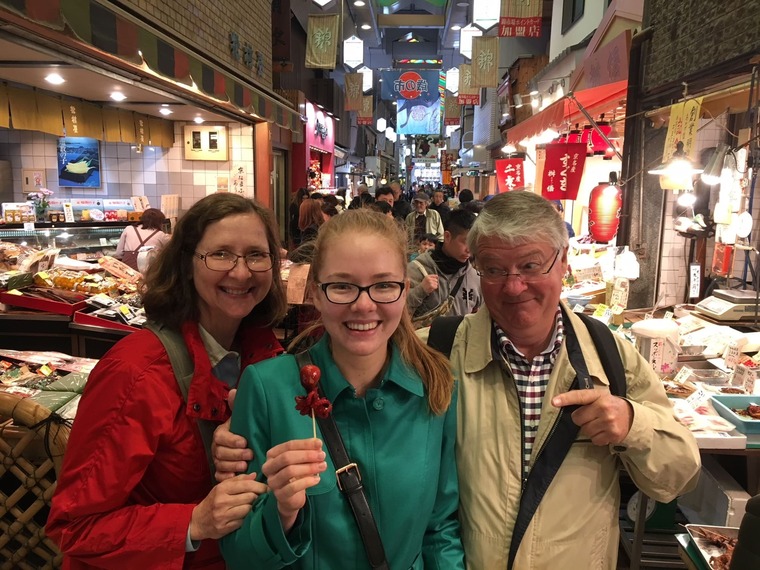
▶ Kimono Rental Kyoto is the best city to explore in kimono, Japanese traditional clothing. You can choose the one you like the most from several patterns and colors at the rental shop. In Kyoto, two locations are both accessible from the main tourist attractions which makes it easy to try it on and explore the city for a day!

By now you have an idea of what to do in the different parts of Kyoto, but then the next question arises. What is the best place to stay in Kyoto? All things considered, we recommend you stay downtown, in or near the Gion or Kawaramachi-Dori districts. These areas are well connected to public transport and central to many of the main attractions. Here you will also find an abundance of restaurants, shops, and entertainment venues.
- Tazuru – a traditional Japanese ryokan with historic charm, overlooking the Kamo river.
- Kyoto Hotel Okura – luxury hotel offering great views of Kyoto and the Higashiyama Mountains
- Gion Minami House – apartment rooms that also enable you to relax after your full day of sightseeing.
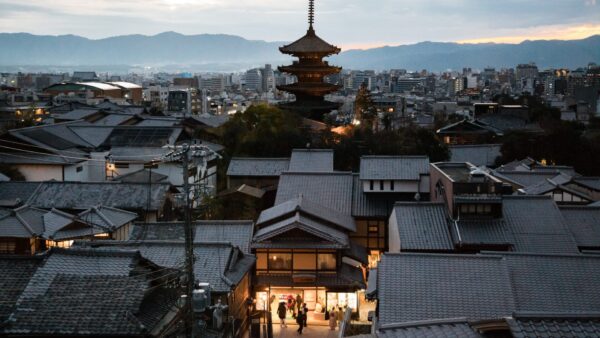
Surrounded by beautiful nature, rich with history, and filled with many interesting and beautiful places, it might be quite a challenge to decide on the best places to go in Kyoto. The former imperial and political capital of Japan has so many options and attractive places to choose from. We hope with this article you got some helpful information and that you now have an idea of where you want to go!
Find out the top 10 tours in Kyoto▼
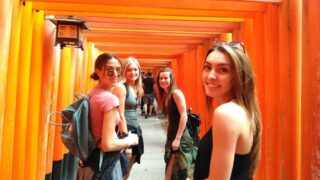
Follow us on Instagram or Facebook for more travel inspiration. Or tag us to get featured!
Happy traveling!
Stay informed of the best travel tips to Japan, the most exciting things to do and see, and the top experiences to have with the Japan Wonder Travel Newsletter. Once every two weeks we will introduce you to our latest content.
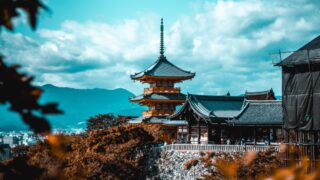
This post may contain some affiliate links. When you click through and make a purchase we may receive some commission, at no extra costs to you.
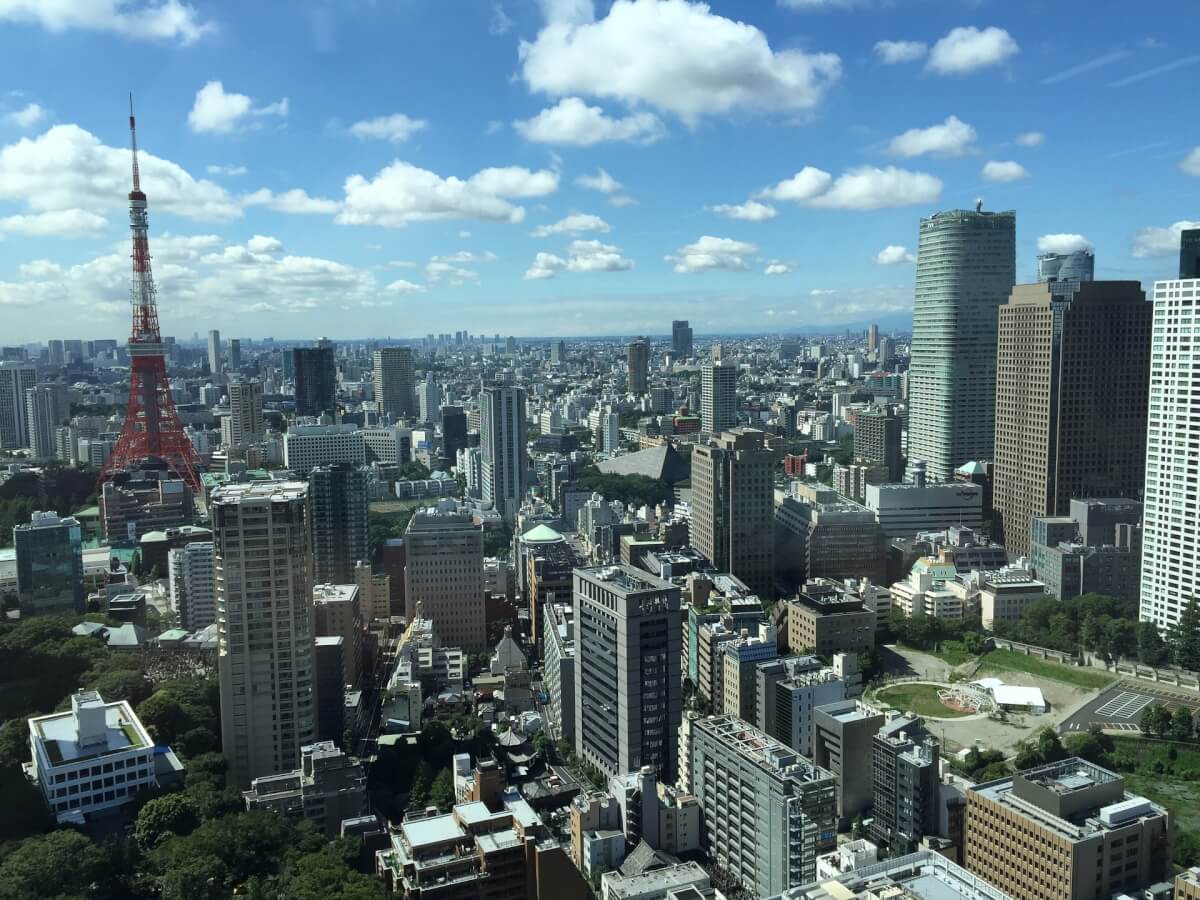
- Popular destinations
- Hidden places in Japan
- Tours and workshop
- Food and drink in Japan
- Itinerary in Japan
- Places to visit in Tokyo
- Food and drink in Tokyo
- Seasonal events
- Tours & workshops
- Tokyo This Week
- Day trip from Tokyo
- Itinerary in Tokyo
- Places to visit in Kyoto
- Food and drink in Kyoto
- Itinerary in Kyoto
- Day trip from Kyoto
- Travel tips
- Accommodation
- Cultural tips
- Transportation
- Tokyo Tours
- Kyoto Tours
- Kimono Rental
- Fukushima Tours
- Mount Fuji Tours
- Tour Package
- Media Kit(English/日本語)
- Destinations
17 Best Places to Visit in Kyoto
Best Kyoto Tourist Attractions including New Spots and Classic Locations
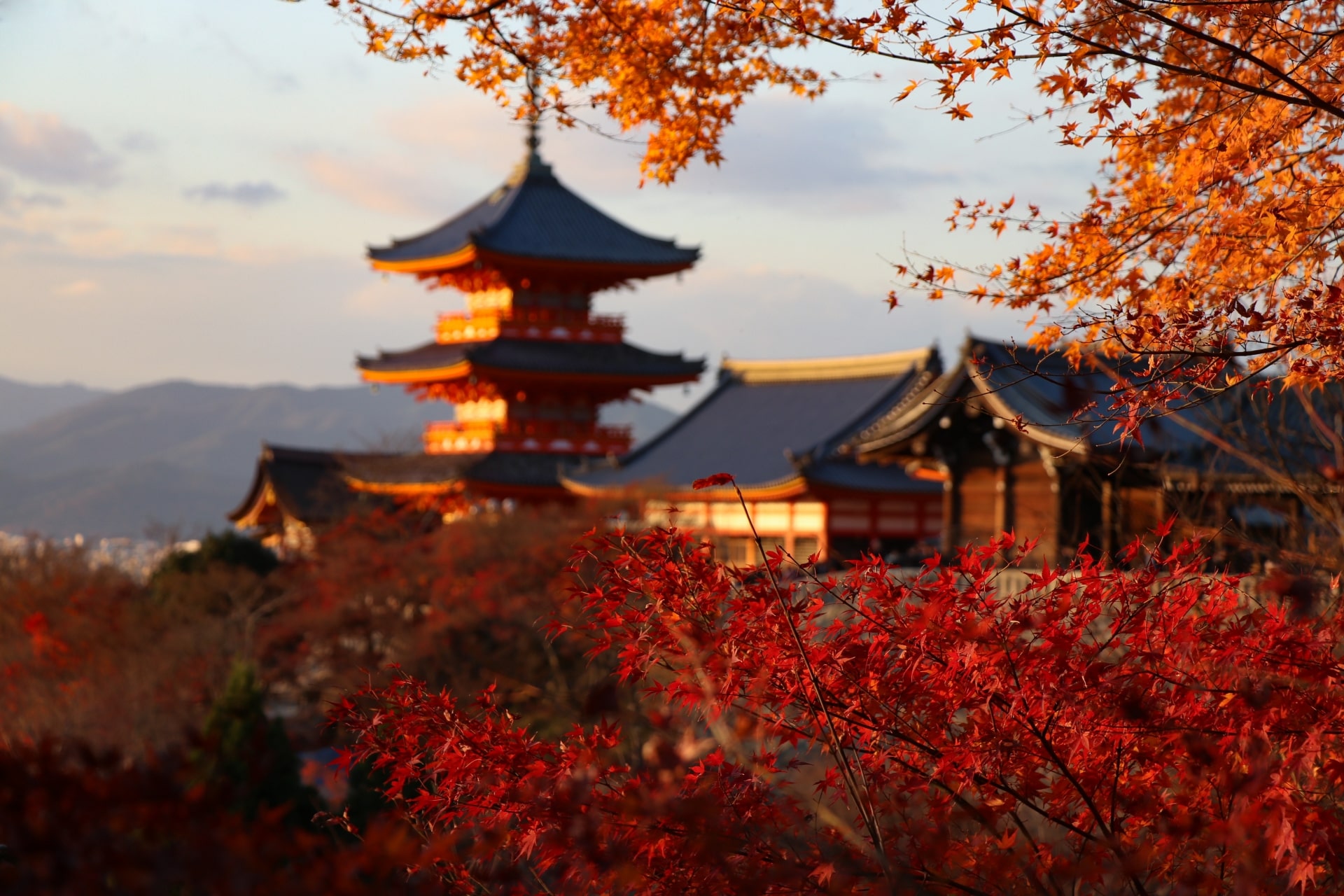
When it comes to tourism, Kyoto is always among the most visited cities, not only in Japan but also in the entire world. Historic locations that are beautifully preserved and are photogenic such as the Fushimi Inari Shrine, Kiyomizudera Temple, and Kinkakuji Temple are always among the top spots in “favorite tourist spot” rankings.
Not only historically important locations but there are also many popular cultural and natural spots that are equally popular. This makes Kyoto a unique city where you can experience the many expressions that Japan can offer to foreign visitors. However, having so many fascinating tourist spots can make it difficult for one to decide where to visit.
In this article, I would like to share with you our countdown list of the 17 best places to visit in Kyoto. In this list, I will introduce to you not only popular spots but also some lesser-known (but equally interesting) spots that you should definitely consider when you come to visit Kyoto. I hope this article becomes a good reference for those planning on spending a few days in this culturally and historically rich city.
*Please note that this article contains affiliate links.
Explore Kyoto with a local guide to learn about its rich history and culture, and discover its hidden charms! Magical Trip provides a wide range of small group tours in popular tourist areas in Kyoto such as Gion, Fushimi Inari and Arashiyama. Food, history, cultural experience, etc, find a perfect guided tour depending on your interests and make your travel in Kyoto unforgettable! Click the link below to find available guided tours in Kyoto for your trip.
▶Book your best tours with local guides in Kyoto!
17. Kyoto Station
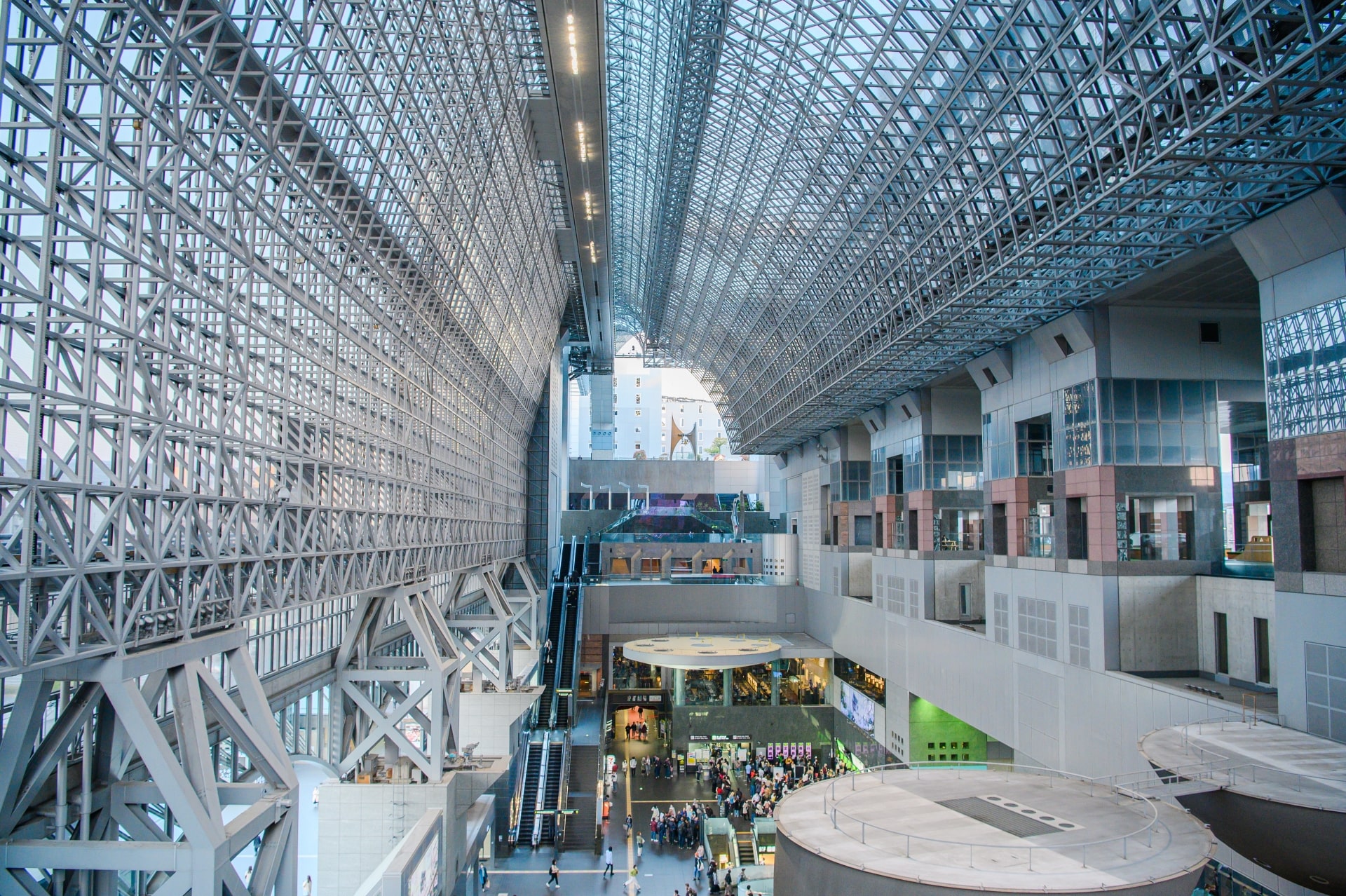
The first place I’d like to recommend is right there in Kyoto Station (京都駅) . Being one of Japan’s largest train stations, Kyoto Station isn’t just a transportation hub; it’s an architectural marvel and a popular destination in itself.
Beyond facilitating travel, it houses a plethora of shops, restaurants, and attractions. The station’s contemporary design contrasts with Kyoto’s historic image, featuring vast glass expanses and a skyway offering panoramic city views. The terraced roof becomes a gathering point for both locals and travelers, especially during evening hours when it’s beautifully illuminated.
Its location, convenience, and vibrant atmosphere make Kyoto Station a favorite hangout spot, providing a mix of modernity amidst the city’s ancient backdrop.
▶ Kyoto Station official website: https://www.kyoto-station-building.co.jp/lp/english/
16. Ine no Funaya
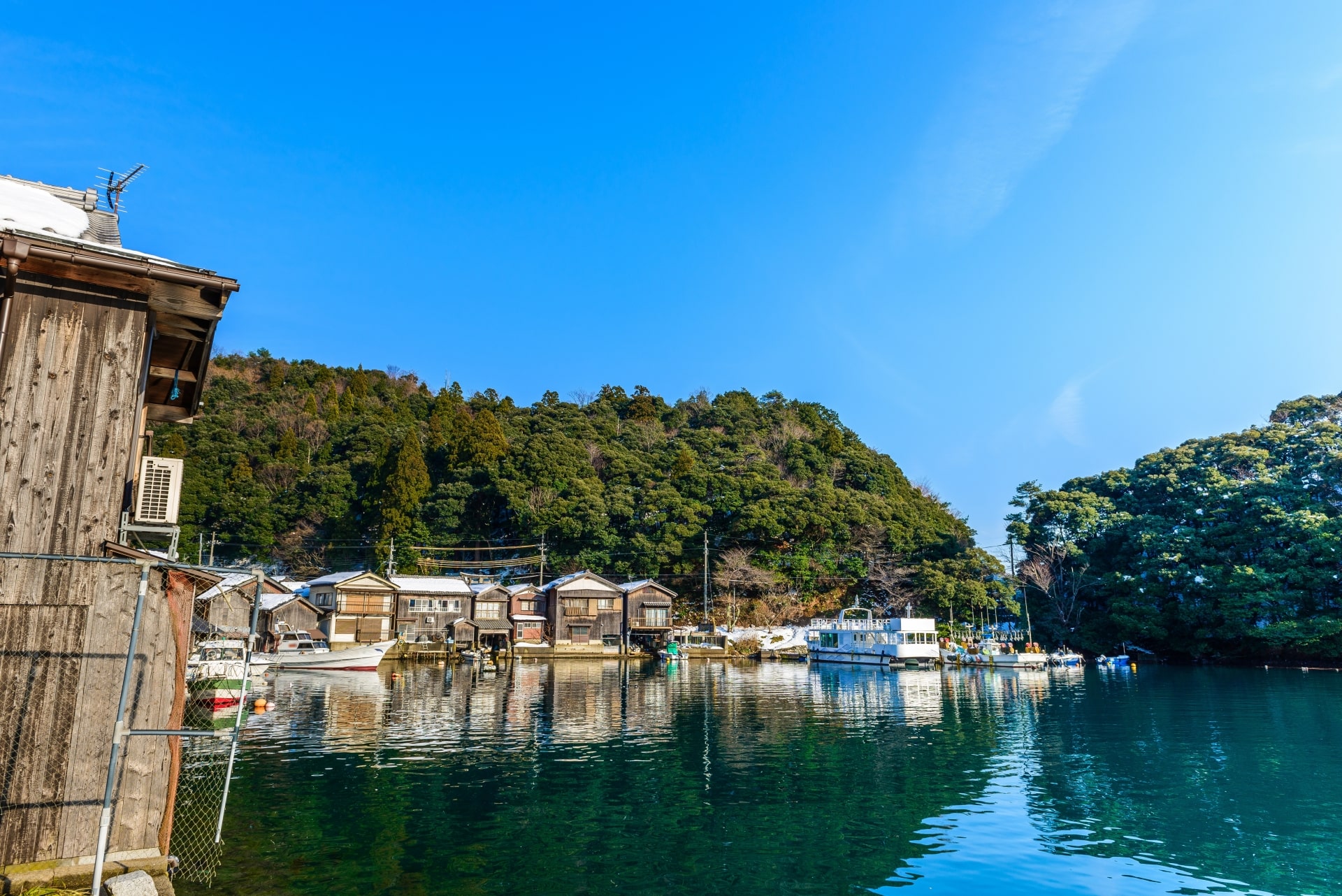
Next on our list is a small town located about 130 km away from Kyoto city. Ine no Funaya (伊根の舟屋) is a small village located in Ine town in the northmost part of Kyoto prefecture. The village stretches approximately 5 km along Ine Bay facing the sea of Japan and you can see a unique scenery with over 200 rustic boathouses floating on the bay.
Visitors can stay overnight at the village since some of these boathouses serve as guest houses. Some of these boathouses even organize boat tours around the village so that you can have a taste of what it is like to live in this fascinating and unique village.
Check out more about Ine no Funaya in the following article!
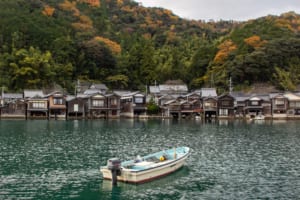
15. Arashiyama Monkey Park Iwatayama
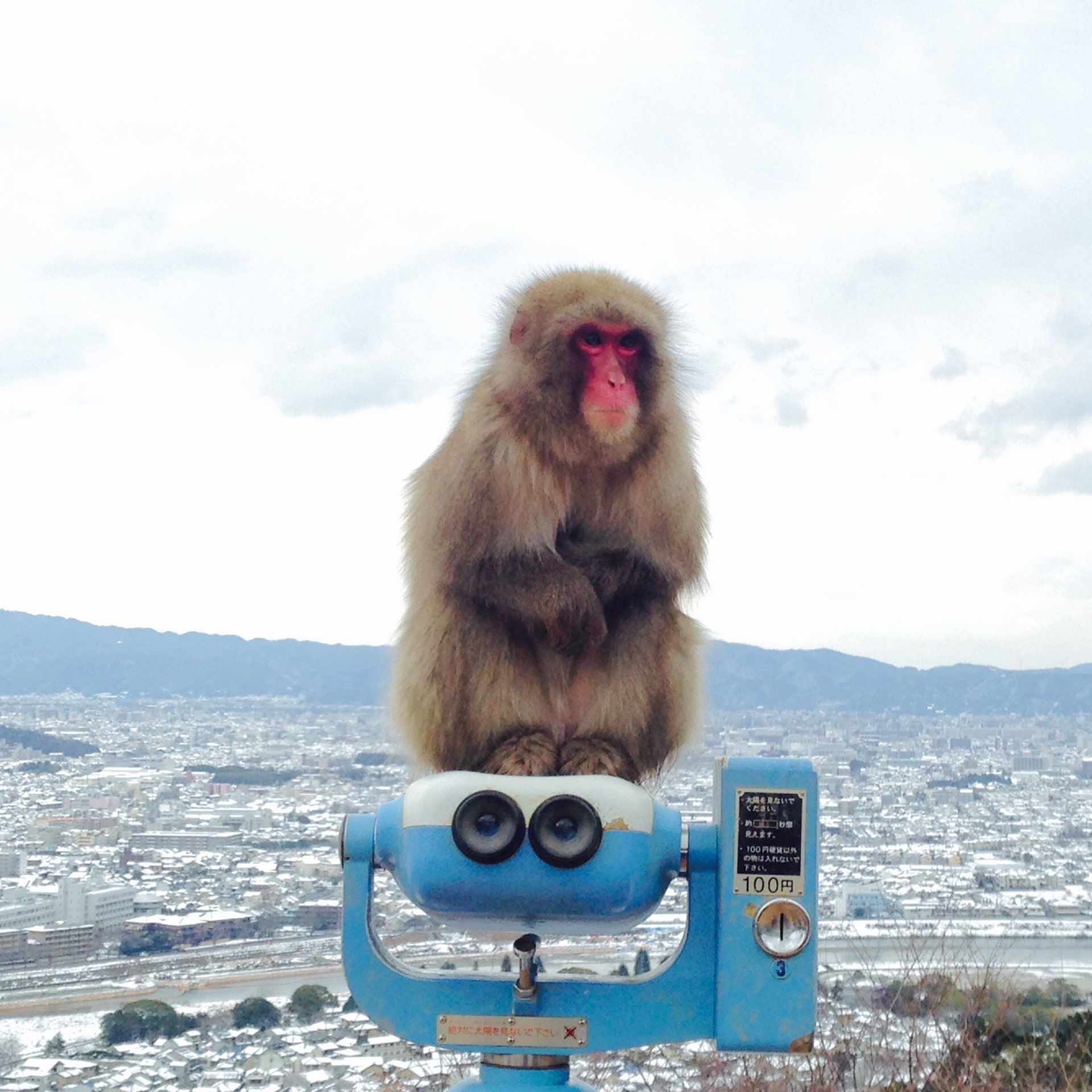
This next place is for those who love animals. Arashiyama Monkey Park Iwatayama (嵐山モンキーパーク) is a place located in Arashiyama mountain, north-west of central Kyoto.
This mountain itself is a popular hiking mountain, and the monkey park is located mid-mountain after hiking uphill for about ten minutes. Not only will over 100 monkeys welcome your visit, but you will also have access to a nice view of the city.
Check out more about Arashiyama Monkey Park Iwatayama from the following article!

14. Kamogawa River
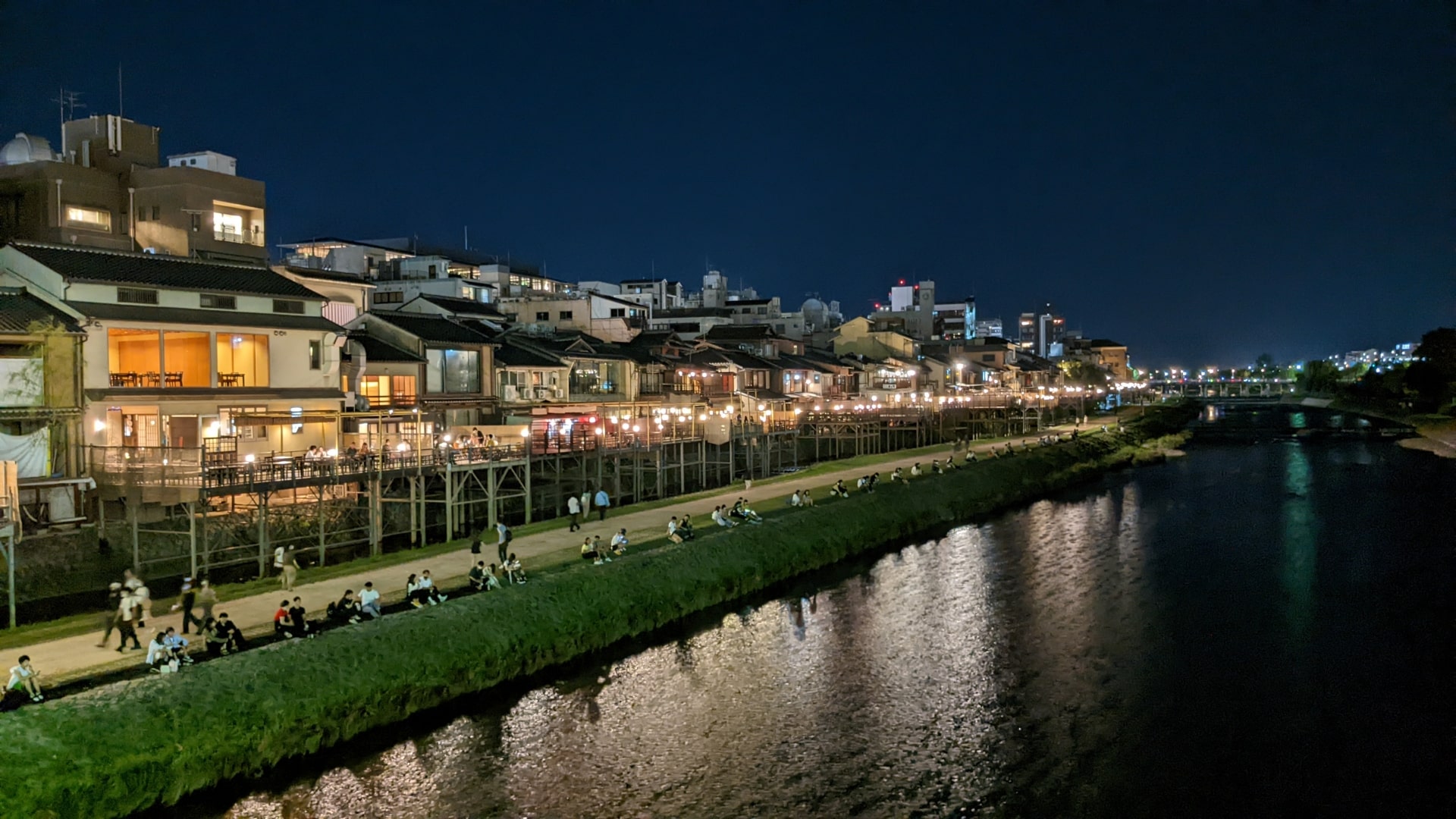
During spring, there are parts of the Kamogawa river that will display incredibly beautiful cherry blossoms. And during summer, many restaurants that face the river will open and enlarge the terrace areas where you can dine and drink while enjoying the river views.
Check out more about Kamogawa River from the following article!
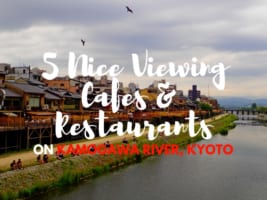
13. Rurikoin Temple
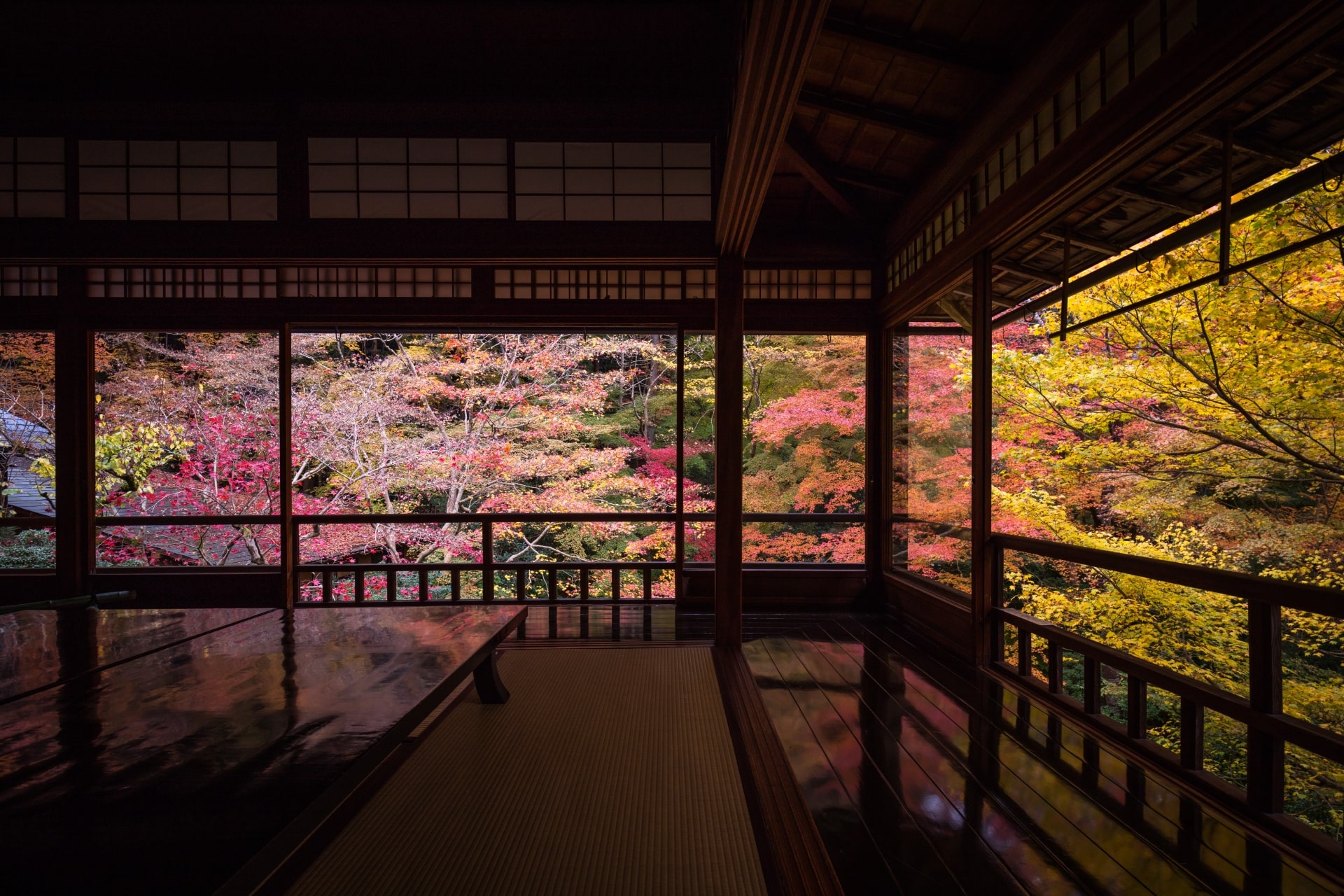
Now that you know where to visit during spring and summer, the next place on this list is best visited during autumn. Rurikoin Temple (瑠璃光院) is a beautiful and peaceful temple located in northern Kyoto near Mt Hiei.
The large temple complex is surrounded by beautiful nature and it is open to the public only twice a year; in spring and autumn. The expression that nature shows in this place change dramatically depending on which season you visit, making it a “must-visit” location in Kyoto. You’ll want to visit this place multiple times after your first visit.
Check out more about Rurikoin Temple in the following article!
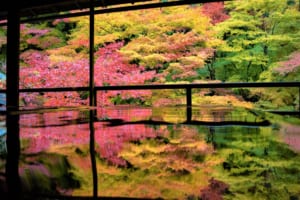
12. Kyoto Imperial Palace
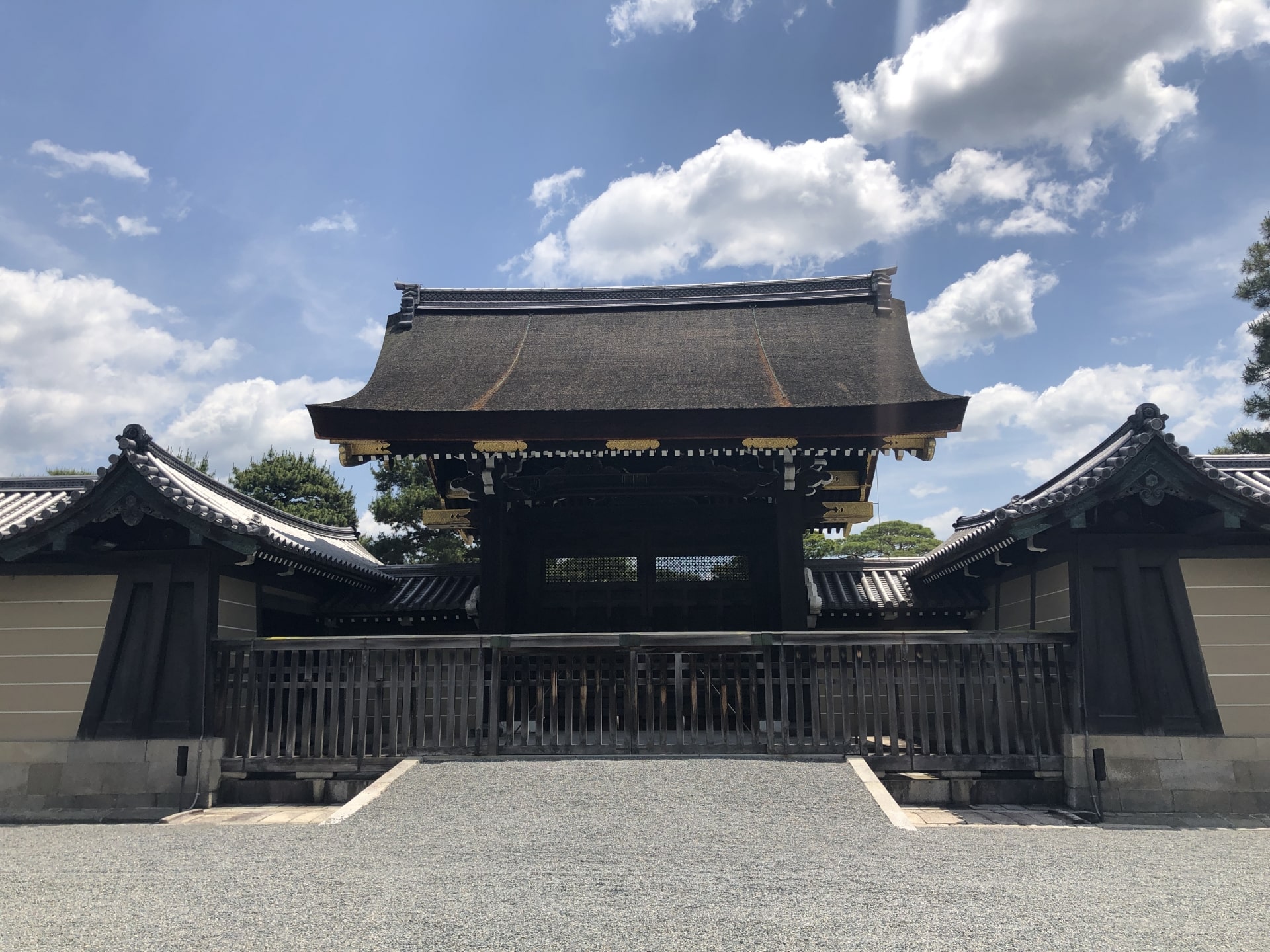
Nowadays you can visit this place free of charge, almost any time of the year. You can see for yourself where the Japanese emperor used to live and held official ceremonies. Many of the buildings here are valuable not only because of their historic value but also because of the unique architectural techniques used to build them.
▶ Kyoto Imperial Palace official website: https://sankan.kunaicho.go.jp/english/index.html
11. Ninenzaka and Sannenzaka

Both these slopes were created at the beginning of the 9th century and their scenery has been beautifully preserved. You can find many shops, restaurants, and cafes on your way heading to Kiyomizudera Temple. It is definitely one of the most photogenic streets in the country.
Check out more about Ninenzaka and Sannenzaka in the following article!
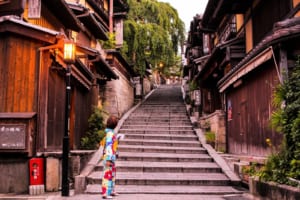
10. Kyoto Tower
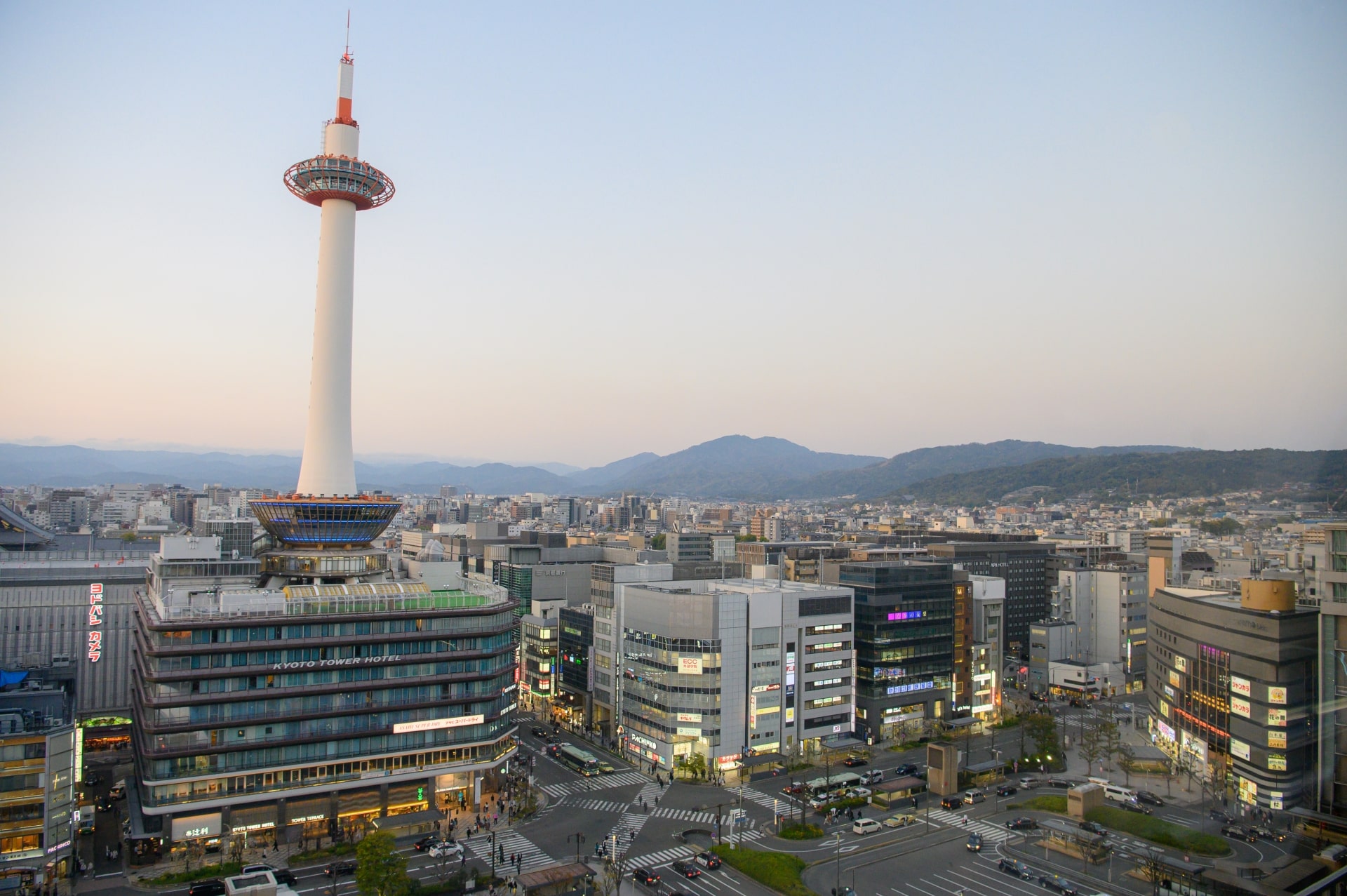
Contrasting the traditional temples and shrines, this modern beacon is a symbol of Kyoto’s blend of the old with the new. Located just opposite Kyoto Station, it’s a popular spot for travelers to get their bearings with its observation deck.
Beneath the tower is Kyoto Tower Sando , a vibrant commercial facility boasting an array of shops, restaurants, and cultural experiences. Its central location and the blend of shopping, dining, and breathtaking views make Kyoto Tower a favored hangout for both locals and visitors.
▶ Kyoto Tower official website: https://www.kyoto-tower.jp/en/
▶ Kyoto Tower Sando official website: https://www.kyoto-tower-sando.jp/
9. Nijo Castle
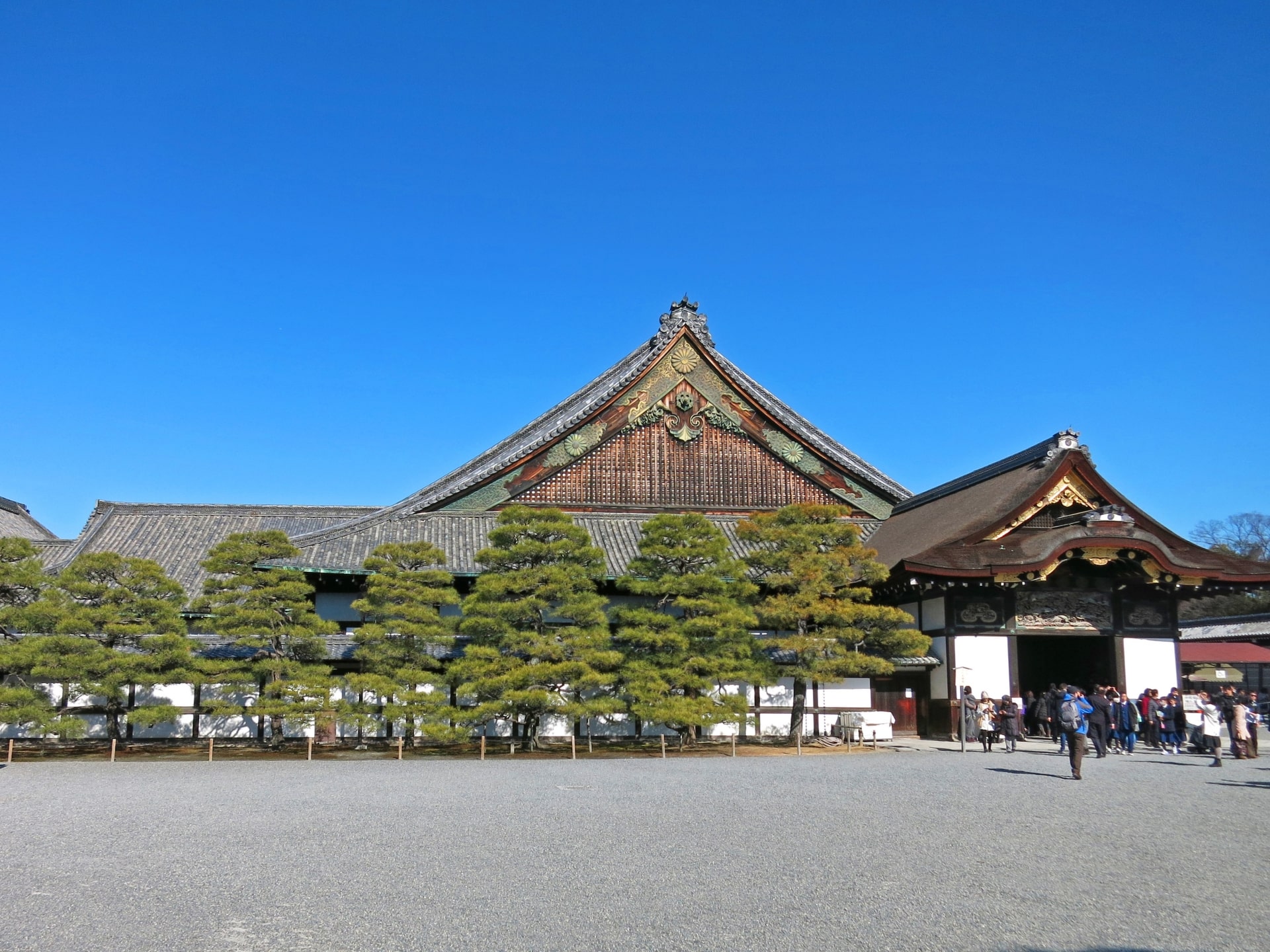
This is a place where several historically important things happened such as the Taiseihoukan (Restoration of Imperial Rule). Even if you’re not a history enthusiast, you can also enjoy the beautiful Japanese garden as well as the unique architectural structures within the vicinity.
▶ Nijo Castle official website: https://nijo-jocastle.city.kyoto.lg.jp/?lang=en
8. Arashiyama Bamboo Grove
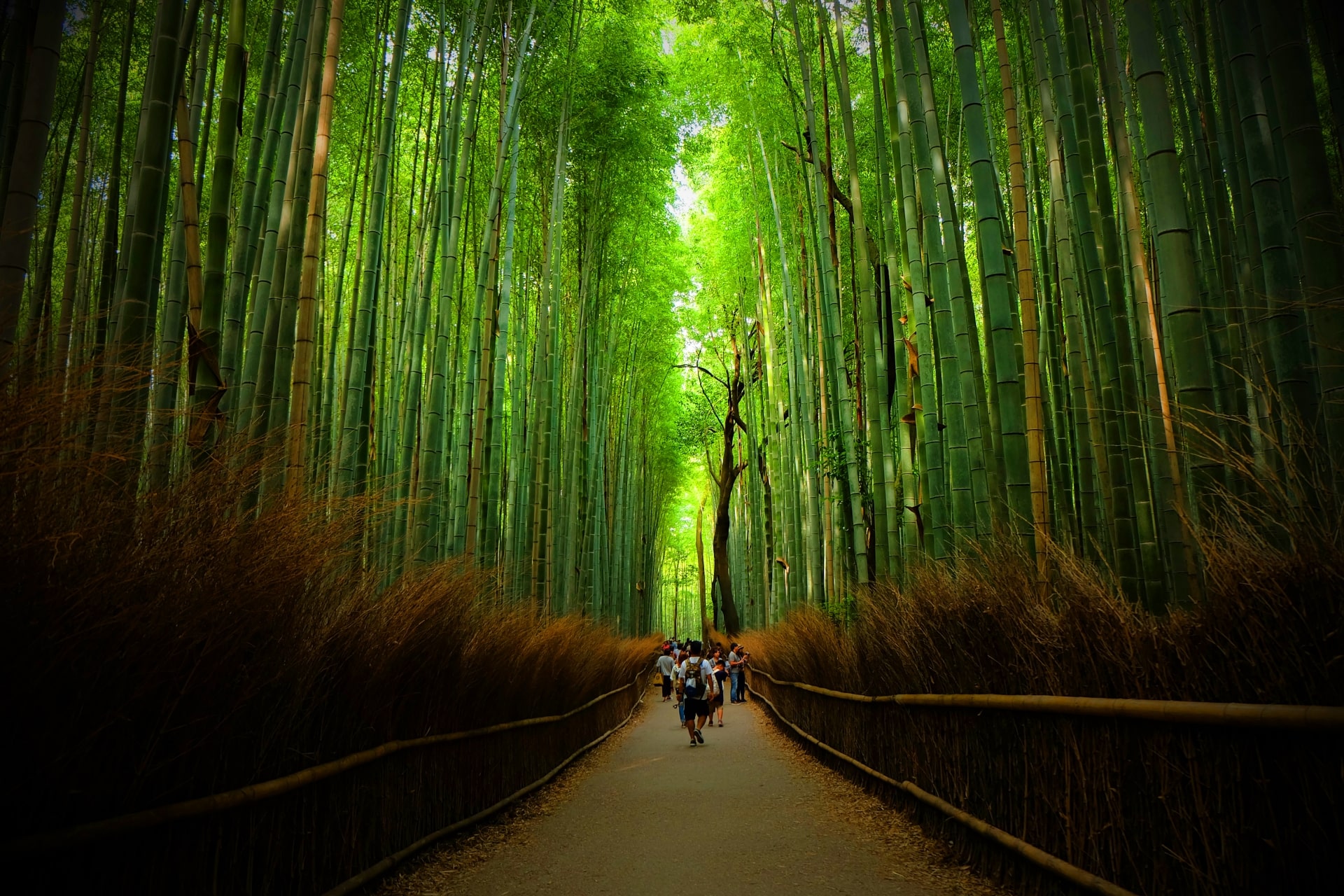
Next on this list is one of the most recognizable spots in all Kyoto. Arashiyama Bamboo Grove (嵐山竹林) is a path located in the Arashiyama-Sagano area, the beautiful outskirt of Kyoto city. It is right between Tenryuji Temple and Okouchi Sanso Garden, both of which are also popular tourist attractions.
The of the bamboo in this forest is somewhere between 5 to 10 m high, though some of them can reach up to 20 m in height. The grove has approx 200 m long walking paths cutting through the refreshing forest where visitors can enjoy a pleasant walk while listening to the sound of the wing running through the bamboo leaves.
Check out more about Arashiyama Bamboo Grove from the following article!

7. Kyoto Gion
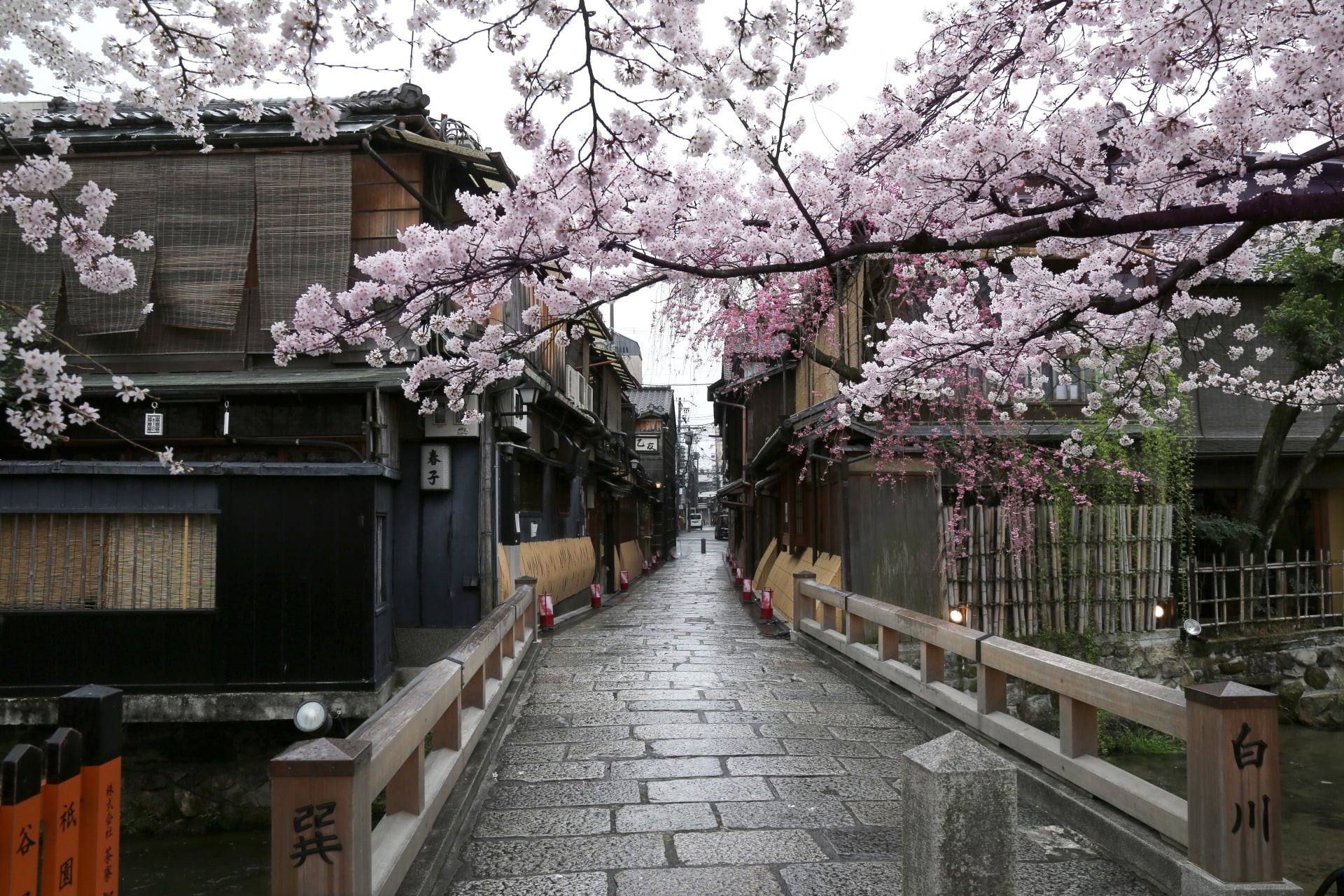
It is a very popular area for tourists, mostly because here, you can experience pretty much everything that a tourist expects when coming to Kyoto. There’s the Shinto Shrine, the Kamogawa river with the sakura trees, the old Japanese street atmosphere, and most of all, being able to see a real-life Geisha.
Check out more about Gion in the following article!
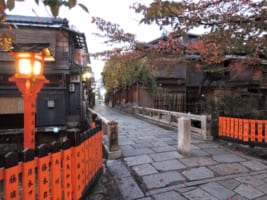
6. Sanjusangendo Temple
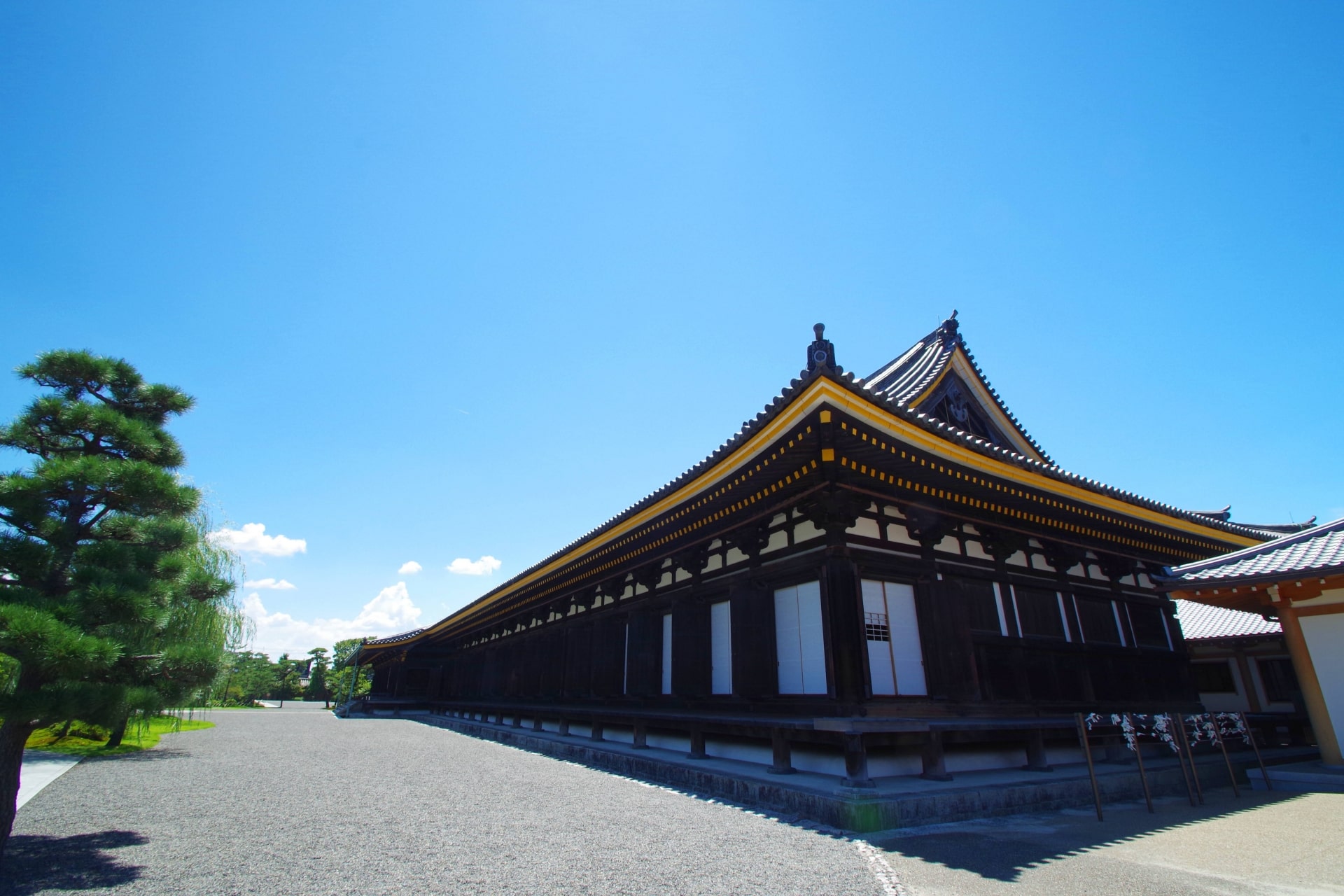
Access is really convenient since it is located just 10 minutes by bus from Kyoto station, or 15 minutes by foot.
Check out more about Sanjusangendo Temple in the following article!
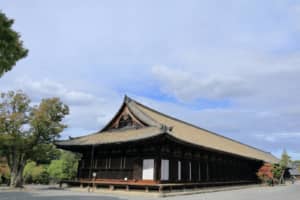
5. Nintendo KYOTO
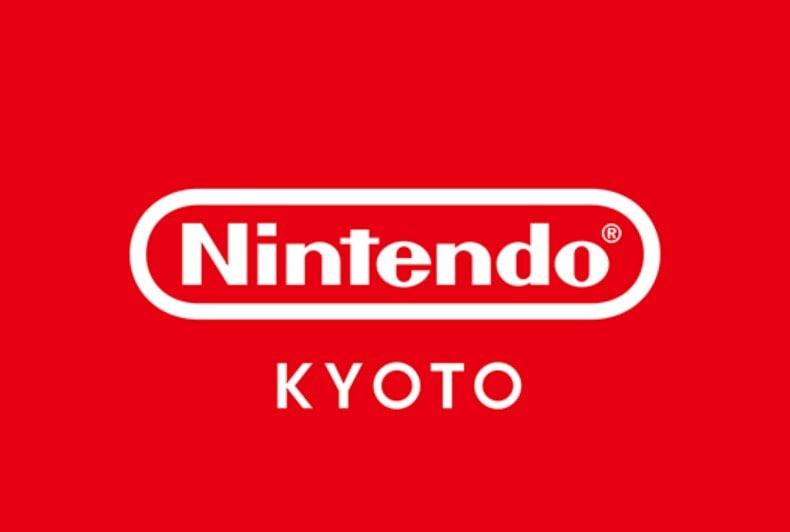
Nintendo is set to launch Nintendo KYOTO on October 17, 2023, marking its third official store in Japan after Nintendo TOKYO and Nintendo OSAKA.
Located in the new “T8” specialty zone of Kyoto Takashimaya S.C., this store reinforces Nintendo’s presence in major Japanese cities. These outlets are more than just retail spaces; they’re experiential hubs where visitors can buy gaming products and partake in events, offering a comprehensive Nintendo experience.
In essence, Nintendo KYOTO exemplifies the brand’s commitment to blending commerce with immersive gaming encounters.
4. Kiyomizudera Temple
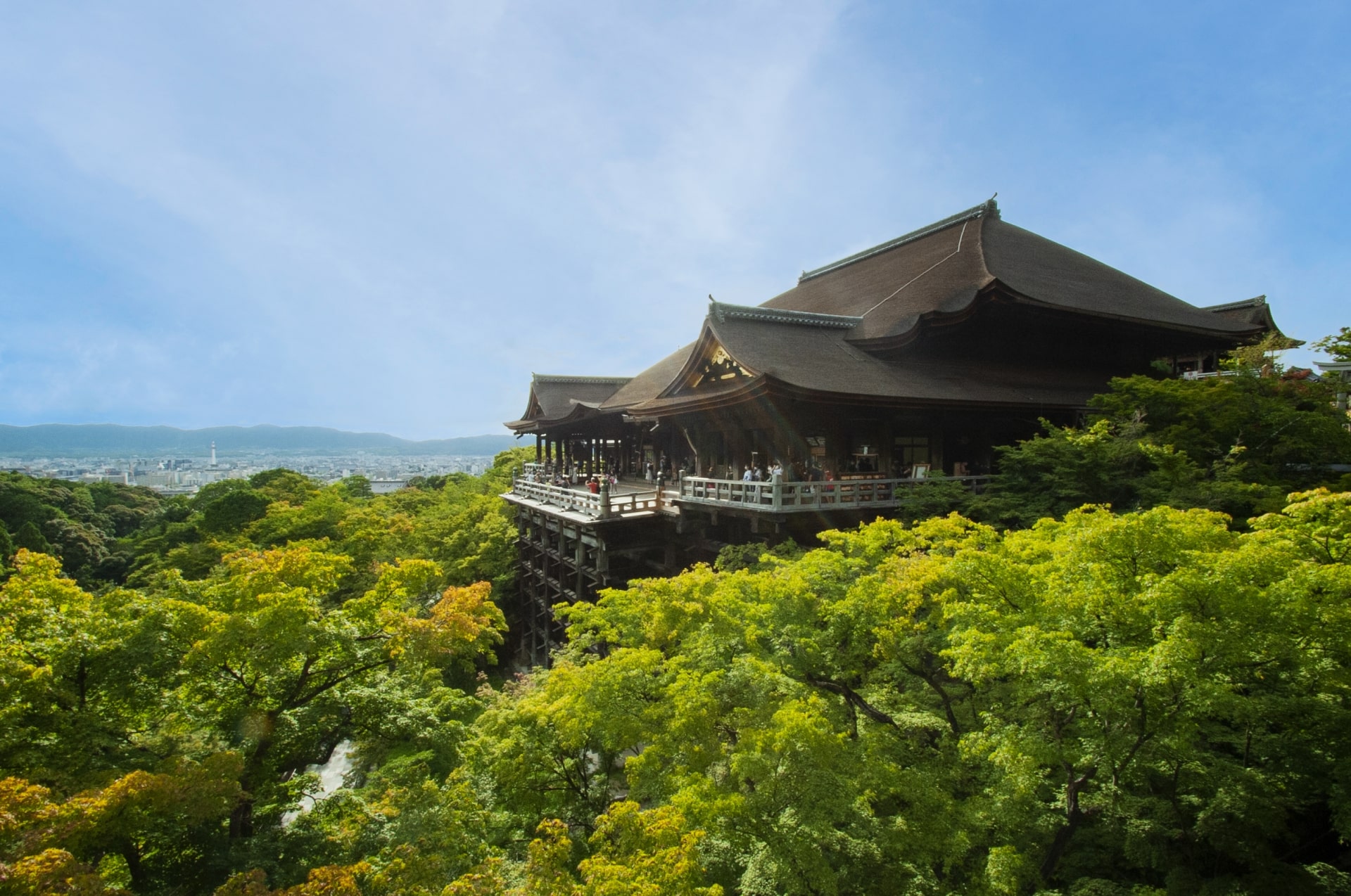
One of the attractive points about this temple is the surrounding trees that change expression depending on the season go choose to visit. Not only will you see a difference between seasons, but also, you can visit here during the nighttime when the temple is illuminated.
Check out more about Kiyomizudera Temple in the following article!
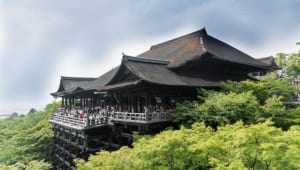
3. Yasaka Pagoda
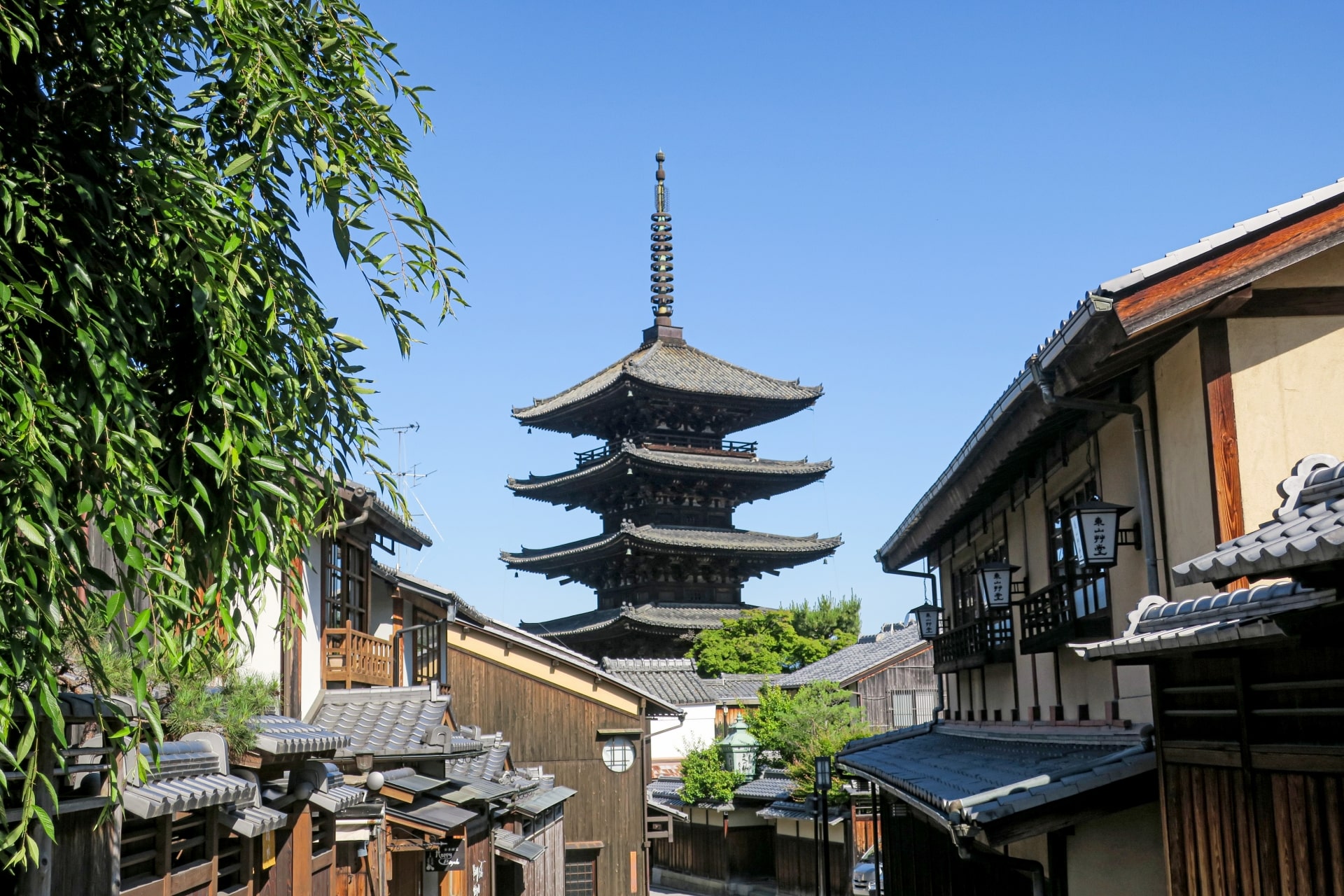
Located in the vicinity of the previously mentioned Kiyomizudera Temple, is the Yasaka Pagoda (八坂の塔) . This pagoda is so famous, that many people actually relate it to the image of Kyoto’s scenery.
This pagoda is part of Hokanji Temple (法観寺) and was built in the late 6th century. Visitors can enter the pagoda up to the 2nd floor. Similarly to Kiyomizudera Temple, this is another place you’ll want to visit twice (once during the daytime and once again during the nighttime). The illuminated tower at night along with the traditional Japanese scenery of the streets make the perfect photo spot.
Check out more about Yasaka Pagoda from the following article!
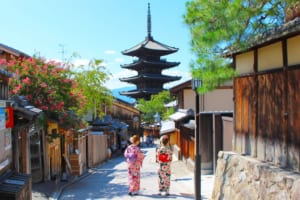
2. Fushimi Inari Shrine
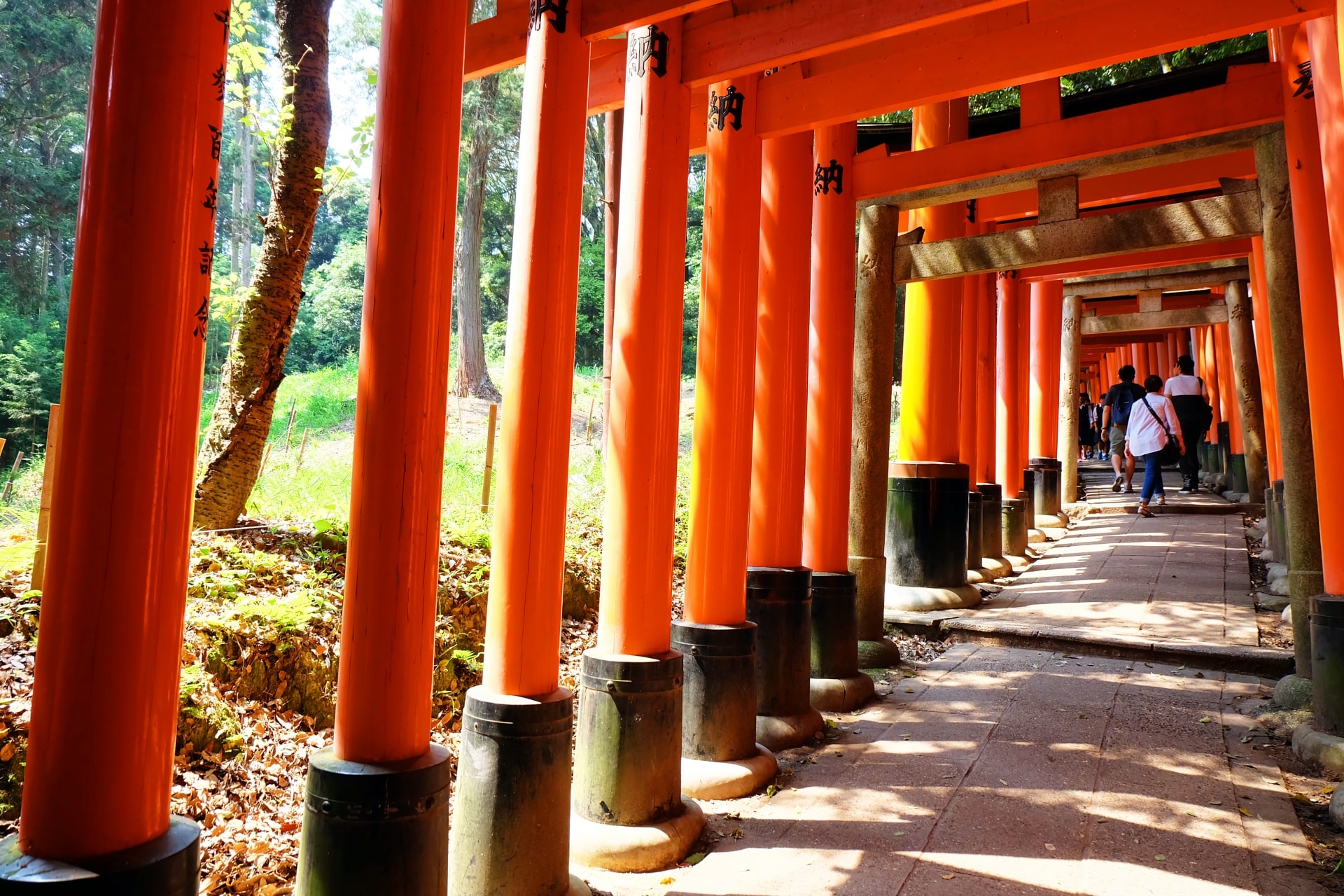
The shrine is famous for the Senbon Torii which is formed with over 5,000 red torii gates, creating a tunnel of Torii gates. It became popular due to the appearance of this place in movies and TV.
Check out more about Osaka Expo Park from the following article!
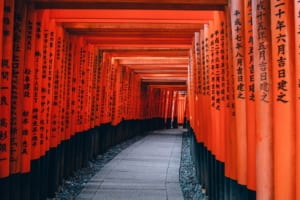
1. Kinkakuji Temple
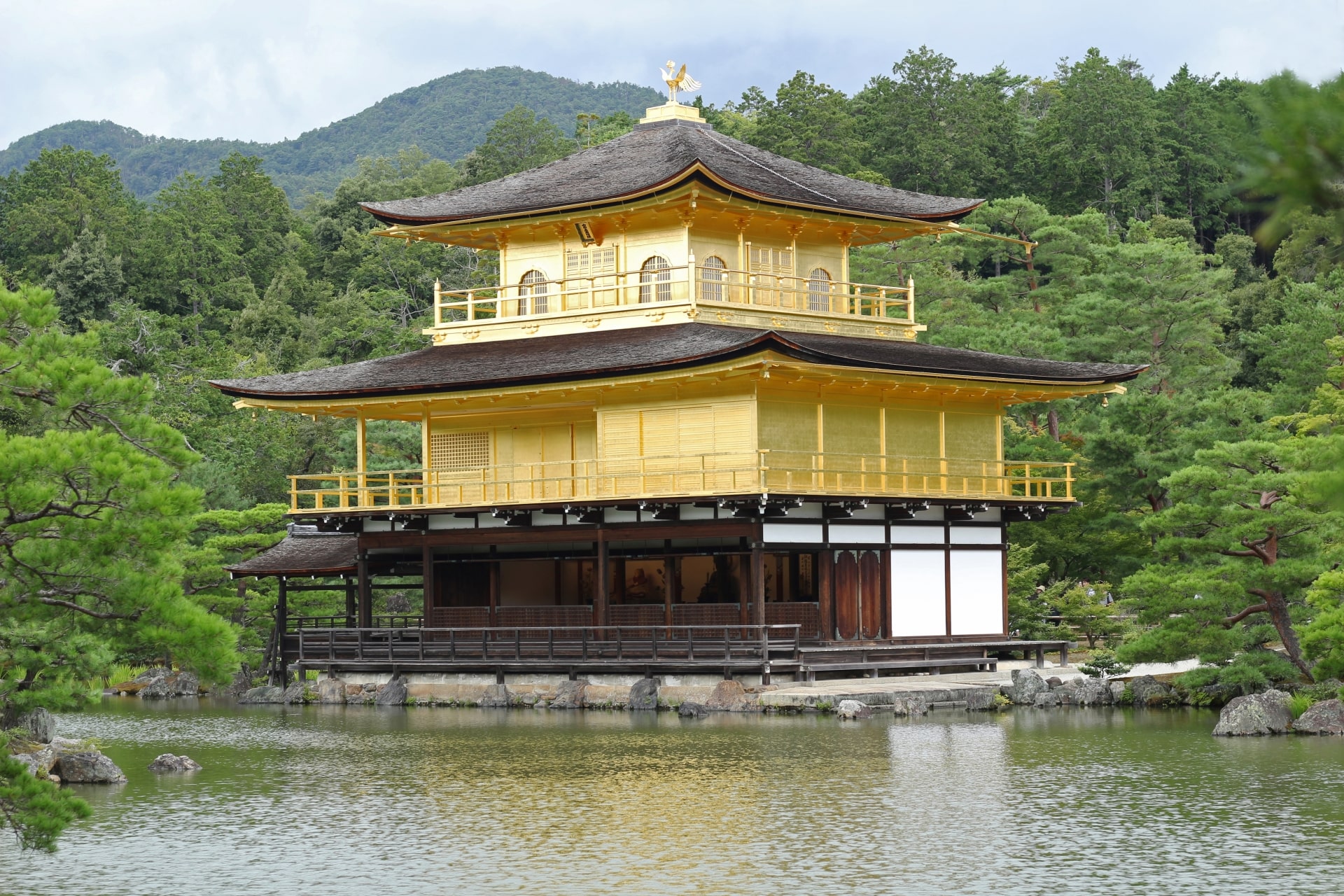
And lastly, on our countdown list of the best places to visit in Kyoto is Kinkakuji Temple (金閣寺) . Along with the previously mentioned Fushimi Inari Shrine, this Buddhist Temple is another highly popular tourist spot for foreign visitors. It is located north-west of central Kyoto and it is one of 17 locations of the Historic Monuments of Ancient Kyoto which are designated as World Heritage Sites.
The completely golden exterior is so impressive and you can enjoy the contrast with the surrounding nature that changes colors depending on the season you come to visit.
Check out more about Kinkakuji Temple from the following article!
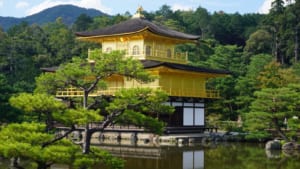
▽Check out the best places to visit in other popular areas in Japan!▽

So, what did you think about this article? I hope it helped give you some new ideas for places to visit when you go to Kyoto. If you enjoyed this article and want to read more about Kyoto, check out our other pieces from the links below.
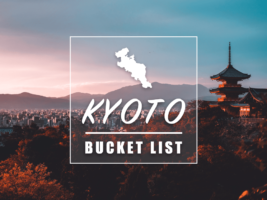
▽Related Articles ▽
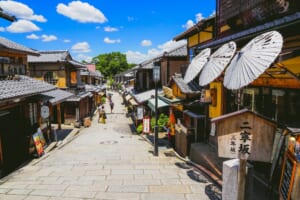
▼Editors’ Picks▼

Born and raised in Costa Rica, I started living in Tokyo from college. I love traveling within Japan & around the world. Since I wasn’t born in Japan, I know the cultural impact that you can get when visiting Japan for the first time and what you might be worried about before your trip. And I’ve lived long enough to somewhat understand the nuances of the Japanese culture that make this country such an attractive place to visit. Hopefully I can provide to you both the information you’re looking for and the information you didn’t know you needed to know.
- Things to Do
.png)
> News > Article
- Feb 18, 2019
Top 5 Tourist Attractions in Kyoto

Kyoto, the former capital of Japan, offers as many worthy sites to visit as Tokyo. Thanks to Kyoto’s remarkable historic value, the city was spared from the target cities for the atomic bomb during World War II.
If you’re looking to dive into the environmental and historical prowess of Japan, there’s no other perfect place like Kyoto.
From natural landscapes to shrines and temples, here’s a list of tourist attractions in Kyoto that you shouldn’t miss. They’re all worth including in your Kyoto itinerary.
1. Arashiyama Bamboo Grove

Also known as Sagano Bamboo Forest or simply Bamboo Forest, this site is one of the most iconic tourist attractions in Kyoto and one of the most attractive natural environments in entire Japan. In fact, it is now one of the most photographed tourist attractions in Kyoto. But beyond its picturesque beauty, there is more to Arashiyama Bamboo Grove . Passing through the towering stalks of bamboo, you will experience the wind making extraordinary soothing sounds as it blows through the thick grove. The meditative natural noise is so exceptional that the government officially made the site a part of the country’s “100 Soundscapes of Japan,” an initiative designed to combat noise pollution and promote the environment.
On your way to the bamboo forest are shops selling souvenirs and local delicacies of Japan. And just a kilometer away right across the Oi River is the Iwatayama Monkey Park where over 170 Japanese macaque monkeys are living. If you’re looking for visual and aural pleasures, you must include Arashiyama Bamboo Grove in your Kyoto itinerary. You can reach the bamboo forest by train from central Kyoto within 30 minutes.
2. Fushimi Inari Taisha

Fushimi Inari Taisha is one of the most popular tourist attractions in Kyoto that it has become the face of the city by some means. It’s a Shinto shrine dedicated to head of the god Inari, seated at the base of a 233-meter high mountain. The site has trails leading up to several smaller shrines within 4 kilometers. For the most part, you’ll pass through arcades of vermillion Shinto shrine torii or gates. This hike can take up to 2 hours of easy hike. And somewhere along the way, you’ll be able to see downtown Kyoto on a mesmerizingly different perspective.
If you want to explore the hills of Kyoto without exerting too much energy, Fushimi Inari Taisha is the perfect tourist place to visit. The hike involves a few flights of steps, so be sure to take note of that. The site, especially the main hall and the lower trails, can get really crowded most of the time. It’s best to visit Fushimi Inari Taisha early on a weekday morning if you’re trying to avoid the influx of tourists. But despite the crowds, Fushimi Inari Taisha remains to be a calm and peaceful place for everyone.
3. Toei Kyoto Studio Park

Toei Kyoto Studio Park is a theme park inspired by a small town from the Edo period (1603-1868). From the streets to the buildings to what’s inside the buildings, this theme park will bring you back to the time of the first military dictatorship in the country. More than a theme park, Toei Kyoto Studio Park is actually a film set of Toei Company , a film and TV production company. Even more interesting, Toei Kyoto Studio Park allows tourists to observe the filming of jidaigeki movies.
Families who are interested in samurai culture or Japanese film history, Toei Kyoto Studio Park should be on your list of must-visit tourist attractions in Kyoto. There you’ll get to don samurai costume and practice the historic sword. You can also try ninja costumes, Power Rangers and so much more in various games.
4. Kyoto Imperial Palace

Kyoto Imperial Palace, which is called Gosho, was the official residence of the ruling emperor of Japan it was transferred to Tokyo. The Kyoto Imperial Palace is a walled site sitting smack dab in the middle of Kyoto Imperial Palace Park. The palace itself has a few opulent classic Japanese style buildings, which are so distinctively East Asian for its low rooflines and wooden construction. If you’re a true-blue Japanese history fan, the Kyoto Imperial Palace is defo worthy to be on your Kyoto itinerary.
The Kyoto Imperial Palace is one of the four imperial properties in the city. However, the buildings look fairly new; this is because the site went through a couple of reconstruction over time. If you want the complete imperial history experience, we highly recommend visiting Katsura Rikyu, Sento Gosho, and Shugaku-in Rikyu as well.
5. Yasaka Shrine

Yasaka Shrine is not only one of the most popular tourist attractions in Kyoto, but also one of the most visited shrines in the whole of Japan. It’s located between the districts of Gion and Higashiyama. Also known as Gion Shrine, Yasaka Shrine has stood the test of time as it has been around for over 1,350 years. Food stalls and souvenir shops abound along the way to the shrine. The site can get really crowded most of the time, although it’s spacious to accommodate hundreds of tourists at once. During sakura season , it’s a totally different experience to visit Yasaka Shrine at night. The site becomes even more heavenly.
Right in front of the inner sanctuary-cum-hall is a dance stage mounted with hundreds of lanterns, if lit, makes the building at night out of this world. Each lantern represents a local business donor. The Gion Matsuri is a widely popular summer festival in Yasaka Shrine that’s celebrated every July. As one of the most popular and oldest festivals in Japan, Gion Matsuri is in part one of the main reasons why people flock to the site. Gion Matsuri has been around for more than a millennium, fondly observed with a parade of gigantic floats and thousands of participants marching with them.
Free Walking Tours in Kyoto
Kyoto Localized offers free walking tours in Kyoto. If you happen to be visiting the city soon, you can take advantage of our free walking tours in Kyoto for a smooth, glitch-free travel experience. We’ll take you through the top tourist attractions in Kyoto, including Yasaka Shrine, Gion District, and a lot more.
Ready to get localized? Book your spot now on our free walking tours in Kyoto !
Kyoto is the heart of Japan and has rich history and culture. Our walking tours will show you why. On our Walking Tours you will learn about the Old and New Kyoto, tradition, religion, history, food, and culture. Free Walking Tours in Kyoto | Kyoto Walking Tours. Book your free walking tour of Kyoto today.
- Walking Tours
- Things to do in Kyoto
Recent Posts
11 Best Things to Do in Kita, Kyoto
What to See in Fushimi: 10 Must-Visit Tourist Attractions in Fushimi, Kyoto
7 Things to Do in Higashiyama, Kyoto

12 Amazing Free Things To Do In Kyoto
By: Author Lora
Posted on Last updated: May 19, 2024
Kyoto, a city steeped in history and culture, beckons visitors with its timeless beauty and myriad of attractions.
If you’re looking for free things to do in Kyoto, we’ve got you covered.
There are many free activities to enjoy in Kyoto, such as visiting the beautiful temples and shrines, exploring the traditional neighborhoods, and strolling through the historic streets.
Here, we share some of the best free activities to do in Kyoto.
This post contains affiliate links. If you click one of them, we may receive a small commission (for which we are deeply grateful) at no extra cost to you.
Table of Contents
Japan Essentials
We almost always find the best flights to Tokyo and Osaka on Momondo . It may be worthwhile to compare these with Skyscanner and a new but promising flight aggregator, WayAway .
Don’t lose time upon arrival at the airport and order your Japan travel SIM or portable WiFi device in advance so that it’s ready and waiting for you at the airport when you arrive.
Find out which JR Pass will save you the most for your trip to Japan.
Check out our ultimate Japan travel blog where you can find many more interesting Japan articles to prepare for your trip.
Need help with your Japan trip planning? Check out this post on how to plan your trip to Japan.

Explore Arashiyama
Arashiyama, a district on the outskirts of Kyoto, stands as one of the city’s most beloved neighborhoods, and it’s easy to see why.
Offering a plethora of stunning sights, from the famed bamboo forests to serene temples, Arashiyama captures the essence of Kyoto’s charm.

Togetsukyo Bridge
Expect crowds in this popular destination, especially at the iconic Togetsukyo Bridge.
Spanning the Katsura River, this landmark is recognized by all and provides a picturesque setting amidst wooded hills, particularly enchanting during autumn.

Monkey Park Iwatayama
Monkey Park Iwatayama, nestled on the southern bank of the Katsura River, shelters around 130 snow monkeys, akin to those seen bathing in Yudanaka’s hot springs.
Accessed through Torii gates at the park’s base, a strenuous uphill climb awaits, rewarded with not only playful monkeys but also breathtaking views of Kyoto.

Arashiyama Bamboo Grove
The Arashiyama Bamboo Grove, the district’s second most popular attraction, draws crowds with its ethereal beauty, though a less-visited grove nearby offers equal allure.
For quieter moments, head to Kameyama-Koen hilltop park, where cherry blossoms bloom and macaques occasionally roam.
- How To Escape The Crowds in Kyoto
- Best Hidden Gems in Kyoto

Saga Toriimoto Street
Saga Toriimoto Street, adorned with traditional Meiji period houses turned shops and restaurants, provides a charming stroll.
Here, you can explore at your own pace, soaking in the historic ambiance before descending back to the train station, completing your Arashiyama adventure.
How To Get There
From Kyoto Station: JR Pass holders will find the JR Sagano Line (JR San-in Line) to Saga-Arashiyama station their best bet, with the entire route covered by the pass.
However, alternative routes are available via private rail companies like Keifuku Railways and Hankyu Railways.
Keifuku trains depart from Omiya Station, around 30 minutes north of Kyoto Station, or Kitanohakubaicho Station, further north.
On the other hand, Hankyu trains for Arashiyama depart from Katsura station, located west of Kyoto station.
For those in central Kyoto, taking a Hankyu train along the Hankyu Kyoto line and changing trains at Katsura station is a convenient option.
The BEST Kyoto 2-day itinerary for first-timers (2024 edition)

Relax At Maruyama Park, Kyoto’s Most Popular For Cherry Blossoms
During spring, Maruyama Park transforms into a breathtaking sea of pink and white cherry blossoms, drawing locals and tourists to picnic beneath the fleeting beauty of the Sakura season.
Yet, Maruyama Park’s allure extends beyond spring. In summer, lush greenery provides shade and tranquility, inviting visitors to relax amidst nature’s bounty.
Autumn brings a stunning display of fiery foliage, painting the park in hues of red, orange, and gold, while winter offers a serene atmosphere, perfect for quiet contemplation amidst the park’s bare trees.
To reach Maruyama Park from Kyoto Station, hop on bus number 206 for a scenic 20-minute ride.
Alight at the Gion bus stop, and you’ll find the park nestled just behind Yasaka Shrine.
Alternatively, you can enjoy a leisurely 20+ minute stroll from Kiyomizudera through the charming narrow lanes of the Higashiyama District, leading you straight to the park’s tranquil surroundings.

Wander Through Fushimi Inari Shrine’s Thousand Torii Gates
Fushimi Inari Shrine is famous for its iconic vermilion torii gates that form tunnels along the mountainside.
Despite its touristy reputation, there are ways to find solace away from the masses.
Many visitors confine themselves to the lower tier of torii gates, resulting in a gradual thinning of crowds as you venture farther from the shrine.
While the full hike to the summit spans 2-3 hours, you needn’t trek so far.
Following a 30-minute hike, we found ourselves nearly alone. The path offers picturesque views, ideal for capturing memorable photographs.
Consider joining a guided walking tour to gain insight into the temple’s history and uncover hidden gems off the beaten path.
How To Get There
Fushimi Inari Shrine sits just outside JR Inari Station, merely the second stop on the JR Nara line departing from Kyoto Station.
It’s a quick journey, taking only 5 minutes and costing 140 yen one way from Kyoto Station, though rapid trains do not service this route.
Alternatively, a brief stroll from Fushimi Inari Station along the Keihan Main Line also leads to the shrine.

Explore the Enigmatic Gion District
Explore the enchanting Gion district, renowned for its traditional wooden machiya houses, teahouses, and iconic geisha culture.
Meander through the atmospheric streets, catching glimpses of geisha and maiko gracefully making their way to engagements.
Be sure to stroll along Hanamikoji Street, adorned with impeccably preserved machiya, offering a captivating glimpse into Kyoto’s rich history.
Amidst these historic streets, you’ll find various free highlights to enjoy.
Don’t miss Yasaka Shrine, a serene oasis nestled amidst the bustling district, offering a tranquil escape and beautiful photo opportunities.
Take a stroll along Shirakawa Canal, lined with weeping willows and quaint teahouses, providing a picturesque backdrop for a relaxing afternoon.
As you explore Gion’s winding alleys, keep an eye out for hidden gems like Kenninji Temple , the oldest Zen temple in Kyoto, which offers free admission to its serene gardens and historic buildings.
With its captivating beauty and rich history, Gion invites visitors to experience the essence of traditional Kyoto, offering a wealth of free attractions to discover amidst its charming streets.
While exploring Gion’s charm, keep in mind that some streets are now inaccessible to tourists, as they are private roads belonging to residents.
These closures are aimed at preserving the privacy of the local community.
Take bus number 206.
Disembark at the Gion bus stop to immerse yourself in the district’s charm. It takes about 20 minutes to reach Gion.
Alternatively, you can access Gion via the Gion-Shijo Station on the Keihan Line or the Kyoto-Kawaramachi Station on the Hankyu Line, both offering easy access to this historic neighborhood.
25 Amazing Things to Do in Kyoto at Night

Indulge In Culinary Delights At Nishiki Market
Experience the vibrant energy of Nishiki Market, often referred to as “Kyoto’s Kitchen,” without spending a dime.
Wander through the bustling market’s narrow alleys, brimming with stalls showcasing an array of fresh produce, seafood, and traditional Kyoto delicacies.
Indulge in complimentary tastings offered by friendly vendors, sampling local specialties like tsukemono (pickled vegetables), fresh seafood skewers, and yuba (tofu skin).
Take in the sights, sounds, and aromas of this culinary haven as you explore the market’s diverse offerings.
After satisfying your taste buds, continue your exploration of Nishiki Market by perusing the surrounding shops and eateries.
Discover hidden gems and unique finds, from artisanal crafts to specialty goods, without spending a yen.
Whether you’re seeking culinary delights or cultural treasures, Nishiki Market offers a wealth of free activities to enjoy and explore.
If you’re looking for more street food to try when you visit Japan, click here .
From Kyoto Station, hop on the Karasuma subway line heading to Shijo Station. Upon arrival, enter Nishiki Market from the west side via Takakura Street.

Relax Along The Scenic Banks Of The Kamo River
Take a leisurely stroll along the banks of the Kamo River , a serene escape from the city’s hustle and bustle.
Observe locals and visitors alike partaking in various leisure activities, from leisurely picnics spread out on the grassy riverbanks to invigorating jogs along the designated running paths.
Take a moment to unwind and simply relax by the water’s edge, allowing the gentle lapping of the river to soothe your senses.
Along the river’s winding path, marvel at the breathtaking vistas of the cityscape and the majestic mountains that frame the horizon.
Capture stunning views of Kyoto’s iconic landmarks, such as the historic Gion district and the towering spires of ancient temples nestled amidst verdant foliage.
As you continue your journey, discover charming bridges spanning the river, each offering its unique perspective of Kyoto’s beauty.
Stroll from Kyoto station towards the city center. From there, follow the signs or ask locals for directions to the nearest access point along the riverbank.
Alternatively, you can take public transportation, such as a bus or subway, to one of the many stations located near the Kamo River, including Shijo Station or Sanjo Station.
Check prices and availability: Kyoto Private Tour

Immerse Yourself In Nature At Nanzen-Ji Park
Experience the serene allure of Nanzen-Ji Park, enveloping the iconic Nanzen-ji Temple complex, without spending a single yen.
Delve into the park’s tranquil gardens, meander along wooded trails, and traverse picturesque stone bridges, all offering enchanting views of the temple’s architectural splendor and the surrounding natural scenery.
Take delight in exploring the park’s free attractions, including the lush greenery of its gardens, where you can unwind amidst serene ponds and meticulously landscaped grounds.
Wander along wooded trails, immersing yourself in the peaceful ambiance of the forest and discovering hidden pockets of tranquility along the way.
Marvel at the sight of the historic Nanzen-ji aqueduct, a revered symbol of Kyoto’s cultural heritage, as it gracefully spans the landscape, connecting the temple complex to the surrounding area. 4
Snap photos of this architectural marvel and contemplate its significance in shaping Kyoto’s rich history and identity.
From Kyoto Station transfer to bus number 5, which will bring you directly to the park’s vicinity.
Alternatively, if you prefer walking, it’s approximately a 25-minute stroll from Kyoto Station to Nanzen-Ji Park.

Contemplate Life’s Mysteries Along The Philosopher’s Path
Take a leisurely journey along the Philosopher’s Path , an idyllic canal-side walkway that offers a serene escape from the hustle and bustle of the city.
This picturesque trail, stretching approximately two kilometers, is adorned with hundreds of cherry trees, creating a breathtaking canopy of pink blossoms during the springtime sakura season and a vibrant display of foliage in the autumn months.
Named after the renowned philosopher Nishida Kitaro, who found inspiration in its tranquil beauty during his daily contemplative walks, the Philosopher’s Path is steeped in history and cultural significance.
One of the highlights of the Philosopher’s Path is its abundance of free activities for visitors to enjoy.
During the cherry blossom season, take advantage of the opportunity to marvel at nature’s beauty as you stroll beneath the delicate pink blooms, capturing stunning photographs along the way.
In autumn, witness the breathtaking transformation of the foliage as it bursts into a riot of red, orange, and gold hues, creating a mesmerizing tapestry of colors.
To access the Philosopher’s Path, you can start your journey from Ginkaku-ji Temple in the northern part of Kyoto.
From Kyoto Station, you can take bus number 5, 17, or 100 to the Ginkaku-ji-michi bus stop.
Alternatively, you can take a leisurely walk from the nearby Nanzen-ji Temple or Eikan-do Temple to reach the starting point of the path.
Once at Ginkaku-ji Temple, follow the signs or ask locals for directions to the Philosopher’s Path, and embark on your contemplative stroll along this picturesque canal-side walkway.

Reflect At Kyoto Imperial Palace
Kyoto Imperial Palace , once the residence of Japan’s imperial family, offers a serene retreat from the bustling city.
Wander through the palace’s expansive grounds, dotted with lush gardens, tranquil ponds, and historic buildings.
Begin your journey by stepping through the palace gates and into a world of timeless elegance.
As you wander through the expansive grounds, you’ll be greeted by lush gardens that burst with vibrant colors throughout the seasons.
Meander along winding paths that lead you past tranquil ponds and graceful water features, where koi fish glide gracefully beneath the surface
Don’t miss the opportunity to delve into the palace’s rich history and cultural significance.
Join a guided tour to learn about the lives of Japan’s imperial family and the role they played in shaping the nation’s history.
Gain insight into the palace’s role as a center of power and governance, and discover the traditions and customs that have been passed down through generations.
How To Get There
Hop on the Karasuma subway line at Kyoto Station and travel to either Marutamachi Station or Imadegawa Station.
Keep in mind that Imadegawa Station is the closer option to the entrance gate of the Imperial Palace compared to Marutamachi Station.
Conclusion
From serene gardens to historic temples, Kyoto’s free attractions offer a glimpse into Japan’s rich cultural heritage.
Whether you’re seeking tranquility or adventure, Kyoto’s timeless beauty is sure to captivate your heart and leave you longing for more.
So pack your bags, embark on a journey to Kyoto, and immerse yourself in the magic of this enchanting city.
Wondering where to stay in Kyoto? Check out our accommodation guides:
- Where To Stay in Kyoto
- Best Ryokan in Kyoto
- Best Ryokan With Private Onsen in Kyoto
- Coolest Hotels in Kyoto
- Best Airbnb in Kyoto
- Marriott Lake Biwa: An Amazing Hotel Near Lake Biwa

7 Best things to do in Japan in 2024
A s a travel enthusiast starts planning a 2024 travel itinerary, Japan, the Land of the Rising Sun, ticks all the boxes. It is the ultimate travel destination thanks to its historic streets of Kyoto, savoring delicious street food in Osaka, exploring the religious shrines, or staying at the ryokans . From the age-old cherry fields to the peaceful country roads, this place is a feast for the senses.
Springtime being this place's truly magical venture, Japan comes alive with color and energy, and visitors are feasted on a lot of enjoyable destinations to explore. Its rich tapestry of history, culture, and natural beauty offers an array of adventures for every travel enthusiast.
Disclaimer: This is purely the writer's opinion, and might have missed some favorite destinations.
The top activities to experience in Japan in 2024
Whether the avid traveler is a history buff, a food enthusiast, or a nature lover, Japan is the perfect place for their visit in 2024.
Ahead, Team Sportskeeda has thoughtfully created a list of the seven best things to do in Japan in 2024 and make the most of their visit.
- Explore Kinkaku-ji at Kyoto
- Enjoy Hanami in Tokyo
- Feed the deer at Nara
- Learn about the city's history at Hiroshima
- River cruise at Osaka
- Ski at Hokkaido
- Sun-bask on the shorelines of Okinawa
1) Explore Kinkaku-ji at Kyoto
Kyoto, the cultural heart of Japan , is a must-visit spring destination for avid travelers. Considering that the best time to travel is in late March to early April, this holiday and sightseeing place is well-known for its cherry blossoms in full bloom.
Sight-seers should not miss the spectacular Kinkaku-ji (Golden Pavilion) and the traditional Gion District. For lodging, one should consider staying at a classic ryokan to experience the hospitality at its best. Kansai International Airport, the nearest airport, can be easily commuted to thanks to local transportation.
Once in Kyoto, one should also make sure to try out the local cuisines, like kaiseki (a multicourse feast) and various matcha confectionaries. Noted diners like Nishiki Market and Pontocho Alley also rule the culinary delight list.
2) Enjoy Hanami in Tokyo
Be it the onset of autumn or spring, the metropolis of Tokyo, Japan, is always bustling with a unique blend of modernity and ritual. Including Senso-ji Temple and Meiji Shrine, this metropolis' main attractions are decorated with cherry blossoms, catering to a panoramic view.
Once in Tokyo, tourists can enjoy activities like hanami (flower viewing) picnics in Ueno Park and boat or yacht cruises along the Sumida River. For an unforgettable stay, visitors can select a hotel in the vibrant Shibuya or Shinjuku districts and indulge in a wide variety of delectable local cuisines, like sushi tempura and ramen at Tsukiji Outer Market, and the food stalls at Ameyoko Market.
Read more: 6 Best European countries to visit in Summer 2024
3) Feed the deer at Nara
Nara, well-known for its friendly deer and ancient religious shrines, it is always the perfect time for any travel enthusiast to visit this charming destination.
Visitors can engage in activities like feeding deer and exploring the picturesque Isuien Garden at Nara Park and Todai-ji Temple, the main attractions they shouldn't miss. Once here, a holiday enthusiast can stay at cozy homestays or ryokans for an authentic lodging experience. There are also sample local delicacies, like Kakinoha sushi and persimmon leaf sushi, at the best diners in the Nara-machi district.
4) Learn about the city's history at Hiroshima
Hiroshima, a Japan metropolis with a resilient spirit and a profound history, is best visited in early April. From the local Hiroshima Airport, courtesy of its travel-friendly communication, the Hiroshima Peace Memorial Park and Shukkeien Garden are the main places of interest that offer serene beauty. Here, tourists can engage in activities like visiting the Itsukushima Shrine on Miyajima Island and the Hiroshima Peace Memorial Museum to learn about the city's history.
One can also plan their stay at comfortable hotels and savor local cuisines like okonomiyaki and oysters from the best diners like Okonomimura and Mitaki-en.
5) River cruise at Osaka
Considered one of the most vibrant cities, Osaka is famed for its lively environment and mouthwatering delicacies. The best time to visit is late March or early April. Once landing at the Kansai International Airport, a vacationer can enjoy their holiday by visiting the main attractions, like Osaka Castle and Dotonbori.
Thanks to its panoramic view, travelers can enjoy local activities like exploring the bustling Kuromon Ichiba Market and river cruising along the Okawa River. Planning a 2 to 3-day trip to Osaka, a vacationer can book their stay at downtown's trendy hotels and indulge in local cuisines like takoyaki , okonomiyaki , and kushikatsu at street food stalls, and best-eating joints like Mizuno and Kani Doraku.
Read more: 6 Best treks in the world
6) Ski at Hokkaido
Hokkaido, the northernmost island, is a must-see spring holiday destination in Japan, courtesy of its spectacular natural attractions. When hiring local transportation or pre-paid cabs from New Chitose Airport, the best time to visit is late April or early May. During this time, tourists can enjoy the main attractions, such as the vast fields of Shikisai-no-Oka and the majestic beauty of Shikisai Hill.
They can engage in activities like exploring Biei's charming beauty, skiing, Onsen (hot springs), enjoying a relaxing soak in the famous Noboribetsu hot springs, or staying at comfortable ryokans or motels with stunning mountain views. They can also savor these gastronomical delights in local delicacies like fresh seafood , spicy ramen, and tasty dairy products at the best diners like Ramen Yokocho and Nijo Market.
7) Sun-bask on the shorelines of Okinawa
Off-boarding at the Naha airport, Okinawa's gorgeous shorelines and rich history welcome avid travelers, making it an excellent destination year-round for all travel enthusiasts visiting Japan. Once here, travelers can explore the lively marine life at the Churaumi Aquarium and the Ryukyu culture of historical Shuri Castle.
They can rest and recoup at beachfront resorts like the Ritz-Carlton, Okinawa, or Halekulani, Okinawa, to experience the true essence of Okinawa, Japan. Visitors can also spoil their tastebuds with the local flavors of sample Okinawan soba, agu pork , goya champuru, and rafute pork.
Read more: 6 best Spring destinations in the world to take a family vacation
These are the seven best things to do in Japan in 2024 that promise an array of unforgettable experiences for travel enthusiasts. So, avid travelers can start backpacking to enjoy their adventure-packed holiday.
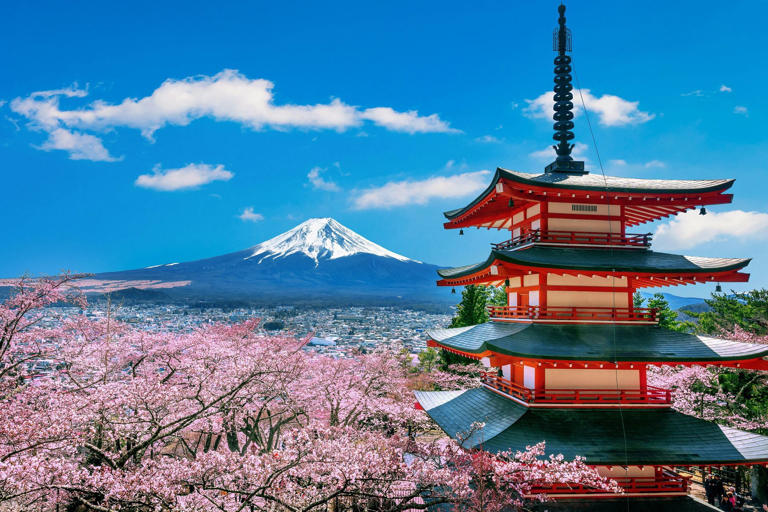

IMAGES
VIDEO
COMMENTS
13. Arashiyama Monkey Park. Arashiyama Monkey Park. Perched atop a mountain in the tourist-heavy Arashiyama is one of the most interesting things to do in Kyoto - the Arashiyama Monkey Park. More than 100 snow monkeys call this park home, roaming freely amid the tourists who come to take a peek.
9. Take a Stroll on the Philosopher's Path. The Philosopher's Path is stone path that follows beside a canal. It is lined with cherry trees and during the spring months, this is one of the most popular places to visit in Kyoto, in order to see the blooms. The Philosopher's Path starts near Ginkaku-ji Temple.
See ways to experience (158) 2023. 2. Kinkakuji Temple. 17,299. Religious Sites. One of Kyoto's most famous attractions, this temple was originally built in 1397 as a residence for shogun Ashikaga Yoshimitsu. The structure was completely covered in gold leaf, earning it the name Golden Pavilion.
Kyoto is on the travel list of most first-time visitors to Japan for good reason. With its fleet of over 2000 temples, lush gardens and traditional tea houses, Kyoto is one of Japan's major historical hubs - to say nothing of being easy on the eye (enjoy a sunset on the hill in Kiyomizu-dera to see what we mean). It can be easy to get lost in the tangle of streets - Kyoto is one of those ...
3. Kiyomizu-dera Temple. Spread across the rolling foothills of Mount Otowa in eastern Kyoto is the ginormous Kiyomizu-Dera Temple. Mostly known for its main hall's massive veranda, the religious site is an absolute must-visit for its captivating architecture, commanding views and cheery cherry trees.
Top things to do in Kyoto tourist attractions, sightseeing and experiences: 1. Bamboo forest 2. Fushimi Inari Gates 3. Gion District 4. Kiyomizu Temple 5. Samurai & Ninja Museum 6. Kyoto Onsen 7. Nishiki Market 8. Kimono Tea Ceremony Maikoya 9. Nishiki Market 10. Imperial Palace
Kyle McCarthy|Sharael Kolberg December 4, 2023. Ranking of the top 15 things to do in Kyoto. Travelers favorites include #1 Fushimi Inari Shrine, #2 Kiyomizu-dera Temple and more.
See ways to experience (158) 2023. 2. Kinkakuji Temple. 17,299. Religious Sites. One of Kyoto's most famous attractions, this temple was originally built in 1397 as a residence for shogun Ashikaga Yoshimitsu. The structure was completely covered in gold leaf, earning it the name Golden Pavilion.
Arashiyama & Sagano. The dominant landmark in Arashiyama, this bridge is just a few minutes on foot from either the Keifuku line or Hankyū line Arashiyama stations. The…. 1. 2. 3. Discover the best attractions in Kyoto including Nishiki Market, Arashiyama Bamboo Grove, and Enryaku-ji.
2023. 2. Kinkakuji Temple. 17,299. Religious Sites. One of Kyoto's most famous attractions, this temple was originally built in 1397 as a residence for shogun Ashikaga Yoshimitsu. The structure was completely covered in gold leaf, earning it the name Golden Pavilion.
2. Ryoan ji Temple. Of all of the temples and shrines in Kyoto, Ryoan ji Temple is another popular Kyoto must-see site for tourists because of its spectacular rock garden. The Myoshinji School of the Rinzai sect of Zen Buddhism owns the garden, and the head temple is located one kilometre south of the garden.
Kyoto, the old capital of Japan for over 1,000 years, still retains much of its traditional heritage. Explore Kyoto's top sites and hidden gems, from tranquil zen gardens and enchanting geisha dances to bustling markets and serene shrines. In addition to its many historical attractions, Kyoto is also a great place to enjoy the outdoors.
If you're looking for the very best things to do in Kyoto, here are our top 5 recommendations: Fushimi Inari Shrine. Philosopher's Path. Nijo Castle. Higashiyama Historic District. Arashiyama Bamboo Forest. Keep reading for more detailed information on each of these things and more ideas of fun things to do in Kyoto.
Nijo Castle. Robert Schrader. Like Kyoto Imperial Palace, Nijo Castle is the most unsung of Kyoto's top ten attractions, since it's not as selfie-worthy as Fushimi Inari Shrine or Arashiyma, nor as scenic as the Philosopher's Walk or Kiyomizu-dera. Yet Nijo Castle is as picturesque as it is historically important—it was built in the early ...
Located in the Kansai area of Western Japan, Kyoto is one of Japan's most famous tourist destinations. As the old capital, Kyoto has a wealth of shrines, temples, historical areas, and gardens to see. At the same time, Kyoto is a modern city with plenty of shopping, gourmet dining, and entertainment options as well.
The Golden Temple (Kinkaku-ji) is one of the most beautiful examples of Buddhist architecture in Kyoto. Kinkaku-ji, or the Golden Temple, is one of the most popular Kyoto attractions. This Zen-Buddhist temple was built in 1397 as a retirement villa for the shogun Ashikaga Yoshimitsu.
With a central pond and the Arashiyama mountains forming an equisite backdrop, the view is perfect for a stint of contemplation, and exploring the grounds is a relaxing journey into nature. Tenryuji Temple. Address: 68 Susukinobaba-cho, Saga-Tenryuji, Ukyo-ku, Kyoto-shi, 616-8385 Japan. Hours: 8:30 am to 5 pm daily.
See ways to experience (39) 2023. 5. Arashiyama. 6,742. Neighbourhoods. Arashiyama is a small town on the Oi River. Its moon-crossing bridge, Togetsu-kyo, is a beautiful, much-beloved wooden structure. Arishiyama also has Tenryu-ji temple, one of the 14 World Heritage Sites in Kyoto.
1. Fushimi Inari Shrine (Fushimi Inari Taisha) Location: 68 Fukakusa Yabunouchicho, Fushimi Ward, Southern Kyoto. Save on Google Maps. Dedicated to Inari, the Shinto god of rice and success in business, the Fushimi Inari Shrine is one of the most famous sights in Japan.
Other famous tourist attractions are also accessible by bus or subway. Kyoto Imperial Palace (also known as Kyoto Gosho), one of the most popular historical spots in Kyoto, can be reached by a 10-minute comfortable ride on the subway from Kyoto Station. Kyoto Imperial Palace is the former residence of the imperial family for over 1,000 years.
When it comes to tourism, Kyoto is always among the most visited cities, not only in Japan but also in the entire world. Historic locations that are beautifully preserved and are photogenic such as the Fushimi Inari Shrine, Kiyomizudera Temple, and Kinkakuji Temple are always among the top spots in "favorite tourist spot" rankings.
Kyoto Localized offers free walking tours in Kyoto. If you happen to be visiting the city soon, you can take advantage of our free walking tours in Kyoto for a smooth, glitch-free travel experience. We'll take you through the top tourist attractions in Kyoto, including Yasaka Shrine, Gion District, and a lot more.
Marvel at the sight of the historic Nanzen-ji aqueduct, a revered symbol of Kyoto's cultural heritage, as it gracefully spans the landscape, connecting the temple complex to the surrounding area. 4. Snap photos of this architectural marvel and contemplate its significance in shaping Kyoto's rich history and identity.
Whether the avid traveler is a history buff, a food enthusiast, or a nature lover, Japan is the perfect place for their visit in 2024. Explore Kinkaku-ji at Kyoto. Enjoy Hanami in Tokyo. Feed the ...